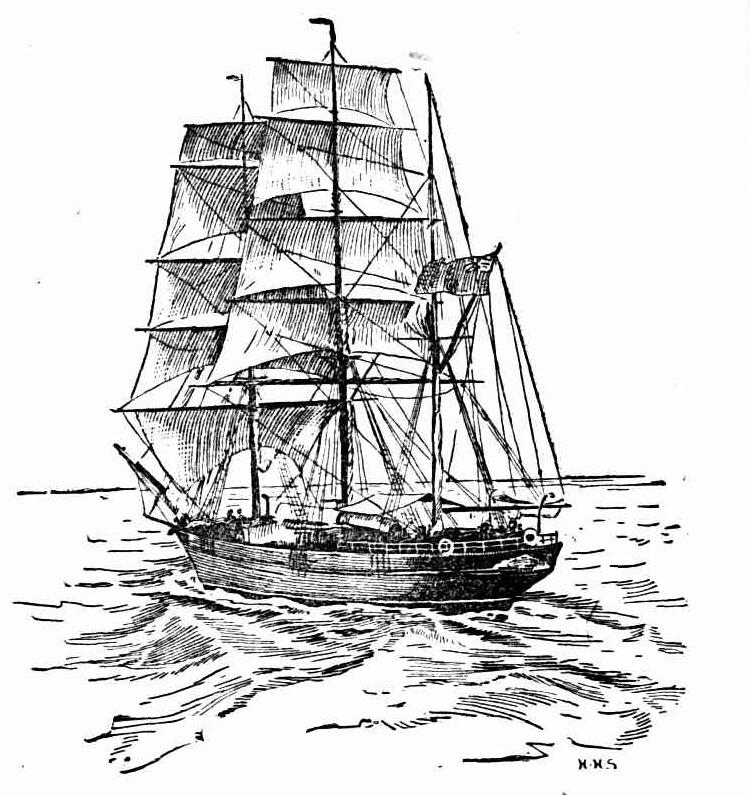George Lewis Becke
BECKE GERALD V 2939/1891 LOUIS G ELIZABETH M SYDNEY
BECKE LOUIS G M 11938/1886 GEORGE L BESSIE M WATERLOO
BECKE.—October 10, at Botany, Luis Eugene Mordaunt, infant son of Louis and Bessie Becke, aged 4 months. Family Notices (
1886, October 15).
The Sydney Morning Herald (NSW : 1842 - 1954), p. 1. Retrieved from
http://nla.gov.au/nla.news-article13617405
Nora was born at Townsville - 1888: QLD Birth Records:
Year Reg# First name(s) Last name Father Mother
1888 C11315 Norah Eugenie Mary Becke Louis George Bessie Mary Mannsell
BECKE.—February 9, at Snails Bay, Balmain, Gerald Vincent, son of Louis and Bessie M. Becke, aged 2½. Family Notices (
1894, February 10).
The Sydney Morning Herald (NSW : 1842 - 1954), p. 1. Retrieved from
http://nla.gov.au/nla.news-article13940172
Becke returned to New South Wales late in 1885 and on 10 February 1886 married Mary Elizabeth (Bessie) Maunsell, the daughter of Colonel Maunsell, of Port Macquarie.
On 9 November 1888 his daughter, Nora Lois, was born.
On 9 June 1896 he left Sydney for London with Nora Lois and Miss Fanny Sabrina Long.
Becke and Fanny Long had 2 daughters, Alrema (born 30 October 1897) and Niya (born 27 September 1898).
IN BANKRUPTCY.
Re Louis Becke, of 90, William-street, Sydney, journalist.
NOTICE is hereby given that a Sequestration Order has this day been made against the above named bankrupt, on his own petition.—Dated at Sydney, this 27th day of April, A.D. 1894.
ARTHUR HENRY
Mrs. Marcus Clarke.
A meeting in connection with the movement to assist Mrs. Marcus Clarke was held at 'Cosmos' office, on Friday afternoon. There was a good attendance. After discussion, on the motion of Miss Ethel Turner, seconded by Miss Louise Mack, it was decided that a magazine be published for the occasion and that after paying expenses the proceeds be handed over to Mrs. Clarke. The literary matter will be given for nothing, and will induce contributions from Louis Becke, Rolf Boldrewood, Ernest Favenc, ' Banjo ' (Mr. A. B. Paterson), Miss Ethel Turner, Miss Louise Mack, Alex. Montgomery, Ada Cambridge, Henry Lawson, and others. Mr. Nicoll was deputed to arrange for the publishing of the magazine, and Miss Turner and Miss Mack will attend to the literary matter. Several offers from publishing firms have already been made for the venture, which it is expected will be thoroughly successful. Mrs. Marcus Clarke. (
1895, December 14).
Evening News (Sydney, NSW : 1869 - 1931), p. 5. Retrieved from
http://nla.gov.au/nla.news-article108083223
Louis Becke papers, 1881-1912 (held at State Library of N.S.W)
14 Jan. 1883 - Oct. 1912; Correspondence. Comprises letters received by Becke, copies of letters sent, and copies of personal documents. Contents include: personal letters from his mother Caroline, 1883, his brother Vernon, 1808-1809, and his daughter Nora, 1912; correspondence with publishers Thomas Werner Laurie and Henry Brett, and with representatives of Chamber's Journal, Port Macquarie News, Whitcombe and Tombs and others, concerning the publication of his work; two letters from Irish travel writer W.A. FitzGerald, 1909; copy of Becke's birth certificate and copy of certificate of his marriage to Nelea Tikena at Nukufetau in the Ellice Islands (now Tuvalu) in 1881**; letter from Nora Becke to her cousin Florrie Becke, Sept. 1895 (Call No.: Safe 1/8, Item 1: Issue CY 4684)
1905-1908; Legal documents, comprising copyright royalty agreements, 1905-1908, and power of attorney, 1908 (Call No.: Safe 1/8, Item 2: Issue CY 4684)
1908-1912; Miscellaneous papers comprising mainly accounts, 1911-1912, newscuttings, 1910, 1912, and bankbook, 1908-1909 (Call No.: Safe 1/8, Item 3: Issue CY 4684)
June 1896; Photographic portrait of Fanny Sabina Long taken at The Crown Studios, Sydney (2 copies) (Call No.: Safe 1/8, Item 4: Issue CY 4684)
GEORGE P. WINCHCOMBE
7 May 1881 - 2 Dec. 1887; Notebook. The notebook includes extracts from Winchcombe's diary, 7 May 1881 - 2 Dec. 1887, which records events on Nukufetau in the Ellice Islands including Becke's arrival on the island and his marriage. Cover title: '1884, Nukufetau, Registry of Vessels, Genl. Memos & Some Petty Accounts'. The book includes accounts of goods traded and records Winchcombe's views on the island's customs and laws. There are some remarks about the nearby atoll of Nunumea. (Call No.: Safe 1/8, Item 5: Issue CY 491B, frames 251-297)
** Documents in F S Becke - Commonwealth Literary Fund - Nov 1919 - Jan 1925. File: NAA: A463, 1959/6386 state his first marriage took place in 1873 - when he was only 18, if correct - if 1881, he was 25 or 26.
Louis Becke at Home.
BY BERNARD ESPINASSE.
BEHOLD Mr. Louis Becke-the Homer of many a Polynesian Odyssey yet to be written-chafing in the thrall of civilization ! Picture the man who has known the wild, free life of the islands as no man living, and few dead, have ever known it, glorying in its unrestraints, and sharing with Nature some portion of her own big heart; picture him bound hand and foot as it were, by the conventionalities of garb and custom, amongst other things, and you get a glimpse of Louis Becke at home, that is, in his city (Sydney) quarters, where, assuredly, no man is less at home than he.
Mr. Becke's sitting-room presented a bold appearance of reckless disorder. Several tables and some of the floor space were piled high with stacks of books, magazines, catalogues, and miscellaneous literature of a remarkably varied character. And on the biggest table. stretched at full length, his heels in Africa (" Universal Atlas ") and his head on the blotting pad, lay Becke himself, immersed in a volume of Ambrose Bierer's wonderful tales. (N.B. "In the Midst of Life.") He is a tall spare man, facially tanned by many tropic suns, and of expression rather careworn. The eye is dark and slow, but sometimes in a sudden twist of the head the white around the pupil flashes with uncanny brilliance, and in that moment the mind speculates upon the scenes, strange, tragic, which that quiet eye has viewed. Brown, bristly hair, growing sparsely on the lean cheek, thickens towards the chin, where a few gray streaks are beginning to show themselves. The long limbs and thin, loosely-built figure give one an idea of fibrous strength, kept well in reserve. The most noticeable thing about Becke is a certain undefinable air of self-repression. There is something " pent-up " about him. One feels that he could do and say a lot more than appears on the surface. There is what Stevenson used to call "a certain within-ness " about the man. But perhaps this is pronouncedly due to his surroundings at the time. For Louis Becke in "store clothes," tweed suit and the " abominated collar," isn't Louis Becke at all. Get him, if he will, to don the white ducks and coat buttoning to the neck of the South Seas, with a palm-leaf " roof," and you see the real Simon pure. Becke, by the way, is extensively tattoed.
"This," I observed, glancing round the little room, " is a bit of a change after the islands?"
Becke nodded. " I don't mind that so much," he said, " its the writing I hate!"
" How did you first come to take up the pen ?"
"Well, I was walking down the street one day just two years ago when I met Favenc. We had something together and my South Sea experiences cropped up. Favenc said they would make good 'copy' and asked me why I didn't see Archibald about them. Who is Archibald? I inquired. Ernest talked Bulletin to me for five minutes, and ended by taking me down to the office and introduced me to the editor, by whom I was bidden to 'send something in/ Rut I've never written a story in my life, I said. ' Never mind, write something-anything-and let me see it.' I wrote five yarns, left them, and hardly gave the thing another thought. But they printed the lot and asked for more!"
" And that was the literary start which ended in ' By Reef and Palm. * "
" Yes, and the book turned out very well. By the way, I received this very morning a photo of the late Lord Pembroke, who wrote the preface." And Mr. Becke fished out from among a heap of paper a cabinet photo, and tapped it lightly, with the meditative remark, " He was a good fellow, I'm sorry he's gone."
" How did you ' get at' Fisher Unwin ? They say it's not easy to reach a London publisher from this side of the world." " Oh ! I don't know. "When my book was ready I simply sent the MS. to Fisher Unwin with a note, and they took it up at once. It was almost a new 'field/ you see. Though it had been done before. The best South Sea writer was Herman Melville. I think his books are out of print now. Of course, The Bulletin had a lot to do with it. They seem to think a lot of The Bulletin in London. I think myself Archibald is one of the best editors in the world."
At this point Mr. Becke's little girl - an only child-runs in with a folding Christmas card of wonderful workmanship, which she is all enthusiasm to display for her father's edification. Norah-a winsome little lassie of seven, dark-haired, and dark-eyed, like all Norahs,-is her father's pet. And when he perches her on his knee, and talks "Tonga" to her, the visitor regrets that he cannot sketch the pair.
"I'm sending her home to Lord Pembroke's people before long, who have promised to look after her. And then I'm going to England myself for a few months."
" You said ' home'; was the little one born…
"Born in Queensland. I was there for some years, digging, black-smithing, store-keeping, anything you like "
" And you ? "
Oh!"-with sudden energy-"I was born in the convict settlement, Port Macquarie. I'm a thorough Australian, I am."
"Needless to say you've had some very varied experiences among the South Sea Islands?"
"I knocked about among them for twenty-five years, as trader and as supercargo. Yes, I was with "Bully" Hayes. The missionaries have represented him as a man who always went about with his belt full of pistols, burning houses and carrying off native girls. No doubt he did do a lot of that. But he has been misrepresented a great deal. Hayes was a remarkable man in many ways. No, there has no account of his life ever been published. Why, don't I do it ? Well, perhaps some day I will."
"It has often been remarked, Mr. Becke, that your own personal experiences would make an interesting volume."
"Well, I think a man ought to keep the 'I' out of his work as much as he can. I've had two or three offers from London houses for an autobiography, but I don't know about it yet awhile."
"And as to work ahead-any new book ?"
Mr. Becke opens a drawer and takes there from a most alarming bundle of portentious size, tied round with string. He hands it to me. About a cwt. from, the feel of it. " That's my next book. Notes. All classified and ready. Only want to be written up. Can't say anything about it yet. Don't know what it's going to be myself." He exhumes another bundle and becomes mildly blasphemous. " Proofs!" During an interval of brisk and highly coloured language, Mr. Becke reveals the fly in the amber, which is proof-reading.
" I hate writing. It's the ' having-to-do-it' that is so irksome. But reading proofs ! " A large, silent gap ensues in the conversation.
" Is it the physical or mental effort that troubles you most ?"
" The (reverential expression) pen business. Thinking's easy enough, it's the getting it down! I've got to write 400 words by 5 o'clock this afternoon." (More halo-rimmed remarks).
In the course of a general literary digression, Mr. Becke confesses to a great admiration for Fenimore Cooper's books. Books of adventure interest him most. As to his own work he says:
" I would rather write a book than a short story, in the short story you've got to keep up the interest all the time. It's a continual climax.- Rudyard Kipling is the best short story writer living, I think.”
We drift back into the South Sea current and the Chronicler of so many a tale of passion, frescoed in black and white, goes a-dreaming, and paints word pictures of coral beaches and waving palms amid the long lap of Australasian seas."
" Ever been in danger of my life ? Who hasn't ? the South Seas no one goes out without a revolver their belt. But if a native makes up his mind to kill you, it's small chance you've got. He'll lie in wait till you're asleep and spear you."
But Mr. Becke is strangely disinclined to talk about his own adventures, and no amount of " worming " will effect that desired result. He is more expansive when books are the topic.
" My newest book The Ebbing Tide, will be out here in about 8 weeks. Then comes one that I have done in collaboration with Jeffrey, A First Fleet Family. No, I don't care much for collaboration. But in this case Jeffrey has a lot of documents relating to the very early days, and it couldn't be done otherwise than in collaboration. I'm going to keep off the
South Sea stuff for a time."
Christmas numbers coming up for discussion. Becke, after stating in the most unreserved manner, that he considers his own work this year not worth reading, exclaims !
Ah! I'll tell you a queer thing. I wrote a story for a Queensland paper this year called The Privateer. The principal figure in it was Captain Duck, who sailed under Letters of Marque at the beginning of this century. He and his crew were massacred among the islands. It's a common tale down there, and I wrote it up as I heard it. This Duck left a large sum of money to his account in an English bank, but as no reliable proof of his death could be furnished by any eye witness they refused to pay it to his wife. Now an old lady turns up in Queensland, who after reading my story claims to be a relation of this Duck and writes to me for proof of his death that she may claim the money, which is still waiting after all these years!"
" Truth never beats fiction. And now before I go what do you think of the future of Australian literature ?"
" I think there is a great future before it. Not so long ago no one would look at a book coming from Australia. Now they welcome anything from our people, and there are a number of bright, clever writers here whose work has yet to be heard of."
Mr. Becke, with a spasm of the old unconventionally, takes up a razor and begins to cut a plug," glancing up uneasily at the clock. It is evident that those two columns which have to be ready by five o'clock are weighing upon his mind. I take the hint and my hat.
"Well, good-bye. I'm going away next week. I don't quite know where yet. Somewhere down among the islands for a spell."
The old craving for the tropic breezes and the free skies. City dust and bricks and mortar maketh the heart grow fonder of the reefs and bays " in the green isles far away."
In the doorway I steal a last glance at the man who has won fame in the old world for an Australian book. He is sitting on the table vigorously jabbing the ashes out of his pipe with the point of a pencil. Louis Becke [?]t Home. (
1896, January 3).
Table Talk (
Melbourne, Vic. : 1885 - 1939), p. 14. Retrieved from
http://nla.gov.au/nla.news-article145920772
A highly successful ball was given in the Agricultural Society's Hall, Port Macquarie, on Monday evening, in honor of the visit of a team of cricketers from the Eastern Suburbs of Sydney. The latter were under the captaincy of Mr. Richard Cooke, secretary of the North Const Steam Navigation Company. The ballroom was prettily decorated with palms which grow in abundance on the outskirts of the town. The ladies of the locality spared no effort to promote the pleasure of the visitors, as in addition to doing tin; work of embellishing the hall, they provided an excellent supper in an adjoining building. Mr. Stewart Wright (captain of the local cricket team). Mr. W. A. Spence, and Mr. Hattersley were the leading lights managing the dance, which went off delightfully. The music was mostly provided by two of the visiting party, Mr. Walter H. Cooke (piano), and Mr. Montague Kerr (cornet), but able assistance was given by Mrs. W. A. H. Slade, Miss Josephine Bourne, Mrs. Macdonnell, and other ladies. The dance was opened at 9 o'clock, and wound up about 3 o'clock, the visitors catching the steamer Rosedale a couple of hours later for Sydney. They were delighted beyond measure with the kindness of the Port people during their brief stay in the town, the ball being a brilliant termination to the entertainments arranged for them.
The gathering included Mr. and Mrs. S. Bond (Mayor and Mayoress of Kempsey), and Miss Dangar, Mr. and Mrs. S. Wright, Mr. Louis Becke and Miss Long, Captain and Mrs. Louis Pauisen. of the S.S. Rosedale, Mr. W. A. Spence and the Misses Spence, Mr. A. E. Ponnteney, Mr. and Mrs. W. A. H. Slade. Miss M. Cohen and Miss Russell, Mr. and Mrs. W. H. Macdonnell, Miss J. Bourne. Mrs. Gibett, Miss Gapes, Messrs. T. and H. Walters, Mr. and Mrs. Hewitt, Mr. W. and the Misses Hattersley, as well as the following Sydney visitors: Messrs. Eichard Cooke, W. A. Firth, F. M'Elhone, E. F. Kelly, J. C. Davis, D. Hogan', W. P. M'Elhone, A. C. Mackenzie, Frank Martin, S. Mackenzie, Norman Ebsworth. P. V. O. Macnamara, W. H. Cooke, M. Kerr, C. Johnson, C. Smith, and G. Yorke. A number of dainty gowns worn by ladies added' to 'the brightness of the scene. Miss Dangar (Kempsey) wore a very graceful toilette of pale blue silk, delicately brocaded with gold ; Miss M. Cohen's gown was an elegant buttercup silk, with white satin epaulettes and crepe de chine; Miss Bussell wore a charming dress of opalescent silk with crêpe de chine trimming; Miss Gape's gown was a pretty, white silk; Miss Josephine Bourne wore a buttercup silk, with white lace trimming and an Empire belt; Miss Mabel Spence, 'a pretty white shower of hail, with pink silk sleeves, veiled in white lace, and pink silk Empire belt; Miss Lily Spence's gown was also white shower of hail; with green sleeves ; Miss Hattersley were cream silk; Miss Florence Hattersley, white satin; Mrs. Wright, pale blue silk and lace; Miss Long, an Empire costume; Mrs, Butler, grey silk bodice, trimmed with black lace and velvet; Mrs. Slade, black merveilleux; Mrs. Macdonnell, black merveilleux, jet and black lace trimmings ; Miss Windeyer, a charming gown of pink silk and white Valenciennes lace ; Miss Netterfield, blue satin and cream shower of hail muslin ; and Miss Letts, black silk and cardinal trimming. SOCIAL ITEMS (
1896, April 12).
Sunday Times (Sydney, NSW : 1895 - 1930), p. 8. Retrieved from
http://nla.gov.au/nla.news-article130407252
Mr Becke has but one child, a little girl of eight, who has been his constant companion in all his Island wanderings. She is at present on her way home en route to Belgium, to be placed at school with the children of an old Island comrade of her distinguished dad s.
Becke himself, who has during the past week been in Melbourne, left for London last Tuesday. He goes on a brief business visit in connection with Island trading, and will return to Australia by Canada in about five months. May he have success and a good time is all the harm the FREE LANCE wishes him.YELWARC. Popular Pressmen. (
1896, June 18 Thursday).
Free Lance (Melbourne, Vic. : 1896), p. 3. Retrieved from
http://nla.gov.au/nla.news-article171429463
"BULLY HAYES."
TRUE HISTORY OF THE QUE AT PACIFIC PIRATE.
INTERESTING INTERVIEW WITH LOUIS BECKE.'
Louis Becke, the author of "By Reef and Palm" and other Pacific Island stories, is not an easy capture for an Interviewer. Though he has been living in Sydney for three years, he has steadily refused to be subjected to the customary press ordeal, but recently he left Sydney en route for London, and in Adelaide an enterprising scribe got him in talking humor, and succeeded in unearthing some very interesting facts.
To a representative of the "S. A. Register," Mr. Becke, after explaining that he had refused to be Interviewed In the sister colony, admitted that he had been taken by storm, and so consented to reveal some of those experiences which have been so useful to him In his literary career.
He began thus — "I and my brother went away to California in a vessel from Newcastle. We were sent out by our parents to go and make our fortunes." ' It may be stated that Mr. Becke is a native of New South Wales, having been born at Port Macquarie, an old convict settlement. Lest anyone should read this last sentence with apprehension It is comforting to add the following, which he volunteered In his own quaint way:-— "Neither of my parents was a convict, but that's a mere detail." The subject of this Interview spent two or three months down at Port Macquarie about four months ago. After a laugh at his expense, he went on — "This brother and myself eventually reached California, He went away on a sheep ranch, and after spending my money I got stoney broke. I received a billet as a captain's clerk on a steamer running down to Lower California. Then I got a little money saved up and went away down to the Marshall Islands, That was about 1870. I made two or three voyages there to and fro, and then went In on my own account sharking and trading In tortoise and pearl shell." '
"I believe you met 'Bully' Hayes, the great Pacific pirate, and, may I say, hero of a hundred tales?"
"Yes; and although he was the most passionate-tempered scamp I have ever known, he was a man who would do very kindly actions. All the native races liked him. He had a wonderful influence over them, and a wonderful Influence over white men. If they hadn't any kind of affection for him, at least they were damnably afraid of him. The American missionaries slandered him most vilely."
"He kidnapped the natives, did he not?"
"Yes, and sold them to various German planters In Samoa, but in those days It was no more unlawful than what was being done by those Queensland labor vessels. I was with him for about two years and six months. Leonora was the name of his craft, and all the time he had native laborers on board he fed and cared for them better than for his own crew. In fact. Bully Hayes's first trouble was when he was seized in Napier Harbor, Samoa, In 1873. He was tried on board the Narranganset. The British Consul, who had prepared a great number of charges against him, told Commodore Goodenough that he had got a whole lot of witnesses to swear to all sorts of charges, including piracy and murder, against Hayes, but when this inquiry was heard none of them appeared except two or three, and they completely broke down. So Hayes left this American man-of-war in triumph. He dressed his ship in flags, and all the American, officers, who had nothing against him, went to Captain Hayes's house, and had a most glorious spree. Hayes's crew went down into the German quarter of the town, Chopped down the Imperial German Consul's flagstaff, and broke everything up in general. Hayes left Samoa with Captain Ben Peese, who was a Britisher.
I came to Samoa in 1874, and I was engaged by a mercantile firm on a little ketch. This ketch had been sold by my employers to the King of the island of Arnhu, one of the Marshall Island group. Captain Hayes had agreed with my owners that I should bring her down there and meet him, and that he would hand her over. I sailed in the craft in November, 1874. One of my employers was British Consul in Samoa. We had a very long passage down, and meanwhile Commodore Goodenough had come down looking after Hayes. The first person he applied to was my owner, this British Consul. This British officer said, 'If you could only arrest Hayes and hang him I would be so pleased, he is such a bad fellow. I had a nice little vessel, and I have sent her down in charge of a young man named Louis Becke, but I'm afraid that he has gone down and joined Hayes.'
Meanwhile the news had reached Samoa that I had been lost. "After a very long passage, during which the crew turned nasty, I found Bully Hayes waiting. I said, 'Here's your ketch,' whereupon he cursed and swore at me and my employers, and said he wouldn't take her. I replied, 'If you don't take her, you can leave her, I'm going ashore.' He then volunteered to take her, but added that he couldn't sell her, because she was rotten. After further thought he said he would try and patch her up, and see if he could not make the King of the Island sell her. Hayes said he wanted a supercargo, and Invited me to go, and I assented. We sailed for Milli Island, through the Marshall and Caroline Islands, and Pellew Group, and while beating back we stopped at Strong's or Kusaie Island. Whilst lying at anchor there a strong south-west gale came on, and we dragged and went ashore, the Leonora breaking up in about 20 minutes. There was a good deal of trade saved, and Hayes, who was a very energetic man, immediately started a large travelling station, together with the business of building boats. Not satisfied with the trading business, however, he commenced plundering. He and I quarrelled, and I left him and went down to a place called Coquille Harbor, where I was provided with ground and a house, and very kindly treated by the natives. With Bully Hayes were a number of white traders. These men and Hayes by-and-bye quarrelled. Hayes fought them and licked them, and then followed bloodshed. "For about five months the whole of Strong's Island was In a state of turmoil; In fact, muskets and rifles were cracking away all night, and Hayes enjoyed the fun. Just as Hayes was building a small vessel that might take him away the H.M.S. Rosario arrived with Captain Depuix in command. I and Hayes, who did not in any way try to conceal his identity, went on board, and "Bully' was at once arrested. I was also apprehended on a charge of piracy In connection with the ketch. But, most fortunate for mo, I had kept my power of attorney from my employers. That cleared me, but eventually Hayes was arrested on 97 charges — every count, I believe, except leprosy. However, he escaped. I should say that he was let go. Nobody would give evidence against him.
The American missionaries belonging to the Boston Board of Missions tried everything In their power to get the captain taken away in irons, but lulled. Ills own crew, who had professed willingness 'to give him away,' the moment they saw Hayes's eyes fixed on them quavered with fear, and It was a case of no saves; nothing. Bully escaped in a little boat about lift, long, and eventually reached Guam, a tremendous voyage, made all alone. He then betook himself to Manila, where he turned pious. He became converted, used to walk in procession with a lot of priests
.... expected, he soon after stole a schooner and got away to 'Frisco. Whilst In 'Frisco he met a merchant there who owned a yacht called the Lotus. This merchant was very anxious for a run down among the islands, and, looking around tor a pilot, he thought Captain Hayes was Just the sort of chap tor to undertake the Job, 'for ho was a mariner bold. The merchant brought his wife with him, and when all were on board and they had made preparations for sailing, Hayes discovered that he hadn't brought his chronometers off, and as two or three members of the crew were drunk, he asked the owner if he would go ashore and get the instruments. My faithful obeying, Captain Hayes scooted."
"What, wife and all?"
"Yes, with his wife, too; but she was a bad 'un. After three or four months' cruising about the various islands he quarrelled with his steward when off the island called Jalmit. Bully told the steward peremptorily that he would shoot him, and forthwith went down below to get his pistol to carry out his purpose. But the steward was prepared for him, and stood over the companion-way with the boom crutch in his hand, and as Hayes's bald head emerged he dropped the Infamous weapon on him and fractured his skull. Bully was brought up on deck, and whilst still living he was thrown overboard. This ended the pirate of the Pacific. The schooner went into the German port of Jalmit, and the whole of the German ships and mercantile houses sported limiting to celebrate the event."
This is a very exciting narrative, but it does not tell much of Mr. Becke and how he came to write his tales of the Pacific. Well, so modest is that personage, that it took the scribe all his time to, colloquially speaking, draw the author out.
"When and how did you first start to write stories?" inquired the penciller.
"Well, I came up from the South Sea Islands about three years ago. I was in very bad health, and could get no employment In Sydney.Eventually I got a Job to clear scrub at Manly. I took the contract at £3 per acre, but after I had worked about a week I felt sure that I couldn't clear an acre in less than three years. And it cost my employer about £3 into the bargain for tools. Then I was continually in Sydney seeing if I couldn’t pick up any of my old friends. One day I met the well-known Australian explorer, Ernest Favenc. He said to me, "Come down with me, and I'll Introduce you to some 'Bulletin' friends of mine. He took me down, and I made the acquaintance of Mr. Archibald, the editor, and Mr. M'Leod, the managing director. Archibald asked me if I couldn't write them something. Well, I had never written a story, and so I was really very funky about It. 'Write Just as you are telling me now: they will make, dash good yarns,' said Archibald. And that's just what led to my connection with the 'Bulletin.' I wrote half a dozen stories and then half a dozen more, and those constituted the collection published In time under the title of 'By Reef and Palm.' Well, then I got on the staff. In the meantime these stories had been forwarded home, and I wrote at the same time to an old friend of mine, Lord Pembroke, asking him if he would read them, and also that if he thought them good enough would he pen a preface. Not only did he do this, but right up till the time of his death he assisted me in every possible way. This book went down very well; it is In five editions now. The second collection of tales, 'The Ebbing of the Tide,' has even had a greater sale than 'By Reef and Palm, though I don't care for them so well as the latter myself." "Most of your stories are based on actual facts?" "Yes; the only stories which are founded on fiction are one dealing with an Incident In New Zealand and the other an Australian bush tale. In which a girl Is bitten by a death adder," "Have you any other work In your mind's eye?" s "No; I have knocked off literary work entirely. There is another book, however, that Is finished, which is founded on a famous South Sea incident of many years ago." Mr. Becke is just going home on commercial business, having no literary project in view whatever. He is taking his little daughter, who is in ill-health, home with him, and in all probability will place her in school in Belgium. "BULLY HAYES." (
1896, June 27). T
he Daily Telegraph (Sydney, NSW : 1883 - 1923), p. 4. Retrieved from
http://nla.gov.au/nla.news-article238602428
The Old Style of Trader. '(By ‘Te Matau.') The Old Style of Trader. (
1896, April 11).
Evening News (Sydney, NSW : 1869 - 1931), p. 2 (EVENING NEWS SUPPLEMENT). Retrieved from
http://nla.gov.au/nla.news-article108780730
The Beginning of English Whaling (By Te Matau.) The Beginning of English Whaling.
(1896, June 27).
Australian Town and Country Journal (Sydney, NSW : 1870 - 1907), p. 47. Retrieved from
http://nla.gov.au/nla.news-article71247351
MAGELLAN IN THE PHILPPINES. (By Ernest Favenc) MAGELLAN IN THE PHILIPPINES. (
1898, April 23).
Evening News (Sydney, NSW : 1869 - 1931), p. 1 (EVENING NEWS SUPPLEMENT.). Retrieved from
http://nla.gov.au/nla.news-article109649352
Amongst the passengers who sailed for England by the Parramatta on Wednesday was Mr. Louis Becke, the well-known author of tales descriptive of life in the Pacific seas. Those who have read "The Ebbing of the Tide," "His Native Wife," " A First Fleet Family," and " By Reef and Palm" will regret to learn that Mr. Becke has been resting from his literary labors of late, and does not meditate publishing again for some little time to come.INTERCOLONIAL STEAMSHIP BUSINESS. (
1896, June 20).
The Advertiser (
Adelaide, SA : 1889 - 1931), p. 4. Retrieved from
http://nla.gov.au/nla.news-article34550478
PARRAMATTA, passenger ship, on Port Phillip Bay, circa 1900. Gift of Mr. Allan C. Green ca. 1940. Green, Allan C. 1878-1954 photographer. Courtesy State Library of Victoria. SLV ID: 1647169
THE R.M.S. PARRAMATTA.—The mails for the United Kingdom, dispatched from Adelaide per the P. & O. liner Parramatta on June 17, arrived in London on July 20. LATEST NEWS. (
1896, July 22).
Evening Journal (Adelaide, SA : 1869 - 1912), p. 2 (ONE O'CLOCK EDITION). Retrieved from
http://nla.gov.au/nla.news-article199912519
London, July 31st, 1896 (Friday) -
Mr. Louis Becke arrived in London on Monday last, bringing with him his little daughter, sundry manuscripts, and the germs of a South Sea Islands trading company. It is to float this concern that the novelist has mainly come home. His daughter, I am sorry to learn, came with him in order to undergo a somewhat dangerous operation.
Mr. Becke will probably remain in London for some three months to come, his headquarters during his stay being Morley's Hotel, Chairing Cross. Mail News. (
1896, September 12 - Saturday).
Chronicle (Adelaide, SA : 1895 - 1954), p. 43. Retrieved from
http://nla.gov.au/nla.news-article87191152
Wrecked Illusions
By Victor Daley
Dedicated to Louis Becke
[For the Bulletin]
You are now in London town,
Louis Becke,
Keeping up your old renown,
Writing yarns of women brown,
Getting yellow money down,
Or a cheque.
That is right enough, maybe-
You are wise;
But your Isles of the South Sea,
Where the life is bold and free,
You may have them all for me-
Dash your eyes!
I armful of you, I am,
To the neck;
And I cannot think with a calm
Of your tales "By Reef and Palm"
But I have to mutter" D----n
Louis Becke!"
You have lined, the press records
(Not in joke),
At the hospitable boards
Of a lot of dukes and lords,
And beguiled them with you words--
Simple folk!
Yet I would not envy you,
Be it said,
if the tales you told were true
As they were unique and new--
But you made them all up, Loo,
In your head.
Never, as in days of yore,
(You will see)
On your pages shall I pore,
With their yarns of love and gore,
Never, Louis, anymore
Becke for me.
I'd rejoice to have you here
(You might grieve!)
With your pen behind your ear,
In this clammy atmosphere,
Where it rains all round the year,
I believe.
O, you made a fine renown!
Mr. B.,
With your yarns of women brown,
And the red hibiscus crown
On the black hair hanging down
To the knee.
I have seen in Santa Cruz,
(Bet your life!)
Women browner than tan shoes-
And I'd rather die than choose
Any on of them as Muse,
Or as wife.
They had hair limed freely, but
Wore no wreath;
They (a) mouths of comic cut-
Mounts that hardly ever shut-
Red with chewing betel-nut,
And black teeth.
And their tank ears hung in loops,
And were well
Loaded down with rings in groups,
Blocks of wood, and things like scoops,
and their noses shone with hoops
Made of shell.
They exhales a perfume rare
(Potent yet,
Even in this strong sea-air)
Of its name I'm not aware-
But it was not, I can swear,
Mignonette.
Could Romance live there? Alas,
It took wings!
Louis, you can take the class,
You can have the lot-I pass-
With their petticoats of grass,
And nose-rings
And your traders--Grand old Drunks--
Where are they?
I have seen some queer quidnuncs
Who go sober to their bunks,
And are temperate as monks,
Sad to say.
They were clothed in suits of white,
Fresh and neat;
And no marks of recent fight
Marred their countenances bright,
And they spoke in words polite,
Clean and sweet.
If this Reehabitish crew,
This tame lot,
Are indeed the models true
Of the Traders bold you drew--
Then I really think that you
Should be shot.
You may say in weak excuse--
Being gnawed
By your conscience-that the loose
Stories that you did produce
Dealt with other isles. No use!
You're a Fraud!
Well, my Last Illusion so
Come to wreck.
'Tis your fault, as well you know,
Yet I would not wish you woe--
But you know where liars go,
Louis Becke!
Mr. Louis Becke and his little daughter are spending the winter in Spain, returning to England in February. They left for Madrid on September 29, and afterwards proceeded to Barcelona. Mr. Becke will probably return to Australia, en route to the South Seas, about the end of May or early in June. Personal. (
1896, October 30).
Table Talk (Melbourne, Vic. : 1885 - 1939), p. 2. Retrieved from
http://nla.gov.au/nla.news-article145932179
Results of Prize Competitions.
CLASS A.-Dame Durden's prize of half-a-crown has been Avon by Ruby Whittell, aged 16 (Millbank, Nowra). Another patient contributor rewarded ' with a prize at last. Special mention: Jessie Shave (Navutoka, Rewa River, Fiji), Muriel Clarkson (Toodyay, W^ Australia), R. A. B.. First-class honor: Ethel Taylor (The Rectory, Newcastle, W. Australia), Minnie, Coleman (Wellington, N.Z.), John Done (Dowling-street, Moore Park), Amy Hogue (Glebe Point),"Bower Bird" (Moree), Amy Gianellie (Gregra, via Molong), Nellie Ewan (Penrith). Flora Spain (Surry Hills). Second-class: "Judy" ; (Mosman's Bay). "Tottie" (Townsville), Nora Becke (Morley's Hotel, London) , …Results of Prize Competitions. (
1896, December 12).
Australian Town and Country Journal (Sydney, NSW : 1870 - 1907), p. 31. Retrieved from
http://nla.gov.au/nla.news-article71302096
Morley's Hotel was a building which occupied the entire eastern side of London's Trafalgar Square, until it was demolished in 1936 and replaced with South Africa House. It was designed by the architect George Ledwell Taylor, and originally developed as apartments. It was built by Atkinson Morley in 1831, who in 1822 owned the British Hotel at 25 Cockspur Street, but had sold it to buy the Burlington Hotel at 19–20 Cork Street.
Morley's Hotel opened in 1832. In 1850, in his Hand-Book of London, Peter Cunningham described it as "well-frequented, and is good of its kind".
Sir Arthur Conan Doyle stayed there for some time in 1900, while he was writing The Hound of the Baskervilles, and the fictional Northumberland Hotel of that book may well have been based on Morley's. He wrote to his mother in 1900 that he was "somewhat sick" of Morley's and intended to try the Golden Cross Hotel.
It was the place Becke had stayed in during his first visit to London and where he took his sick daughter in 1896 on returning to London. Mr. Becke, despite his slight stutter, instantly became a celebrity on the British literary scene and was regarded as an authority on South Seas life. The Becke's were close friends with a number of colonial adventurers, such as Sven Hedin and Lieutenant Boyd Alexander, later of Gobi Desert fame. In Suffolk, where two of his daughters were born, the Becke's had Rudyard Kipling as a close and friendly neighbour.
LITERARY C0SSIP.
"The Mutineer," by Louis Becke and Walter Jeffrey, published by Angus and Robertson, Sydney, will come within the category of old stories retold. The Mutiny on the Bounty is an historic incident with which few readers are unacquainted, and Its subsequent development In the colonisation of the Pitcairn Island brings it in the range of Australian association. The general facts are familiar, but the aim of the authors has been to clothe the story anew, and with the aid of a little vivid imagination and accurate local touches to make the dead past live again. In this effort they may be credited with a large measure of success. They have not ventured to depart from truth in ' the main outlines, and in the actual description of the mutiny and its consequences they do not seek to step outside the limit Imposed by authority. But they adopt the novelist's privilege of exercising a personal insight in the delineation of human character, and In their treatment of the native : companions of the mutineers they are on-hindered by any hampering considerations. It is here that Mr. Becke's qualifications of experience and sympathy find expression. ' The Tahiti women, Mahine and Alrema, are types which are true to the essential conditions of human nature, and the readers' appreciation will be bestowed most freely on this element In the story. Fletcher Christian, the leading figure among the mutineers, is described as of a sensitive and morbid disposition, which caused him to resent bitterly the tyrannical and spiteful indignities passed on him by his commander. He was driven into rebellion ' by those causes more than by the love of ease and lust which Influenced his companions and made them ready to throw off the irksome shackles of control for the sensuous enjoyments of Island life. The same qualities subsequently drove Christian into a mania of melancholy and remorse, which led him to neglect any duty he owed to those who had thrown In their lot with him. After Bligh and those who still retained their loyalty to the service had been cast adrift they pass out of the record. The description of the heroic voyage In an open boat across thousands of miles of the Pacific does not come within the scheme of the story. Instead we are asked to follow the fortunes of the mutineers and to see how undisciplined and passionate men, left to the evil working of their own vicious promptings are bound to bring about a tragic result. When the settlement on i Pitcairn Island is established, brutality to their native associates, drunkenness and internal dissension lead to one after another of the white men perishing by violent...
until Alexander Smith is left alone to exercise among their descendants a civilising influence, which astonished those who in years to come were to discover the wonderful outcome of the Bounty Mutiny. Within a recent period the increase of population has necessitated the transfer of the Pitcairnian islanders to Norfolk Island, and the Governor of New South Wales is expected to maintain a control over their welfare. "The Mutineers" is a book which cannot fail to interest. LITERATURE (
1898, July 30).
Leader (Melbourne, Vic. : 1862 - 1918), p. 8. Retrieved from
http://nla.gov.au/nla.news-article197536526
Louis Becke.
The 'Critic ' says : ' Louis Becke has gone to Buenos Ayres for a 900 mile river trip through Corientes to Asuncion. It is, perhaps, worth recording that, although Becke continues to turn out books at a good rate, his maiden effort remains the best. His first volume, ' By Reef and Palm,' had charm and grip, and thoroughly deserved the many kind things said about it ; its pictures of life in the islands were amazingly vivid, its phrasing of a vitality all too rare in current literature. This book was put together in a time of hardship — before he tried his hand at storywriting. Becke put in a brief period scrub-cutting at Manly — and it was very good. Later came the trip to England, better fortune, and — worse books !'Louis Becke. (1900, December 11). The Sydney Stock and Station Journal (NSW : 1896 - 1924), p. 5. Retrieved from http://nla.gov.au/nla.news-article121192021
Divorce Suit, Becke v. Becke.
In the Sydney Divorce Court last week, Bessie Becke, formerly Maunsell, petitioned for a divorce from George L. Becke, author, formerly of Sydney, on the ground of desertion. Petitioner was married to respondent in 1886, at Port Macquarie. Becke was then a draughtsman.
His Honor: Is this the man who writes about the South Sea Islands?
Petitioner: "Yes, your Honor..
His Honor: "Have you ever read ""His Native Wife?"
Petitioner : Yes, your Honor.
The Petitioner stated that, after the marriage, they went to Queensland, and afterwards to the Islands. She came back to Sydney first, and he rejoined her in 1892. Subsequently she went to live in Wynyard square, while her husband lived in Phillip-street. Afterwards she went to Bathurst as a barmaid. Her husband did not object to this, he never said anything at all. Whilst she was in Bathurst she saw something in a newspaper, and she then came to Sydney. She had not seen her husband since. After coming back from Bathurst she went to West Australia. She was in the bar there. She earned very good wages between £5 and £6 a week,
After hearing further evidence, His Honor found in favour of the petitioner, but decided that the case should stand over for the production of an affidavit as to service of notice upon the respondent. Divorce Suit, Becke v. Becke. (
1903, December 1).
Clarence and Richmond Examiner (Grafton, NSW : 1889 - 1915), p. 5. Retrieved from
http://nla.gov.au/nla.news-article61399048
A DIVORCE APPLICATION..
SYDNEY. Wednesday.
An application was made to Mr. Justice Pring in Divorce today, on behalf of the petitioner in the suit for divorce, on the ground of desertion, brought by Bessie Mary Becks against George Louis Becke, the well-known author, for an order for substituted service on the respondent. In her affidavit verifying the petition, the petitioner stated that she was married to the respondent by the district registrar at Port Macquarie in February, 1886.
She was born at Fort Beaufort, South Africa, and he at Port Macquarie. In her affidavit in support of the motion she stated that on November 20 last she caused a petition to be filed praying for the dissolution of her marriage with the respondent on the ground of desertion. She had not seen or heard from him since about the month of July, 1895, but about that time she was informed by his solicitor that he had left for England.
For the greater-part of the period since July. 1895. she believed that the respondent had been residing in London, where he had followed his occupation - writing for certain magazines and newspapers.
An affidavit by respondent's solicitor was read. In it he said he was well acquainted with the respondent, whom he knew as Louis Becke, and formerly acted as his solicitor. In or about the month of July, 1895, the respondent left Sydney for London, leaving him power of attorney.
In or about the month of November, 1901 deponent visited London, and made inquiries for the respondent and was informed by Fisher Unwin., the respondent’s publisher, that he had gone on a trip to Jamaica. For some months after the departure of the respondent from Sydney she heard from him occasionally, his address being "care of Fisher. Unwin. London." but he had no communication of any sort with him for the last three years. His Honor thought the respondent could be personally served and refused the application.
Louis Becke / A. Duperly & Sons, Kingston Ja. Images No.: a421003h and a421004h from the collections of the State Library of New South Wales.
The Beckes lived in Ireland in 1901 and in the north of France between 1903-1906.
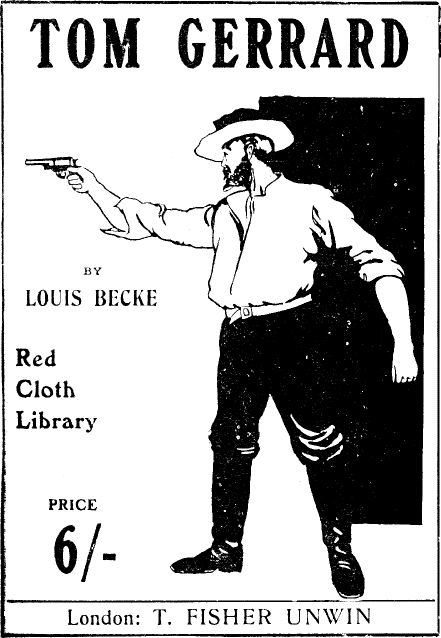 Tom Gerrard 1904
Tom Gerrard 1904Louis Becke (1859-1913)
The volume bears the dedication: "To "Alrema" I dedicate this story of her father's native land. Caen, France. 1904."
TOM GERRARD by Louis Becke
CHAPTER XXXI. I
The old man looked up, wondering at the "Mr."
"What is it. Gerrard?"
"I am going to ask your daughter to marry me."
Frazer could not help a smile. "There's no beating about the bush with you, Tom Gerrard." Then he put out his hand and said with grave kindness: "You are the one man whom I should like to see her marry."
"Thank you," and the younger man's face flushed with pleasure.
Then Frazer, like the tactful man he was, said not a word more on the matter.
… then he turned to the man at the tiller.
"Keep her south, my lad. For'ard there, set the squaresail. Now, Mr. Gerrard, you'll see what the little Fanny Sabina can do even in a light wind like this," and Lowry looked with an air of pride at his dainty little craft. TOM GERRARD (
1905, July 1).
Western Mail (Perth, WA : 1885 - 1954), p. 75. Retrieved from
http://nla.gov.au/nla.news-article33518798
Tom Gerrard 1904 available in full online at Project Gutenberg HERE
LOUIS BECKE'S SHARK STORIES.
"When I was a lad" (writes Mr. Louis Becke) "people thought that everyone who went to California would make his fortune; so I and my brother Vernon were sent out from Australia, where, by the way, we were born each- with a hundred pounds in his pocket. I was thirteen at the time, and my brother was. fifteen. We duly reached California and spent our money most royally. Eventually I secured a billet on board a steamboat trading between 'Frisco, Acapulco, and Mazatlan, and 'other ports. I got good pay— fifteen pounds a month. Although my position was ostensibly that of ship's clerk, my principal business was to act as the captain's accomplice in smuggling lace, tobacco, I cigars, and jewellery, at which occupation I turned out to be somewhat of an expert. Our captain's wife sailed with us, and she and other lady passengers carried the goods aboard, concealed in their dresses. I spent about eleven months on board the vessel, and I had a very comfortable time. "After that, at the age of fourteen, I went on a shark-catching cruise with a schooner.
It was now that I took a great liking to a South Sea Island life, and, having saved all my money, I and an old Scotchman— a good seaman, but a frightfully drunken old hog-went partners in a small vessel, and proceeded on a fresh cruise of shark-catching."
"How do you catch 'em?" —
"I'll tell you about it.. For instance, say you go to a place, where I have frequently been, called Palmyra Lagoon, a coral island, which is a narrow fringe of land encircling a large area of salt water, with two or three passages through it. Inside, this lagoon Is swarming with sharks. You go out in a whale boat or a punt, and use very stout -tackle, about an inch in diameter. A large hook is used, but not a barbed one. It Is Just a piece of stout iron, sharpened, and bent into a -curve— a barbed hook takes too long to fish out of the shark's jaws.- You fling over some dead fish, and the sharks, swarm up in their thousands, you can't say hundreds, because there are so many of them. Each man, I may tell you, has a short line, and when he drops it overboard a. shark is soon at the end of it. If he is a big one it takes two or three men twenty minutes -to get him aboard, but we don't like big sharks. They occupy too much time, and big sharks' fins don't bring in as much cash In China as the small ones— they are too coarse. Sharks, of course, are caught on -account of their fins and tails. They are sold in Sydney to Chinese merchants, who export them to China, where they are used as articles of food."
VIVACIOUS.
Sketches from Normandy is but a dull and unpromising title with which to present one of the gayest and liveliest books imaginable. The present reviewer, having taken it up without over-much anticipation, was most pleasantly surprised although we had never suspected Tom Dennison be identical with Mr. Louis Becke. Here we find more extended historiettes of Mr. Dennison himself, young Potter, that delightful specimen of Young England; of Celine and Berthe, and the children and the dog, to say nothing other people's dogs.
One persuaded that those things happened; and we are grateful for the day and the hour when Mr. Becke, rambling along the quays of Dublin, discovered the Bayard, of St. Malo, and took ship in her together with his wife, the children, and the dog. We are even obliged to the Board Agriculture, whose embargo on the dog kept dine cheerful travellers roaming about Normandy far an indefinite period—how indefinite Mr. Becks doss not tell us. The narrative as leisurely the family's wanderings; and while there is gay and spontaneous humour there is also the power of observing and transmitting impressions the Mfc as It showed itself one of these travellers. The family did not venture far afield nor into unfrequented places: but the “Kingdom of Heaven is within you ''—and out very simple materials Mr. Becke has constructed an itinerary which is fresh and joy-giving. ‘Sketches from Normandy.’ Louis Becke. (London: T. Law Is.) Pall Mall Gazette - Tuesday 02 April 1907
Marriages Sep 1908 - London Birth Deaths Marriages Records
BECKE Fanny Sabina Pancras 1b 277
BECKE George Lewis Pancras
The district Pancras is an alternative name for St Pancras and it is in the county of London.
Louis Becke's Mission
WELLINGTON, September 8. Mr Louis Becke, author and traveller, arrived by the Ionic to-day, en route to the South Sea Islands. Mr Becke informed a Post reporter that, on behalf of the Royal Geographical Societies in London and Berlin, and the Anthropological Societies of the same cities, he is to investigate and report upon, and take phonographic records of the folk songs and lore of the South Sea Islands. From Louis Becke's MissionWANGANUI HERALD, VOLUME XXXXIII, ISSUE 12562, 8 SEPTEMBER 1908
September 1908 – Becke and his family land in New Zealand – The Dominion (Wellington) runs an article on his proposed trip to gather plants/info. The NZ and Fiji papers run that he is there with his wife and children - her and the girls presence doesn't appear in any Australian newspapers though – final paragraph:
‘Mr. Becke is accompanied by his wife and three children. Unfortunately Mrs. Becke is suffering from a chest complaint and will probably undergo treatment in a Wellington hospital.’
LOUIS BECKE.
INVESTIGATIONS IN SOUTH SEA ISLANDS.
The Wellington correspondent of The Sydney Morning Herald wrote on September 11:— Mr. Louis Becke, the famous novelist and traveller; arrived in Wellington from London on Tuesday. Mr. Becke has a mission of considerable interest. On behalf of the Royal Geographical Societies of London and Berlin and the Anthropological Societies of the some cities, he is to investigate and report -upon and take records of the folk-lore and folk-songs of the South Sea Islanders. He will settle on Bougainville Island for this purpose for six months, and will take phonographic records as part of the preservative work. 'I lived out there for some time.' he contemplatively observed. 'The islanders are a dying race, and in another fifty years there will be no more Polynesians left. This is recognised by the savants of the old-world, and I have made arrangement by which I may work for the English and German Anthropological Societies.' In pursuance of his mission, Mr. Becke takes steamer from Sydney to Brisbane, where he will meet a German doctor and naturalist, who will accompany him to the German Solomon Islands, and stay with him at Bougainville for six months or so. From Bougainville Mr. Becke will go to German New Guinea, and then to Dutch New Guinea, where his final stay will be made. He is to return to London in 1910. At present he is looking forward with pleasure to his return to Sydney, from which place he has been absent about 12 years. He was born at Port Macquarie, New South Wales, where his father and grandfather lived before him, and he intends to pay a fifing visit of four or five days duration to the old quarters, upon which he first turned his back when he sailed for the South Seas to encounter adventures and notabilities, not to say notorieties. Chief among the latter, as all readers of his earliest sketches will remember, was 'Bully Hayes.' the world-wide celebrity. This captain has been branded, in fiction and legend, as a semi-pirate who went armed to the teeth, and shot Polynesians to mark his progress; but Mr. Becke discounts these assertions. 'As a matter of fact.' he says. 'Hayes never carried firearms. It s true he was a rough sort, but he used to do the damage with his fistu. The firearms are a picturesque addition by the taletellers.'
A visit to Fiji is in Mr. Becke's itinerary. That is necessary to enable him to get permission from the Governor of Fiji to take a party of eight Samoans with him to Bougainville. and to carry firearm* there. In a further reference to this. Mr. Becke said he would have to get authority from the German Governor of Samoa, and to put up £25 a head guarantee for the safe return of the natives. He spoke enthusiastically of Dr. Solf, the German Governor, as a capable administrator. Samoa under German administration was a prosperous place; it was the one prosperous colony. De Solf had studied colonial administration in the West Indies, and .had ably applied fits observations. When the Germans, took over Samoa some doleful prophecies were made, but facts had disproved these.
Speaking of literature. Mr. Becke remarked:— 'There is a great desire among London newspaper editors for bright matter written by Australians, and the average London editor is open-minded. The way for an Australian to do is to send his writings, direct. 'There is a fascination about such stories for readers in the older world.' continued Mr. Becke. 'About eight or nine months ago I was talking to the editor of Le Matin the Paris newspaper. He reads the Australian newspapers, and he said:— The Splendid stuff I see written by your men in those parts— in the South Seas— splendid stories!' ' Mr. Becke has been living in France for some years, and he has pleasant impressions of that country. In some degree these have been assisted in formation by his Pans business -experiences. Some tales of his had been translated and use-by Pans publications; and. although he had not actual copyright so far as France was concerned, he received payment for them. LOUIS BECKE. (
1908, September 22).
The Register (Adelaide, SA : 1901 - 1929), p. 7. Retrieved from
http://nla.gov.au/nla.news-article58932921
Mr. Louis- Becke, the novelist, and Mrs. Becke, who have been staying in Auckland for some weeks, will leave by the Manapouri for Suva on October 28. From Suva, Mr Becke will proceed to the Solomon Islands, to pursue his investigations for the British and German Royal Geographical Societies, while Mrs. Becke, with her two daughters, will go on to Samoa, afterwards returning to Auckland, to await Mr. Becke's return. From TARANAKI HERALD, VOLUME LIV, ISSUE 13789, 22 OCTOBER 1908
MR. LOUIS BECKE.
Mr. Louis Becke, the well-known writer of South Sea Island stories, has arrived at Suva, prior to sailing for the Solomons. He goes thither in the interests of the Royal Geographical Society and sundry Continental scientific societies to collect specimens of the fresh water fishes,.. none o£ which, so far, have .been. placed in Europe. A European colleague goes with Mr. Becke, and the outfit is a complete one, including a lot of gramophone records, for use in the group, and many, other scientific apparatuses. New Guinea Is likely to be visited .by the party also, as it promises good results. Mr. Becke was inundated, both in London and abroad, with applications from all sorts of people, who wished to join the 'show’. MR. LOUIS BECKE. (
1908, November 19).
Evening News (Sydney, NSW : 1869 - 1931), p. 2. Retrieved from
http://nla.gov.au/nla.news-article113768443
In December 1908, the Fiji Times reports;
‘Mr. and Mrs. Louis Becke and two little daughters arrived from New Zealand by the steamer Navau and will probably be in Fiji some two weeks or more. Mr. Becke, as reported in these columns previously, has a commission with the Royal Geographical Society of London and Berlin and the Anthropological Societies of the same cities, to study the folklore in the Pacific islands.
…
For the work at hand he is armed with photograph and gramophone receivers for collecting verbatim songs and stories and also supplied with, Mrs. Becke says with a smile, “quantities of guns and pistols’.
But after three minutes chat with Mr. and Mrs. Becke there is no doubt that the chief assistance in the present undertaking is to come from Mrs. Becke, whose researches into old English folklore songs (she has all Cecil Sharp’s music with her) and dances in the Sussex villages have been so successful, and whose entire sympathy with the work at hand is so manifest.
Like her more noted husband, Mrs. Becke wields a fluent pen and has been a contributor to the Wide World Magazine, the Westminster Gazette, etc. and is now engaged on a book of reminiscences.
They were each enthusiastic over the reception at Rotorua where Mrs. Becke was accorded the privilege of “soaping” the big geyser at Waimangu.
From Suva they will go to Samoa and thence to Tonga….
Mr Louis -Becke, the novelist, returned to Auckland from Fiji on Monday last, his proposed cruise: among the islands of the South Sea haying had to be postponed until early next year owing to the impossibility of obtaining a suitable vessel. Mr Becke intends to proceed for Australia shortly.
WANGANUI CHRONICLE, VOLUME L, ISSUE 12145, 14 DECEMBER 1908
Mrs. Louis Becke and her two children were passengers from Samoa, where they have been staying for a month, by the Tofua, which arrived yesterday.
NEW ZEALAND HERALD, VOLUME XLV, ISSUE 13944, 29 DECEMBER 1908
SCHOOL PRIZES DISTRIBUTION.
MELMEHLY COLLEGE. I The annual distribution of prizes in connection with Melmerly College, Parnell, took place on Thursday afternoon. The Rev. Canon Mac Murray presented the prizes as follows :
French: Nesta Self and Rema Becke 1. Painting:- Rema Becke.
AUCKLAND STAR, VOLUME XL, ISSUE 301, 18 DECEMBER 1909
Melmerly College was a live-in school - we cannot determine if Alrema lived in or stayed nearby with her mother:
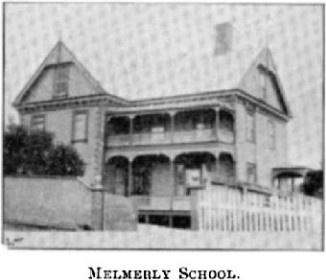 MELMERLY COLLEGIATE SCHOOL is admirably situated in St. George's Bay Road,
MELMERLY COLLEGIATE SCHOOL is admirably situated in St. George's Bay Road, and every comfort is afforded to the pupils, whose number averages about seventy. The curriculum taught comprises English literature, modern languages, Latin, mathematics, physiology, music, painting, and drawing. Pupils are prepared for the matriculation and Civil Service examinations. Moral and religious training is made a special feature, and the scholars are trained in the tenets of the Church of England; the Rev. G. MacMurray, M.A., vicar of St. Mary's, visiting the school fortnightly.
Great attention is paid to the physical development of the pupils, who possess the advantages of a well-equipped gymnasium, which is attached to the school. An admirable staff of teachers, besides the principals, is engaged in imparting the usual curriculum—namely, Madame Bouillon (resident); Mrs Dewes (non-resident); Miss Lance (diploma in Honours, Cambridge) (non-resident); Mr. Wright (drawing); Mr. K. Watkins (painting); Dr. Thomas; Mr. Leslie Hunt, organist, St. Mary's, Parnell (music), and others. Principals—Miss Hall, Mrs Gordon (Cambridge Higher Local First-class, with Honours). Since the accompanying photograph was taken, considerable additions have been made to the school, which is now capable of accommodating a large number of pupils.
Miss Nora Lois Becke (the eldest daughter of Mr. Louis Becke), who holds an important secretarial position in London, is visiting the Dominion and the Australian colonies. Miss Becke is almost accomplished linguist, and out of 300 applicants for the position she now holds she was given the appointment, despite strenuous opposition on account of her age. She has obtained six months' leave. Miss Becke is now only 21 years of age, and was born at Townsville, North Queensland.
NEW ZEALAND HERALD, VOLUME XLVI, ISSUE 14043, 24 APRIL 1909
Mr Louis Becke, the well-known novelist, is at present touring the North Island Taking advantage of the Hinemoa's cruise to see outlying groups of islands. Mr Becke arranged to accompany the vessel on her periodical inspection of the castaway depots at Antipodes, Bounty, and other islands in search of fresh impressions; but before sailing from Port. Chalmers on 'Thursday night for the Bluff Captain Bollous received word from Mr Becke that he would be unable to take advantage of the trip to the haunts of the seal, penguin and albatross.
WAIRARAPA DAILY TIMES, VOLUME LXI, ISSUE 9451, 17 AUGUST 1909
Mr Louis Becke, the well-known novelist, is at present touring the North Island.
MANAWATU STANDARD, VOLUME XLI, ISSUE 8999, 21 AUGUST 1909
Signor Pasquale Torzillo, well known in the Sydney musical world, died on the 25th inst. He arrived in Sydney forty-seven years ago, when only eighteen years of age, and may justly be termed one of the pioneers of the art of music in Australia. For nearly half a century he delighted each generation with his playing, being an enthusiastic harpist till within a shot time of his death. He has left a family of three sons and three daughters, all of whom occupy leading positions in our musical world. Mrs. Torzillo, who was a sister of the Australian author, Louis Becke, predeceased Signor Torzillo several years ago.
EVENING POST, VOLUME LXXVII, ISSUE 77, 1 APRIL 1909
Signor Pasquale Torzillo, the well-known harpist, died at Darlinghurst on March 26. He had been in the country for forty-seven years, and was well known once on the Manly boats. His late wife was Louis Beck's sister. Theatrical Gossip. (1909, April 10). The Newsletter: an Australian Paper for Australian People (Sydney, NSW : 1900 - 1919), p. 11. Retrieved from http://nla.gov.au/nla.news-article102792973
Pasquale Torzillo, Sydney's best-known harpist, died recently. For over forty five' years he has been tweaking the strings of the eneient instrument, and between time bringing up a family of three sons and three daughters to make other pleasant noises. Mrs. Torzillo, who predeceased; her husband several years, was a sister of Louis Becke, the Australian author.
AUCKLAND STAR, VOLUME XL, ISSUE ..0, 17 APRIL 1909
SOUTH SEA REMINISCENCES.
A YARN BY MOONLIGHT By LOUIS BECKE (Specially written for the "Star") PART 1 Many years ago, when I was earning a comparatively honest living in New Britain, trading" for the famous Emma Coe now Mrs Kolbe of Ralum, I contracted fever and elephantiasis and tinea de squamans —otherwise known as "scaly skin" —and various other diseases incidental to the trader's lot in the South Seas, and decided to leave the country and make back for the Caroline or Marshall groups where a man could sleep decently without being disturbed by the point of a spear tickling his liver. .My predecessor ion the station (which was in Kabaira Bay end the "furthest west." on New Britain) was the Hon. G. S. Littleton—a nephew of the late Lord Lytton—and had been speared as he lay reading in his cane lounge one night. ...
AUCKLAND STAR, VOLUME XL, ISSUE 193, 14 AUGUST 1909
Private advices state that Mr Louis Becke, the novelist, has arrived back in Sydney from the Islands. He is not enjoying the best of health.
WAIRARAPA DAILY TIMES, VOLUME LXII, ISSUE 9712, 27 JUNE 1910
MATAAFA OF SAMOA
The days of the valorous old Mataafa, ex-King of Samoa, are (writes Louis Becke in the 'Herald' ), so states a private letter received in Sydney quite recently from Apia, drawing to an end, for the fighting chieftain has been ill for some time, and probably the next mail from Samoa will bring the news of his death. And with his passing his people ever to regain their former independence. Yet, who can tell what things may lie in the future, even for poor little Samoa, should the nations of Europe come into conflict and the great Power whose flag now floats over the Samoan Group (save one island) be worsted.
The name of Mataafa — apart from his being a noted warrior who thrice repulsed landing parties from the German ships of war in the troublous times of the eighties — will always be remembered in connection with the memorable disaster to the American and German fleets in Apia Harbour on March 16, 1889. He rendered signal service in saving many lives of German and American bluejackets, and won the respect and admiration of his former foes for his magnanimity, chivalry, and courage. To him, the Americans were friends — at least, he had no enmity against them, and they none against him — but the Germans had been, and were then, his foes. But to him there could be no distinction made at a time of common disaster — the life of a drowning German sailor was as sacred, to him and his people as that of an American or British- bluejacket. It will be as well, perhaps, to recall some of the incidents connected with what is still called the ''Calliope'' gale. Germany and the United States had strong commercial interests in Samoa, Great Britain had practically relinquished hers, but nevertheless when the American and German squadrons entered Apia Harbour — each mistrusting the intentions of the other regarding the annexation of Samoa— the Calliope followed to play watch-dog over the interests of the British subjects in the group. Anchored in a confined area, the three German and three American warships were ready to open fire upon each, other the moment that a landing party from each side hoisted the flag of its country. The German ships were small, but modern and up to date, the American were old and obsolete, and had hostilities ensued the American squadron would have fared badly. ' The American flagship was the Trenton, a I hulking, weak-engined, and poorly-armed ship, her biggest guns being muzzle-loading Dahlgren’s, and the Admiral, Lewis Kimberley, himself admitted to the writer that, big as she was, she would stand no chance wit a even the smallest of the German ships. His other ships were the Nipsic and the Vandalia, both, like the flagship, built of wood and ineffective for fighting. The German ships were the Olga, Eber, and Adler, all small but powerful vessels, manned by well disciplined crews, as against the motley crowd of all nations under Kimberley's command. When the hurricane was at its highest, the wind blowing at nearly 70 miles an hour, Captain (now Admiral) Kane, of the Calliope, seeing that the Trenton was drifting down upon him, slipped his cables, and in face of a terrific, mountainous sea made for the passage. So close had she to pass to the Trenton that at one moment their yards almost interlocked. (Kane says that the escape of the Calliope was due, not to him, but to chief—engineer Burke, and his staff of firemen and stokers.)
One after the other the American' and German warships struck in driving rain and semi-darkness, together with four schooners and a large German barque, and the scene that followed was truly appalling. Over 140 lives were lost. The little harbour was a maelstrom. It was then that Mataafa came to the rescue with 200 of his fighting men, who by their heroism saved the majority of, the German and American sailors, risking their own lives in the most daring and chivalrous, manner. Mataafa, now a pensioner of the Imperial German Government, well deserves the allowance made to him, of 2000 marks per annum. He was well aware of the fact that a week before that fateful 16th of March, the Germans and Americans were prepared to enter into a struggle for supremacy in Samoa, and he found it hard to restrain his warriors from attacking such small parties of German sailors as came on shore. And his personality was so strong that they yielded. One evening, as Mataafa sat, surrounded by his chiefs, in a native house in the village of Lelepa, back from Ma'autu Point, on the northern horn, of Apia Harbour, there came to him a messenger, who told him of certain things that had been said by the I , American Admiral to his officers at a council of war on board the flagship Trenton. The old chief smiled grimly, but said nothing to these about him. What he was told was this : — 'The admiral had told his officers frankly that they would have no chance with the Germans. 'Our chance is to run our ships alongside theirs before they sink us, and carry them by boarding in the good old-fashioned, style of a hundred years ago.' Mataafa knew that if he communicated this to his adherents there would be no holding them back. Five hundred men would have boarded the American ships in the hope of being allowed to join the boarding parties. This would have been the signal for war, and for a time he was strongly tempted. But he knew the old, innate savagery of the Samoan in time of victory would again re-assert itself, and the defeat of the German naval forces would mean that every German resident throughout the group would, in all probability, lie slaughtered. And so he held his hand, and when the elements intervened the problem was solved.
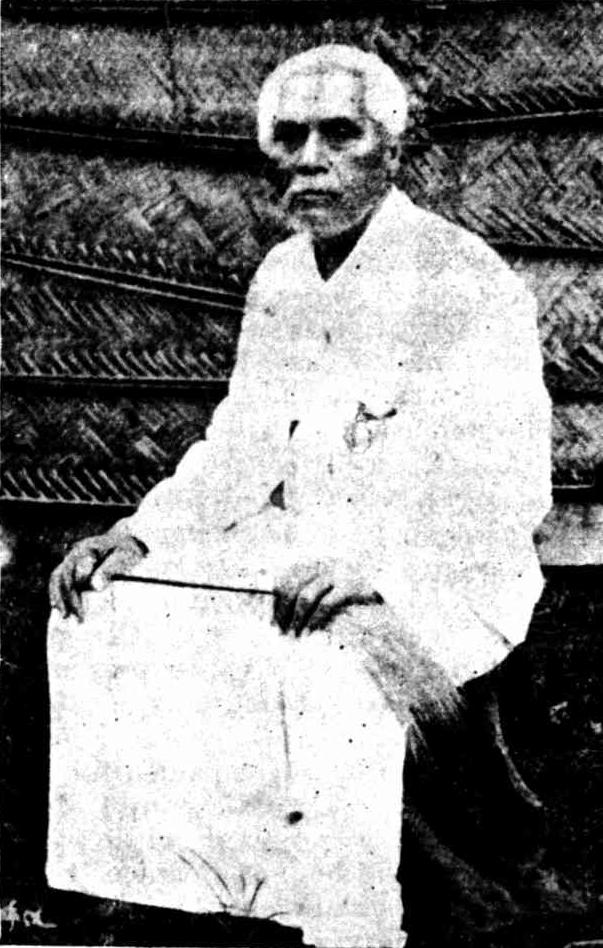
Mataafa.
Personally, Mataafa is a striking old man — deep-set stern eyes, square chin, and with a calm and reposeful manner. He is a devout Roman Catholic, although the majority of his adherents are Protestants. That they are all devoted to him goes without saying. Early in the 'eighties' the present writer visited him on the little island of Manono — the home of the chiefly families of Samoa — and situated between TJpolu and Savaii, and among other topics of conversation over the' kava bowl was the subject of the Samoan practice of decapitating a fallen enemy. 'It is bad, very bad,' said the old man., 'but it is fa' a Samoa (the custom of the country). Next to being tattooed, the young: Samoan's chief glory in life is to take a head in battle. It gives him a great mana, and. he can pick and choose a wife, and establish, his reputation. And what, after, all, does it matter to the dead man? He cannot miss his head.'
Chroniclers of Becke’s times speak over and over of his stories being true to his own life story, autobiographical. His wife’s and children’s names appear in them. If they are autobiographical, this one, from a year before he passed away of throat cancer (he smoked) in telling in its ways too – of why he had care of Nora (Norah), or of why he and Fanny Sabina parted – in his version Norah Lois is spoken to about - the child he took 'on all his island wanderings' and seems to be a mishmash of his partings from Bessie and then from Fanny Sabina - one of whom may have had his own problem with gin the other who may have become a little too close to the gentleman she returned to London to work for Arthur Conan Doyle,
....'Mrs. Becke frequently met Sir Arthur Conan Doyle during his lifetime, as she was the librarian of the bookshop in Victoria Street, Westminster, where all matters relating to his favorite study of psychic phenomena were to be found.:
THE RAIN AND THE CHILD.
BY LOUIS BECKE. '
'Father, dear, are you awake?'
'Yes my child, very much awake.'
'Have you been listening to the rain?'
'Yes, I have been listening to the rain for nearly half-an-hour, little one.'
'Isn't it a strange, funny rain, father? It comes in lumps, then stops, and you can hear the breakers on the beach; then it falls so softly and gently for a little while, and the breakers cry out more loudly and seem to call to one; and then, again, it rattles down and I hear it crashing upon the banana trees.’
'Yes, my child.' 'May I talk? I feel so strange and all sorts of curious things seem to come to me with the rain. May I really talk?'
'As much as you like, Lois. It is, indeed, a strange rain. I have never heard such rain before. Now I shall light the lamp, fill my pipe and we shall sit on the verandah till sunrise, which will be in another hour,'
'Oh, how lovely! And can I bring Blackie and her kittens? And can I make our coffee this morning, instead of Manuel?'
'You can bring Blackie and her family, and you can make the coffee. But put something on over your nightdress, Lois, and I'll fix up the lounges and the rugs. Before sunrise the chill breeze from the mountains will be upon us, and I don't want you to catch cold, old woman.'
The child sprang from her bed and clasped her soft arms around her father's neck. 'If I caught fifty colds, 'lashed together,' as Captain Evers says, you can cure them all in an hour. Father, you really and truly are a wonderful man. No wonder the natives call you Tagata Poto, the wise man.'
Manning laughed. 'Now get away and put on a shawl or something, and bring along your wretched cats.'
'Father!. You mean blessed cats. Such a mother cat and such kittens never before existed— Oh, listen!' A crashing downpour of heavy rain smote the thatched roof and crashed through the banana and orange trees that surrounded the trader's house, and then two minutes later ceased with a sudden 'snap.' Then, in the deep silence, came the call of the ever restless surf.
'Father, Father,' said the child in an awed whisper, 'If you were not here I should be frightened. Listen to the surf.' Manning bent down and kissed her. 'I shall always be with you, Lois.'
The man had had his coffee, and was lying back on his cane lounge, smoking and thinking. The child, who had brought her lounge beside his, was watching with beaming eyes, the antics of three kittens, the mother of which was sharing a large platter of bread and goat's milk with Manning's collie dog. For the time the rain had ceased and the sun almost obscured by a heavy bank of dark cloud, sent a dim glow of light upon the gently heaving sea. The morning was strangely quiet, and the voices of the, people in the native village near by sounded as from a fair distance, as they wended their way to the lagoon for their morning bathe. Presently came Manuel, Manning's Rotumah native servant. Standing on the verandah steps, he looked reproachfully at Lois and then at the coffee cups.
'Don't look so solemn, Manuel. Father said I could make the coffee this morning, although I can't make it like you do. Now, come here, and sogi (rub noses) with my kittens. Be quick, because they want to go on playing.' Manuel obeyed the command of his youthful mistress, then turned to Manning: 'Master, the people say that strange things are to happen soon, and they have fear. Tis the strange rain that is in their thoughts. Twenty and one years ago, they say, there was such a night of such strange rain as that of last night. And when the dawn came, the fun could not be discerned when it rose from the sea-rim — even as it is now — and the sea birds in tens of thousands went not out to catch fish, but huddled together in their rookeries in silence.
All that day it rained, rained, and the surf on the reef was beaten flat and made no sound, and the wind was dead on the sea and land, but yet moaned high up in the heavens, and the clouds moved swiftly. And then about the time of sunset there came from the eastward a mighty wave 10 fathoms high, and swept with a roar upon the land, and in a little time the village was gone, and many people perished, for the wave: went across this part of the island, and houses and people were carried away together into the lagoon. So that is why the new village has been built on higher land. But yet, master, do I share their fears. And for the sake of the little one, let us be prepared, and take all that we possess to still higher ground. Presently the head men are coming with all the people to carry everything away to a safe place.' 'Good, Manuel. Let us begin to pack up at once. Lois, you can help.'
In a few hours all the trader's effects were removed to the highest part, of the island and a temporary house quickly erected for him, together with many others for the natives themselves. Lois, with 'Blackie’ and her family following her about in their new abode, was happiness personified, and she and the ever faithful Manuel 'arranged' things; she with her 10 years of wisdom alternately, scolding and applauding him for his carelessness and strength as he lifted the heavy cases of trade goods and piled them in even order.
An old bald-headed native entered the house, and sat down cross-legged to have a talk with the white man, first looking with an air of profound grief at the empty pipe which he untwisted from his pendulous ear-lobe. Manning tossed him a stick of tobacco. 'What of this great wave, Talanoa?' he asked.
The ancient spread out his hands. 'It may come, it may not come, good friend. But thou has done wisely to come to a place of safety. If it does come it will give warning, for the surf will cease to Break on the reef and leave it high and dry, and the seabirds will gather together in their rookeries in the great banyan trees.' And then he began to tell the story of the previous visitation; then when half-way through his tedious tale Lois burst in, almost in tears. 'Oh, father, Blackie and the kittens have gone away, and I am afraid that the fish eagles will get them.' 'No fear of that. She has only gone back to the house. Come with me and we'll soon have her back.'
Through the still falling rain they made their way through the dripping palms and banana 'groves to the house, and found the cat, with her family, on the verandah, mewing piteously. Lois pounced upon her, threatened to tie her up in a bag, and then went in search of some food for her. Manning sat on the verandah steps gazing dreamily out upon the misty sea.
Presently Lois came and seated herself beside him. She was silent for a few minutes.
'Will it disturb you if I talk, father?'
'No, of course it will not; talk as much as you like, and about anything you like'
'You said I could talk about anything; and —and, may I ask you something about mother?'
Manning's lips twitched; then he answered quietly: .
'Yes, you may talk about your mother.'
'Do you think that she will remember that it will be my eleventh birthday soon?'
'I hope so, my pet; in fact, I am sure she will.'
'Ah, I am so glad.'. Then another pause. 'Father, you don't really hate mother, do you.'
‘God knows I do not, my child.'
'But she made you very unhappy, didn't she.'
'Yes, very unhappy.'
'Can't you ever forgive her?'
For an instant 'Never!' trembled on his lips; then he turned, his face seaward once more ere he replied: — 'I have been trying to forgive her for the past two years, Lois.'
'Ah, do try very, very hard, won't you? and I shall feel so happy. I was thinking of her last night, when that soft kind of rain began to fall. I wanted to speak to you about her, but I was afraid, so I cried to myself instead.'
The man drew the child to him and kissed her fondly. She flung one arm around his sun-tanned neck and nestled close to his side.
‘We were all so happy, were we not, until that horrid Madame Lorina made mother become a spiritualist and brought all those other horrid women and shabby long-haired men with dirty collars to the house. Oh, how I hated them all — especially the women. I hate them now just as much as I hate those dreadful gargoyle things on Notre Dame which you showed me in Paris. Madame Lorina used to terrify, me with those awful sunken eyes and her voice, which sounded as if it, came from a cave. And I am sure that mother was actually afraid of her.'
'She was, although she knew that that woman and her friends were robbing her, and that, they had been exposed over and over again as swindlers and impostors. You are all but 11 years old now, Lois, and I can tell you that I have cursed the day that your mother fell under the evil influence of those people. She gave them a thousand pounds.'
'Oh, a thousand pounds!'
'Yes, a thousand pounds. That was one reason that your mother and I had that dreadful quarrel when I kicked the three long-haired men out of the house and swore at the grotesque women. Another reason was that she, who loved you so much once, neglected you and never came near you for weeks at a time. She seemed to have forgotten your very existence.'
'Poor father! I have not forgotten. Night after night I used to cry myself to sleep when you were away in New York. Mary was very kind to me, especially at night, when mother was away at the seances and lectures. But, oh! I was so glad when you came home; everything seemed dull and grey without you, and mother was so strange. Then came that terrible quarrel, when I had to say, good-bye to mother, and you took me away. Father, shall we never see her again? She is so young and pretty and she did love me, I am sure, although, she was so cold to me when I kissed her and said good-bye.'
Manning was silent. He remembered the scene well. His wife refused to give up her shady friends, and asked for a legal separation, and he consented. Two days later he left London for France intending to place the child at school, but her passionate grief and entreaties not to leave her, were too much for him, and he had promised her that she should always be with him. And then after a few months' wandering about the continent, he came to the resolution to return to his old vocation of trader in the South Seas. To him now, the child was all His hope and life, and the vision of his fair young wife of eleven years back, was slowly but surely being effaced from his memory with his return to his former surroundings.
'Father, I won't talk any longer if I weary you; but I would like to see mother again. And won't you write to her— for my sake?
'I will do much for your sake. I'll write to the lawyers by the next schooner that calls, and inclose a letter for her— and you may write, too.'
Glad tears filled the child's eyes as she embraced him. 'I am so glad, dear father. Perhaps she will come to us— and then how happy we shall all be.' Manning smiled. –
'She could not come here to this lonely life. If she wants us we must go to her.'
Lois buried her face against her father's chest in silent ecstacy. Then came the' sound of excited voices and the rush of naked feet along the pebbled path towards the house, and a number of native men and women appeared.
'Stay no longer,' they cried; 'the air Is dark with sea birds coming from the north, and the surf on the reef is mate (dead). Haste, haste, good friend.' Lois flew to Blackie and seized her, the native women picking up the kittens, and then the whole party struck into the forest path leading to the temporary village. Already the daylight— though it was still two hours from - sunset— had gone, and the still falling rain added to the gloominess of the silent forest, undisturbed save for the cries of myriad sea birds. Half, a mile more and they were in sight of the rudely-built huts from the open sides of which gleamed the blaze of many fires of dried cocoanut shells. Divesting themselves of their soaking clothing, the trader and the little girl sat down on the matted floor whilst Manuel made coffee and broiled some fish. The heat was strangely oppressive, and goats and poultry crowded into the huts as if fearing some imminent danger, and refused to be driven out. Suddenly, from seaward, there came a long, droning hum, and then a crashing roar, as if a hundred heavy guns had been fired simultaneously, and a mighty blast of wind tore through the forest and twisted and snapped off great branches as it sped eastward; then followed silence once more.
''Tis the wave,' said old Talanoa. 'It has come and gone, and we are safe. Who comes with me to see if our houses still stand?' Manning went with them. In an hour he returned to Lois, who looked at him inquiringly. 'Not a house is left, Lois. The site of the village is now as bare as the beach itself, and millions of dead fish are strewn about the bush half a mile back from where our house and pretty garden once stood.'
The schooner had come and gone, and taken Manning's letters. He had told his lawyers that he was leaving for Sydney by the next vessel, three months hence.
'I shall wait there for six months,' he wrote, 'until I hear from you— or her. If all is well, Lois and I will return to England. If the same condition of affairs prevails, we go back to the Islands.'
To his wife he wrote in affectionate terms, enclosing a long letter from Lois. One morning, four months after they had arrived in Sydney, Lois came to him with a letter. Her little hand trembled as she handed it to him.
'It is from mother,' she said in a broken whisper. Manning opened the other and read the few lines to himself, and his eyes lit up.
'Here is a big, fat letter for you, Lois. But before you open it read mine.' Lois, through the fast falling tears, could only see the concluding words :— 'So come back to me, Ted— you and my Lois. My wicked folly has nearly broken my heart. My eyes have been opened, and the madness that possessed me has gone, never to return. Ever your loving Alice.'
'Father,' said Lois, 'the rain made me talk to you that night. But I cannot read mother's letter. I am shaky all over. You must read it to me.'
Manning read it, and when he had finished the child turned to him a face glorified with love and happiness.
'Now I am going to talk to Blackie. I told mother that if we came to England Blackie should come too.'
Mr. Louis Becke. This distinguished novelist of world-wide fame has written us from Sydney a most interesting and welcome letter, in which he expresses a deep longing to renew his acquaintance with dear old Port Macquarie, his native land. Our friend met with an accident some time ago, and is only just recovering. As soon as he is strong enough he intends to visit our town which appears to hold a charm for Mr. Becke, and spend a few weeks amongst old friends and scenes that are beckoning him away from an active life and restless city. We hope to arrange for several articles from the pen of this gifted writer, and we shall all feel honored by his presence amongst us. Mr. Louis Becke. (
1912, March 23).
The Port Macquarie News and Hastings River Advocate (NSW : 1882 - 1950), p. 7. Retrieved from
http://nla.gov.au/nla.news-article104881845
A little about Arthur Conan Doyle, from Wikipedia:
Sir Arthur Ignatius Conan Doyle KStJ, DL (22 May 1859 – 7 July 1930) was a British writer best known for his detective fiction featuring the character Sherlock Holmes. Originally a physician, in 1887 he published A Study in Scarlet, the first of four novels about Holmes and Dr. Watson. In addition, Doyle wrote over fifty short stories featuring the famous detective.
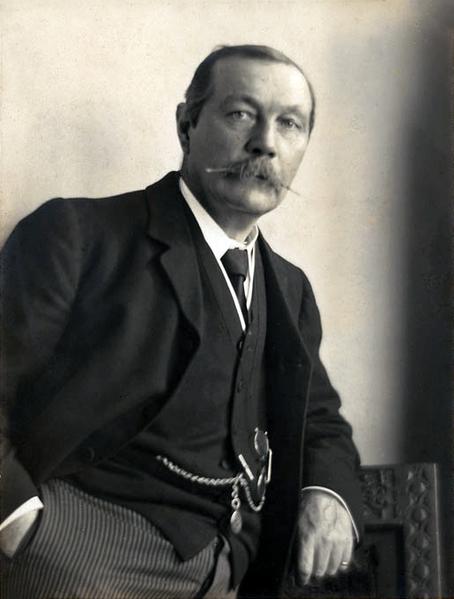
Doyle was born on 22 May 1859 at 11 Picardy Place, Edinburgh, Scotland. His father, Charles Altamont Doyle, was born in England, of Irish Catholic descent, and his mother, Mary (née Foley), was Irish Catholic. His parents married in 1855. In 1864 the family dispersed because of Charles's growing alcoholism, and the children were temporarily housed across Edinburgh. In 1867, the family came together again and lived in squalid tenement flats at 3 Sciennes Place. Doyle's father died in 1893, in the Crichton Royal, Dumfries, after many years of psychiatric illness.
Supported by wealthy uncles, Doyle was sent to England, at the Jesuit preparatory school Hodder Place, Stonyhurst in Lancashire at the age of nine (1868–70). He then went on to Stonyhurst College until 1875. From 1875 to 1876, he was educated at the Jesuit school Stella Matutina in Feldkirch, Austria. He later rejected the Catholic faith and became an agnostic. He later became a spiritualist mystic.
Doyle had a longstanding interest in mystical subjects. He was initiated as a Freemason (26 January 1887) at the Phoenix Lodge No. 257 in Southsea. He resigned from the Lodge in 1889, but returned to it in 1902, only to resign again in 1911.
Also in Southsea in 1887, influenced by a member of the Portsmouth Literary and Philosophical Society, Major-General Alfred Wilks Drayson, he began a series of psychic investigations. These included attending around 20 seances, experiments in telepathy and sittings with mediums. Writing to Spiritualist journal Light, that year, he declared himself to be a Spiritualist and spoke of one particular psychic event that had convinced him.
Though he later wavered, he remained fascinated by the paranormal. He was a founding member of the Hampshire Society for Psychical Research in 1889 and joined the London-based Society for Psychical Research in 1893. He joined Sir Sidney Scott and Frank Podmore on a poltergeist investigation in Devon in 1894. Nevertheless, during this period, he remained, in essence, a dilettante.
At the height of the Great War, in 1916, a change came over Conan Doyle's beliefs, prompted by the apparent psychic abilities of his children's nanny, Lily Loder Symonds. This, combined with the deaths he saw around him, made him rationalise that Spiritualism was a "New Revelation" sent by God to bring solace to the bereaved. The New Revelation was the title of his first Spiritualist work, published two years later. In the intervening years, he wrote to Light magazine about his faith and lectured frequently on the truth of Spiritualism.
War-related deaths close to him certainly strengthened his long-held belief in life after death and spirit communication, though it is wrong to claim that the death of his son, Kingsley, turned him to Spiritualism, as is often stated. Doyle came out as a Spiritualist to the public in 1916, a full two years before his son's death. It was on 28 October 1918 that Kingsley died from pneumonia contracted during his convalescence after being seriously wounded in the 1916 Battle of the Somme. Doyle's brother Brigadier-general Innes Doyle died, also from pneumonia, in February 1919. His two brothers-in-law (one of whom was E. W. Hornung, creator of the literary character Raffles) and his two nephews also died shortly after the war. His second book on Spiritualism,The Vital Message, appeared in 1919.
Doyle found solace supporting spiritualism and its attempts to find proof of existence beyond the grave. In particular, according to some,[65] he favoured Christian Spiritualism and encouraged the Spiritualists' National Union to accept an eighth precept – that of following the teachings and example of Jesus of Nazareth. He was a member of the renowned supernatural organisation The Ghost Club.
Photo: Arthur Conan Doyle, 1914 - photo by Walter Benington
A Manly connection - there's always a Manly connection!:
Louis Becke.
The former "Bulletin" editor, Mr. J. F. Archibald, was always an unconsciously hard worker, and. in the old fighting days of the paper he stuck to his, guns with such pertinacity that the men associated with him often feared a breakdown in his health. One week-end Editor Archibald was so knocked out that Jack Scantlebury, Victor Daley, and some other friends fairly "kidnapped" him for a couple of days' rest , and bathing at Coogee.
The party stayed at the Coogee Hotel, and on the Saturday night Scantlebury and Daley dropped into one of the side rooms, where a bronze-faced man of 38 or so was holding a crowd of listeners in rapt attention with stirring stories of South Sea life. The two listened for some time, and were similarly caught by the vividness and vitality of the yarns. They called out to Archibald to come in. Archibald came along, and formed another of the listening group. After a while he inquired of the storyteller where he came from, and what he was doing in Sydney. The stranger said that his name was Becke, that he had been years in the South Seas, and that he had just come to Sydney, and had taken a job at the hotel.
"Have you written anything?" asked Archibald. Becke replied modestly, that he had never tried, and that he didn't think he could. "Well," said Archibald, with that keen perception characteristic of the old "Bulletin" ''chief" in recognising promising, writers, "I'm sure you can."
"Could you leave here to-night and come out to my house as my guest for a week or so?" Archibald added, also mentioning who he was and the ''Bulletin."
Becke said he was paid up for the week, and graciously accepted the strange and unexpected invitation. The week-end party broke up suddenly, as Archibald immediately called for a cab, and took his "discovery" straight away to his private house in another suburb.
On the Sunday Becke set to work to put some of his experiences into writing, under the guidance of the great journalist, who knew he had lighted on an undiscovered genius. The next week's "Bulletin" contained the first of Becke's thrilling South Sea stories, which made his name in Australia, and laid the foundation for the world-wide fame that greeted him in after years. Louis Becke. (
1913, February 27).
Clarence and Richmond Examiner(Grafton, NSW : 1889 - 1915), p. 5. Retrieved from
http://nla.gov.au/nla.news-article62058338
BECKE.—February 17, 1913, at Sydney, Louis (George Louis) Becke, F.R.G.S., in his 58th year. Family Notices (
1913, February 19).
The Sydney Morning Herald (NSW : 1842 - 1954), p. 12. Retrieved from
http://nla.gov.au/nla.news-article15399058
LOUIS BECKE
SYDNEY, February 18.
The death occurred this morning of Mr. George Lewis Becke, well known as Louis Becke, novelist, and South Sea writer. Mr. Becke returned to Sydney about 12 months ago, after a long stay in England, and since his return he had travelled about New 'South' Wales and contributed to the Press. Mr. Becke, who was 56 years of age, was born at Port Macquarie. Twenty years ago, he was a trader, pilot, and recruiter of kanaka labour in the Pacific Islands. He had been staying at a hotel in the city, and this morning he was found dead in his bed.
The name of Louis Becke has long been associated .with tales of adventure in the South Seas, and, between 20 and 30 years ago, he became one of the best known of Australian novelists. His life as trader, pilot, and labour recruiter . gave him a great insight into island life, and his books contained reliable details of the habits of the natives.
His principal works were "By Reef and Palm," "The Ebbing of the Tide." "Ro'tuian, the Boat Steerer," "Edward Carry," "Tessa and the Trader's Wife," "Uidan the Devil," "Breachley Black Sheep," "Helen Adair," "Yorke the Adventurer," "Wild Life in Southern Seas," "Adventures of James Skervington." "By Rock and Pool," "Chinkie's Flat," "His Native Wife," "Under Tropic Skies.". "The Gerrards," "Adventures of a Supercargo," "Notes from My South Sea Log," and "Sketches from Normandy." He collaborated with Walter Jeffrey, the Sydney novelist, in writing "The Mutineer", “A First Fleet Family," "Naval Pioneers of Australia," and "Admiral Phillip." For many years he regularly contributed serial and short stories to the "Boys' Own Paper," and to other English and Australian magazines. His services in the South Seas were recognised by his being made a Fellow of the Royal Geographical Society. LOUIS BECKE (
1913, February 21).
The Week (Brisbane, Qld. : 1876 - 1934), p. 17. Retrieved from
http://nla.gov.au/nla.news-article201058753
THE LATE LOUIS BECKE.
The funeral of the late Mr. Louis Becke the well known writer of South Sea Island stories took place yesterday morning, the remains being interred in the Waverley cemetery. The burial service was read by the Rev. R. McKeown, of St. Mary's, Waverley, and among those who were at the graveside were his widow, his brothers and nephew. Messrs. Bertram Stevens, S. Gilchrist, H. W. Huntingdon, J. Davies, Chas. Aubrey, A. Mordaux, F. Bunting, and A. H. Tornaghi. THE LATE LOUIS BECKE. (
1913, February 20).
The Sydney Morning Herald (NSW : 1842 - 1954), p. 10. Retrieved from
http://nla.gov.au/nla.news-article15399590
LOUIS BECKE'S FUNERAL.
The remains of Mr. Louis Becke, the well-known novelist, who died yesterday, were interred In the new section of the Church of England portion of the "Waverley Cemetery this morning.
The Rev. Robert M'Keown, of St. Mary's, Waverley, read the burial service at the graveside in the presence of the notable writer’s widow, his three brothers, Messrs. Charles Aubrey Becke, Alfred Mordaunt Becke, and Vernon Becke, and his nephew, Mr. Frederick Burnard Becke.Among the others at the graveside were John Davies, Sydney Gilchrist, Huntington, A. H. Tornaghi, F. 1 cln f on (representing Mr. Richard Man-I the Armidale Lands Office), and Bertram Stevens, of the Lone Hand. The grave is situated, on the highest part of the Cemetery, overlooking the ocean. LOUIS BECKE'S FUNERAL. (
1913, February 19).
The Sun (Sydney, NSW : 1910 - 1954), p. 9 (FINAL EXTRA). Retrieved from
http://nla.gov.au/nla.news-article228699017
Death of Mr. Louis Becke.
Considerable regret was expressed in Port Macquarie when it became known that Mr. Louis Becke, the well-known novelist and writer of stories and sketches dealing with life in the South Seas during the seventies and early eighties, had died suddenly in Sydney. Deceased had been ailing for some time, and projected a visit to Port Macquarie for the benefit of his health, but unfortunately death intervened. He was found dead in his chair at his room in the York Hotel, Sydney with the manuscript of an unfinished story lying on the table in front of him.
The late Mr. Becke was born in Port Macquarie 58 years ago, his father being C.P.S. here. He went to sea at an early age, and after a visit to California, drifted to the South Sea Islands, where he engaged in trading operations for some years, during which period he was associated as supercargo with the notorious Captain ' Bully ' Hayes. Mr. Becke was twice married, his first wife being a daughter of the late Colonel Maunsell, of the 11th Regiment.
His daughter is a very distinguished linguist, and represented Great Britain at an international congress of languages held in St. Petersburg.
Mr. Becke made his first venture in literature in the columns of the ' Bulletin.' His stories of the South Seas interested the editor of that paper, and he was induced to commit them to paper. He continued to follow the thorny path of literature from that time till death stopped his facile pen. He resided in London and Continental towns for a number of years. During this period be contributed innumerable articles to leading English magazines. He was a prolific writer, turning out some 30 volumes during his career, the most of which he disposed of outright, and thus did not receive any royalties from his books, which were very popular, and had an enormous sale. He baa imbibed the charm of the tropic isles, and his stories treated of the days when law and order held little sway in the scattered atolls of the Pacific With the exception of the adventurous traders who were scattered among the various groups, the natives had little contact with white men, and the primordial passions had full play. This fine field of romance Mr. Becke made peculiarly his own, and his first-hand knowledge of the localities in which his stories were laid imparted to them a charming realism.
During the past twelve months the proprietor of this paper has been in regular communication with the late Mr. Becke, and has now the manuscript of a number of articles from his pen. He had commissioned deceased to write the history of the steamer Rosedale, which so mysteriously disappeared with all hands some time ago, but his illness interrupted the task.
The deceased was a keen sportsman, and looked forward with pleasurable anticipation to another visit to his native place, which he had not seen for a number of years, and a renewal of association with the friends and scenes of his youth. He purposed, while here, writing a number of articles dealing with the early days of Port Macquarie, a place he loved well, and keenly appreciated for its beauties, as well as its facilities for the indulgence of his favorite sport of fishing. It was with a keen sense of personal loss that we received the news of his death, which so sadly destroyed his cherished plans. However, his 68 years of life were crowded with notion, and he accomplished more then most men. His death will be mourned by the large army of readers throughout the world who had wandered with him in spirit through the enchanted isles of the south. The remains of the dead writer were interred in the new portion of the Chuch of England cemetery at Waverley, the service at the grave being conducted by the Rev. Robert McEwen.
LATE MR. LOUIS BECKE.
A meeting of friends and admirers of the late Mr. Louis Becke, the Island novelist, was held yesterday afternoon, when it was decided to open a fund for the purpose of erecting a headstone over his grave in the Waverley Cemetery. Messrs. W. Farmer Whyte and P. S. Allen were appointed hon. secretaries. LATE MR. LOUIS BECKE. (
1913, October 22).
The Sydney Morning Herald (NSW : 1842 - 1954), p. 11. Retrieved from
http://nla.gov.au/nla.news-article15459377
OBITUARY
MR. FREDERICK VERNON BECKE
One of the best known men, and one of the most popular officers in the postal services was Mr. Fred Becke, who whilst occupying the position of district Inspector with headquarters at Albury, was very well known from Tumbarumba right through to the South Australian border. He had a very extensive district, and his duties carried him to all centres within that region. Wherever Mr. Fred Becke travelled he was highly respected by the postal staffs and by members of the community with whom he was brought into contact He was an efficient officer, whose single purpose appeared to be to give the utmost service possible to the public. Colleagues and the: public generally will regret to learn that he was taken ill and died at 11 o'clock on Saturday evening at his home, 11 Whiting Beach Road, Mosman, at the age of 60 years. From Albury he was promoted to the position of superintendent of postal services with headquarters at Brisbane. After being there for some time he was transferred to the G.P.O, Sydney, as superintendent of postal services for New South Wales. The funeral took place yesterday to the Northern suburbs Crematorium. Mr. Becke had a long service in the department which he joined in 1897. In 1909 he was married at Armidale, and is survived by his wife and three sons and one daughter. The daughter is Miss June Becke, and the sons are Mr. Basil Becke (Armidale), Dr. Rex Becke, surgeon in the A I..F. overseas, and Mr. Jan Becke, in camp with the A .I.F.OBITUARY (1941, June 10). Daily Advertiser (Wagga Wagga, NSW : 1911 - 1954), p. 2. Retrieved from http://nla.gov.au/nla.news-article145223589
RECEIVED.
"The Adventures of Louis Blake" (N. S. W. Bookstall Co., Ltd I/-,), is the disguise which the late Louis Becke adopted to tell the story of his own adventurous life. He explains how his inability to learn singing and music brought upon him the cruel punishment of a brutal teacher which resulted in the deafness' and the distressing stutter he retained to his death. Some of the most interesting chapters in the book are those in which Becke recalls his meetings with "Bully" Hayes, but his other adventures are less interesting or exciting. RECEIVED. (
1914, July 7).
The Evening Telegraph (Charters Towers, Qld. : 1901 - 1921), p. 2. Retrieved from
http://nla.gov.au/nla.news-article214966634
Caroline Matilda Becke, aged 51, 20 June 1869 / photographer unknown
Caroline Matilda Becke (b.ca. 1818 - 10 June 1894), interred Rookwood, Sec. RRR, no. 1713. Image No.: a4176041, courtesy Mitchell Library, State Library of New South Wales
At Clifton, near Port Macquarie, on the 18th of June, the wife of Mr. F. Becke, of a son. Family Notices (
1855, July 5).
Empire (Sydney, NSW : 1850 - 1875), p. 4. Retrieved from
http://nla.gov.au/nla.news-article60169428
Parents marriage – note some spell mother’s surname ‘Beilby’:
172/1839 V1839172 23B
BECKE FREDERICK BELLBY CAROLINE M MF
SEPTEMBER 2. — The Sesostris, Rowe, master, left Plymouth May 5, laden with merchandise. Passengers — Mr Jones and family, Miss Wells, Mr and Mrs Foster and four children, Mr and Mrs Strutt, Mr and Mrs Maclean, Messrs Hustler, Crichton, Turner, Carter, Becke, Hedge, Iceton, and Goddard, and 28 intermediate passengers. Shipping Intelligence. (
1839, September 3).
The Australian (Sydney, NSW : 1824 - 1848), p. 2. Retrieved from
http://nla.gov.au/nla.news-article36859797
New Insolvents….10.-Frederick Becke, of Newtown, near Sydney, gentleman. Mr. John Walker, official assignee. INSOLVENCY PROCEEDINGS. (
1847, August 14).
The Maitland Mercury and Hunter River General Advertiser (NSW : 1843 - 1893), p. 2. Retrieved from
http://nla.gov.au/nla.news-article692355
In the Insolvent Estate of Frederick Becke, of Newtown, near Sydney, gentleman. . .
WHEREAS the Estate of Frederick Becke, the above named Insolvent, was, on the 10th day of August, 1847, placed under sequestration in my hands, by order of His Honor Mr. Justice Dickinson, I hereby appoint a single meeting of the Creditors of the said Insolvent, to be holden before me, at my Office, Supreme Court House, Sydney, on Friday, the 20th day of August instant, to commence 11,a.m., and end at 11.30, a.m., for the proof of debts against the said Estate, and for the collection, administration, and distribution of the Estate ; and unless at the said meeting it be shewn that the goods and effects of the said Insolvent exceed £100, the Chief Commissioner will summarily proceed to rank the debts then proved, and will direct the proceeds to be distributed by the Assignee accordingly. —Sydney, 14th August, 1847.
EDWIN C. SUTTOR,
Chief Commissioner of Insolvent Estates.
Official Assignee—John Morris. WHEREAS the Estate of Frederick Becke, the above named Insolvent, was, on the 10th (
1847, August 17).
New South Wales Government Gazette (Sydney, NSW : 1832 - 1900), p. 872. Retrieved from
http://nla.gov.au/nla.news-article230422075
Death of Mr. F. Becke.
Early last week the death was reported of Mr. Frederick Becke, in Sydney. The deceased gentleman, who had reached his 93rd year, was at one time C.P.S. in Port Macquarie, having been appointed to that district about the year '54. He resided in Port with his family for a number of years and will be remembered by many old residents. He was also one of the oldest freemasons in the State. He leaves a great number of children and grandchildren, Mrs. Becke having passed away about 6 years ago. The deceased leaves a family of five sons, Aubrey, Alfred, Vernon, Louis (the novelist), Cecil, and three daughters, Mrs. E. Kelly, Mrs. T. P. Davis and Miss Florrie Becke. Mrs. Torzillo, another daughter, died a few months ago, and Mr. E. H. Becke, a son who for a number of years resided in Kempsey, died also in Western Australia. Death of Mr. F. Becke. (
1903, July 23).The Macleay Chronicle (Kempsey, NSW : 1899 - 1952), p. 4. Retrieved from
http://nla.gov.au/nla.news-article176740036
Wife’s death – Caroline Matilda nee Bellby/ Beilby – Charles Beilby was merchant/landowner at Willoughby
BECKE CAROLINE M 775/1894 CHARLES CAROLINE SYDNEY
IN THE SUPREME COURT OF NEW SOUTH WALES.— PROBATE JURISDICTION. In the Will of CAROLINE MATILDA BECKE late of Upper Bankstown In the colony of New South Wales Widow deceased. APPLICATION will he made after fourteen days from the publication hereof that Letters of Administration with the Will of the above-named deceased annexed may be granted to CAROLINE ADA FLORENCE BECKE a daughter of the said deceased. Advertising (1894, December 5). The Daily Telegraph (Sydney, NSW : 1883 - 1923), p. 2. Retrieved from http://nla.gov.au/nla.news-article236106164
Miss Becke's Pictures.
We paid a visit this week to the studio of Miss M. A Becke at 'Camira,' Fitzgerald street, Windsor, Since Miss Becke's exhibition about fifteen months ago she has been taking lessons from Mr. Lister, the eminent painter and teacher, of Sydney, and has also become a Member of the Royal Art Society. During the past 15 months Miss Becke has finished a fine lot of paintings and are now on view in her studio would do credit to an artist of far greater pretensions. There are upwards of 80 pictures in the studio, and they are a varied collection of studies — including local and other landscapes, bush and mountain scenery, rugged rocks, glints of river scenery, &c. Amongst the most striking pictures are ' The Manly Cliffs.' 'Freshwater Bay, Manly;' A View of the Hawkesbury, showing Ben's Point and Windsor Reach ; also the same scene at sunset, ' Bondi' ; ' Coogee' ; a very pretty scene painted from the studio window, showing part of Windsor bridge and the farm houses and fields beyond ; ' Manly from the ocean beach' ; several splendid ocean views, 'North Head,' 'Rocks at Manly,' &c, Among the black and white pictures are some very fine ones, including a lake view with deer. Altogether Miss Becks exhibits exceptional talent, and has made wonderful progress in her studies. Miss Becke's Pictures (
1905, February 11).
Windsor and Richmond Gazette (NSW : 1888 - 1954), p. 4. Retrieved from
http://nla.gov.au/nla.news-article85891327
Landscape colors, black and white seascapes, black and white panel, black and white landscapes, colored seascape, Miss M A Becke, highly commended for a special prize (non- competitive). FINE ARTS. (
1903, May 8).
Hawkesbury Herald (Windsor, NSW : 1902 - 1945), p. 9. Retrieved from
http://nla.gov.au/nla.news-article66354301
WINDSOR SCHOOL OF ARTS, erected 1861, where the exhibition was held.
Louis Becke and the Samoans.
Some little time ago the German steamer Hohenstaufen, with a number of Samoan ladies on board, called in at Sydney, on its way to Germany. During the stay, Mr. Louis Becke (author of " By Reef and Palm," &c" and a nephew of Mr. W. H. H. Becke, P. M., of Windsor) paid a visit lo the steamboat, and was at once recognised and surrounded by a number of young ladies, one of them named Toligo, making eager enquiries about Mr. Becke's little daughter, whom she had seen tat Apia a few years ago. Great disappointment was expressed by them that their stay in " Sini" (Sydney) was so short, and they also made frequent expressions of regret at not having seen Mr Louis Becke's little daughter Nora. They also expressed their appreciation of the good offices of those gentlemen connected with missionary institutions who had interested themselves tn their welfare, and told Mr. Becke, or " Lui," as they call him, that had they any reason to be dissatisfied with their engagement or treatment so far they would have at once sought out the agents of the London Missionary Society (the London Missionary Society as a protector of the corps de ballet would certainly be something novel). Louis Becke and the Samoans. (1895, September 14). Windsor and Richmond Gazette (NSW : 1888 - 1954), p. 5. Retrieved from http://nla.gov.au/nla.news-article66447851
Marriage.
On the 27th ultimo, at Woodlawn, Clarence River, residence of the bride's father, by the Rev. A. E. Selwyn. of Grafton, William Henry Hughes Becke, Clerk of Petty Sessions, Grafton, to Adelaide Marianne, only daughter of Captain Francis Marsh, J.P, (late of H. M. 11th and 80th Regiments.) Family Notices (1860, July 14). The Armidale Express and New England General Advertiser (NSW : 1856 - 1861; 1863 - 1889; 1891 - 1954), p. 3. Retrieved from http://nla.gov.au/nla.news-article188961744
MARRIAGES. BECKE—MARSH—On the 27th June, at Woodlyn, Clarence River, residence of the bride's father, by the Rev. A. E. Selwyn, of Grafton, William Henry Hughes, youngest son of the late Cecil Becke, solicitor, London, to Adelaide Marianne, only daughter of Captain Francis Marsh, J.P., late of H.M. 80th Regiment. Family Notices (1860, August 4). Empire (Sydney, NSW : 1850 - 1875), p. 4. Retrieved fromhttp://nla.gov.au/nla.news-article60414333
DEATH.
BECKE. — On the 18th inst, at her residence, " Camira" Fitzgerald Street, Windsor, Adelaide, the beloved wife of W. H. H. Becke, and daughter of the late Captain Francis Marsh, formerly of H.M. 11th and 80th Regiments.Family Notices (1896, September 19). Windsor and Richmond Gazette (NSW : 1888 - 1954), p. 4. Retrieved from http://nla.gov.au/nla.news-article72549754
In last Saturday's "Evening News" appeared a facsimile of the registry of enrolment of the first volunteer force after the passing of the Act of 1854. Among the list of names we notice that of Mr. W. H. H. Becke, of "Camira," Fitzgerald-st., Windsor. Local & General. (1903, July 3).Hawkesbury Herald (Windsor, NSW : 1902 - 1945), p. 3. Retrieved from http://nla.gov.au/nla.news-article66354721
BECKE -At Kingstone, Wardell road, Dulwich Hill The residence of his Son-in- law (Capt Charles Beach) W H H Becke, of cardiac asthma, in his 81 st year. Family Notices (1910, July 19). The Sydney Morning Herald (NSW : 1842 - 1954), p. 6. Retrieved from http://nla.gov.au/nla.news-article15169270
BECKE - The Funeral of the late Mr. WILLIAM H. H. BECKE will leave his son-in-law's residence, Kingston, Wardell Road,Marrickville, TOMORROW (Wednesday) MORNING AT 7.30 O'CLOCK for Sydney Railway Station, thence for Interment in St. Matthew's Church of England Cemetery, Windsor.
BECKE - Members of the AUSTRALIAN LODGE OF HARMONY, No. 5, U.G.L. NSW, are respect fully invited to attend the Funeral of the late Worshipful Brother WILLIAM H H BECKE; to leave Sydney Railway Station TOMORROW (Wednesday) MORNING at 9 o'clock for Windsor .
Wor. Bro. F.S.Boyce . W.M.
Wor. Bro. G.G.J. Mactinosh. Sec. BENNETT
BECKE WILLIAM H H 9979/1910 Father's Name: CECIL other's name SARAH J NSW Births, Marriages deaths State Records
St. Marys
Death of Mr. C. A. Becke.
Mr. Charles Aubrey Becke, at one time manager of the St. Marys branch of the A.J.S. Bank, died at Manly on 10th inst., at the age of 80 years, and was, privately interred at Manly on the following day. He was a native of Port Macquarie, where his father was police magistrate for some time. His wife died while he was living here. He was a brother of Louis Bccke, the well-known author. St. Marys (
1923, December 22).
Nepean Times (Penrith, NSW : 1882 - 1962), p. 5. Retrieved from
http://nla.gov.au/nla.news-article104681970
MR. V. BECKE
Mr. F. V. Becke, District Postal Inspector, has been advised of the death of his father, Mr. Vernon Becke, aged 81 years, at Manly on Thursday. The late Mr. Becke was born at Port Macquarie and followed the occupation of an engineer. He had been blessed with splendid health and his death was unexpected. Mr. Louis Becke, the Australian novelist, was a brother. He is survived by two sons, Messrs. F. V. Becke (Albury) and Aubrey Becke (Windsor, N.S.W.), one daughter Miss Olive Becke (Sydney), and one sister. His wife died many years ago. The interment took place in Sydney on Friday. MR. V. BECKE (
1933, August 30).
Daily Advertiser (Wagga Wagga, NSW : 1911 - 1954), p. 2. Retrieved from
http://nla.gov.au/nla.news-article143451904
Memories of Louis Becke
Spending a few week' holiday in Sydney is Mr. Bunting, a visitor from Norfolk Island. He says he never hears the word "insomnia" without thinking of Louis Becke — the Port Macquarie boy who rose to become world-famous as a writer of island stories. "I roomed with Louis in Wynyard Square at one time," he said, "and if ever there was a man tormented by insomnia, it was he. Every night he used to be driven from his bed by this bogey, and walk round and round the city, usually ending up at the Quay, where he would spend hours, yarning with the wharf laborers.
In the early morning he would come back, offer me a swig of gin (gin was his weakness, and finally killed him), and sleep for a few hours.' Divorced from his first wife, Louis married a typist, and Mr. Bunting remembers how he used to stride about his room when possessed of an idea, dictating to his wife. He was very hard up, and is said to have sold the rights of all his works to the N.S.W. Bookstall. If so, they were on to a good thing. Becke was easily the most popular of South Sea Island writers, and his "Typee" has been recently filmed. Memories of Louis Becke. (
1932, February 5).
The Kyogle Examiner (NSW : 1912; 1914 - 1915; 1917 - 1954), p. 2. Retrieved from
http://nla.gov.au/nla.news-article234733277
GEORGE LEWIS BECKE
Port Macquarie Native
The following article is reprinted from 'The Daily Mirror.''
The Becke home was near the eastern end of William Street' the old brick building still standing today.
Not even his best friend would have maintained that George Lewis Becke was a good bank clerk. The manager of the Townsville branch of the Australian Joint Stock Bank certainly did not think so when he gave the following reasons for sacking him one fine morning in the year 1874;.
That he had absented himself without leave; left £900 of the bank's cash with the local publican while he refereed a fight between two sailors; had quarrelled with the accountant; refused to dress in a becoming manner; kept fierce kangaroo dogs on the bank premises; frequented hotels during business hours; refused to work overtime and, all in all, had shown a complete lack of interest in the bank's affairs.
It was all true enough — as the 19 years-old delinquent was himself the first to admit, quite cheerfully signing his name to the manager's report when it was shown him, at the same time insisting that he was resigning anyway.
It was not to be wondered at that Becke found a bank clerk's job rather dull and tedious, for in his middle teens he had sailed the Pacific with the pirate-slaver Bully Hayes, had voyaged in a rotten bark with a mutinous crew. And though his life, began in Port Macquarie, was to end in Sydney within the compass of a few hundred miles, he was to find adventure in every corner of the South Pacific before he died.
So, with more relief than regret, the 19-years-old bank clerk, goldminer, Blackbirder, and sea rover left the totting up of tuppences to take to the sea again, to tot up a fund of adventures that made him when he took up the sea 18 years later, to write them, one of the foremost Australian writers of South Sea Island tales.
Born at Port Macquarie on the north coast of New South Wales on June 17, 1855, 'Louis' Becke was the son — the youngest of a large family — of a local Justice of the Peace who had a half share in a coastwise trading ketch, on which, before he was 13, young Louis had voyaged as far as Lord Howe Island and learned the A.B.C. Of seamanship. His schooling was intermittent, but it, too kept it in sight of the sea; for the school was perched on a cliff, overlooking the Pacific, and on the weekends he often visited a neighboring lighthouse where the keeper told him nautical yarns of the South Sea Islands and of island 'characters' . such 'as 'Bully' Hayes the 'blackbirder' who had already made an infamous name for himself from Frisco to Hong Kong.
It was the heyday of the freebooter in the Pacific Islands trade, where fortunes were to be made and hair raising experiences met with in exotic, palm shaded atolls off the beaten track of the few steamship lanes; and young Becke determined that is land trading was to be the life for him. But first there, came an interlude of a-year in Sydney when Becke, snr. in an effort to give his, boys more schooling, moved his family to Mosman and sent them to Fort Street School on Observatory Hill.
Even there, however, Louis was within sight of the sea— or at least of Sydney Harbour, where he found opportunities to get aboard the ships, and yarn to the crews. At the end of a year his prayers were answered when an uncle arranged to send him and his 16 years old brother Vernon to a firm in San Francisco to learn what was to be learned of island trading. Their passages were booked aboard the Lizzie and Ross which left Sydney for 'Frisco in 1869. The trip was enough to delight the heart of any boy, lasting 130 days, during which the ship was buffeted over half the South Pacific. Arriving in 'Frisco at the end of four and a half months, they entered the counting house of their uncle's firm, but at the end of another three months they both ran away in search of more adventure. Vernon went inland to a cattle ranch, while Louis returned to the sea as a deck-hand aboard one of the vessels trading between 'Frisco and Panama.
A year later he met 'Bully' Hayes, the 'Captain Kidd of the Pacific,' of whom he had already heard from the lighthouse keeper back home. The meeting occurred by chance in a wharf-side beerhouse in 'Frisco. Hayes was approaching 60 then, and struck the boy ( as he wrote later ) as a pleasant, fatherly old gentleman, with his bald pate and flowing side locks. Becke was appointed supercargo aboard the A. E. Williams on a voyage to the Marshall Islands to hand the vessel over to Bully Hayes, who had recently bought it. Becke ended up running the vessel, as the skipper was prone to attacks of delirium tremens as the result of bouts with the bottle. ... finally .... in his bunk until he Hayes was so impressed with the manner in which young Becke had overcome the difficulties of the voyage that he offered the boy a job on his ship "Leonora" as super cargo and ''recruiter,'' to assist him in "shangheing” natives for slave labor on the plantations of Queensland and else-where. Hayes treated him well, paid him liberally and reposed confidence in him, although he would not let him out of his sight. The old pirate was afraid if Becke left his company the young man might, inadvertently, perhaps, let slip a word or two that would land the 'Blackbirder' in gaol.
Soon after this, Hayes' ship, the 'Leonora,' was wrecked on a reef off Strong Island in the Marshalls. Becke salvaged Hayes' considerable fortune in coin, bullion and jewels, and the ship's papers, and aided the old man to get ashore. According to one account Becke then made a hero of himself by re-turning to the foundering vessel to rescue a native girl who had been forgotten in the excitement and fled in terror, to a cabin where — the story goes— he found her, too terrified to move, carried her up on deck, and jumped overboard with her in his arms. Another account of the wreck, however, declares that is was the native girl who saved Becke. There was a trading station on the Island, but for eight months no ship came, and Bully and his crew were marooned. Becke spent the time exploring the island in the company of the devoted native girl. When relief finally came, Hayes and Becke parted company, Hayes to acquire a new schooner and meet his death four years later at the murderous hand of his own cook, who cracked his skull with a tiller-bar; Becke returned to Australia to make an effort to settle down. The wanderer arrived back in Sydney (without the native girl) in 1874 to find Queensland enjoying a boom. Gold had been discovered on the Palmer Field in 1872 and in the wake of the diggers had come settlement and commerce. Upon his dismissal from the bank, Becke spent a brief period as a journalist in Townsville, and then took a job with a blacksmith, thinking a knowledge of that trade would prove invaluable back in the Pacific where he proposed to return.
He returned to sea roving again for a brief period in 1876, but wonderful stories of gold being found on the Palmer Field reached him in Samoa, and in 1877 he returned to Queensland and bought a half share in the 'Polly McAllster' gold claim near the Gilbert River. Luck was with him, and at the end of 14 weeks his share amounted to 500 ounces at £3/15/- per ounce. Selling out, he went quartz-mining at Ravenswood, near Charters Towers, piling up a little fund of capital in the bank at Bowen with which, in 1879, he was able to return to Samoa and buy a schooner of his own.
His first trading ventures were with the unfortunate victims of the criminally crazy Marquis de Rays' white colonisation scheme in New Ireland, north of New Guinea. De Rays had just landed his first shipload of dupes from Europe on the fever stricken, cannibal haunted shores of New Ireland: Most of them were destined to die of starvation and disease, along, with many others landed later, before the mad Frenchman's scheme to establish a 'New France' there came to total ruin in 1893.
Meanwhile ruin had fallen upon Becke. In 1880 his trading post in the Ellice Islands was swept away by a hurricane, and in the following year he lost his schooner on a reef in the Gilberts. Thereafter he had to work for other traders and pearlers. Tired of wandering at last, and hankering for a spell of civilisation, he returned to Sydney at the age of 38. He was low in funds, but richly laden with the stories of 20 years' adventuring with which he held his relatives and friends spellbound. He was induced to pen a few on paper and submit them to J. F. Archibald, of The Bulletin. Archibald not only published them, but tutored Becke on the writer's art and encouraged him to take up writing as a career. The following year a collection of his tales was published in London under the title By Reef and Palm, and thenceforward, Becke was a name in Australian literature.
Meanwhile, on a visit to his birthplace, Port Macquarie, back in 1886, he had met the daughter of his father's successor there as magistrate, Colonel Maunsell, and married her. They now set up house at Balmain, where a son and daughter were born to them, the son later being killed, in an accident. Becke was an improvident man and in spite of his earnings as a writer he and his family remained poor. Little is on record of the Becke family after 1896. In 1897 he went to England to complete the publication of a second book, a novel, The Mutineer— written in collaboration with Walter Jeffery, who collaborated later, also, in Becke's other books which were eventually to number 30. Of these, "The Mutineer," based on the mutiny mutiny on the Bounty, is generally regarded as his best work. For the next 10 years, Louis Becke lived in Europe, London, Ireland and France. Though he wrote much he remained as poor as ever. In 1907 he returned to the Pacific to accompany a French scientist to Bougainville to assist him in making a natural history selection. He proceeded to Suva, but the project fell through, and after pottering about his old haunts for many a year gathering material for many of his subsequent stories, he returned to New Zealand. At the end of a year, he had the wanderlust again and came to Sydney. Singularly little is on record of his last years, and he was apparently living alone when on the morning of February 18, 1913, he was found dead in his room in the York Hotel in King Street, near York Street. A housemaid found him sitting slumped in a chair at a table with the manuscript of his latest work before him. Cause of death was given as a throat affliction. GEORGE LEWIS BECKE (
1948, December 3).
The Port Macquarie News and Hastings River Advocate (NSW : 1882 - 1950), p. 3. Retrieved from
http://nla.gov.au/nla.news-article112559077
Lost Years Of A Vagabond
By PHILIP GALLAGHER
A PROPOSAL to republish some of the writings of Louis Becke will, if successful, revive interest in the life and work of this Australian author. Particularly because Becke was virtually the sole literary witness of days which marked the transition of the Pacific Islands from a state of violent lawlessness to peace.
While Stevenson and Melville are writers of greater stature, Becke knew the myriad islands of the South Pacific better than anyone else. His knowledge of the languages and customs of the brown people who inhabited these islands was wide and profound. , , ..
He knew also the white men who lived on the islands-some of them good men, some of them rogues, drunkards and adventurers.
On the morning of February 18, 1913, Louis Becke was found dead in a hotel room in York Street with the scattered pages of a half-written manuscript before him. The cause of death was given as a cancer of the throat. He died so poor that a collection had to be taken up in order that his grave might be marked. Yet this strange and pathetic person had been the author of some 37 books written within the space of 15 years.
The story of Louis Becke is that of a man who, at 20, had adventured more than most others do in a lifetime; who, in his middle age, was penniless, having made and lost small fortunes in the rough and tumble of Pacific trade; who enjoyed transitory fame as an author and then tasted once more the bitterness of poverty as he slid towards obscurity and final oblivion.
HE wrote for no other reason than that he needed money. His books were sold in advance for whatever price they could fetch, and the little money he received for them was usually spent before they were published. Consequently, much of what he wrote was, from a literary viewpoint, worthless; but some was of a quality sufficient to gain him a permanent place in the history of Australian writing.
The tragedy of Louis Becke was that he was a wanderer, with all the wanderer's instability, the capacity for enjoying the present moment, the improvidence and disregard for money except as it served immediate needs and a total inability to face up to the realities of civilised living.
While still a youth, he experienced idyllic existence on a South Sea island such as is rarely met outside a descriptive passage by Herman Melville.
In later years, plagued by chronic ill-health and dunned by creditors, he decided that if only he could get back to his islands, things would come right with him.
In 1908, he headed an expedition which was to study the folk-lore of the Pacific Islands. But in Fiji disagreement among the members caused the plan to collapse. He returned to Auckland and then, finally, to Sydney, where he lived until his death.
Louis Becke was born at Port Macquarie on the North Coast of New South Wales on June l8, 1855, the ninth of 12 children and the youngest of seven boys. His father, Frederick Becke, was Clerk of Petty Sessions and Registrar for the district of South Macquarie. His mother, Caroline Beilby, was the daughter of Charles Beilby, a well-known merchant in Sydney in the 1830s.
When 14 years old, Louis Becke and an older brother, Vernon, went to America. "We were sent over by our parents." Becke said in a Press interview some years later, "in the fatuous expectation that we would rapidly make our fortunes."
Within two years he was back with his family. The fortune had not materialised. He had received instead to borrow the title of one of his books-the "Call of the South." In 1872, he made his first trip to the islands. He was then 17.
For the next 20 years, Becke followed a bewildering number of callings, both in Australia and among the islands, thereby gaining a wealth of experience for himself and providing many headaches for his biographers.
He could truthfully say that, among other things, he had been trader, gun-runner, supercargo, blackbirder, bank clerk, timbergetter, prospector, cattle drover, poultry farmer, draftsman and journalist.
In January, 1874, he joined the notorious "Bully" Hayes on his brig the Leonora. Becke later claimed that he sailed with Hayes for several years and made great use of him as copy for stories and articles. In fact, however, he was associated with Hayes for no longer than six months.
The Leonora was wrecked on Kusaii (Strong's Island) in March, 1874, and both Becke and Hayes were lucky to escape with their lives. Hayes, always resourceful, established a trading station on the island, but his brutalities and excesses among the natives caused Becke to leave him and retire to a secluded village on the other side of Kusaii.
In September, Captain Dupuis arrived in H.M.S. Rosario with orders to arrest Hayes on a number of criminal charges, including the rape of a 10-year-old native girl. But the natives and white people were so terrified of Hayes that none would come forward to testify against him. Hayes escaped and made an epic voyage in an open boat to Guam, 1,800 miles away.
LOUIS BECKE
Lure of the islands . .
That Becke was not entirely the virtuous person he claimed to be can be judged from the report of Captain Dupuis on the Hayes affair, which says, "... I took five of the crew of the Leonora on board, for passage to Sydney, and one other (Louis Beck) who had been a passenger on board, and from what I could hear, a great friend of Hayes.
"I considered it desirable that he should be removed, there being no chance of his getting back to Milli from Strong Island; also, because the chief particularly urged his removal as a man likely to stir up much trouble in the island.
ANOTHER interesting insight into Becke's character can be found in the diary-now in the possession of the Mitchell Library-of another island citizen, George Winchecombe, who resided on Nukufetau when Becke landed there in 1881.
"An English man Lewis Becke," wrote Winchecombe, "arrived here May 7, 1881, in the schooner Redcoat to await the arrival of another vessel to take him to the Line Islands.
The natives were not at all anxious about his landing here from some previous tidings of him about the islands and offered him no accommodation he therefore went to Teacher's house and soon made arrangements to land here and to live with the teacher.
Amongst other things were about 50 Guns with ample ammunition and about 30 cases
Liquor, here he remained several weeks passing his time by fireing guns day after day and greatly disturbing the peace of the island, we visited each other occasionally and I purchased few articles of him in the Teachers house and drank grog there with him. Becke and Winchecombe evidently did not part on the best of terms. Becke later put his drinking mate in a story, "Tarria, the Swimmer," as "Winchcombly" and had him murdered in a San Francisco tavern.
It was popularly supposed that Louis Becke became an author by accident, the story being that a chance meeting with the explorer, Ernest Favenc, led to an introduction to J. F. Archibald, of the Sydney "Bulletin," who asked him to contribute stories of his experiences.
The account of this meeting is undoubtedly true, but Becke was working as a journalist in Sydney for more than 12 months before his first article appeared in the "Bulletin" in December, 1892.
Becke's first published book, a collection of stories entitled "By Reef and Palm," netted him £40 for the full copyright, with an additional advance payment of £30, securing the rights over his next two books.
The immediate success of "By Reef and Palm" decided him to try his luck in London.
The period was what the dons are pleased to call the "fin de siècle"-a time of decadence when anything unusual or exotic was eagerly sought after. Becke's tales of violence and of the loves of brown women and white men found a steady demand.
His standing in London literary circles gained him honorary membership of the exclusive Athenaeum Club. "It is a~ ghastly place, the Athenaeum," wrote Becke, "mostly frequented by bishops and doddering, senile old generals and decayed admirals of the Rodney type. But it is a good place from which to write to your publishers."
As he tossed off book after book, Becke's literary standards began to deteriorate. He was writing too quickly and too much. In 1900, he signed a contract for a novel of 80,000 words to be completed in six weeks!
But composition came easily to him and his words flowed in a continuous stream. He was now pot-boiling, although an occasional tale still showed the industry and artistry learnt in his early days when he was subject to the vigorous discipline of J. F. Archibald. .
From 1896 to 1908, Becke lived in England, Ireland and France, but all this time his health was not good. His eyes troubled him greatly and the climate caused him agonies from rheumatism and neuralgia.
In the years between 1905 and 1908 he sought ways of returning to the South Seas, and made several abortive attempts to float trading companies. At one time he endeavoured to obtain a com-mission from a drug company to collect medicinal herbs from the islands. At another he proposed an agreement with a partner to obtain leases and concessions of land for rubber production, Becke to do the work, his partner to find the necessary cash backing. But nothing came of these ventures.
Louis Becke returned to Sydney in 1911, destitute and broken in health, but still obsessed with the thought that if he could get back to the islands once more everything would be all right. It was already too late.
He found it increasingly hard to work, harder still to sell his wares.
Such fragments of information as are available over this period reveal constant changes of address and pathetic pencil notes listing his assets, generally amounting to a few shillings and always less than his immediate and more pressing debts.
On the night of February 17, 1913, a friend visited him in the hotel room where he lived alone and found him seriously ill. But Becke refused to go to bed because he feared that if he did he would never rise again. During that night he died.
Louis Becke lies buried in Waverley cemetery. His grave is at the highest point, looking out over the ocean he had genuinely loved and travelled so often.
Louis Becke
By Henry Lawson
[For the Bulletin]
They're at their age-long harvest still -- the angel
Death and Time --
But ebb or flow, we all must go, and leave the
broken rhyme.
Wide blue with whitecaps here and there-the glory
of the day-
A space of seascapes wond'rous fair, in Islands far
away;
Faint silver on the distant reef, on skylines scarce
a fleck,
But fleecy clouds of best-relief that welcome Louis
Becke.
Who'll miss the well-loved stuttering speech?
Who'll mind the distant date
When by the mast and palm-fringed beach those halting words had weight!
Who'd dream those sad, kind manly eyes, when
traders were "in holts,"
In summer Isles of Paradise could glint behind a
Colt's?
We only know "By Reef and Palm" -- the world he
made his own --
(The later wounds, without a balm, are better never
known).
We live and fight by day and night in carking care
and strife,
And take our pen in death to write the story of our
life.
Farewell, my friend -- 'twill ne'er be told -- or told
in printed line
(Your destiny in days of old was strongly linked
with mine).
I trust my track shall run as true, though come it
late or soon,
When my name shall be missing, too, from "Some
Birthdays in June."
Visit:
Norfolk – A Pacific Paradox
By Niya Becke.
As a typical South Sea isle, Norfolk Island is a paradox and a failure. Here are no sunlit groves of those graceful cocoa-nut palms which lend such specific fascination to most of the gracious isles dreaming in the blue waters of the Southern Pacific. But lofty pines replace the lovely palm. Seen off shore as the dawn mists clear and the quickening east floods the earth with fireshot gold and mellow lemon lights, these tall trees make an indelible impression. North, east, south, and west they crown the hills with a furry, dark-green aureole, make cool groves on verdant valley rides, cluster close in tin}*, lone woods, and stand, as stiffly as Little Boy Bloc's beloved tin soldier stood, solitary sentinels, about the steep aides of otherwise barren cliffs: From the summit of Mount Pitt, the highest' point on the island. Whence nay be seen the sparkling sea prisoning Norfolk in a sapphire circle, the astonishing myriads of pines splashing the island with deep green in all directions, and its fertile fields and vales are a revelation. The white oak, the Norfolk maple, the decorative Kentia palm (which is a visitor from the neighbouring islet of Lord Howe, and the tall tree fern add to the extremely beautiful appearance of Norfolk Island, a place which rivals in parts the green landscapes of rural England.
Many people have but a bay notion of the Interesting history of Norfolk and its connection with early days in New South Wales. It was discovered by Captain Cook, who reported it "fertile and uninhabited," and was first colonised in 1783 under Lieutenant King, of Sirius, who founded a penal settlement here by direction of Governor Phillip. King's parity of 21 included 15 convicts. The arrival of convict ships from England increased the number of inhabitants until the population amounted to 1,900, at which figure It remained for about 15 years. During this, period attempted mutinies among the convicts and trouble with the military guards culminated in orders for the evacuation o£ the island. Soldiers and convicts were needed to establish convict settlements in Van Diemen’s Land, so some years later Norfolk was abandoned and remained uninhabited for 13 years. In 1828 It was again made a penal settlement, and new gaols and barracks were constructed, besides a strong combined pier-breakwater, which is used at present to land passengers brought off in the islanders' whale boats from Messrs. Burns, Philp, and Company's s.s. Mabarolxy the only vessel regularly calling at the island.'
From 1826 to 1855, when it ceased to be a penal settlement, the history of Norfolk was a grim record of a brutal system of convict persecution, of the tyranny of the gaolers, whose barbarously treated prisoners worked and slept in chains, of merciless floggings and debased humanity. The misery of Rufus Dawes in Marcus Clarke's "'For the Term of His Natural Life," a book inspired by the evils of old convict days, unveils the cruel methods employed on Norfolk. It was due to the exposures of prison reformers, .and chiefly to the Right Rev. Robert Wilson, Roman Catholic Bishop of Tasmania, that the island was finally abandoned as a convict station. In Stay, 1855, the convicts and soldiers left for Van Diemen's Land.
To-day, the crumbling remains of the vast penal stockades at Kingston, which reveal in places that the builders were excellent masons, the convict-made roads of rich red mould and a convict-planted avenue of magnificent pines arc the only reminders of bitter years. The dilapidated prison buildings and condemned cells and the ancient headstones in the cemetery alone, now,* bear mute witness to the period when Norfolk was, as the convicts named it, "The Island of Despair." '
They lie forlorn, the ruins, shaded here and there by stately, dark pine trees. -The disintegrating masonry is overgrown by the swiftly spreading wild tobacco plant and poison bush which shroud the scars of age, and the blossoms of the oleander bushes glow tenderly, like, delicate pink lanterns, about the shattered masses of grey stone.
As one wanders at random by the ruined cells the tale of Rufus Dawes comes back to haunt the mind. One almost hears, in this pathetic place, the clink of ghostly fetter-chains, the harsh commands of the soldiers. The immemorial surf which breaks close by upon the reef is tongueless and the old walls cannot tell the dreadful things they know.
Kingston, on the shores of Sydney Bay, where visitors are usually landed and where are most of the ruins, is the chief attraction of Norfolk from an historical view , point. Here Quality Row, where in olden days resided the commandant, the military officers and then- wives, divides in two the site of the convict settlement on the southern side of the island.
The Pine Avenue road, in Longridge district, where the giant trees tower from 150ft. to 200ft. high for over a mile and a half, was made by the unhappy prisoners. Among the olive-green branches of these lords of the forest, scarlet and navy blue I and crimson and green parrots and bronze winged doves dart in and out. All around are green, sun-sweety fields, and peaceful scenic vignettes, which awaken memorial of the well-kept park lands of England, and everywhere rise a thousand, thousand pines.
The burial ground beside the blue-grey sea is full of curiously carved memorial tablets, some so eaten away by the destructive action of time and spray-laden ocean winds that they protrude from over growing creepers and grass, like the stumps of human limbs, some almost completely hidden by the pale mauve flowers and roots of encroaching convolvuli and weeds. Many bear strange designs, figures of quaintly garbed angels, crosses, communion goblets, skulls and crossbones, carved by the convicts who were themselves buried, mostly, in-spots unmarked and forgotten. Numbers of the interesting inscriptions are almost, and some entirely, obliterated. "Sacred to the memory of John Atkinson prisoner of the Crown, who was drowned on February, 1840, while fishing for the Commandant,'' is cut upon one tablet. "In memory of Walter Burke, native of County Tipperary, who was executed for the mutiny on tins island, September 22. 1834," is the grey record on and ther. In the newer portion of this lone acre of God is a quaint memorial: "In sad and loving memoir of Byron Adams (a descendant of the Bounty mutineers), accidentally killed by a whale, September 10, 1902."
The drums of Mars were heard and heeded here, too, as is shown by a stone erected to the memory of "G. R. F. Nobbs, honour roll records the names of numerous men who joined the soldiers marching to the guns over 13, 000 miles away.
Hard by the graveyard, spanning a deep gully, opening seaward, on the fringe of the coast, is the Bloody Bridge. The story of the bridge is, that the warder in charge of the 17 convicts employed on its construction was one day day struck by a prisoner and killed. His body was sewn in a sheepskin and concealed in a culvert. After discovery of the murder a convict confessed his knowledge of the crime. The 17 men were then made to dig their own ' grave; they were shot upon its brink, and all buried together. The large grave mound and part of the crude headstone may still be seen outside the cemetery fence.
THE BOUNTY MUTINEERS.
Who does not know the story of the mutiny aboard the Bounty on her return voyage from Tahiti, whence «w Asa been for breadfruit plants, and of the remarkable achievement of Lieutenant Bligh, who travelled 8000 miles in 41 days in an open boat, eventually reaching Koejvang, in Timor, after unparalleled hardship and endurance? Possibly it is not so generally known that the direct descendants of Fletcher Christian, the leader of the mutineers, and of his companions, Young, McCoy, Quintal, and Adams, nowadays attend a picture-show at Norfolk Island on Saturday evenings, and on Thursday nights go a-jazzing in evening dress to the music of the island orchestra in a queer, convict built structure now used as a public hall. This is how their ancestor came to, Norfolk:
In January. 1790, several of the Bounty sailors left their homes in Tahiti, where they had returned after the mutiny, and, fearful of discovery by a King's snip, which they knew would be sent in search of them, sought the lonely isle of Pitcairn as a Safer dwelling-place. There for some years they lived contentedly, forgotten by the world. ' But days of misfortune came. The population had so multiplied that the island was overcrowded. The settlers were short of food and water. Gales blew down their houses and laid waste their crops. Finally, disheartened, they appealed to the British Government for assistance. Queen Victoria interested herself in the fate of the descendants of the mutineers, whose story had well nigh slipped into oblivion, and on May 3. 1856, they were removed to Norfolk Island, a year after its evacuation by the convicts and soldiers. During the seven years following, 48 people returned to Pitcairn,, which was to them' a homeland, despite the privations experienced there. To the oldest inhabitants on Norfolk today, "Pitcairn is an island fondly remembered and beloved.
Louis Becke, who, during his sojourn on the island some 35 years ago, resided in a convict-built house, said to have been the birthplace of William Charles Went worth, in 1897, in a sketch entitled "A Spurious Utopia," predicted of Norfolk that one day, "instead of the delighted visitor to this dreamful isle being welcomed on the shining strand by youths and maidens garlanded with flowers and chanting a melody of welcome, as is generally supposed to be the island custom, he will be met by hotel-runners and other prosaic evidences of a practical civilisation." Alas! Jazz and the movies are already here, and a very satisfactory substitute for an hotel evidently exists.
Becke wrote, also referring to the suggested annexation of the island to the Government of New South Wales: -"Those who know the kind-hearted, hospitable people, and the splendid agricultural capabilities of their island for earning its place as one of the gems of the Pacific, will be sincerely glad of such a radical change. Its resources will be developed and its social conditions vastly improved under the new regime, which, by simply pulling away the veil of sentiment that has so long enwrapped the Norfolk Islanders in a spurious reputation of possessing all the virtues, will transform its inhabitants from being useless into good citizens of the Empire.'
ST. BARNABAS'S CHAPEL.
The Melanesian Mission Chapel of St. Barnabas at Norfolk, a memorial to Bishop Patterson, who was killed by natives in the islands, is remarkable, not only on account of its picturesque architecture and delightful setting in a luxuriant valley, but for its Burne Jones stained-glass windows, which were executed by William Morris. The pipe organ was presented by Charlotte Yonge, the novelist, who was Bishop Patterson's friend, and was purchased with the proceeds from her book, ' The Daisy Chain " The font and floor are of polished Cornwall stone, the topmost altar step is - of marble mosaic. The pews of New Zealand kauri are ornamented with designs in mother of pearl, most of which came from the savage Solomons, but two of the pearl carvings were gifts sent from the Holy Land. The altar is finely carved, and the altar cross was made from Bishop Patterson's household silver.
Although the island is only five miles in length and 31 miles broad, it is crisscrossed by over forty miles of red soil roads, everywhere leading by scenes of dreamlike beauty. Below the Chapel the highway dips downhill, and between the dark trunks of the pines which fringe the descent there blazes a wide band of emerald couch grass, which dowers with a soft radiance much of the smiling mission meadows. At many points along the roads will the horseman be lured to dismount for the sake of the loveliness unrolled before him.
On Norfolk one may pass fearlessly into the deepest undergrowth and meet with naught to be avoided, only beautiful trees and plants and friendly birds. The grey plumaged silver-eyes, the crimson-breasted robins with their black backs and wings and tiny snow-white skull caps, parrots, doves, -and little feathered beings no larger than a thimble, with sweet, gurgling notes, perch very close to regard the intruder, with heads on one side and a certain thoughtfulness of mien.
The coastline of Norfolk is rugged and marvellously fair. There are few sandy stretches, and there is no surfing beach.
The island is of volcanic origin, and the event. grey-black boulders which line the seaboard appear to have been thrown up from the core of a huge volcano, it is hemmed with numerous bays of great beauty and fantastic sea-swept clefts, formed by wave erosion, with extraordinary pyramid-shaped hills, with tree-dotted, rolling lowlands and rich green vales.
It is better to recall that the Pitcairners once called it "Paradise" and to remember only the happiness and hospitality of its people. Under the light of the great sun it is an isle of tranquil loveliness. When, at dusk, the little silver stars light up the skies, and the orange fires of the moon kindle over Norfolk's surf-girt shores and quiet, dew-starred fields, the beauty of "The Island of Despair" shames the fabled fairness of the Garden of the Gods. THE TRAVELLER. (1924, May 31). The Australasian (Melbourne, Vic. : 1864 - 1946), p. 58 (METROPOLITAN EDITION). Retrieved fromhttp://nla.gov.au/nla.news-article140754280
Louis Becke Works
By Reef and Palm (Unwin, 1894) collection of stories: Challis the Doubter - 'Tis in the Blood - The Revenge of Macy O'Shea - The Rangers of the Tia Kau - Pallou's Tāloi - A Basket of Breadfruit - Enderby's Courtship - Long Charley's Good Little Wife - The Methodical Mr. Burr of Majura - A Truly Great Man - The Doctor's Wife - The Fate of the "Alida" - The Chilian Blue Jacket - Brantley of Vahitahi -
Ebbing of the Tide (Unwin, 1895) collection of stories: Luliban of the Pool - Ninia - Baldwin's Loisé - At the Kava-Drinking - Mrs. Liardet: A South Sea Trading Episode - Kennedy the Boatsteerer - A Dead Loss - Hickson: A Half-Caste - A Boating Party of Two - The Best Asset in a Fool's Estate -
Deschard of Oneaka - Nell of Mulliner's Camp - Auriki Reef - At the Ebbing of the Tide - The Fallacies of Hilliard - A Tale of a Mask - The Cook of the "Spreetoo Santoo" - Lupton's Guest: A Memory of the Eastern Pacific - In Nouméa - The Feast at Pentecost - An Honour to the Service -
Besides those mentioned above, his works include:
His Native Wife (Alex Lindsay, 1895; Unwin, 1896)
Pacific Tales (Unwin, 1897)
Wild Life in South Seas (Unwin, 1897)
Rodman the Boat-steerer and Other Stories (Unwin, 1898)
Ridan the Devil and Other Stories (Unwin, 1899)
Tom Wallis, a Tale of the South Seas (Unwin, 1900)
Edward Barry, South Seas Pearler (Unwin, 1900)
Tessa, the Trader's Wife (Unwin, 1901)
By Rock and Pool on an Austral Shore (Unwin, 1901)
York the Adventurer and Other Stories (Unwin, 1901)
Breachley, Black Sheep (Unwin, 1902)
The Strange Adventure of James Shervinton and Other Stories (Unwin, 1902)
The Jalasco Brig (Unwin, 1902)
Helen Adair (Unwin, 1903)
Chinkie's Flat and Other Stories (Unwin, 1903)
Tom Gerard (Unwin, 1904)
Under Tropic Skies (Unwin, 1905)
Notes from My South-Sea Log (T Werner Laurie, 1901)
The Adventures of a Supercargo (Unwin, 1906)
Sketches from Normandy (T Werner Laurie, 1906)
The Settlers of Karossa Creek and Other Stories of Australian Bush Life (Religious Tract Society, 1907)
The Call of the South (John Milne, 1908)
The Pearl Divers of Roncador Reef (James Clarke & Co, 1908)
The Adventures of Louis Blake (T Werner Laurie, 1909)
'Neath Austral Skies (John Milne, 1908)
Bully Hayes: Buccaneer and Other Stories (NSW Bookstall Co Ltd, 1913) Illustrated by Norman Lindsay
Works co-authored with Walter J. Jeffrey
A First Fleet Family (Unwin, 1896)
The Mystery of the Laughlin Isles (Unwin, 1896)
The Mutineer: A Romance of Pitcairn Island (Unwin, 1898)
The Naval Pioneers of Australia (John Murray, 1899)
Admiral Philip: The Founding of New South Wales (Unwin, 1899)
The Tapir of Banderah and Other Stories (C. Arthur Pearson, 1901)
MARK TWAIN.
An Island Incident.
By Louis Becke.)
A GOOD many years ago, three or four white men — among them the writer of this— were engaged in the task of coppering a little Hawaiian schooner named the Mana (now a Sydney collier) that had run ashore at Funafuti, one of the Ellice Group. The work was hard, and the life was tedious. We had no books to read, except those that we had had in our possession for nearly six months, and we were fast drifting into a state of misanthropy, superinduced by the monotony of our surroundings, and hearing each other's stories over and over again night after night. Then Mark Twain came and saved us; not, of course, in person, but by means of 'The Innocents Abroad,' which we discovered in the possession of Tema, the native Samoan missionary, a very worthy man indeed. We were accustomed, after doing our day's sweltering under the bottom of the Mana to resort to the teacher's house in the evening and listen to the school children's singing. One night, just as we were going home to our huts near the schooner, the teacher's daughter, a vast-sized but intelligent young lady, brought out a dilapidated-looking volume, minus its cover, and seriously disarranged in its vertebrae. 'Tusi Peritania' (English book) she said, giving it to Captain Williamson.
We all crowded round him to look.
'Where did you get it?' said Williamson, moving over to the lamp which was placed in the middle of the matted floor. Some white man had left it behind on the island, she said, a long time ago, and she had kept it; 'but the leaves were too small to make bonnets with. (I must here explain that the coppercolored belles of the Ellice and Union Groups make their own hats and bonnets by pasting sheet after sheet of paper over a wooden block. After the desired stiffness it attained, they are covered and trimmed in the latest style. Newspapers, however, are favored literature).
'Well, it ain't much good, boys,' said the captain, rising slowly to his feet and edging to the door. Then in another moment he bolted along the path as fast as he could go. The mean dog! He meant to have that book to himself. We followed as hard as we could; but Williamson got inside the house first, and poked fun at us. 'Look here, boys, I got it first, but we'll take turn and turn about. It's a prize — Mark Twain's 'Innocents Abroad.'
One of us proposed that he (the speaker) should read it aloud for the benefit of the rest; but, being a confirmed stammerer, his offer was rejected with contumely. Oh, the blessing that book proved to us!— four poor devils whose nights hitherto had been one long round of hideous monotony; for we had read and re-read the two or three books we possessed over and over again, and were ready to, and did, quarrel with each other over the slightest provocation. That night we got aboard the 'Quaker City'— Williamson read to us; and ere an hour had-passed the natives came crowding round the four holes in our house that did duty for windows and gazed wonderingly in to see what the four papalagi were laughing at so loudly so late at night. 'By Jupiter, boys,' said the skipper, as he closed the book for the night, 'I can turn to in the morning and work like a nigger. I've heard of this book. Just fancy getting it down here in a native missionary's house. Look here, we'll have to give the girl something for it Let's make a pool— a quarter each.'
So we each contributed a quarter of a dollar, and gave it to the fat girl next morning, and treasured 'The Innocents Abroad' for many a day thereafter, till the Ryno came in from Auckland. Then, we swopped it for another book with one of her hands. I wish we had kept it. How poor old Paddy Miles, one of our number, used to lie back in his bunk and laugh at the delightful irreverence about the patriarch's tomb, which is, so Twain says, about a hundred 'yards long and a yard wide; 'So that when alive that patriarch must have cast a shadow like a lightning-rod.' That finding of the book was long long years ago, and since then Mark Twain's prolific pen has charmed us with many others besides 'The Innocents Abroad.' Only In one of these has the great American humorist collaborated— 'The Gilded Age'— his collaborator being C. D. Warner.
Who can ever forget in that book the picture of the pompous and speculative colonel who entertains his visitors at dinner and provides them only with boiled turnips, alleging that he is dieting his family upon this vegetable for healthful reasons? Then came ' 'A Tramp Abroad,' 'The Prince and the Pauper,' the fascinating story of his own river experiences in 'Life on the Mississippi,' 'The Adventures of Huckleberry Finn' and 'Tom Sawyer,' which, although written as boys' books nominally, have a never-ceasing attraction for people of all ages of life. Of 'Roughing It' only those who have lived in the Hawaiian Islands for any length of time can tell how vividly he has portrayed, in that part of the book devoted to those islands, the people, white and brown, and many other hued, that dwell there. And, bubbling over as it is with the wildest fun and most delicious sarcasm, there is yet, in the pictures he draws of the social condition and decadence of the native race, a sad note that is always present in the merry flow of his spontaneous humour. Perhaps one of the truest and yet most saddening things he says in reference to the terrible results that have befallen the native race of the Sandwich' Islands through their contact with civilisation since the days of Captain Cook (when they numbered 400,000), Is that they are doomed to utter extinction in a few more decades.
'To call the Hawaiians simply immoral would be the basest flattery,' he said. 'It will be a satisfaction to him to see and learn that the very reverse of this condition of things obtains among the natives of the British Crown colony of Fiji.
Everyone who has read any one of Mark Twain's delightful books will be pleased to hear that he really is coming to Sydney at last. Except perhaps Charles Dickens, there has never been a popular writer more widely known to the English-reading people the world over. And it is pretty safe to assume that even those few people in Australia who have not read one at least of Mark Twain's books would like to hear him speak.
Mark Twain — otherwise Samuel Langhorne Clemens— intended coming to Australia on a lecturing tour a considerable time back, and Sydney people will remember that he was expected here in the Miowera when the news came that that vessel had got piled up on the coral reef at Honolulu, and his visit was indefinitely postponed. Mrs. Clemens, we are told, has a positive horror of a sea voyage, and perhaps if the Miowera's disaster was disappointing to her husband and to the Australian public who were expecting him, it was not so to her. But a few months ago the j news was cabled that Mr. R. L. Smythe had made definite arrangements with Mr. Clemens for him to leave by the Warrimoo on August 10, and then again by a curious coincidence his departure was again delayed for a week by the Warrimoo running aground at Vancouver. Doubtless this second mishap must have had a very discouraging effect upon Mrs. Clemens, and it will be i interesting to hear or read about what Mark Twain has to say on the matter of such a run of ill-luck. Had his departure been delayed a third time through the same cause, what, a charming little brochure he could write in collaboration with a well-known Queensland politician, such to be entitled 'Wrecks I Have Experienced' and 'Wrecks I Have Missed.' However, there is now no doubt about Mr. Clemens being here soon for on Saturday last Mr. R. L. Smythe received a cable from Vancouver stating that he had sailed in the Warrimoo, which should arrive here on the 16th of next month. Within ten days or so after leaving Vancouver Mark Twain will be in Honolulu—a charming little hybrid populated city, whose once almost unknown name and characteristics he has made familiar to the world in 'Roughing It,' a work detailing his experiences and adventures in the copper-colored kingdom of Hawaii. Then again he will see something more of island life during the brief stay the steamer will make at Suva, the capital of Fiji.
Other Family Connections
A number of ratepayers of the Manly borough met on Thursday evening for the purpose of forming a district progress association. Mr. J. H. Beale was voted to the chair. In his opening remarks the chair-man stated that the objects of the association would be not to work in opposition to the local council, but on the contrary to assist It. It would bring under the notice of the aldermen any matter likely to ho of benefit to the borough. Mr. C. E. S. Turner moved, and Mr. Hammill seconded, a resolution, "That in the opinion of this meeting It is desirable to form a ratepayers' pro cress association, to be com-posed of ratepayers of Manly; its object being for the general improvement, advancement, and progress of the borough." This was agreed to. Mr. George Alfred Railton moved, and Mr. J. Hutchins seconded," That a committee be appointed to secure a hall for our next meeting, to be held on a date to be notified by advertisement, for enrolling of members, and election of officers." the resolution was agreed to. MANLY. (
1906, August 29).
The Sydney Morning Herald (NSW : 1842 - 1954), p. 4. Retrieved from
http://nla.gov.au/nla.news-article14817280
Weddings.
BEALE-WHITNEY.
The Ashfield Presbyterian Church was the scene of an exceptionally pretty wedding on Wednesday, April 11, when the Rev. John Auld, M.A., united in matrimony Mr. J. H. Beale, of Moss Vale, son of Mr. J. H. Beale, Manly, and formerly of Summer Hill (an ex-Mayor of Darlington), and Miss Alice Rosamond Whitney, daughter of Alderman .J. S. Whitney, of ' Ryverswell,' Ashfield. Friends of the bride had beautifully decorated the church with white dahlias, roses, cosmos, ferns, and greenery, and the building was filled with interested spectators. The bride, who was given away by her father, was handsomely and elegantly costumed in white brocaded silk trimmed with orange blossom, kilted chiffon, and lovers' knobs of white satin ribbon, together with the usual wreath und veil. She also worn a diamond and ruby bracelet, and carried a shower bouquet of white chrysanthemums, tuber roses, and orange blossoms, the gifts of the bridegroom. Misses Lily and Beatrice Whitney, sisters of the bride, acted as bridesmaids, and were similarly dressed in pale pink mirrored silk trimmed with kilted chiffon, and chiffon hats to match. They also wore ruby and pearl bracelets and carried pretty bouquets, gifts from the bride groom. Miss Beatrice Jamieson and Master Sustaoe Grimes, niece and nephew of the bride, were the pages. The former was dressed in cream silk, and the latter wore a cream satin suit. They both carried crooks ornamented with pale pink streamers and flowers. The bridegroom presented the former with a brooch, and the latter with a scarf pin. Mrs. Whitney, mother of the bride, wore black brocaded satin with yoke of white chiffon and bonnet to match, and carried a bouquet of pink and white roses. Mrs. Beale, the bridegroom's mother, wore navy blue brocaded silk, with toque to match. Dr. H. Leighton Jones, Mayor of Moss Vale, acted as best man, and Mr. George Anderson as groomsman. Mr. C W. Ewing presided at the organ, and give a short organ recital prior to t he ceremony. ' The voice that breathed o'er Eden ' was sung as the bridal party entered the church, the ' Wedding March ' was played as they the conclusion of the ceremony a reception was held at ' Ryverswell,' the residence of the bride's parents. Over 100 guests were entertained at the breakfast, which was partaken of in a large marquee erected on the lawn. Among the toasts honored was ' The bride and bridegroom,' proposed by the Rev. John Auld, MA., Mid responded to by Mr. Beale; 'The bridesmaids,' proposed by Mr. Beale and responded to by Mr Leighton Jones; and 'The bride-groom's parents,' proposed by Mr. Green and responded to by Mr. Beale, sen. The newly wedded couple left for the South Coast to spend the honeymoon, the bride travelling in a costume of green voile, with hat to match. The wedding presents, which were very numerous, were greatly admired by the guests.
Nature's Endowment
STANLEY BEALE.
The day broke cloudless, an Australian sun streamed down, and on this, fair summer day I chose to visit Bayview — a resort with a high reputation for beauty of situation and scenery. The means of conveyance are by coach or motor 'bus, and the distance is about 13 miles from the township of Manly. I secured the box seat on the coach.
Soon after starting, and after several, attempts at conversation, I found the driver to be reserved and uncommunicative. This, however, was not an unmixed evil, for I was thus afforded a better opportunity for observing and. appreciating the scenery and surroundings of the county through which we. passed. But with what stoni aliment and charm the scenery greeted me as. we drove along! I had heard much from enthusiastic visitors who had travelled this road; consequently I expected much, but my expectations were fulfilled beyond measure. Never had I seen landscape and seascape in close proximity, so varied yet so superb!. On the one side we were fringed by a border of white flecked foam dancing; on the golden sand, while from tint, fringe, stretching far out, was the majestic and ever-restless sea, upon whose brow time writes no furrow. League, upon league of lazy rollers swept onward and onward, yet ever landward,, and sometimes, with the changing contour of the coast line, breaking in anger against the sheer basalt cliff, foaming in spray and lost in cranny and crack..
On the other side of our road were forest and field, their beauty contrasting; against a background of richly-timbered hills. The Narrabeen Lakes, presently seen, were yet another addition to this, rich endowment of Nature. Was there, ever such a wealth of rare and unrivalled scenery as this 'along a road?' But we cannot linger on the highway. Rounding the point to Bayview, emerging upon our vision is spread the blue, translucent water of the sun-kissed, bay. Hiring a boat, I crossed to the opposite point of the mainland. Clambering up the sheer incline, I began a short ramble through the forest. Here the scenes responded to The 'lovely colours born of woodland light,' to the forest perfumes, to the forest music. Here and there were glens and heights, and some 'unfooted dells' with tiny streamlets coursing through, and here a 'deep green gracious glen where the silver fountains sing for ever.' Exploring further, I came to the remains, of an old orchard, planted with a goodly variety of fruit trees. Some of these were the worse for neglect of cultivation and the flight of years. But I could not stay — my time was all too short. With regretful feelings I hurried back and returned across the water to Church. Point. Standing upon that point I realised the beauty and the restful charm of the place, and stronger grew the conviction that here could be found freedom. from life's burden of care. .
'Surely here there seems surcease
From the care that kills.
Surely here might radiant love
Fill with happiness his cup.'
Valleys, who were deprived of Thompson's services, have been fortunate in adding to the team Rex Beale, who was a member of Duntroon College football team, and whose reputation as a sterling footballer preceded him to Toowoomba. Two other new recruits to Valleys this season are … TOOWOOMBA (1925, March 11). The Daily Mail (Brisbane, Qld. : 1903 - 1926), p. 9. Retrieved from http://nla.gov.au/nla.news-article219079186
BEALE-May 29, 1926, at Wanowrie Barracks, Poona, India, the wife of Rex Beale-a son. Family Notices (1926, July 24). The Sydney Morning Herald (NSW : 1842 - 1954), p. 14. Retrieved from http://nla.gov.au/nla.news-article16308127
NEWS AND VIEWS
Octavious Beale a Great Grand-Father.
Lieutenant Rex Beale, a graduate of Duntroon College, has made Mr. Octavius Beale, the piano king, a great grandfather. Rex was the son of the late Hugo Beale, Mr. Beale's eldest. After leaving Duntroon, he married a Brisbane girl, and they went to Poonah (India). Now they are back with a baby boy, and have gone to Maryborough (Queensland), where the young lieutenant has an appointment, and where conditions are slightly different to those of India.
Mr. Octavius Beale has 12 children and 25 grandchildren. This is the first great grand child. NEWS AND VIEWS (1926, December 31).The Canberra Times (ACT : 1926 - 1995), p. 14. Retrieved from http://nla.gov.au/nla.news-article1209894
Department of Labour and Industry.
Mr. James Caldwell Johnston Hardie to be Inspector, Scaffolding and Lifts Act, 1912 (confirmation).
SPECIAL GAZETTE UNDER THE "PUBLIC SERVICE ACT, 1902." (1928, November 16). Government Gazette of the State of New South Wales(Sydney, NSW : 1901 - 2001), p. 4915. Retrieved from http://nla.gov.au/nla.news-article223027657
Resignations
Department of Labour and Industry.
Mr. James Caldwell Johnston Hardie, Inspector under Factories and Shops Act, Scaffolding and Lifts Act, Industrial Arbitration Act and Early Closing Act, Department of labour find Industry [9th June,1936] RESIGNATIONS. (
1936, May 15).
Government Gazette of the State of New South Wales(Sydney, NSW : 1901 - 2001), p. 2010. Retrieved from
http://nla.gov.au/nla.news-article224739553
MASTER MARINER PASSES.
Death of Capt. Jas. Hardie
There were few better known figures in the Harbour in charge of the N.C.S.N. Coy's, steamer Nerani. On Thursday morning, when the ship berthed, the town vice shocked to learn that her skipper was lying dead in his bunk. He died in harness as a seaman would wish to die.
The late Captain Hardie came off watch about 11 o'clock on Wednesday night, when be retired, apparently in his usual health and spirits. When daybreak approached and it was time for the Nerani to enter the harbor and make fast, the skipper was given his usual call, which however, was unanswered. He had died in his sleep.
Born in Scotland 58 years ago the deceased represented a fine type of man, loyal to his employers, popular with his crews, and courteous to all. He was an excellent seaman having spent some forty years on saltwater, and his geniality as a quiet Scottish humor gained for him a host of friends afloat and ashore. The Jetty community mourned his death sincerely, and on Thursday the ships in the harbor flew their ensigns at half-mast.
The Nerani took the body of her late skipper to Sydney. MASTER MARINER PASSES. (
1922, October 14).
Coffs Harbour Advocate (NSW : 1907 - 1942; 1946 - 1954), p. 2. Retrieved from
http://nla.gov.au/nla.news-article185498222
CAPTAIN HARDIE DEAD
WELL KNOWN MARINER.
Through an error in the transmission of a. telegram on Thursday it was stated that Captain. Wright, of the steamer Narani, had died on the voyage from Sydney to Coff 's Harbour. On Thursday Mr. J. J. Hardie, of Tweed Heads received a message stating that his father, Captain Hardie of the steamer Narani, was found dead in his cabin on arrival of the steamer at Coff’s Harbour the previous day. Mr. J. Hardie has a banana farm at Cobaki and he left for Coff’s Harbour upon receipt of the news. The captain's wife was also spending a holiday on the Tweed at the time. CAPTAIN HARDIE DEAD (
1922, October 14). Tweed Daily (Murwillumbah, NSW : 1914 - 1949), p. 4. Retrieved from
http://nla.gov.au/nla.news-article193486474
HARDIE.-October 12, at Coff's Harbour,Captain James Hardie, of S.S. Narani (suddenly), aged 61. Family Notices (
1922, October 13).
The Sydney Morning Herald (NSW : 1842 - 1954), p. 8. Retrieved from
http://nla.gov.au/nla.news-article16046413
In connection with the recent decease of Captain James Hardie, the Coroner returned a verdict of death from heart failure. COFFS HARBOR COURT. (
1922, October 28).
Coffs Harbour Advocate (NSW : 1907 - 1942; 1946 - 1954), p. 2. Retrieved from
http://nla.gov.au/nla.news-article185498363
John Jackson Hardie (1894-1951), rural adviser and author, was born on 8 November 1894 at Troon, Ayrshire, Scotland, son of James Hardie, master mariner, and his wife Agnes Hawthorn, née Johnstone. Educated at Troon and at the Royal Academy, Irvine, he migrated to Australia in 1911 and jackerooed at Avon Downs, Northern Territory.
On the declaration of war Hardie rode to Cloncurry, Queensland, to enlist in the Light Horse. Rejected, he reached Townsville and shipped to England to join the 2nd King Edward's Horse in April 1915. He served in France from July until August 1917 and was attached to the 59th Training Battalion from October. Commissioned as temporary second lieutenant in March 1918, he joined the Indian Army in September and served with the 3rd Skinners Horse on the North-West Frontier, in the 3rd Afghan War. He returned to Australia in 1920.
From 1921 to 1925 Hardie grew bananas at Highfields, Terranora Broadwater, near Tweed Heads, New South Wales. Driven out by bunchy-top infestation, he learned wool-classing and, in 1926, joined the Graziers' Co-operative Shearing Co. Ltd. He joined the company permanently in 1938 as technical services officer and was responsible for checking wool purchases in New South Wales and Queensland. Well-liked and widely known, he had a sound grasp of stockowners' and breeders' problems and bridged effectively the traditional gap between pastoral research and rural practitioner. His articles in agricultural journals and the Bulletin's 'Man on the Land' page were expanded into three practical manuals.
Hardie wove his experiences into four well-written and popular minor novels. All relayed an authenticity which gained him a wide readership. Cattle Camp (1932) is the romance of a Scots-born bushman and his war experiences; it won third prize in the Bulletin's novel competition; its two main characters reappear in Lantana (1933). The other novels are The Bridle Track (1936) and Pastoral Symphony (1939), the first of an unfinished trilogy.
At St Patrick's Vestry, Sydney, on 30 November 1935 Hardie married a typist Margot (Marguerite) Ernestine Daly, from New Caledonia; they lived at Neutral Bay. Hardie's knowledge of cattle and fluency in French enabled him to act as agent for the French government between the Noumea veterinary office and Australian stockbreeders for bulls to improve New Caledonian livestock. An initial draft of stud cattle was selected at the Sydney Royal Show (1940).
In November 1940 Hardie was placed on the Reserve of Officers as a captain. He joined the Volunteer Defence Corps in 1942 as a private and was promoted lieutenant (1942) and captain (1943). In September 1945 he was discharged and returned to his previous status in the reserve. While Hardie recuperated from heart trouble, he and Marguerite decided to visit New Caledonia. Hardie suffered an attack on the flying boat and died immediately after transfer to Noumea hospital on 26 September 1951.
THE JOYS OF THE SURF-RIDER
That is what it is (writes Jack London, in the "Pall Mall Magazine"), a royal sport for the natural kinds of earth. The grass grows right down to the water at Waikiki beach, and, within fifty feet of the everlasting sea. The trees also grow down to the salty edge of things, and one sits in their shade and looks seaward at a majestic, surf thundering in on the beach to one's very feet. Half a mile out, where is the reef, the whiteheaded combers thrust suddenly skyward out of the placid turquoise-blue, and come rolling in to shore. And suddenly, out there where a big smoker lifts skyward, rising like a sea-god from out of the welter of spume and churning white, on the giddy, toppling, overhanging and downfalling. precarious crest appears the dark head of a man. Swiftly he rises through the rushing white. His black shoulders, his chest, his loins, his limbs—all is abruptly projected on one's vision. Where but the moment before was only the ocean's wide desolation and Invincible roar is now a man, erect, full statured, not struggling frantically in that wild movement, not buried and crushed, and buffeted by those mighty monsters, but standing above them all, calm and superb, poised on the giddy summit, his feet buried in the churning foam, the salt smoke rising to his knees, and all the rest of him.-in the free air and flashing sunlight, and he is flying through the air, flying forward, flying fast as the surge on which he stands. In truth, from out of the sea he tyas leaped upon the back of the sea, and he is riding the sea that roars and Mellows and cannot shake him from its back. And straight on towards shore he flies on his winged heels, and the white crest of the breaker. There is a wild burst of foam, a long, tumultuous, rushing sound, as the breaker falls futile and spent on the beach before you and there, at your feet, steps calmly ashore, a Kanaka, burnt black by the tropic sun. Several minute's ago he was a speck, a quarter of a mile away. He has "bitted the bull-mouthed breaker," and ridden it in, and the pride in the feat, shows in the carriage of his magnificent body as he glances for a moment carelessly at you who sit in the shade of the shore. And that is how it came about that I tackled surf-riding. And now that I have tackled it, more than ever do I hold it to be a royal sport. I deserted the cool shade, put on a swimming-suit, and got hold of a surfboard, it was too small a board. But I didn't know, and nobody told me. I joined some little Kanaka boys in shallow water, where the breakers were well spent and small—a regular kindergarten school. I watched the little Kanaka boys. When a likely looking breaker came along, they flopped upon their stomachs on their boards, kicked like mad with their feet, and rode the breaker in to the beach. I tried to emulate them. I watched them, tried to do everything that they did, and failed utterly. The breaker swept past, and I was not on it. I tried again and again. I kicked twice as madly as they did, and failed. Half a dozen would be around. We would all leap on our boards in front of a good breaker. Away our feet would churn like the stern-wheels of river steamboats, and away the little rascals would scoot while I remained in disgrace behind. I tried for a solid hour, and not one wave could I persuade to boost me shoreward.
And then arrived a friend, a globe-trotter by profession, bent ever on the pursuit of sensation. And he had found it at Waikiki. Heading for Australia, he had stopped for a week to find out it there were any thrills in surf-riding, and he became wedded to it. He had been at it every day for a month, and I could not yet see any symptoms of the fascination lessening- upon him.
He spoke with authority. "Get off that board," he said. "Chuck it away at once. Look at the way you're trying to ride it. If ever the nose of that board hits bottom, you'll be disembowelled. Here, take my board. It's a man's sized. He showed me how properly to mount his board. Then he waited for a good breaker, gave me a shove at the right moment, and started me in. Ah. delicious moment when I felt that breaker grip and fling me ! On I dashed, a hundred and fifty feet, and subsided with the breaker on the sand. From that moment I was lost. I waded back to Ford with his board. It was a large one, six feet long, two feet wide, slightly oval in shape, and several inches thick, and weighed all of seventy-five pounds. He gave me advice —much of it. He had had no one to teach him, and all that he had laboriously learned in several weeks he communicated to me in half an hour. I really learned by proxy. And inside of half an hour I was able to start myself and ride in. I did it time after time, and Ford applauded and advised. For instance, he told mo to get just so far forward on the board, and no farther. But I must have got some farther, for as I came charging in to land that miserable board poked its nose down to bottom, stopped abruptly, and turned a somersault, at the sumo time violently severing our relations. I was tossed through the air like a chip and buried ignominiously under the down-falling breaker and I realised that if it hadn't been for Ford I'd have been disembowelled.
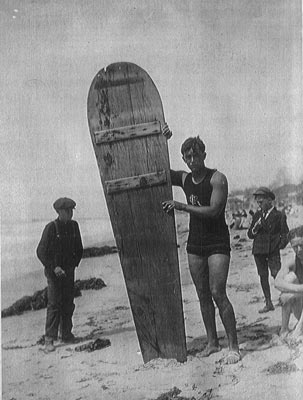 Ford taught me more. "Imagine your legs a rudder," he said. "Hold them close together, and steer with them." A few minutes I came charging in on a comber. As I neared the beach, there in the water, up to her waist, dead in front of me, appeared n woman. How was I to stop that comber on whose back I was ? And then I remembered my guardian angel, Ford. "Steer with your legs!" ran through my reeling consciousness. I steered with my legs, I steered sharply, abruptly, with all my legs and with all my might. The board sheered around broadside on the crest. Many things happened simultaneously. The wave gave me a passing buffet —a light tap, as the taps of waves go, but a tap sufficient to knock me off the board and smash me down through the rushing water to bottom, with which I came in violent collision, and upon which I was rolled over and over. I got my head out for a breath of air, and then gained my feet. There stood the woman before me. I felt like a hero; I had saved her life. Anyway, that leg-steering was great. In a few minutes more of practice I was able to thread my way in and out past several bathers, and to remain on top of my breaker instead of going under it.
Ford taught me more. "Imagine your legs a rudder," he said. "Hold them close together, and steer with them." A few minutes I came charging in on a comber. As I neared the beach, there in the water, up to her waist, dead in front of me, appeared n woman. How was I to stop that comber on whose back I was ? And then I remembered my guardian angel, Ford. "Steer with your legs!" ran through my reeling consciousness. I steered with my legs, I steered sharply, abruptly, with all my legs and with all my might. The board sheered around broadside on the crest. Many things happened simultaneously. The wave gave me a passing buffet —a light tap, as the taps of waves go, but a tap sufficient to knock me off the board and smash me down through the rushing water to bottom, with which I came in violent collision, and upon which I was rolled over and over. I got my head out for a breath of air, and then gained my feet. There stood the woman before me. I felt like a hero; I had saved her life. Anyway, that leg-steering was great. In a few minutes more of practice I was able to thread my way in and out past several bathers, and to remain on top of my breaker instead of going under it.
Right: Jack London in Hawaii, 1907
Next morning, when Ford came along, I plunged into the wonderful water fur a swim of indeterminate length. Astride of our surf-boards, or, rather, lent down upon them on our stomachs, we paddled out in deep water, where the big smokers came roaring it. The mere struggle with them, facing them and paddling seaward over them and through them was sport enough in itself. One had to have his wits about him, for it was a battle in which mighty blows were struck on one side, and in which cunning was used on the other side— a struggle between insensate force and intelligence. I soon learned a bit. When a breaker curled over my head, for a swift instant, I could see the light of day through its emerald body; then down would go my head, and I would clutch the board with all my strength. Then would come the blow, and to the onlooker on shore I would be blotted out. In reality the board and I would have passed through the crest and emerged.in the respite of the other side. I should not recommend those smashing blows to an invalid or delicate person. There is weight behind them, and the impact of the driven water is like a sand-blast. Sometimes one passes through half a dozen combers in quick succession and it is just about that time that he is able to discover new merits in the stable land and new reasons for being on shore. One thing in particular I learned, namely, how to encounter the occasional breaker of exceptional size that rolled in. Such breakers were really ferocious, and it was unsafe to meet them on top of the hoard. But whenever I saw one of that calibre rolling down on me I slid off the rear end of the board and dropped down beneath the surface, my arms over my head, and holding the board. Thus, if the wave ripped the board out of my hands and tried to strike me with it (a common trick of such waves), there would be a cushion of water a foot or more in depth between my head and the blow. When the wave passed, I climbed up on the board and paddled on. Many men have been terribly injured by being struck by their boards. The whole method of surf-riding and surf-fighting, I learned, is one of non resistance. Dodge the blow that is struck at you. Dive through the wave that is trying to slap you in the face. Sink down, feet first, deep under the surface, and let the big smoker that is trying to snatch you go by overhead. Never be rigid. Relax. Yield yourself to the waters that are ripping and tearing at you. When the undertow catches you and drags you seaward along the bottom, don't struggle against it. If you do, you are liable to be drowned, for it^ is stronger than you. Yield yourself to that undertow. Swim with it, not against it, and you will find the pressure removed. And, swimming with it, fooling it so that it does not hold you swim upward at the same time. It will be no trouble at all to reach the surface. The man who wants to learn surfriding must be a strong swimmer, and he must be used to going under the water. After that, fair strength and common sense are all that is required.
Alexander Hume Ford, a travelling journalist is the gentleman referred to in this article. “A Royal Sport” is a chapter in London’s 1911 book, The Cruise of the Snark and was first published in 1907 in The Lady’s Home Companion. - The Jack London Society.
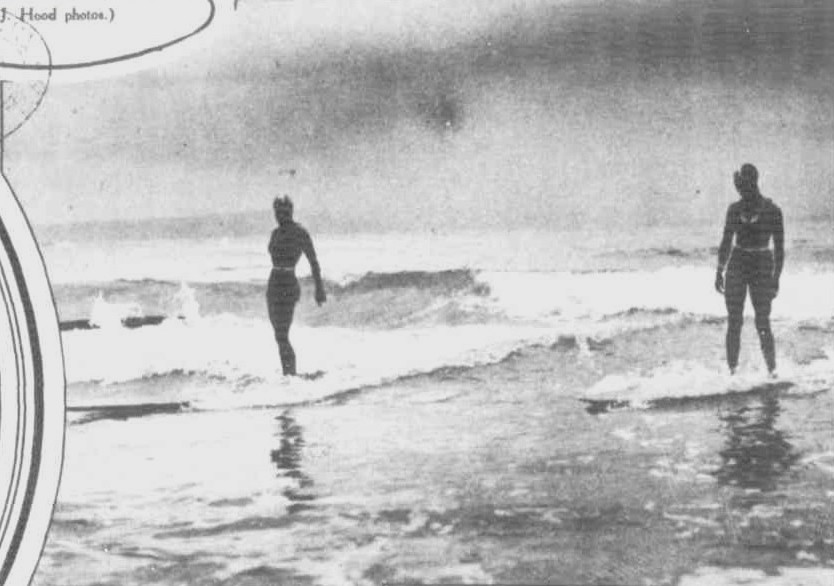
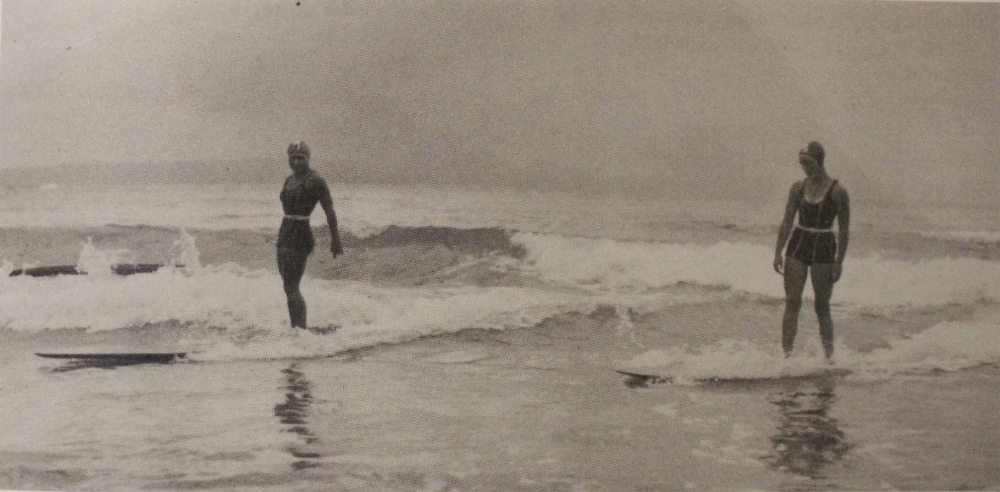
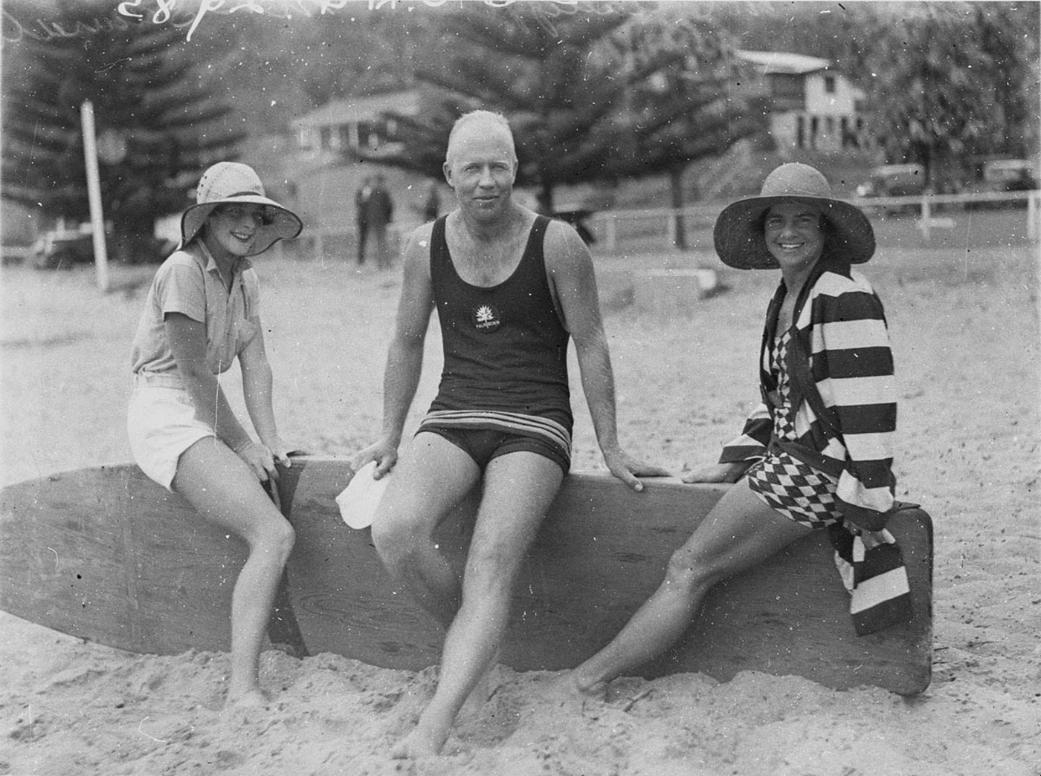
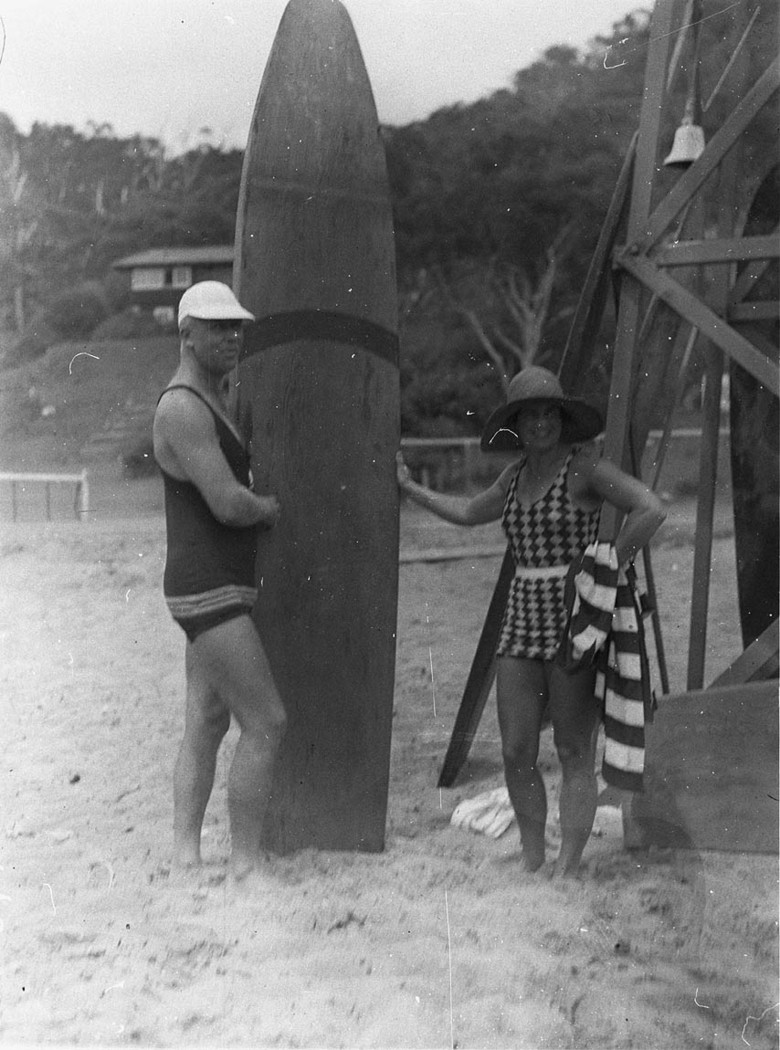
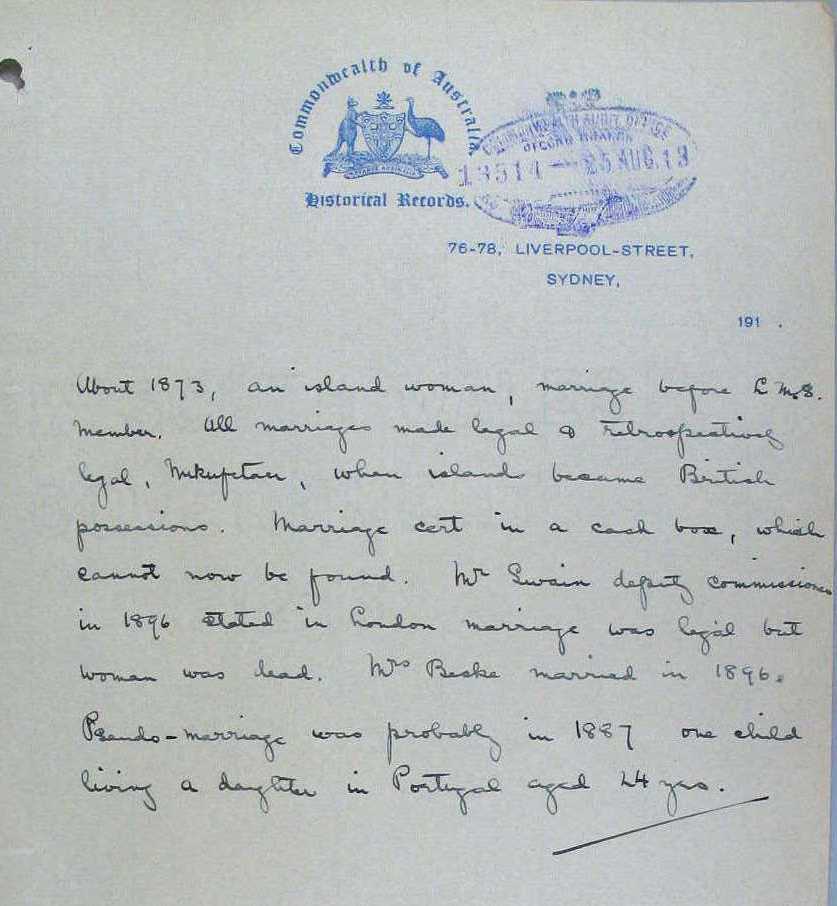
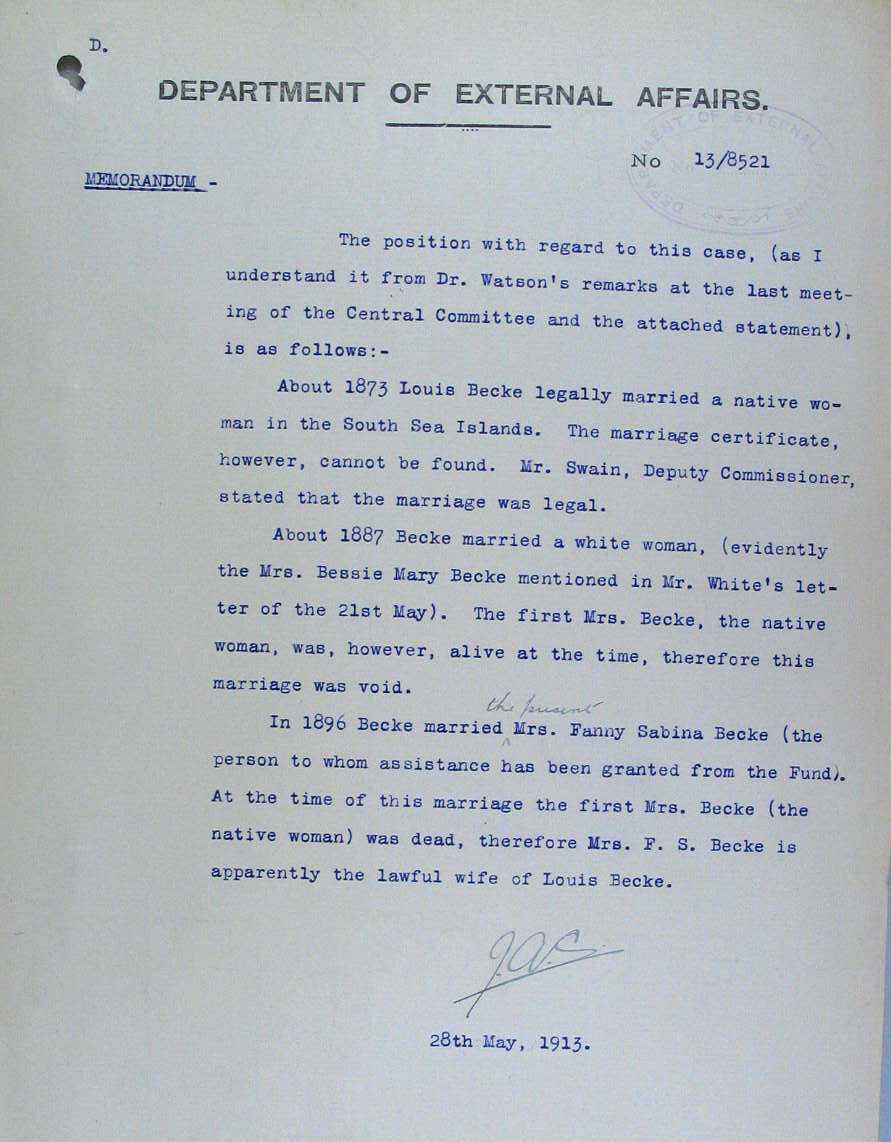
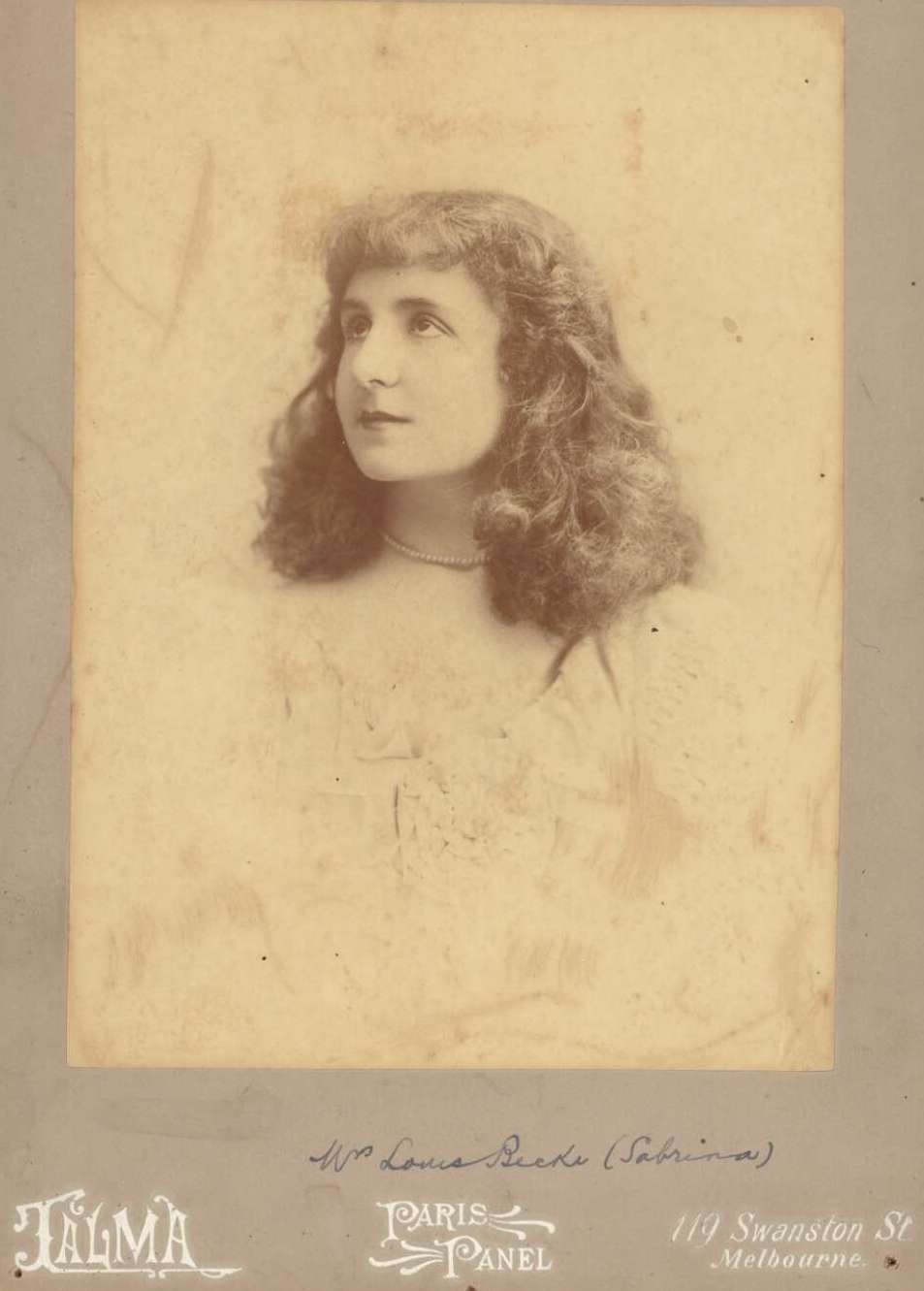
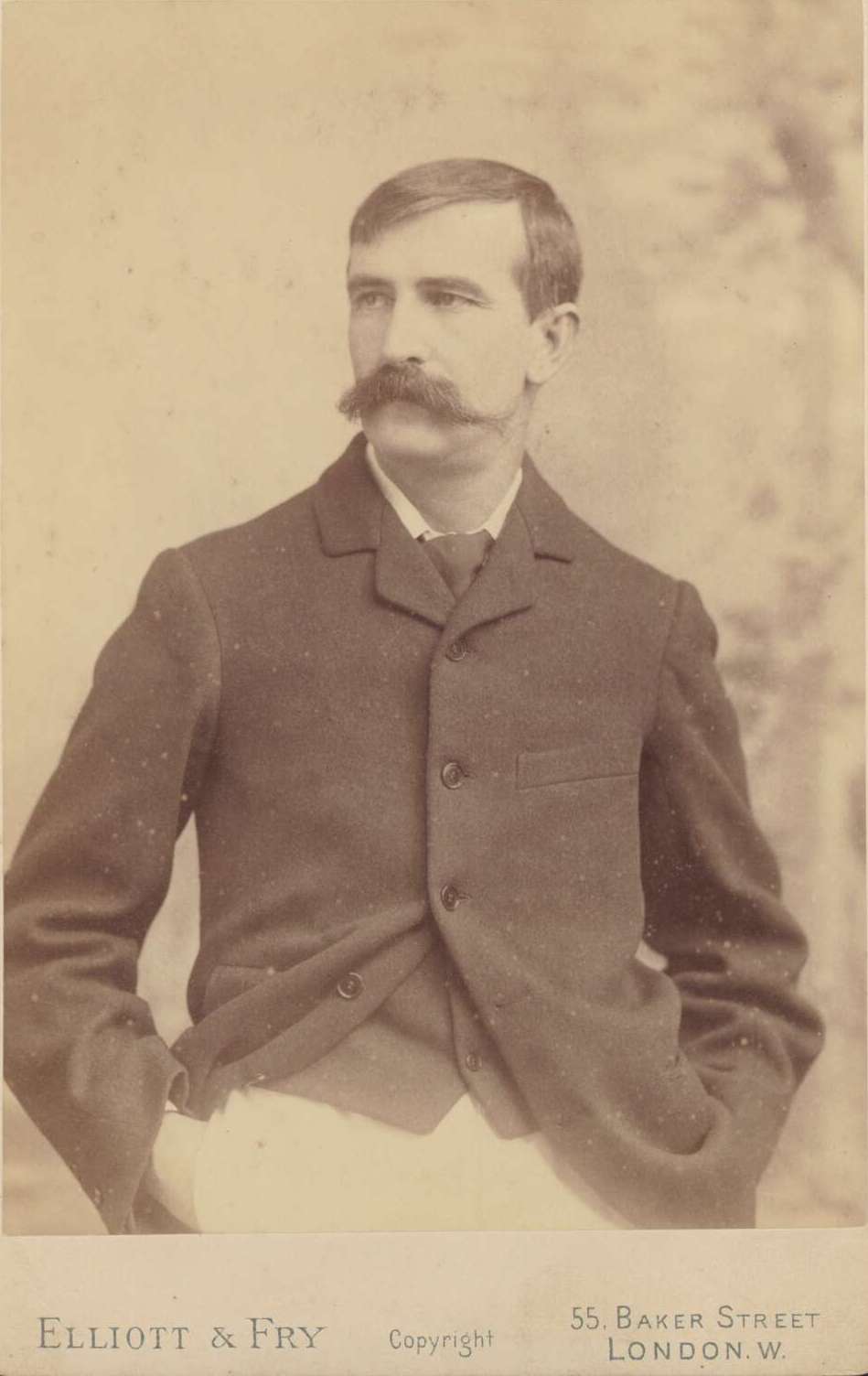
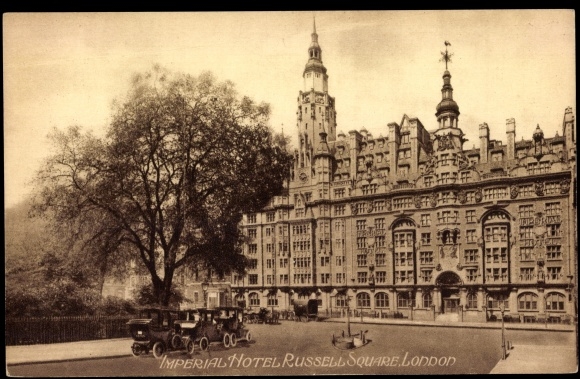
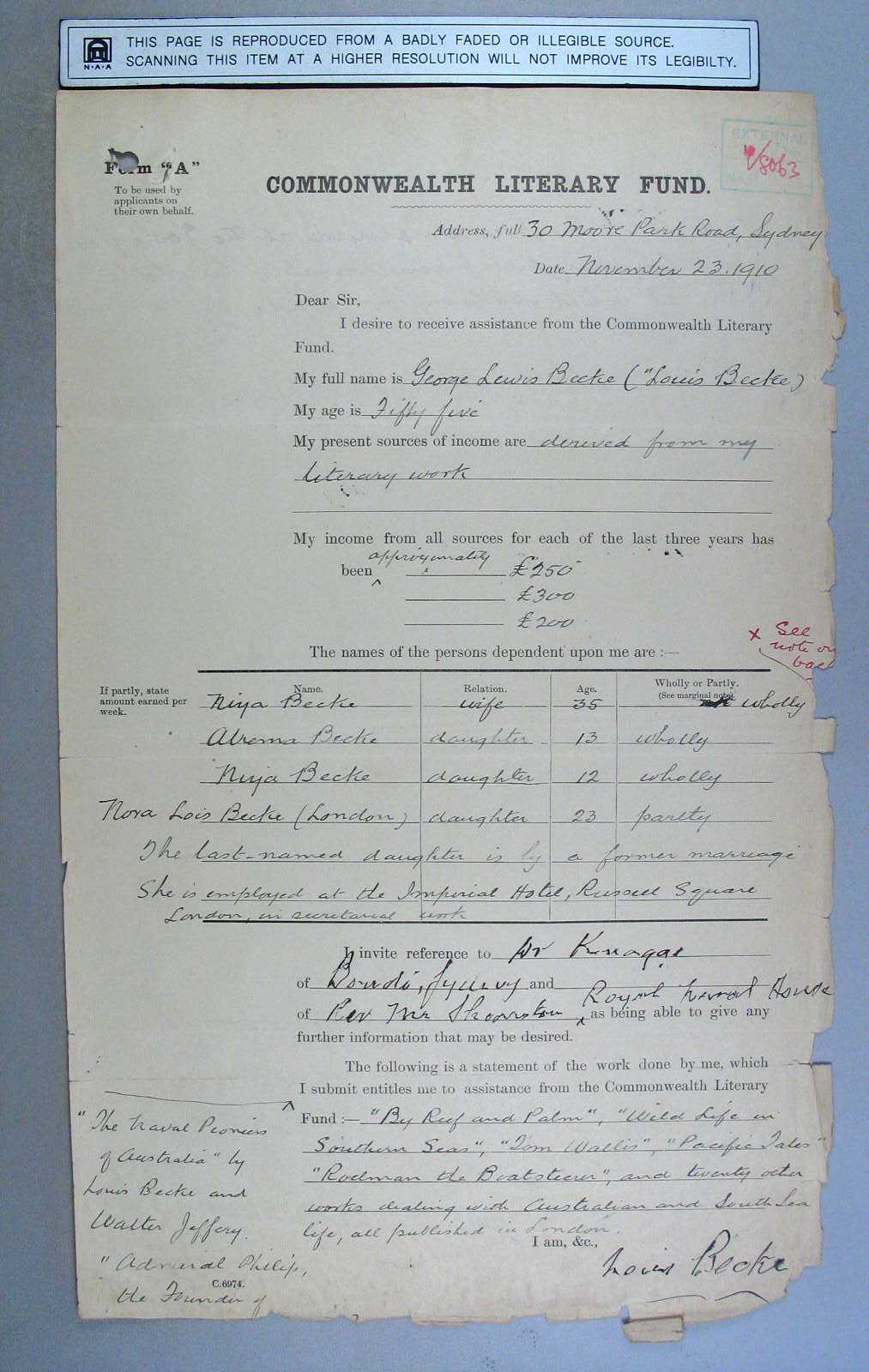
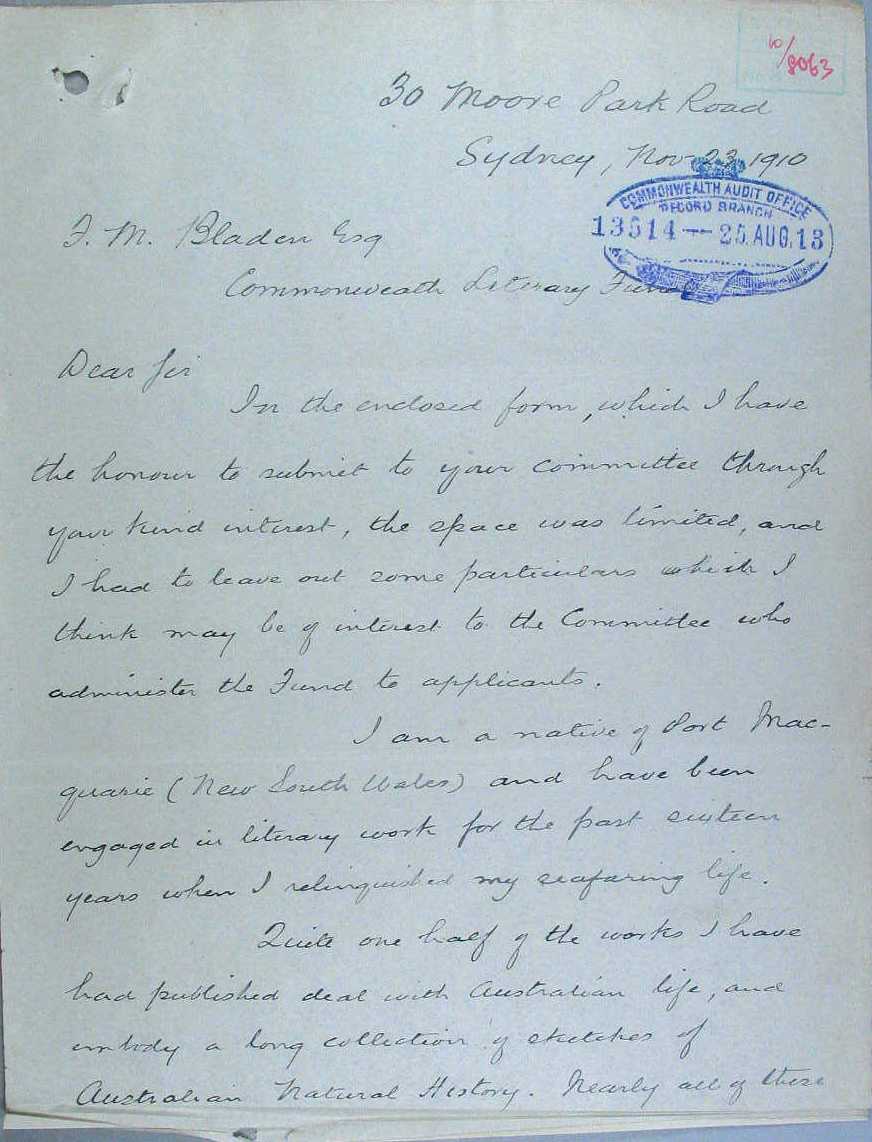
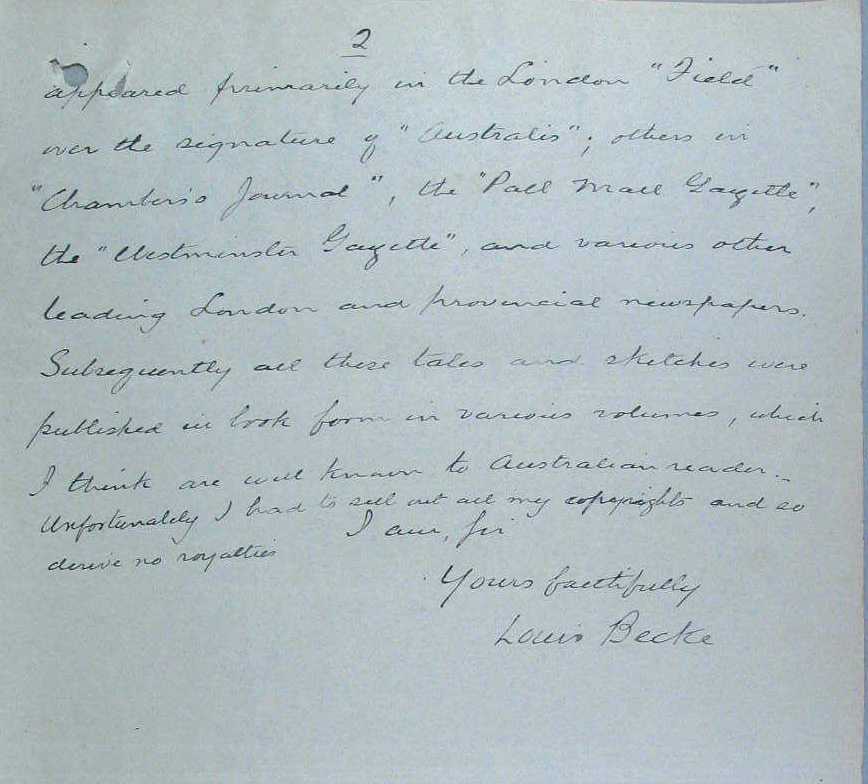
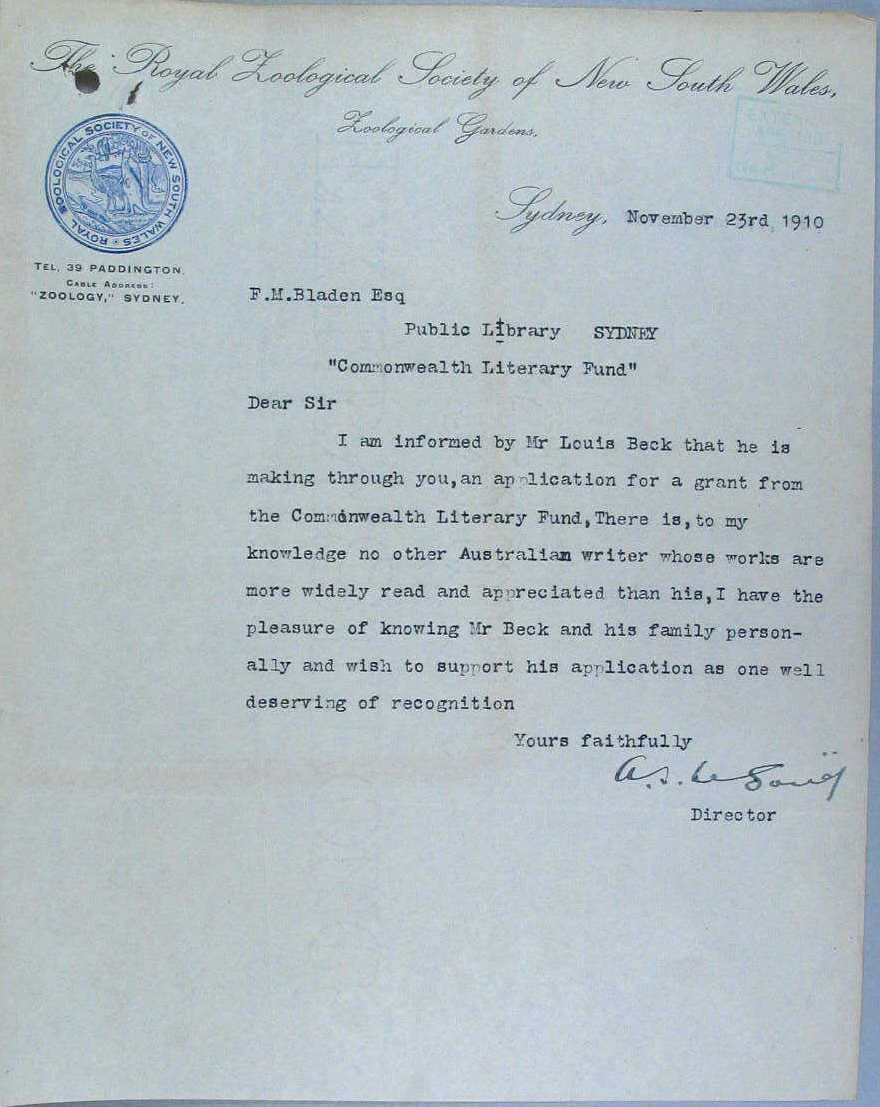
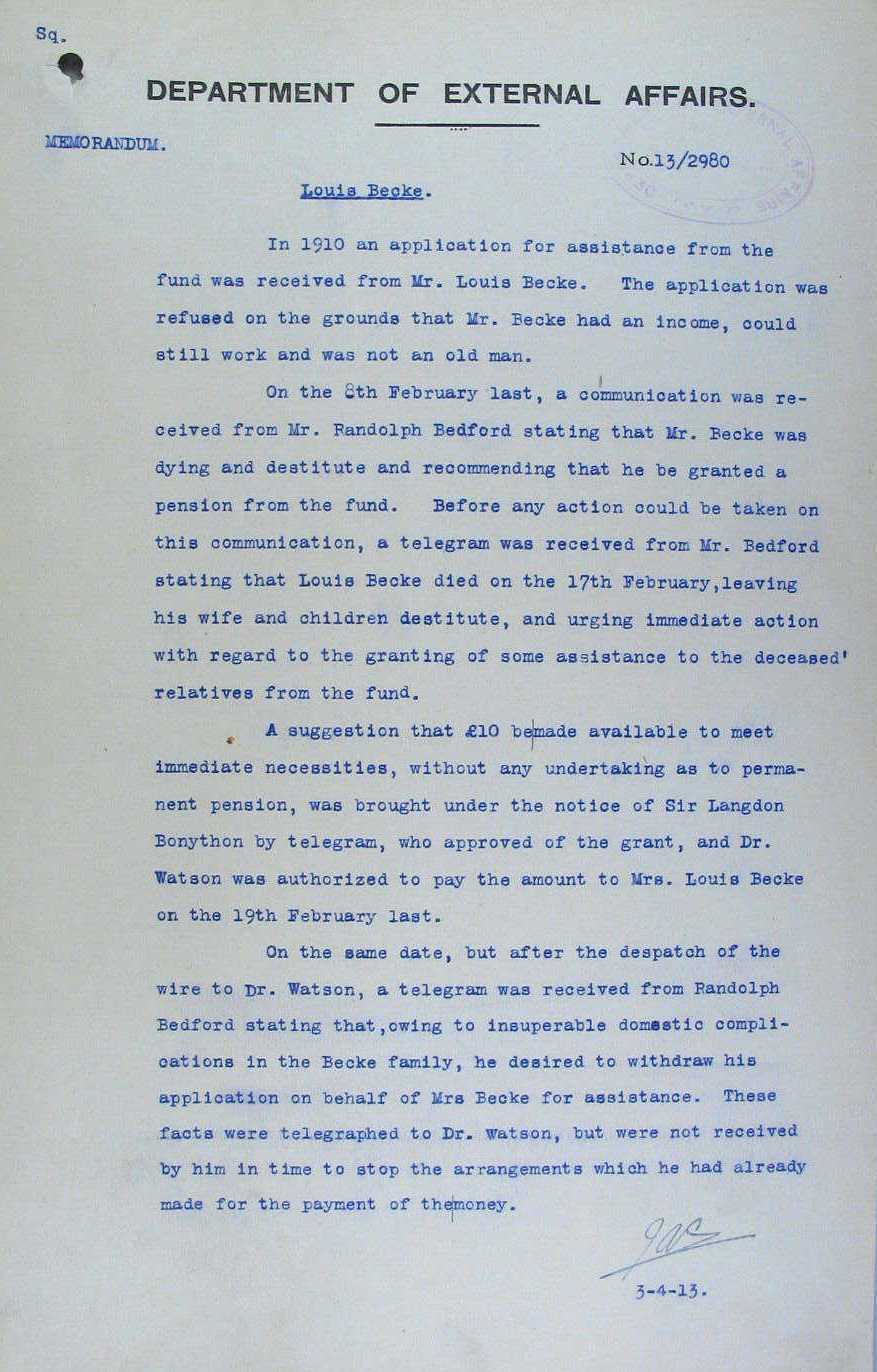
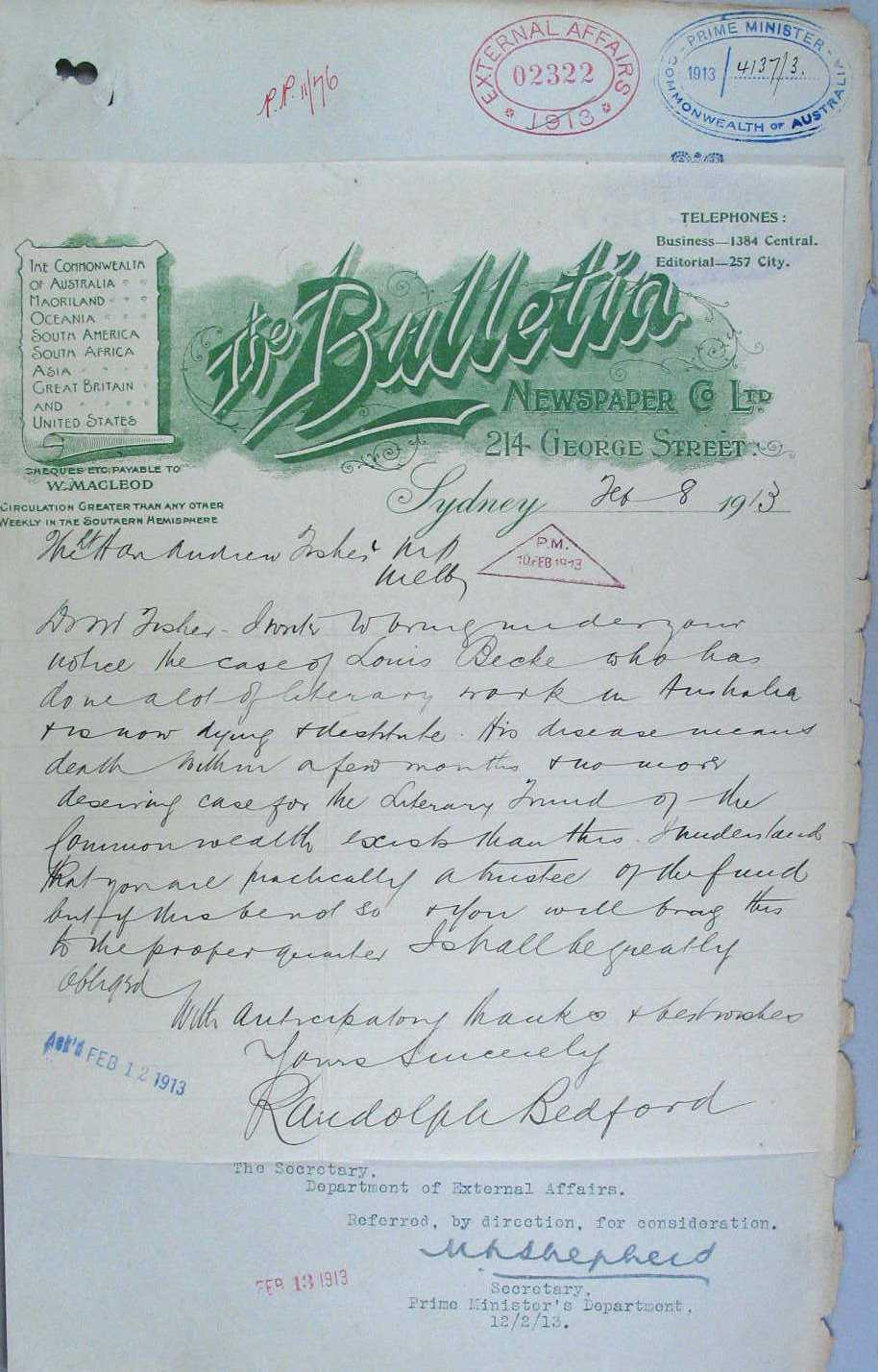
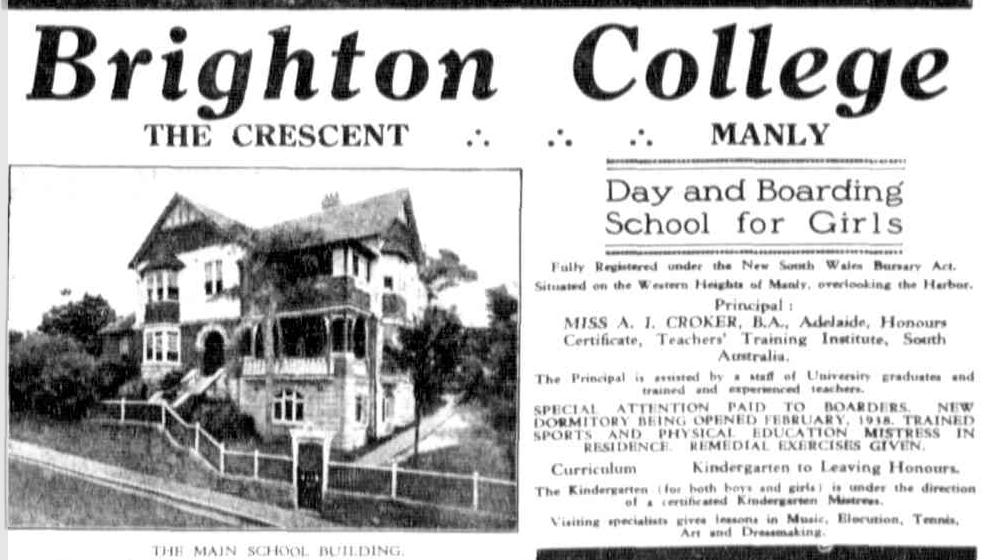
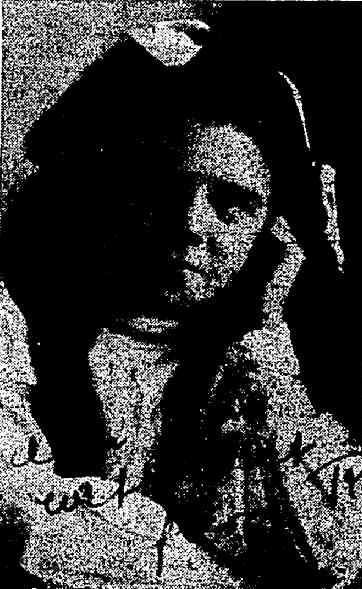
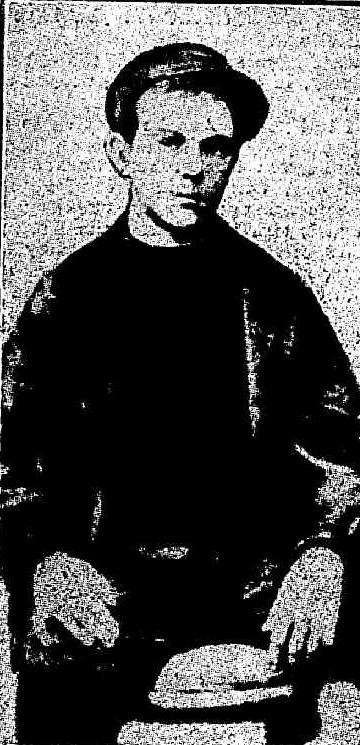
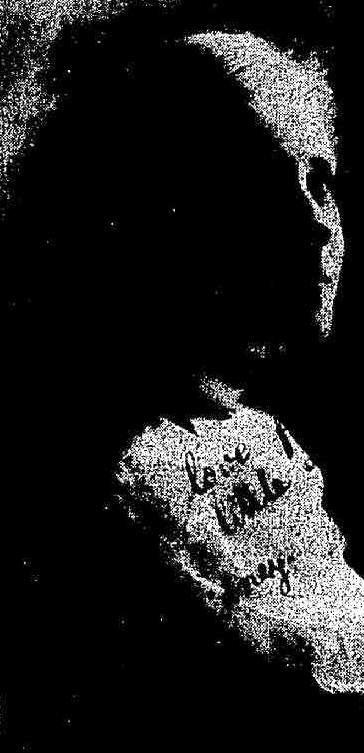
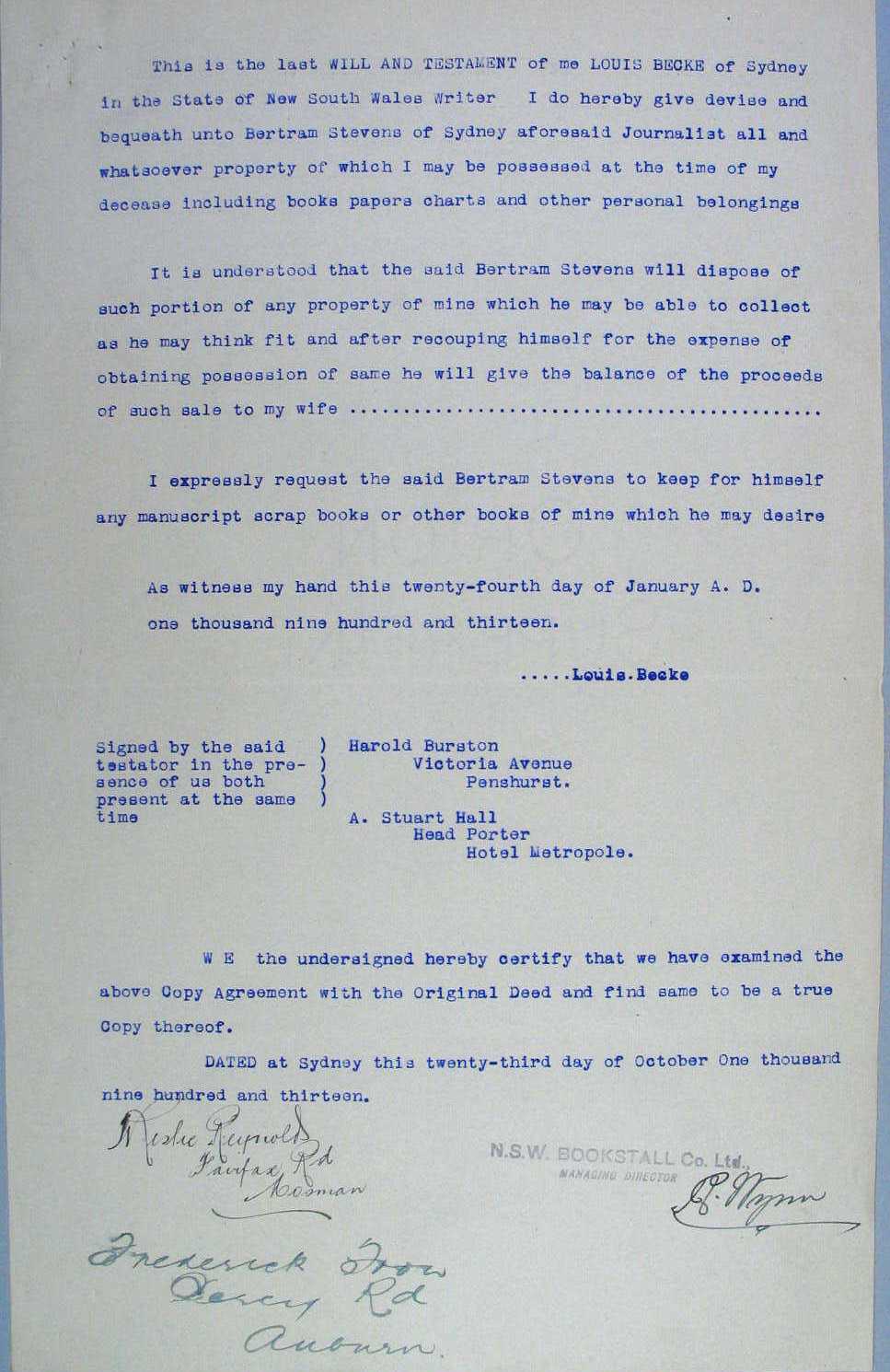
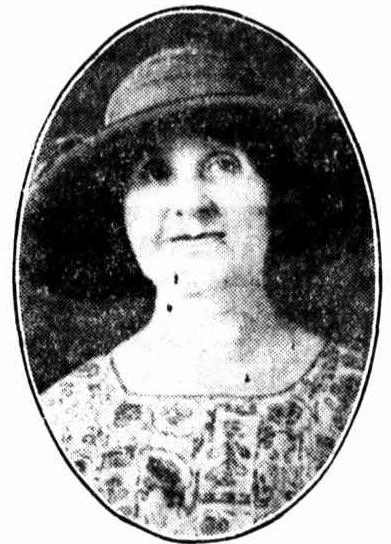
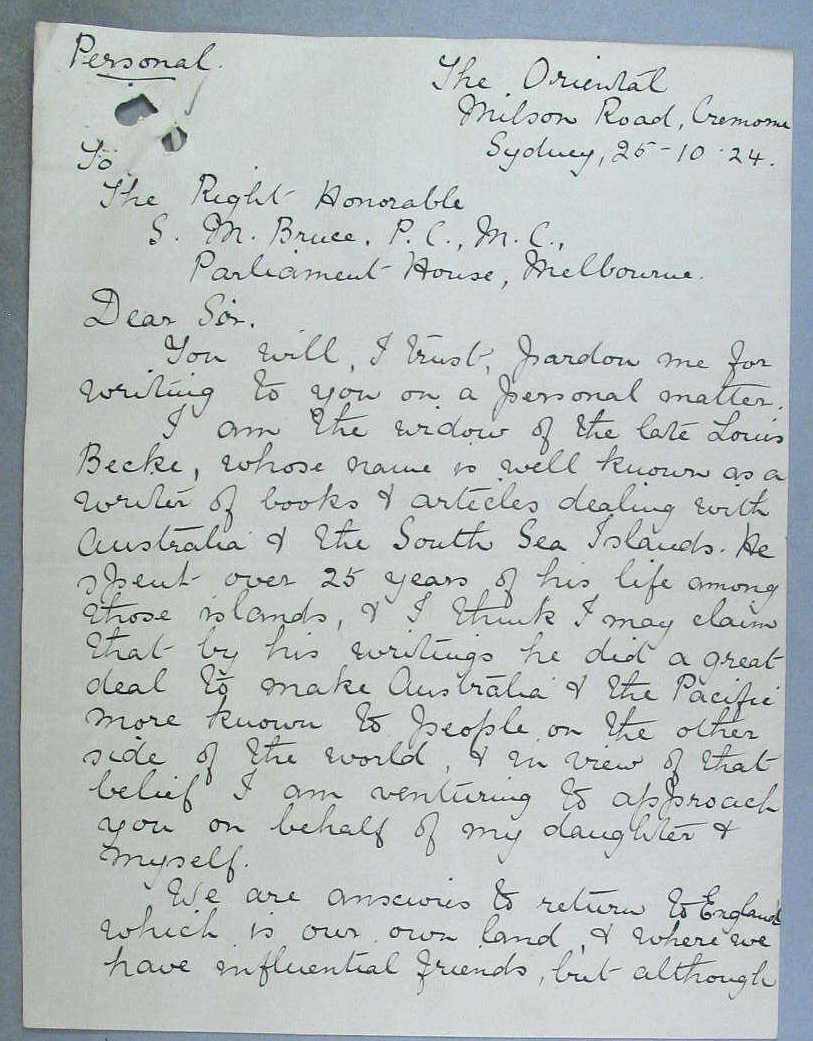
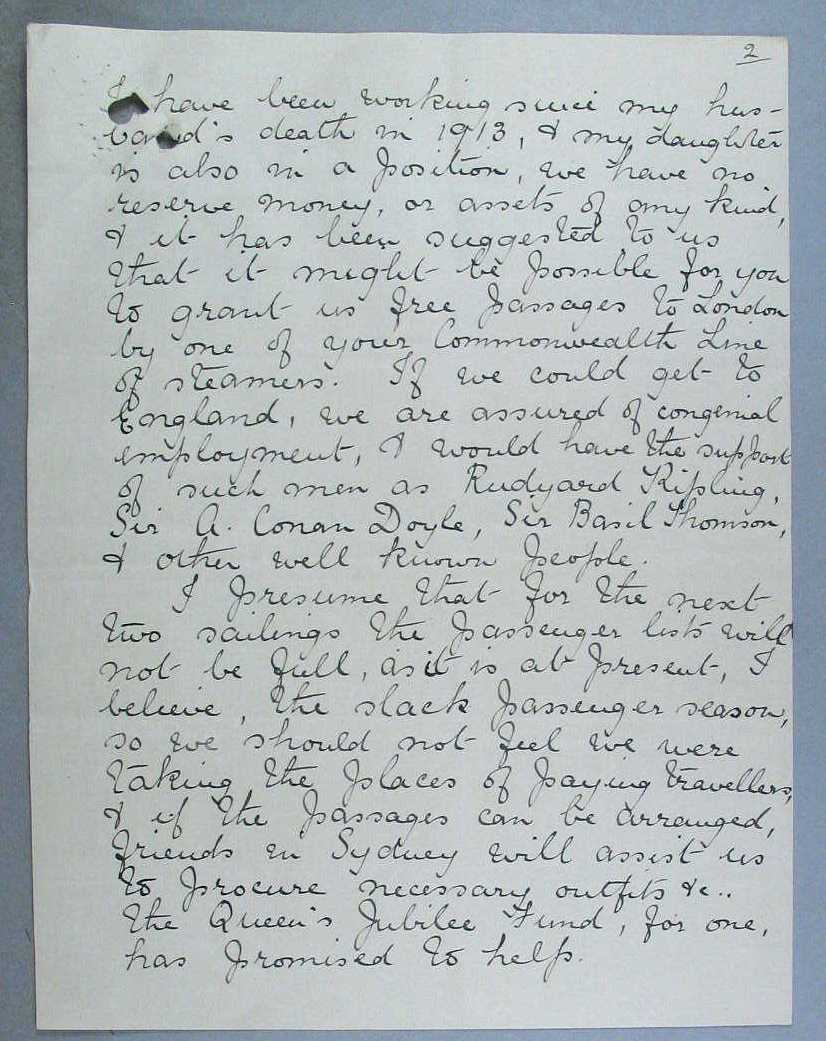
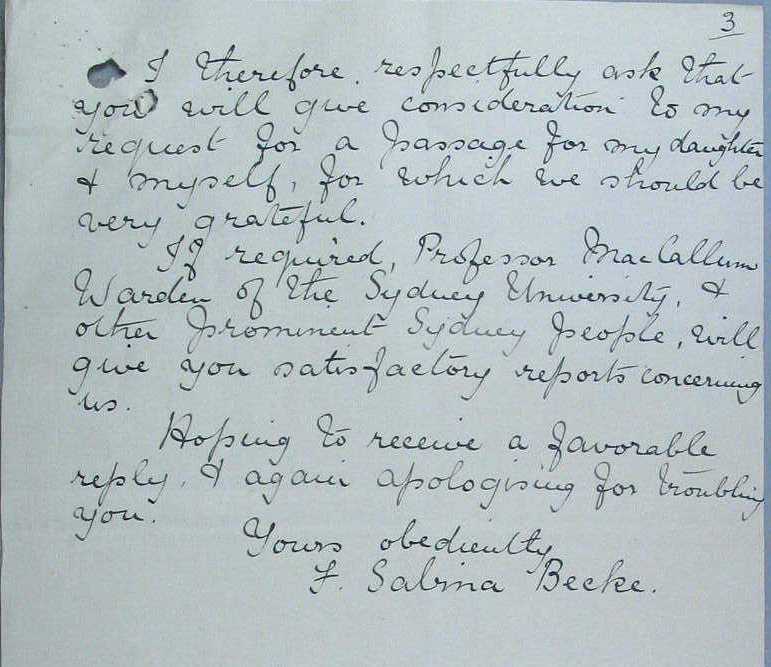
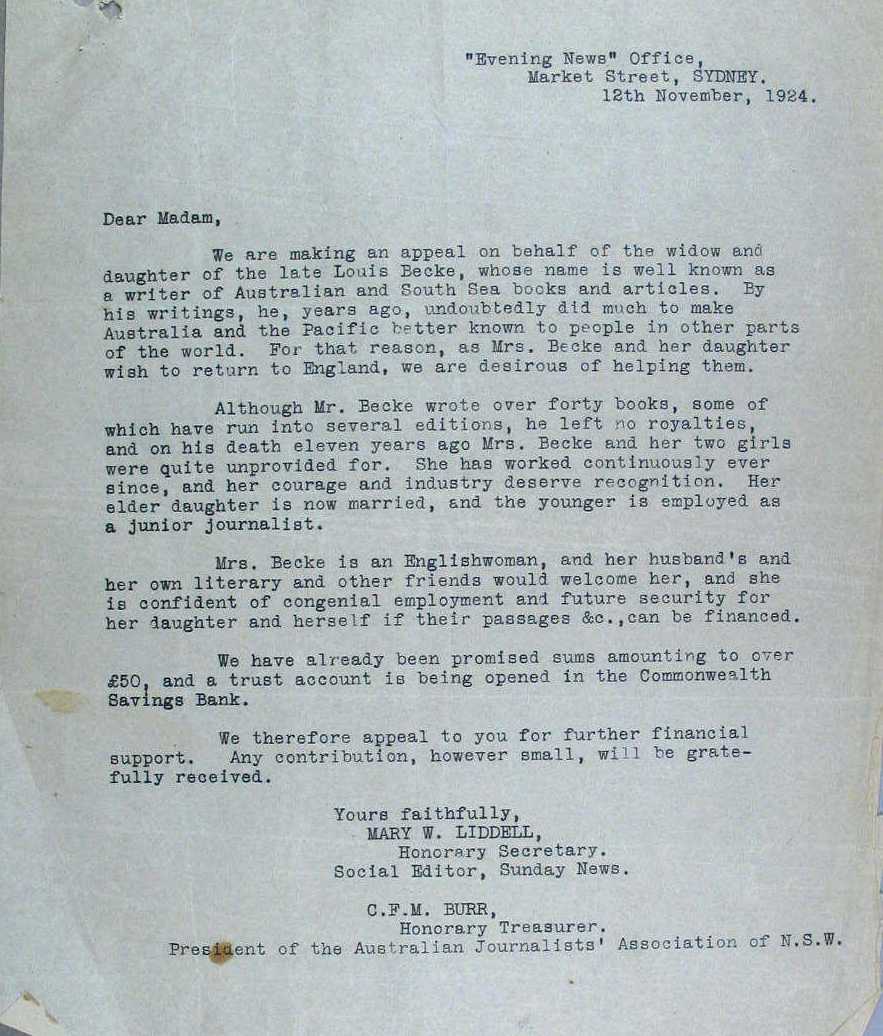
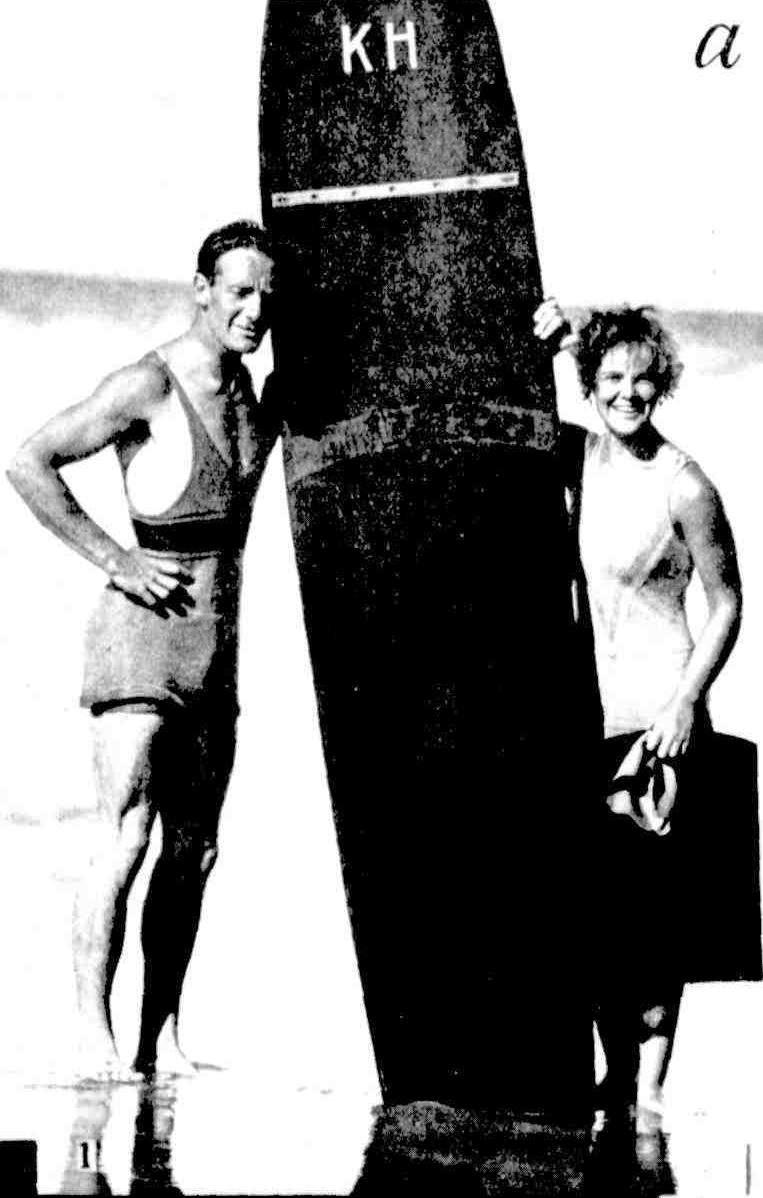
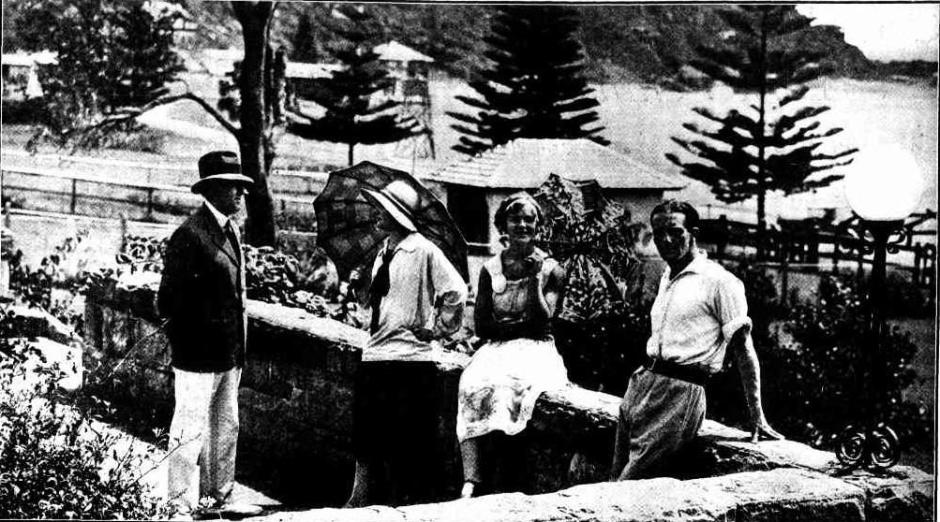
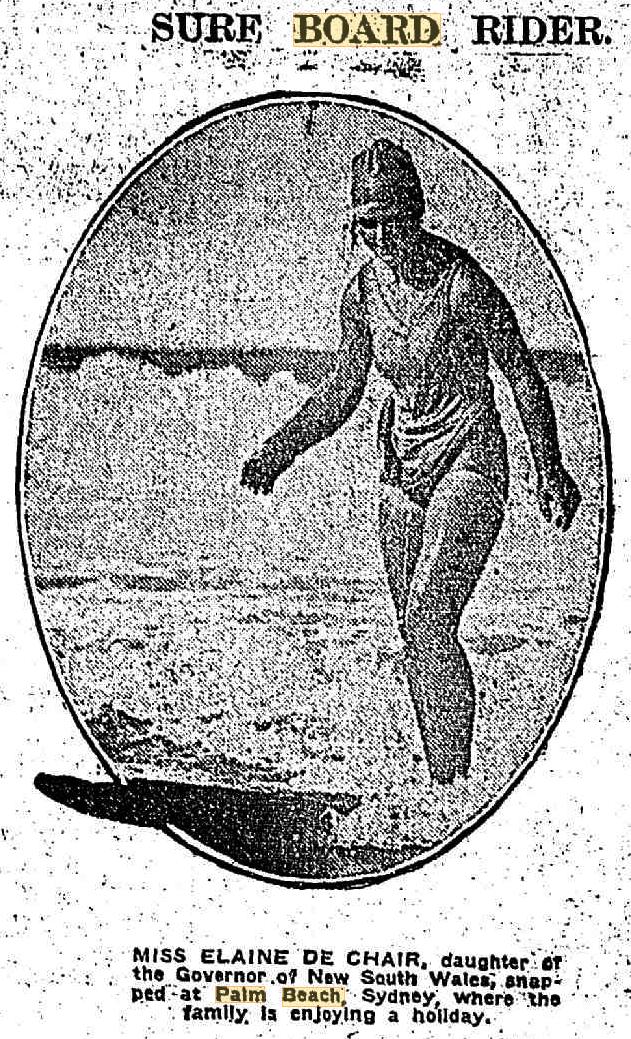
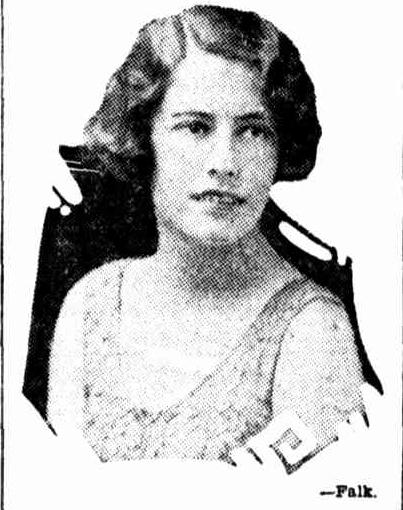
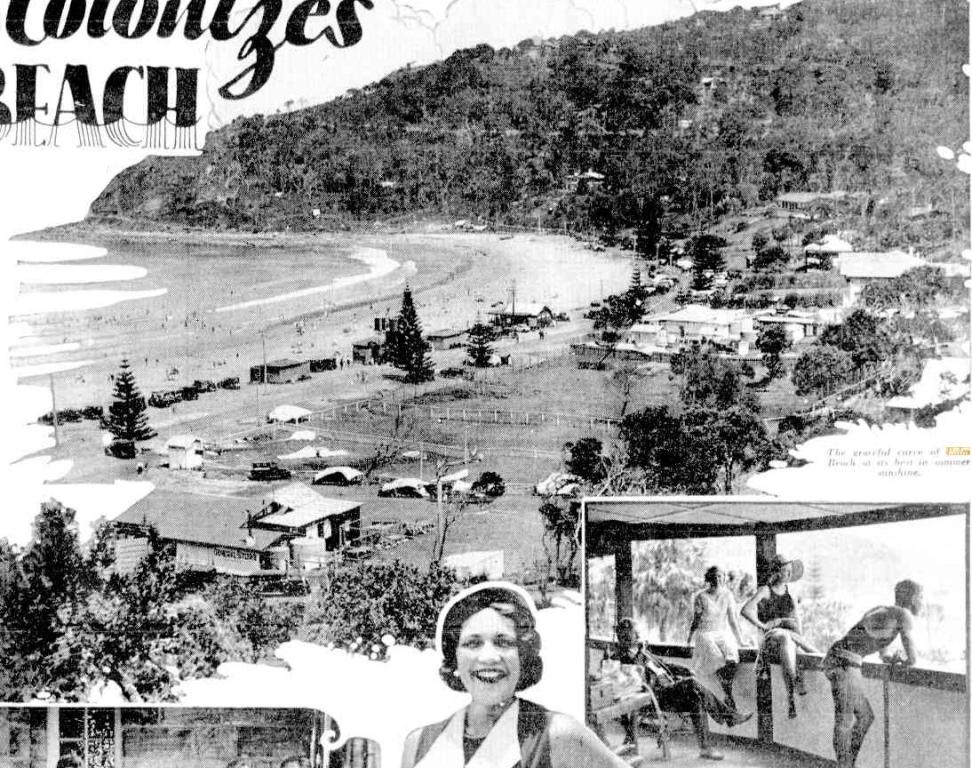
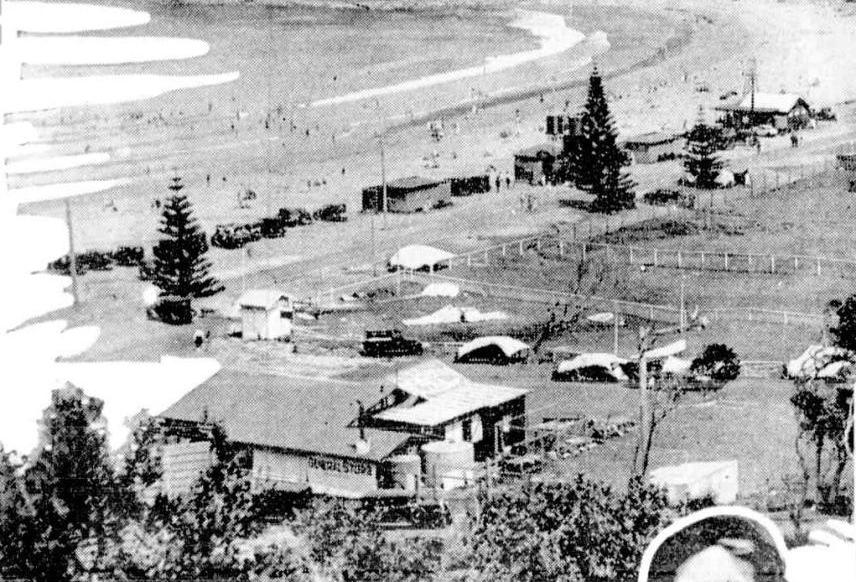
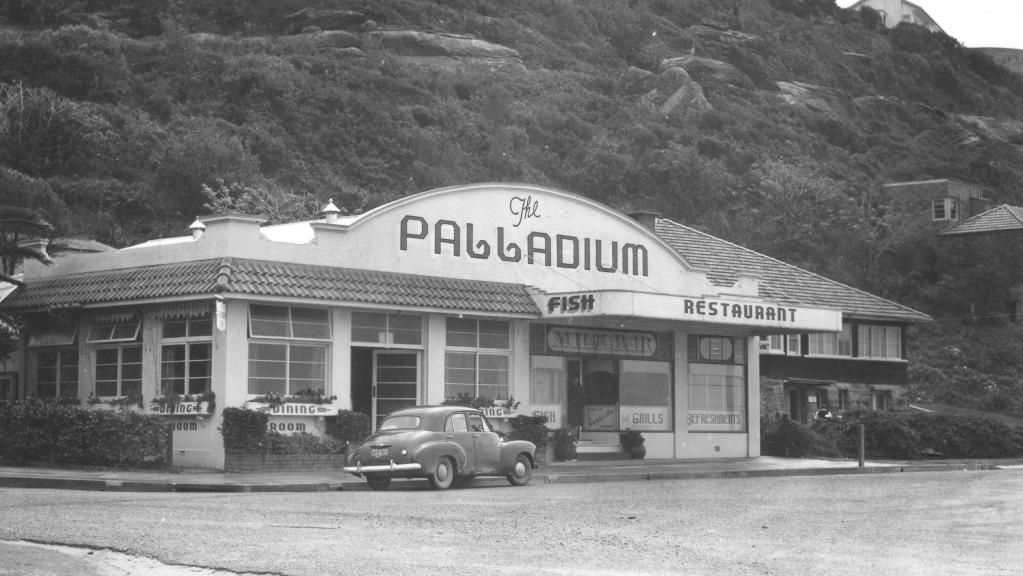
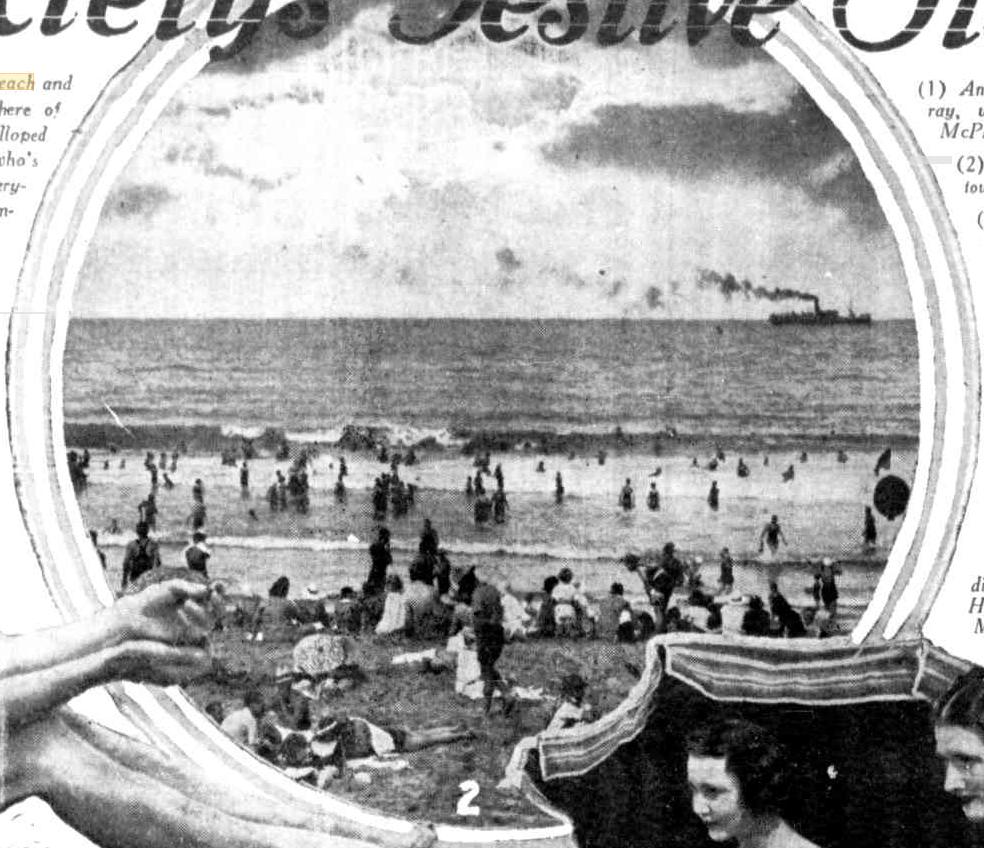
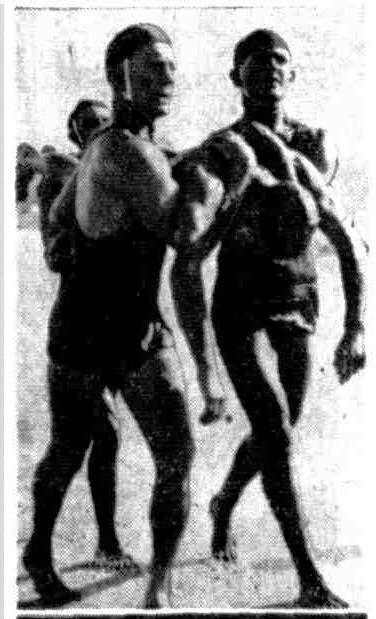
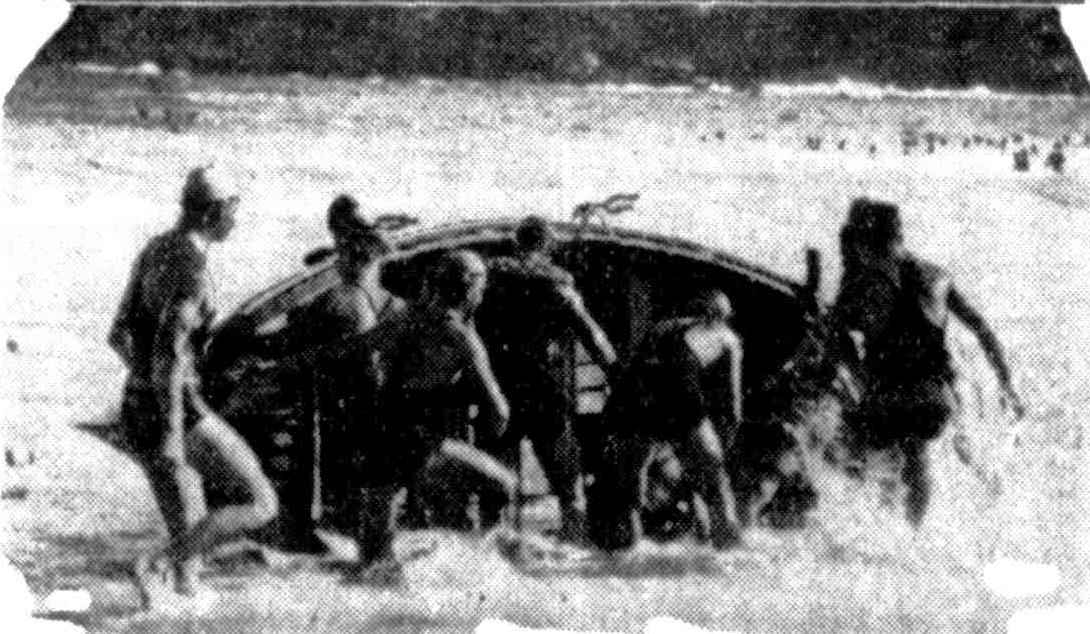
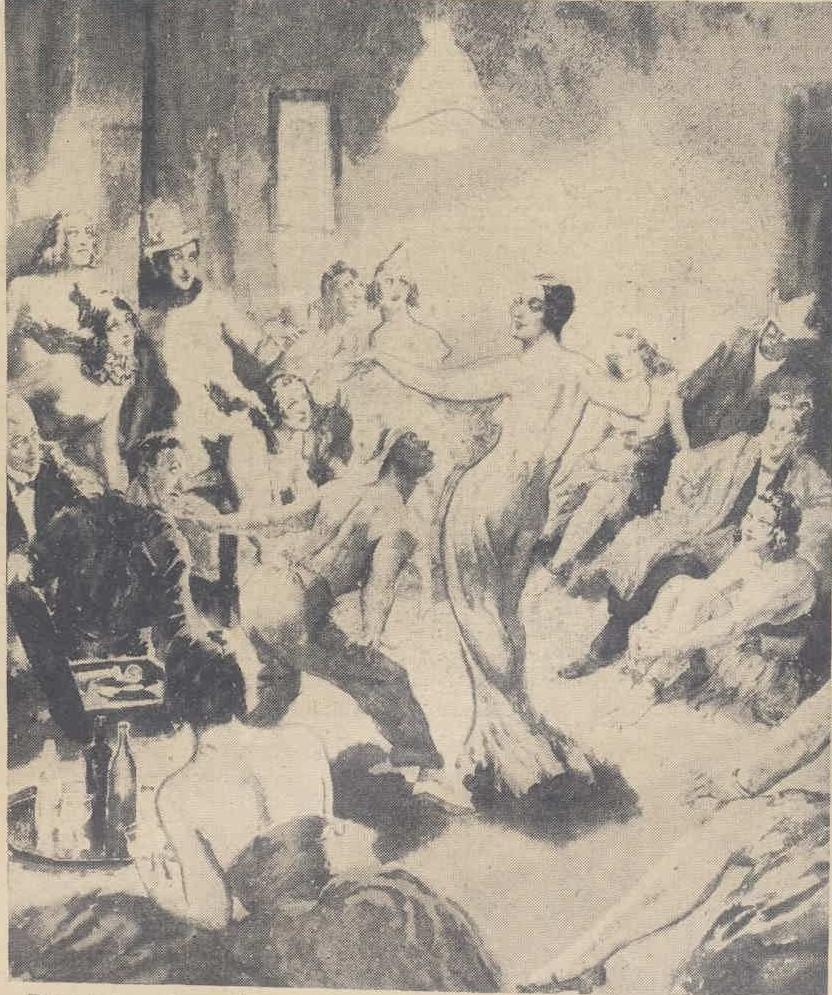
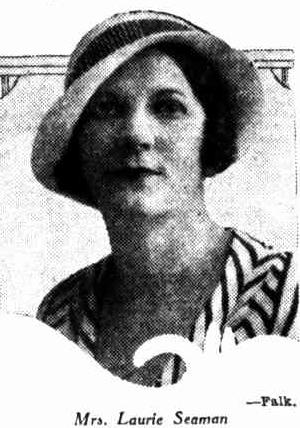
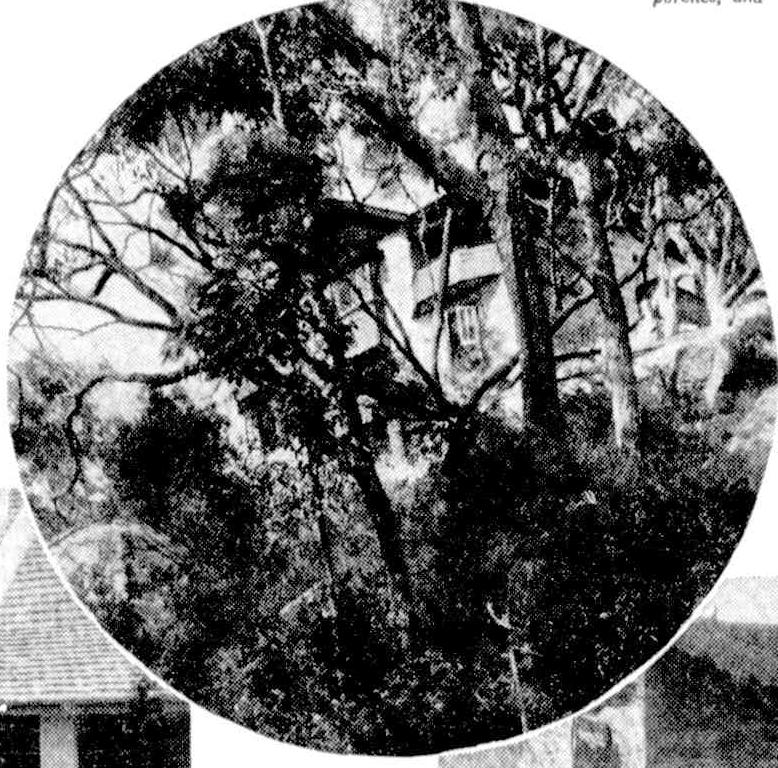
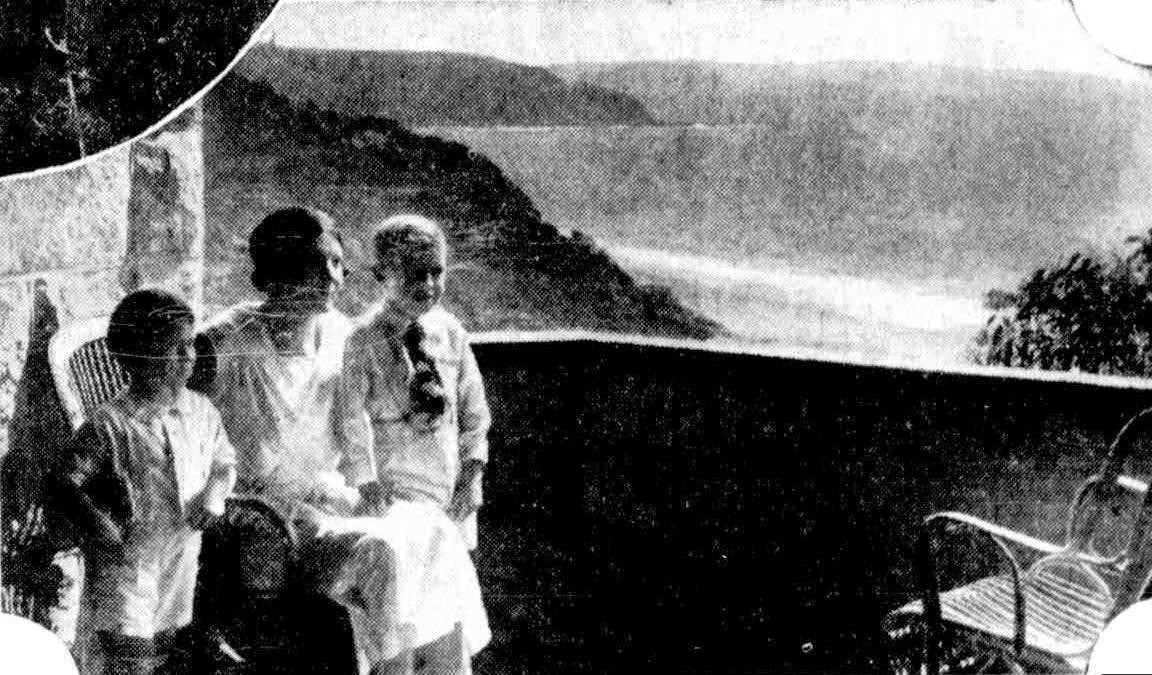
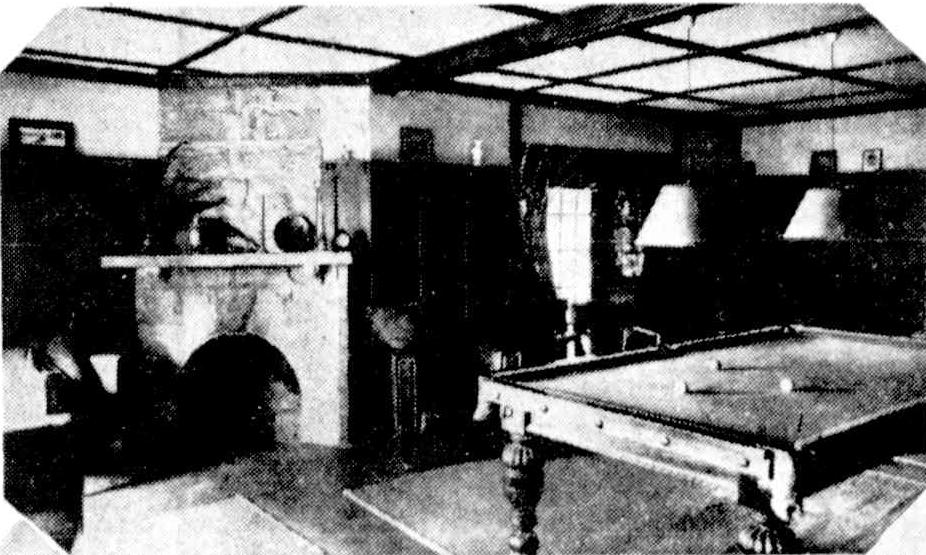
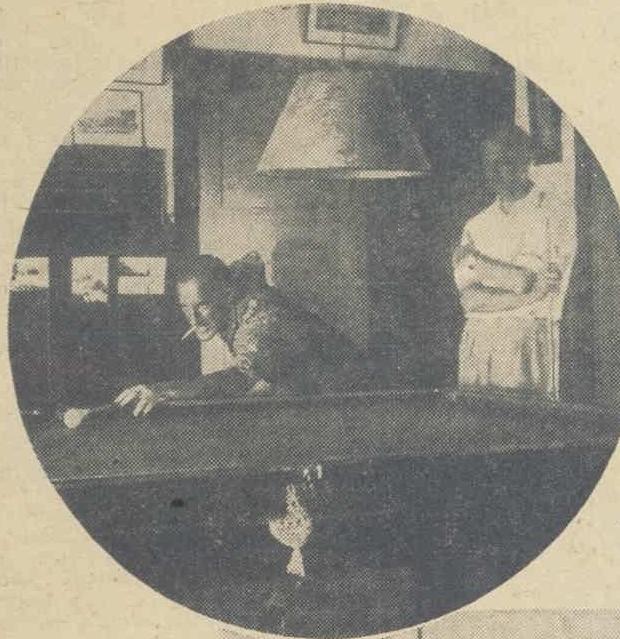
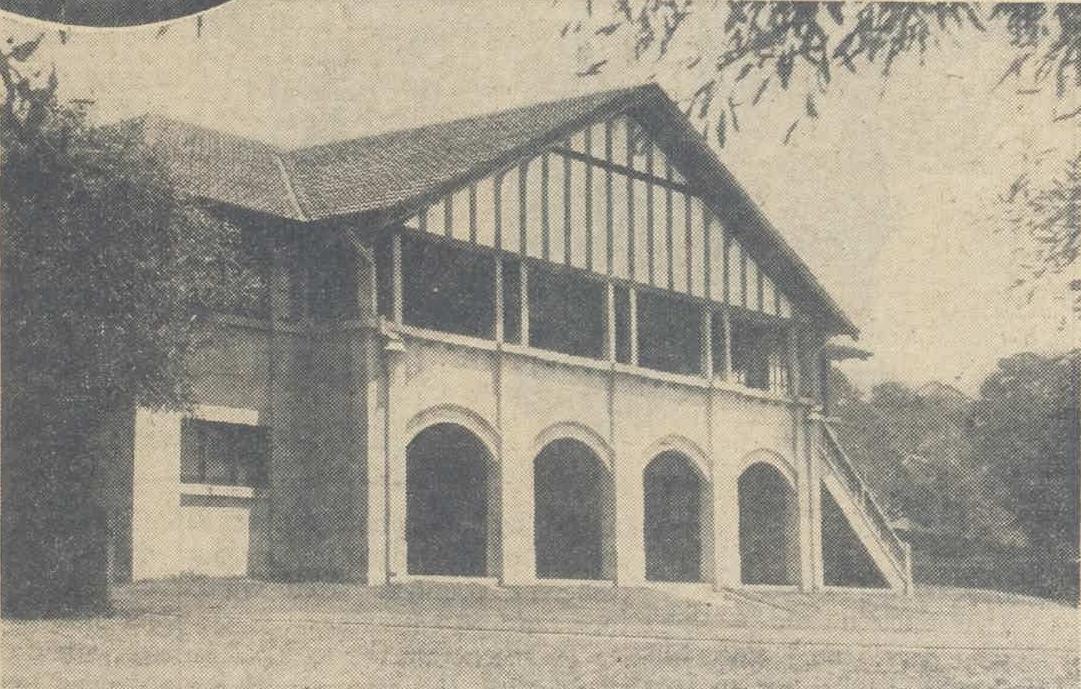
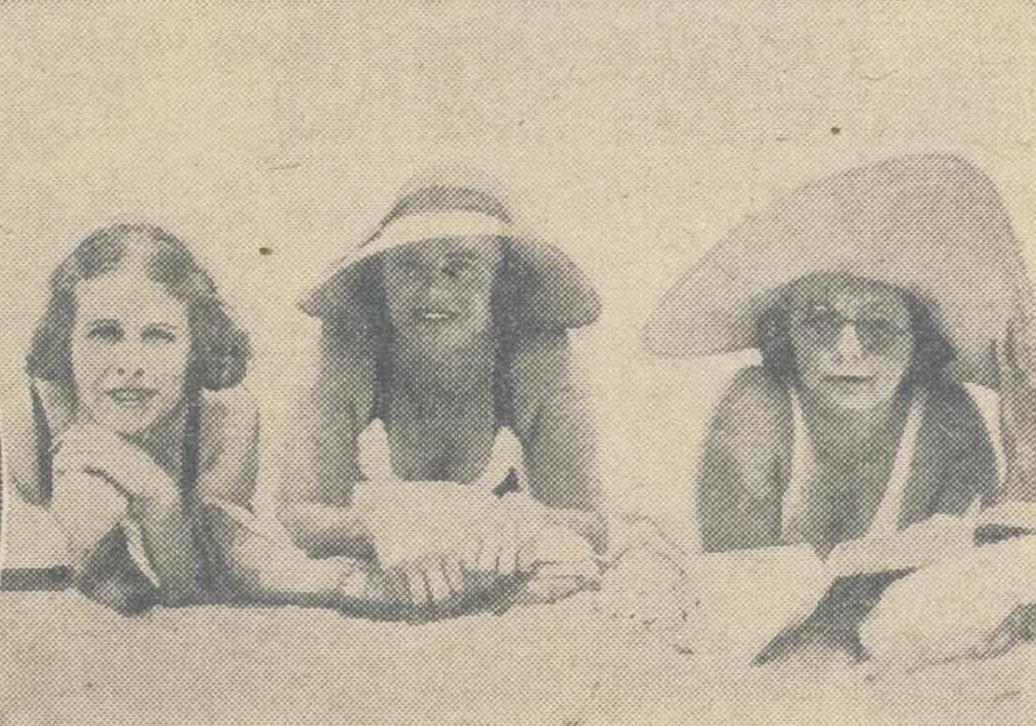
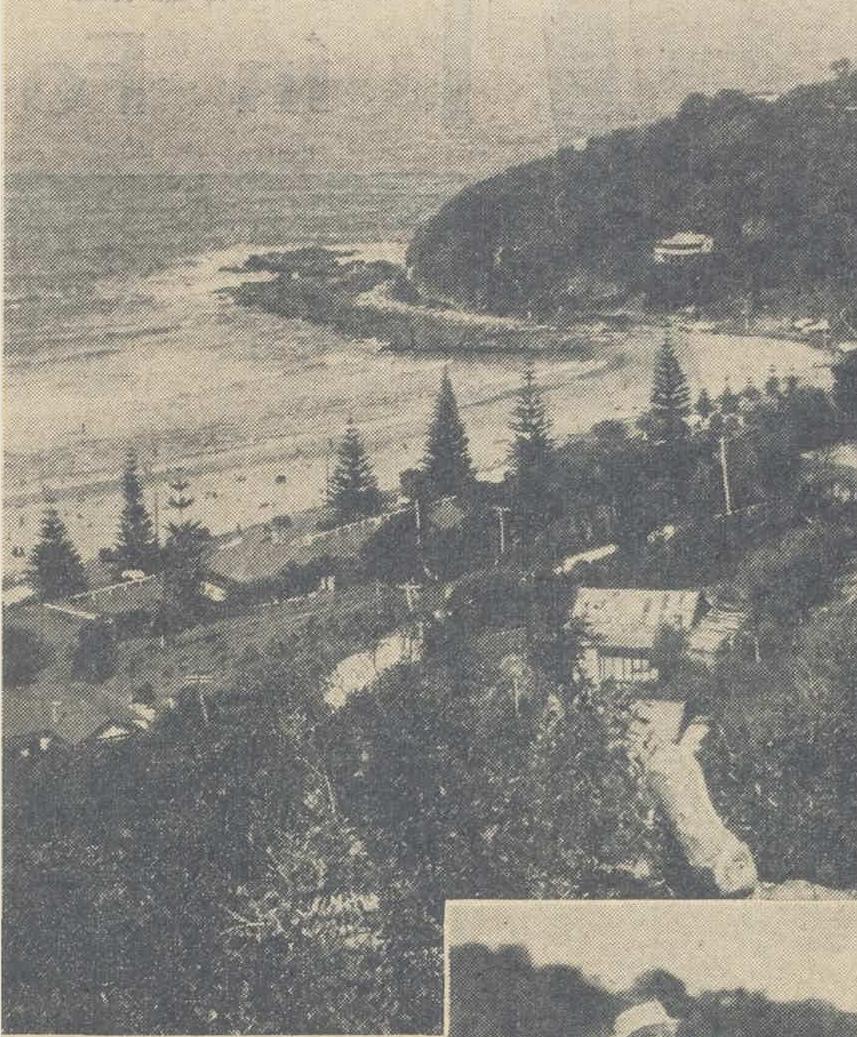
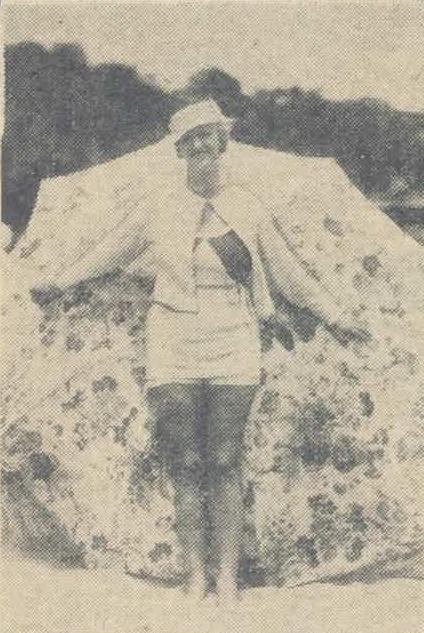
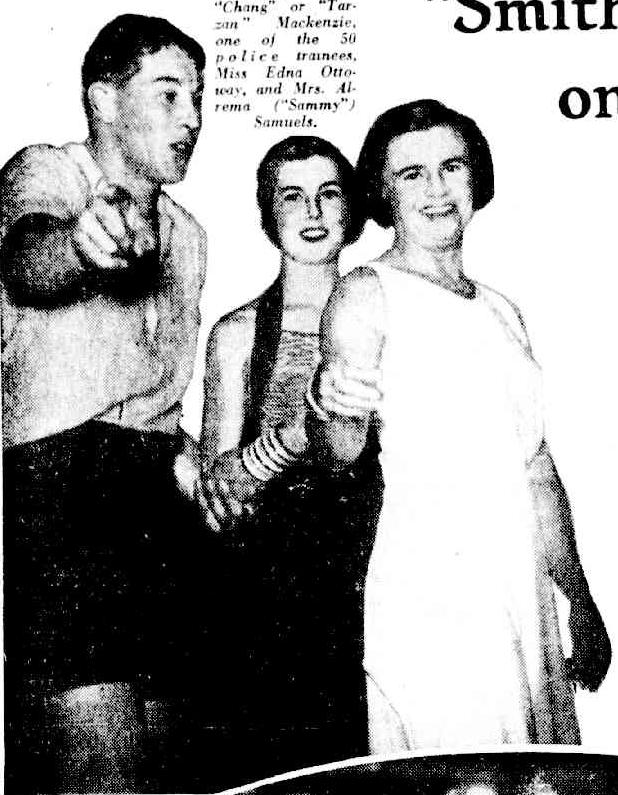
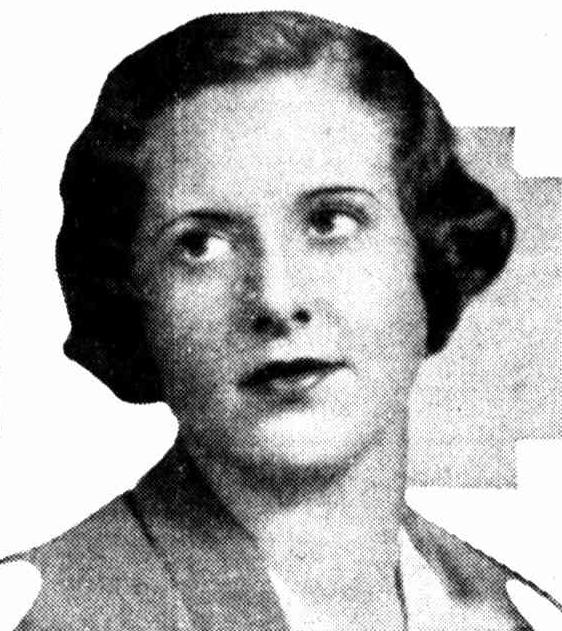
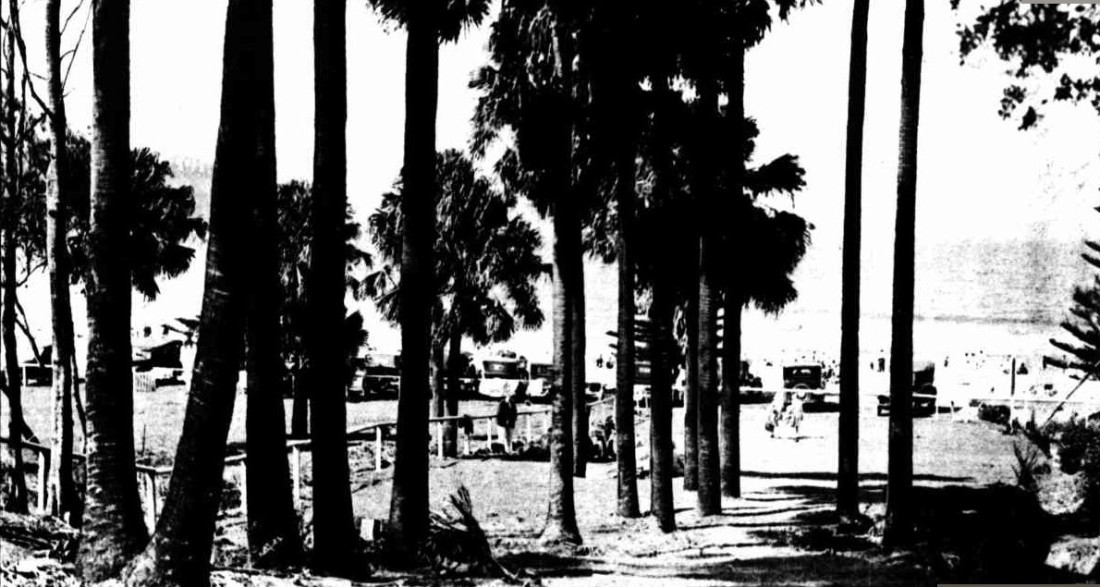
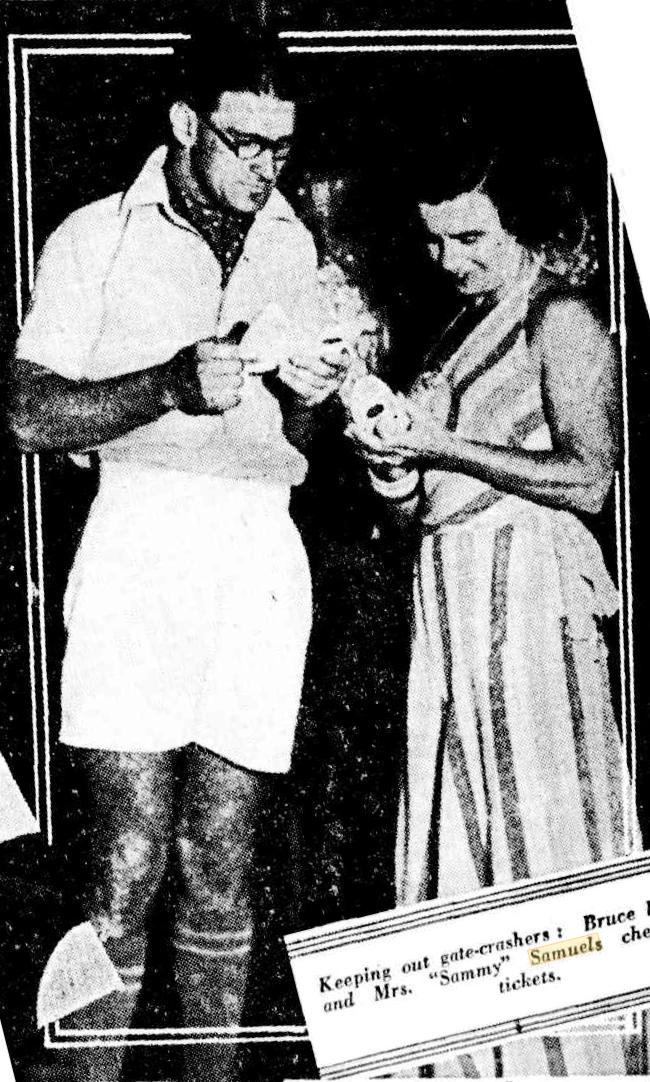
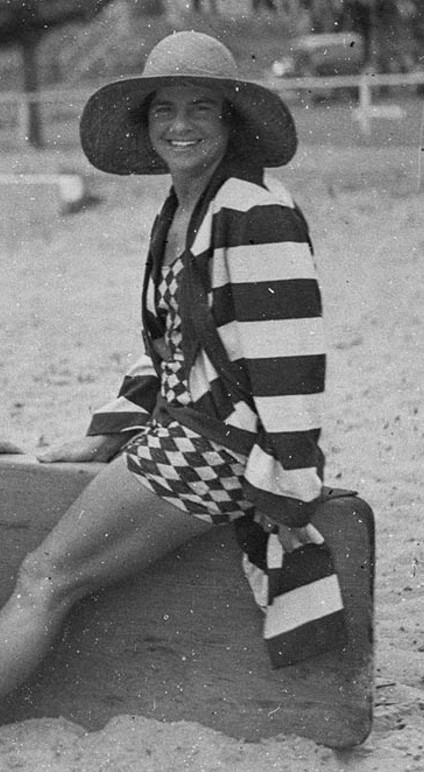 SAMMY, otherwise MRS. ALMYRA SAMUELS, best woman surf board expert in Australia, who is burnt the color of mahogany, and whose skin is beginning to assume leather-like appearance, tried to look official in a trouser suit of green and brown-striped silk as she checked "the tickets at the door, but as she is one of the identities of the Beach she didn't always succeed. Added to her troubles was the fact that she had developed laryngitis, so that young men who had sampled the fare in-': the beer garden were often inclined to believe that she was whispering sweet nothing's to them when all "SAMMY" wanted was for them to eject a gate crasher or two.
SAMMY, otherwise MRS. ALMYRA SAMUELS, best woman surf board expert in Australia, who is burnt the color of mahogany, and whose skin is beginning to assume leather-like appearance, tried to look official in a trouser suit of green and brown-striped silk as she checked "the tickets at the door, but as she is one of the identities of the Beach she didn't always succeed. Added to her troubles was the fact that she had developed laryngitis, so that young men who had sampled the fare in-': the beer garden were often inclined to believe that she was whispering sweet nothing's to them when all "SAMMY" wanted was for them to eject a gate crasher or two. 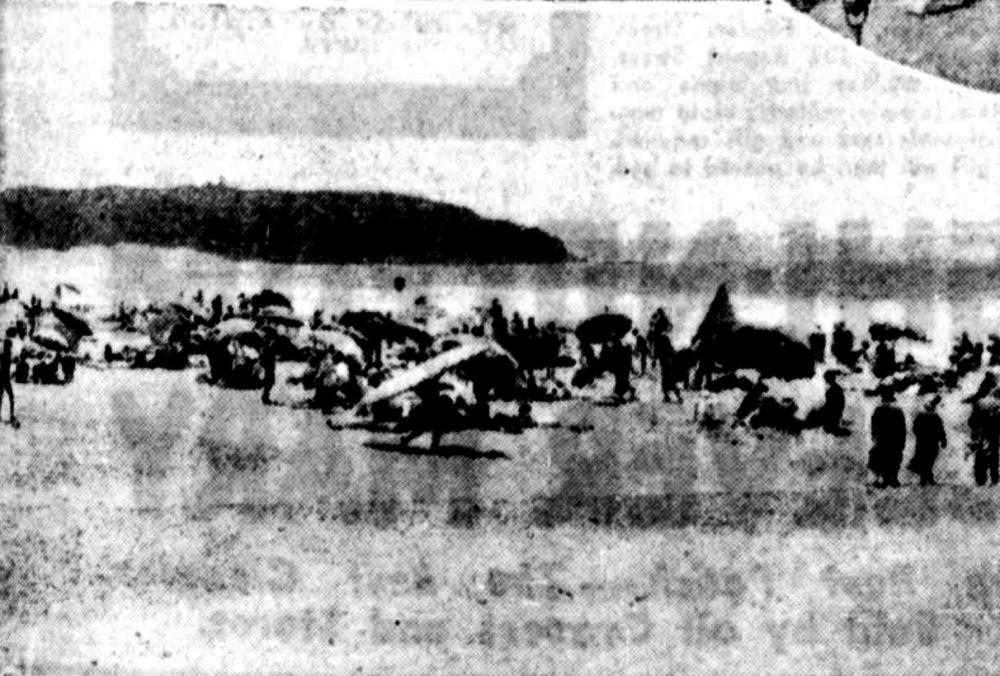
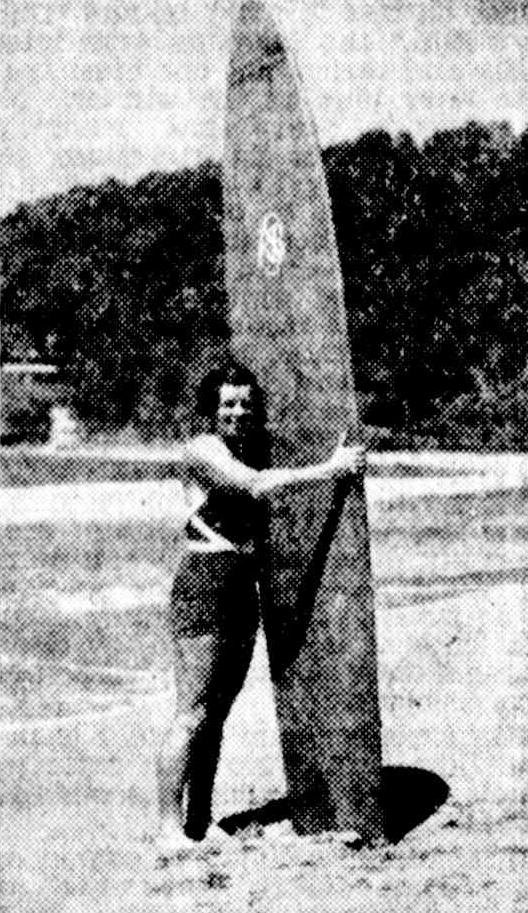
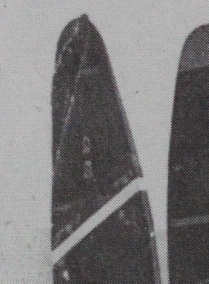
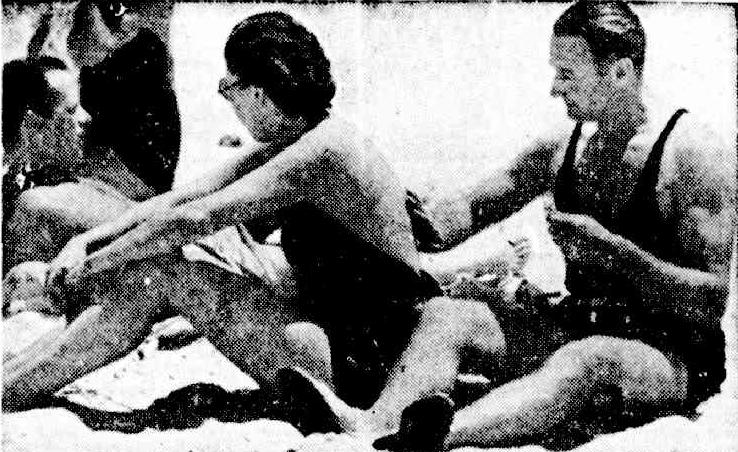
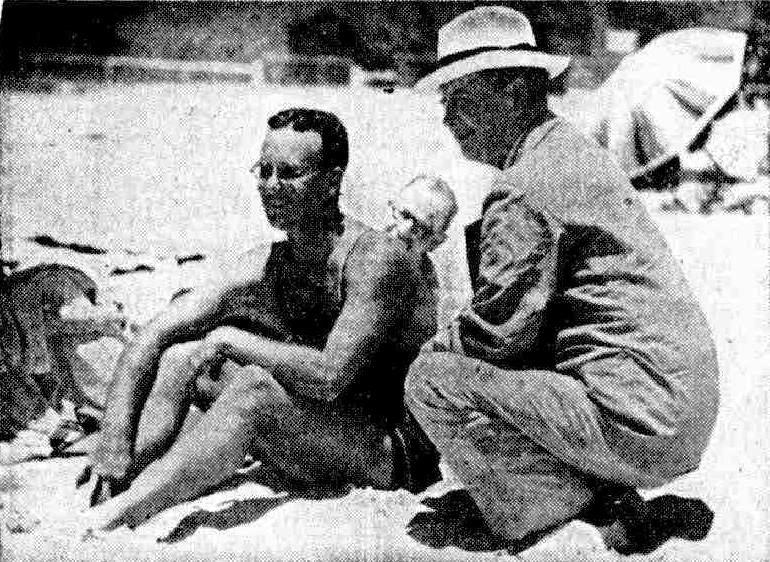
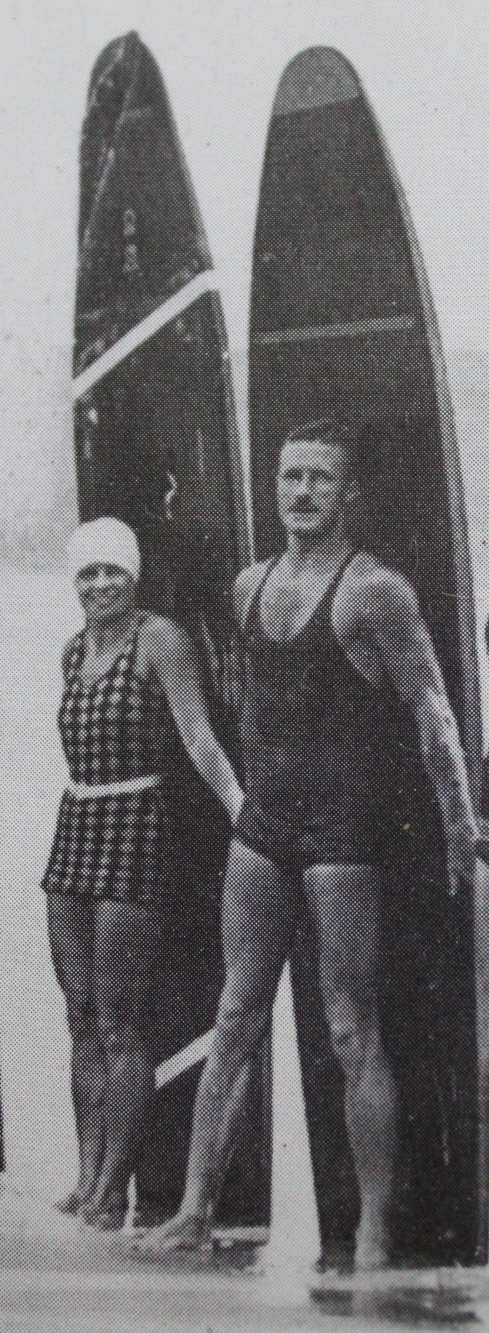
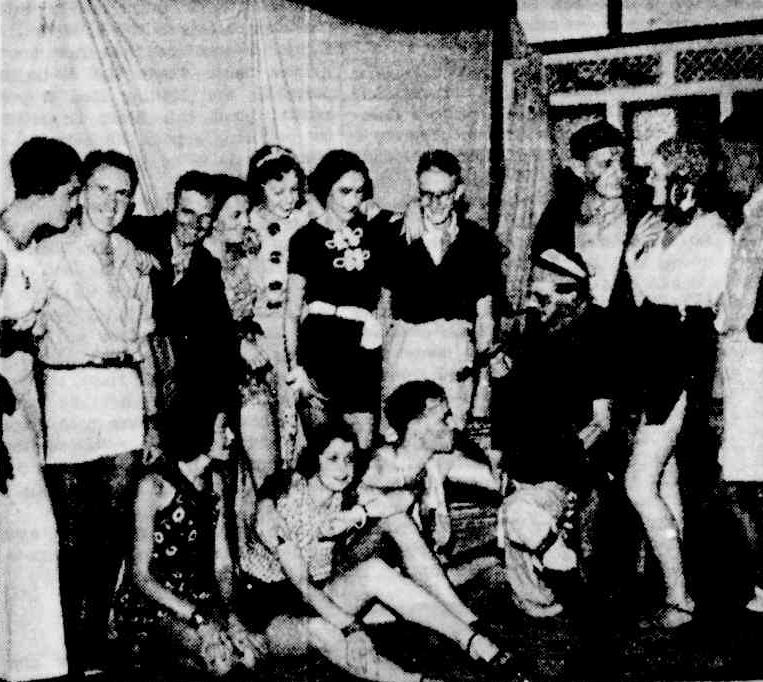 ONE of the cheeriest dances of the season was the Pirates' Dance, staged by members of the Palm Beach Surf Club, at Howlett's Store, Palm Beach, last Saturday.
ONE of the cheeriest dances of the season was the Pirates' Dance, staged by members of the Palm Beach Surf Club, at Howlett's Store, Palm Beach, last Saturday.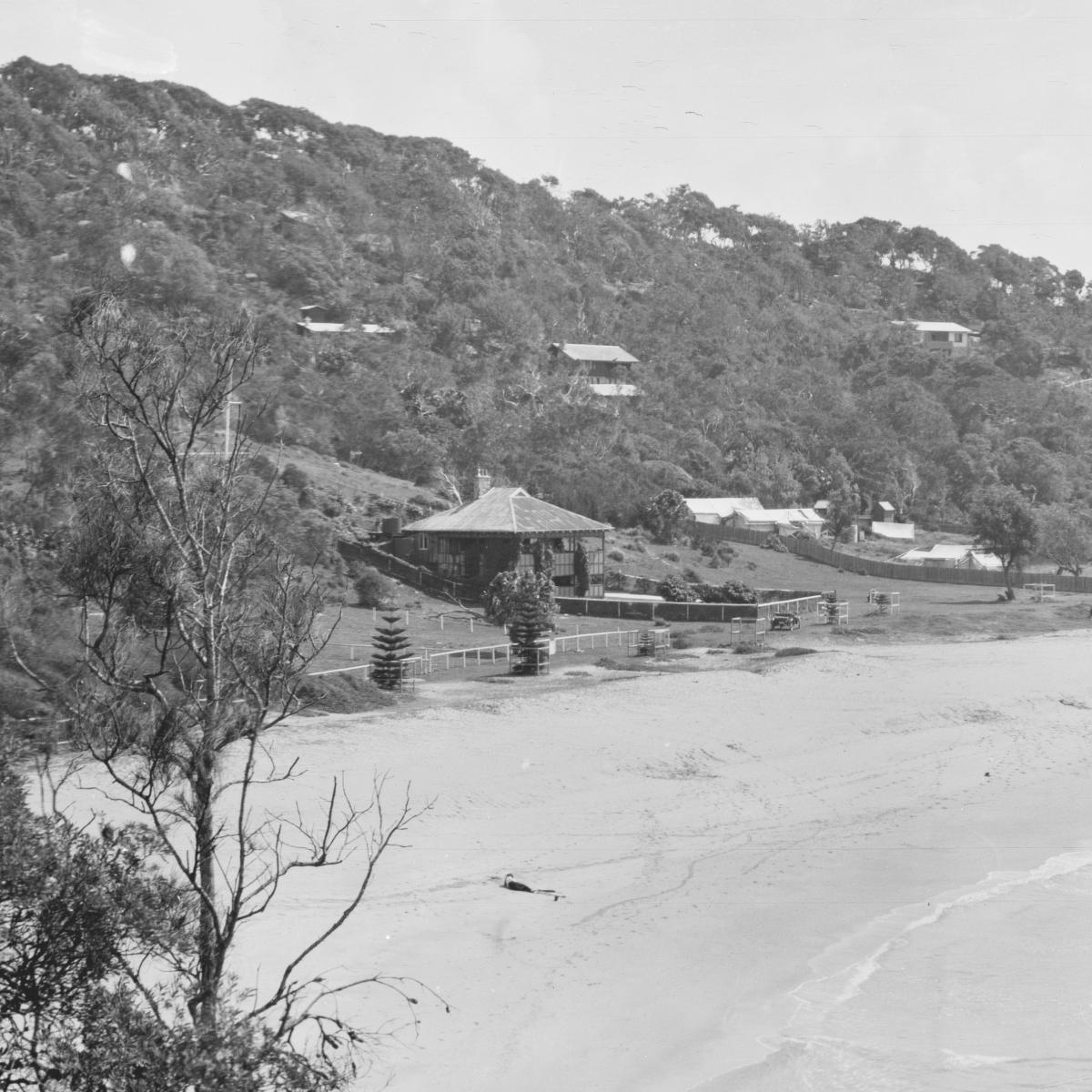


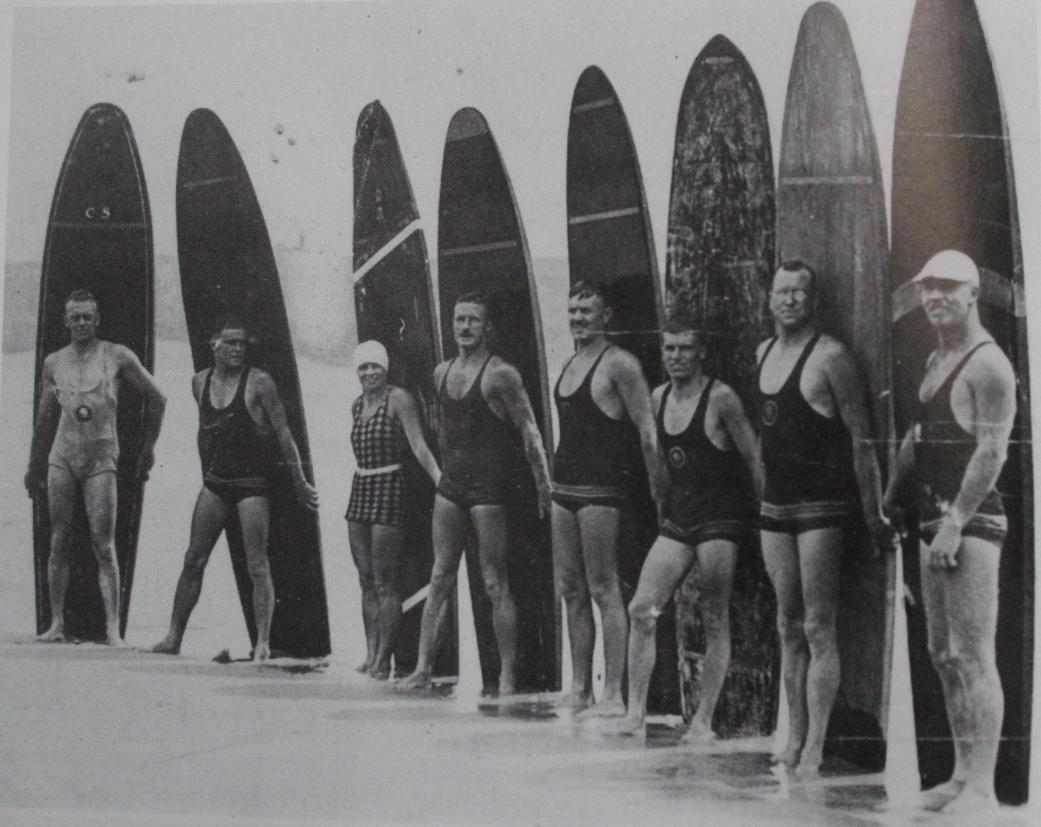
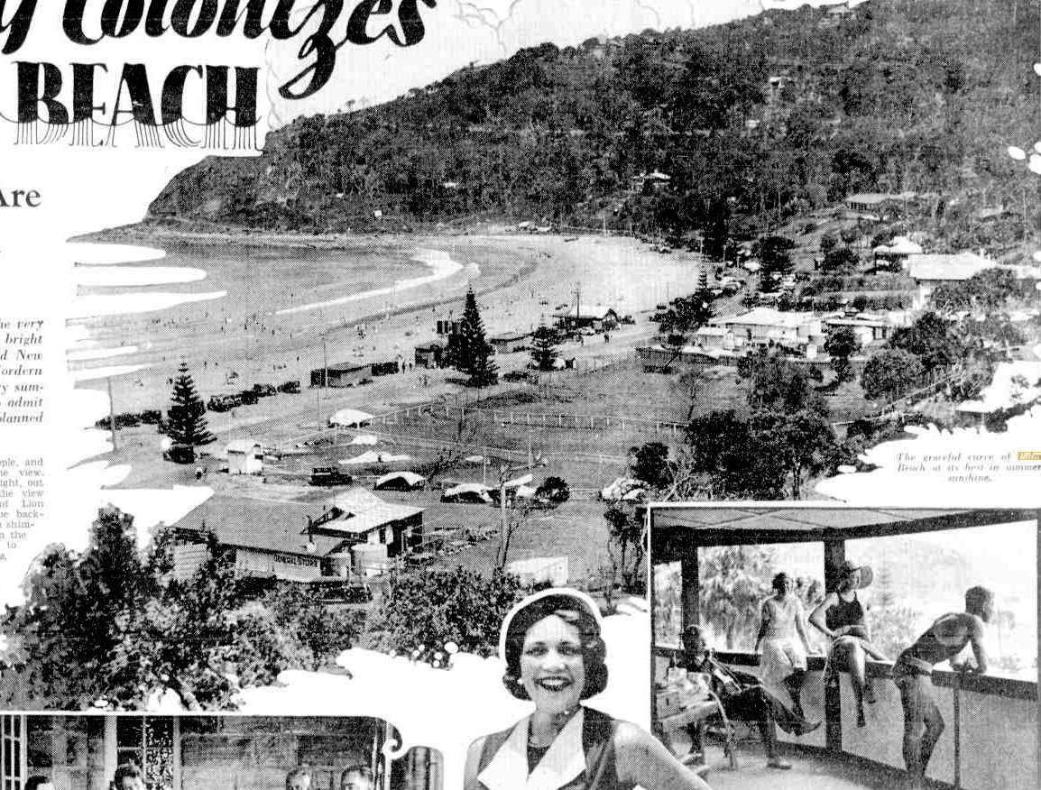
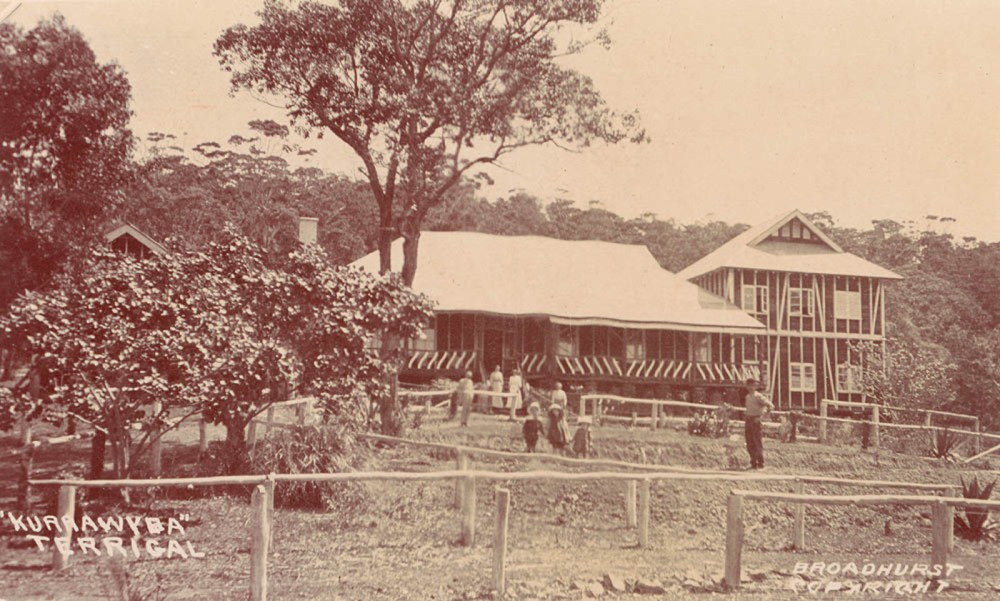
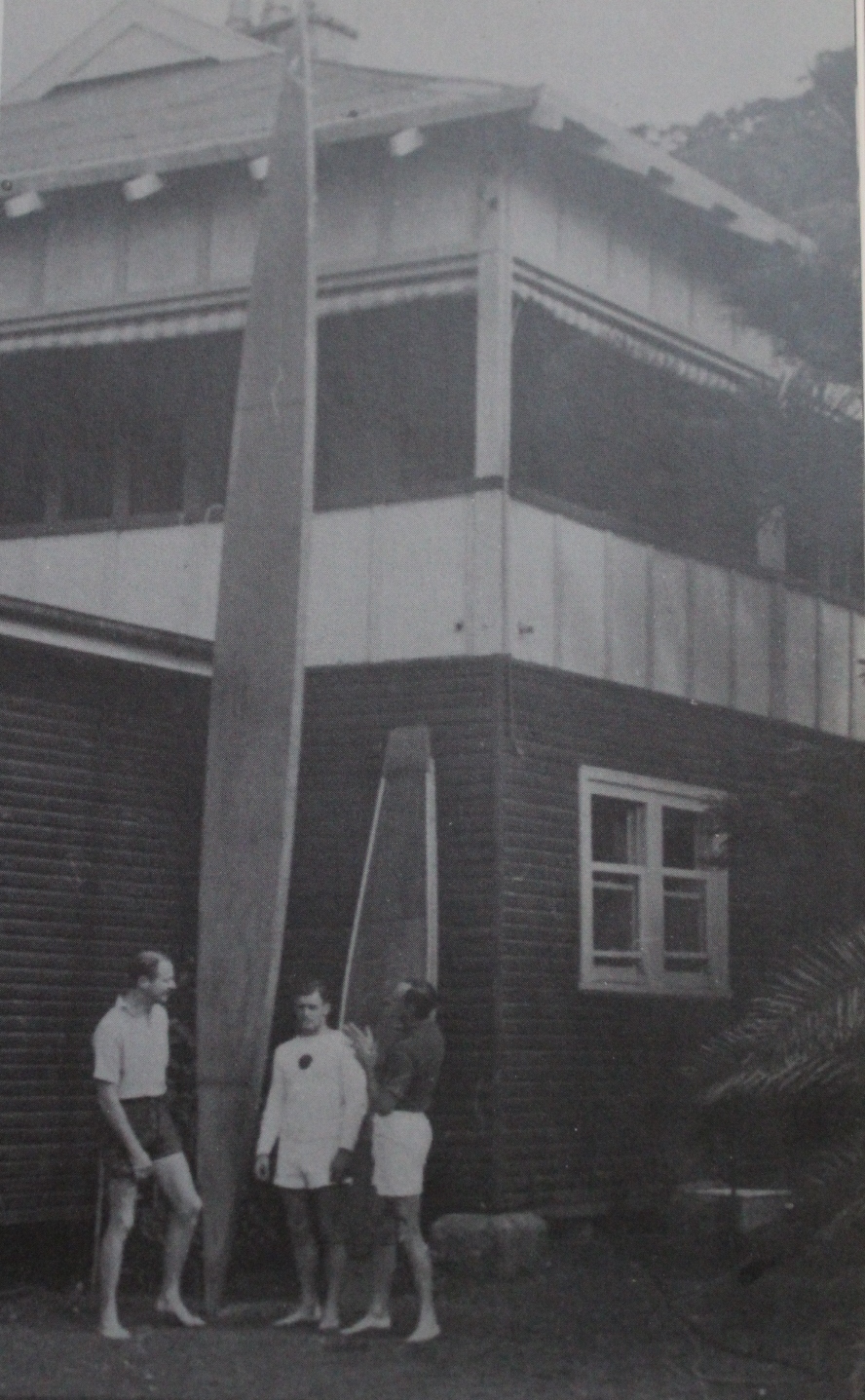
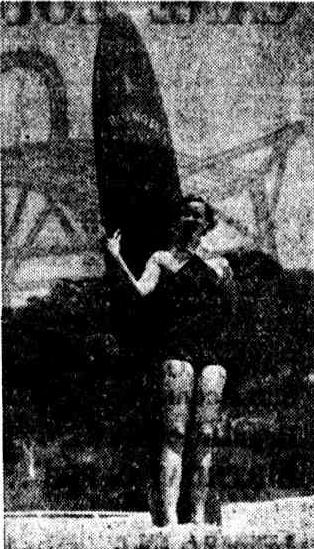
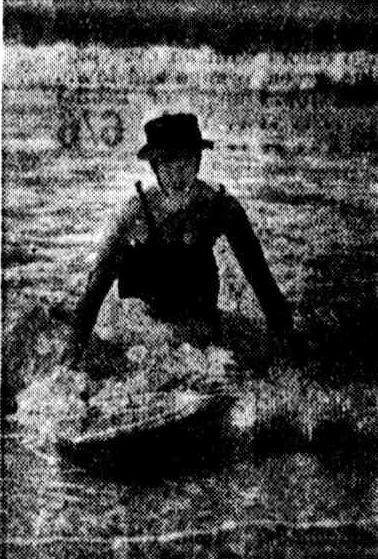 Mrs. Dallon, wife of Commander L. S. Dallon, is in the foreground and her small boy David, is under the umbrella.
Mrs. Dallon, wife of Commander L. S. Dallon, is in the foreground and her small boy David, is under the umbrella. 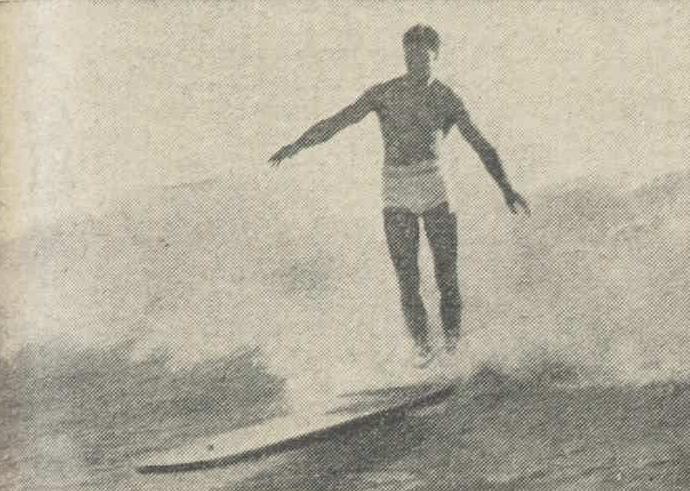
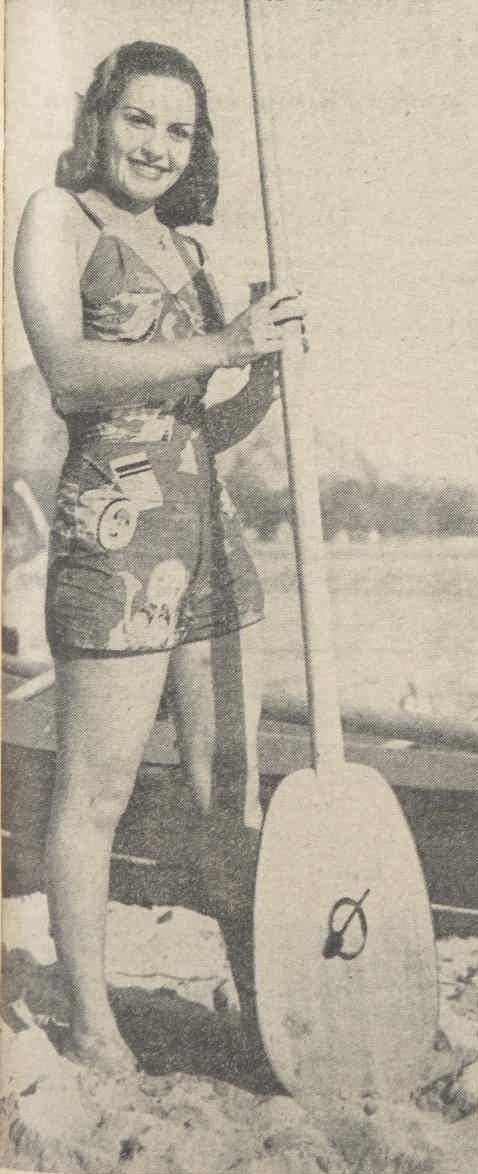
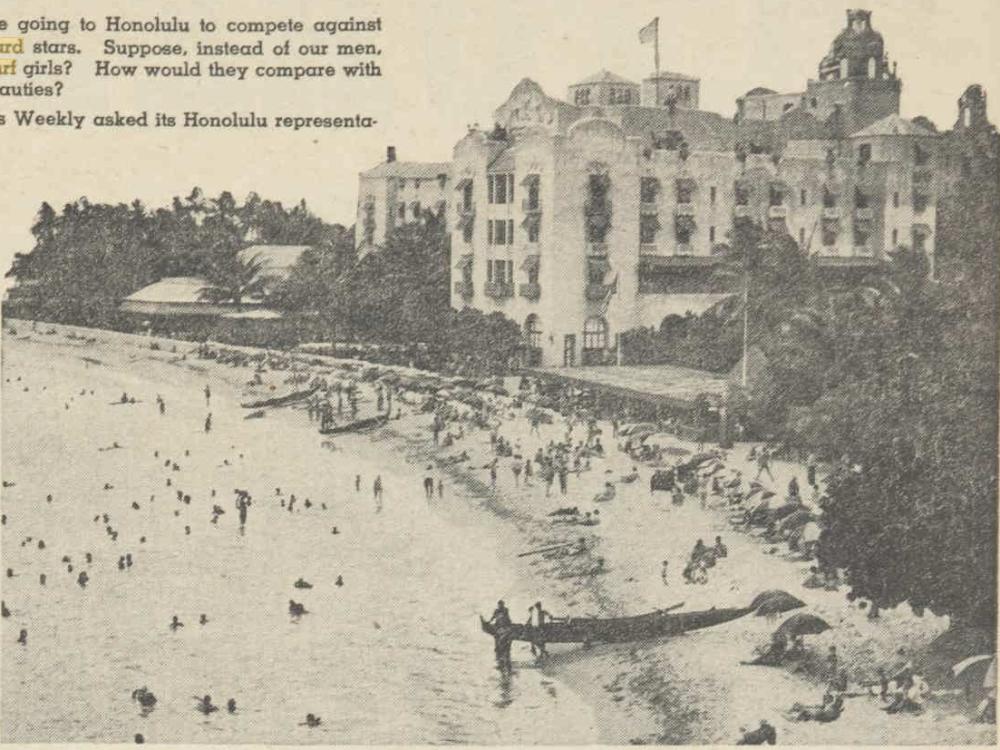
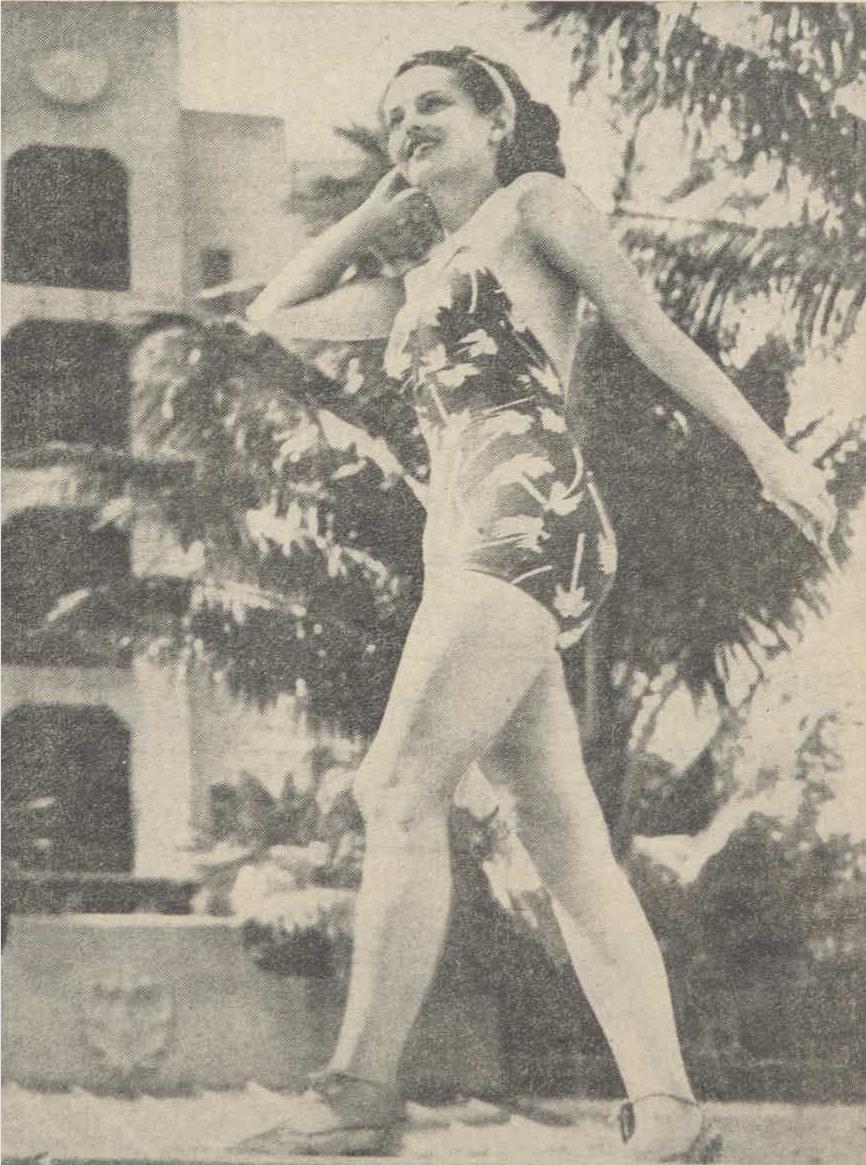
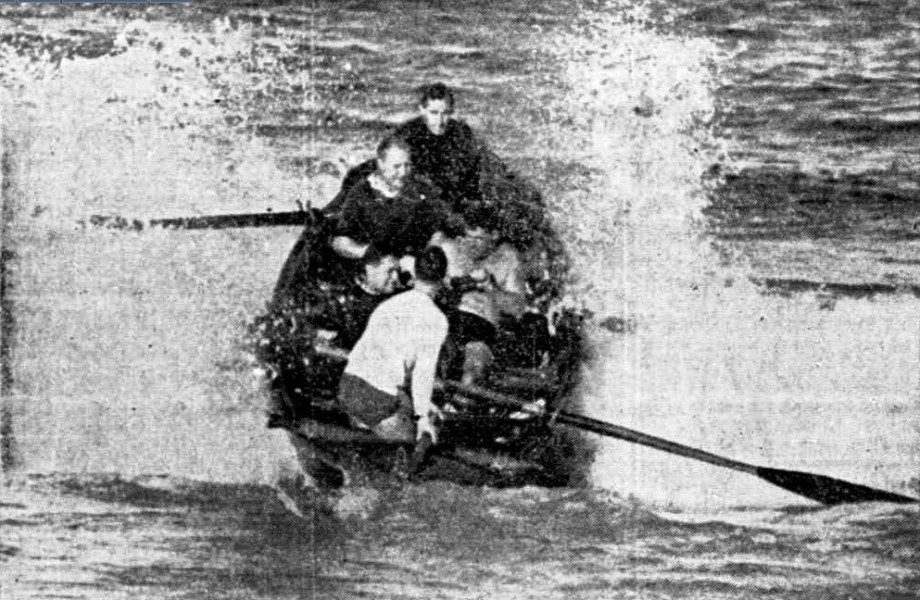
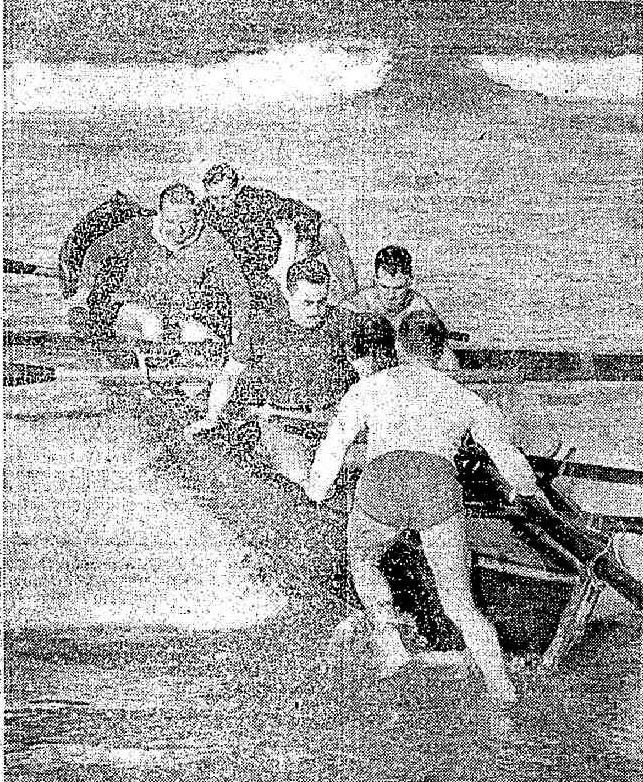
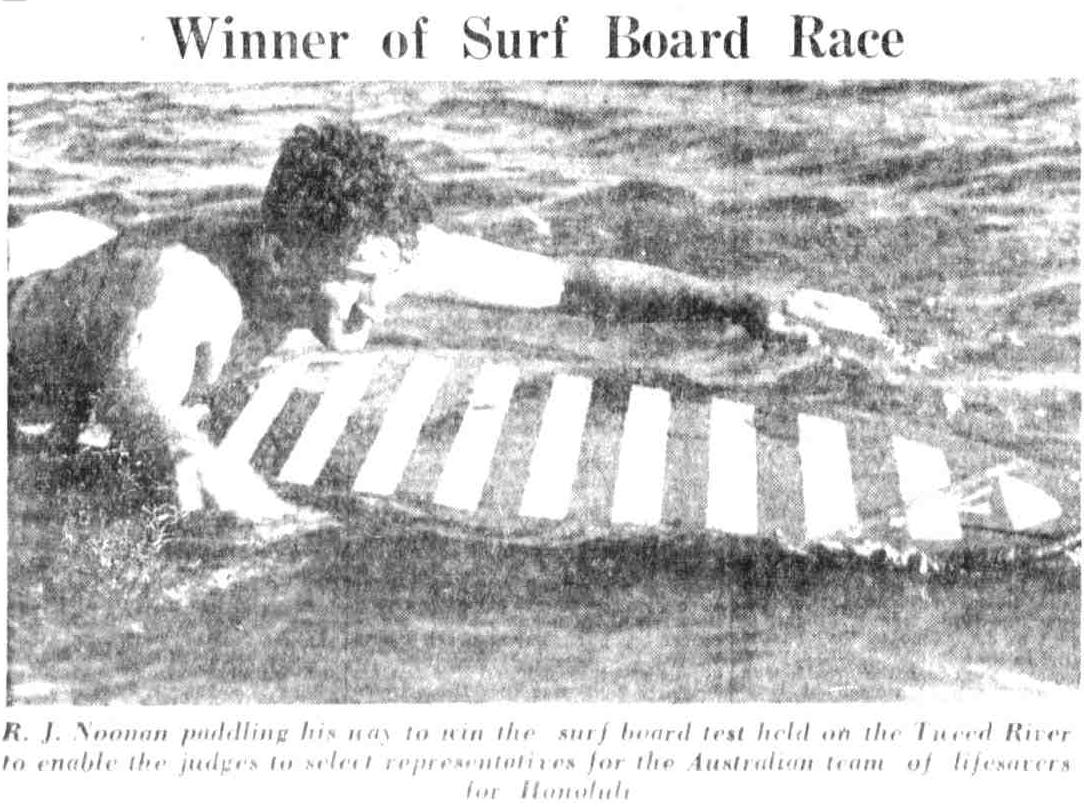
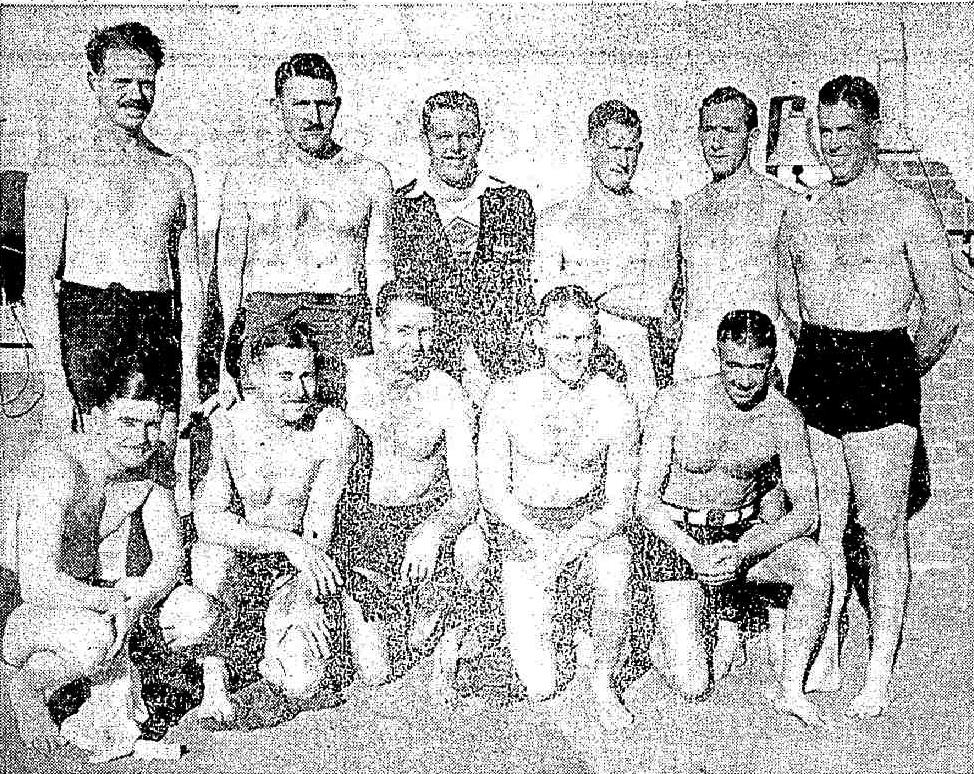
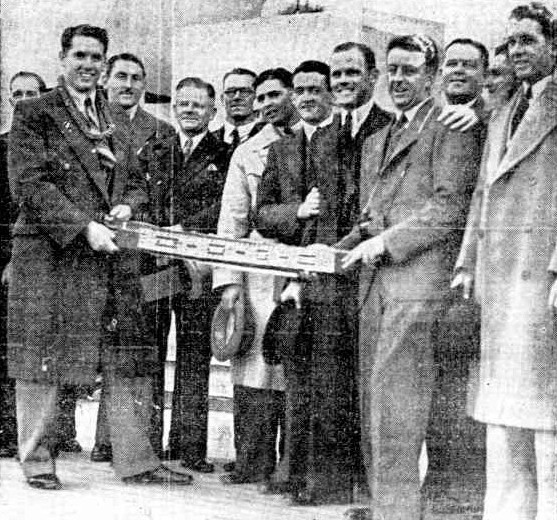
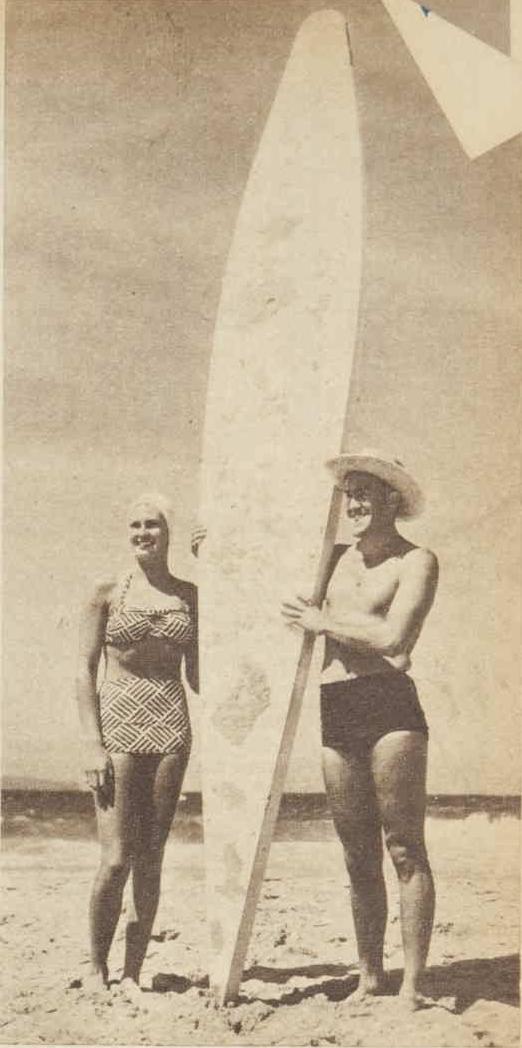
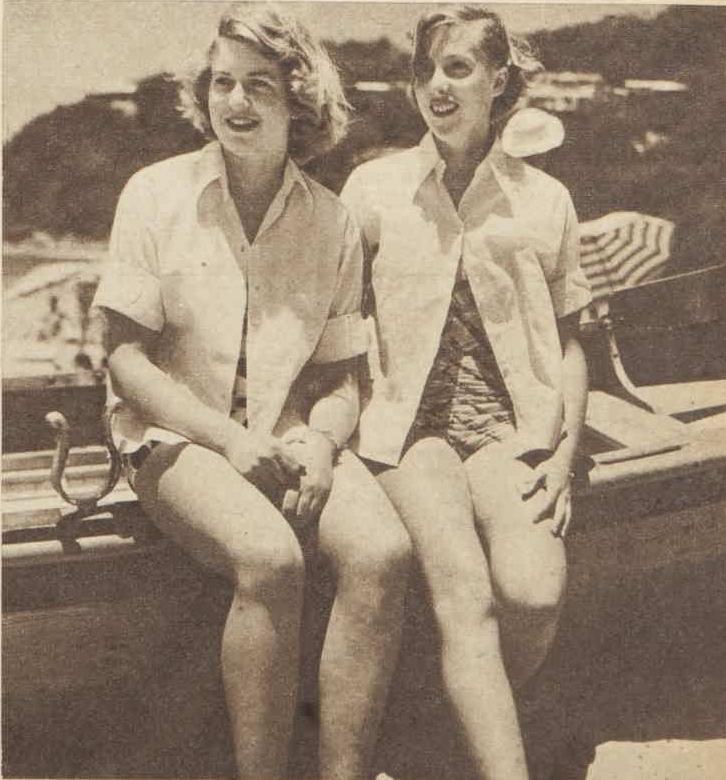
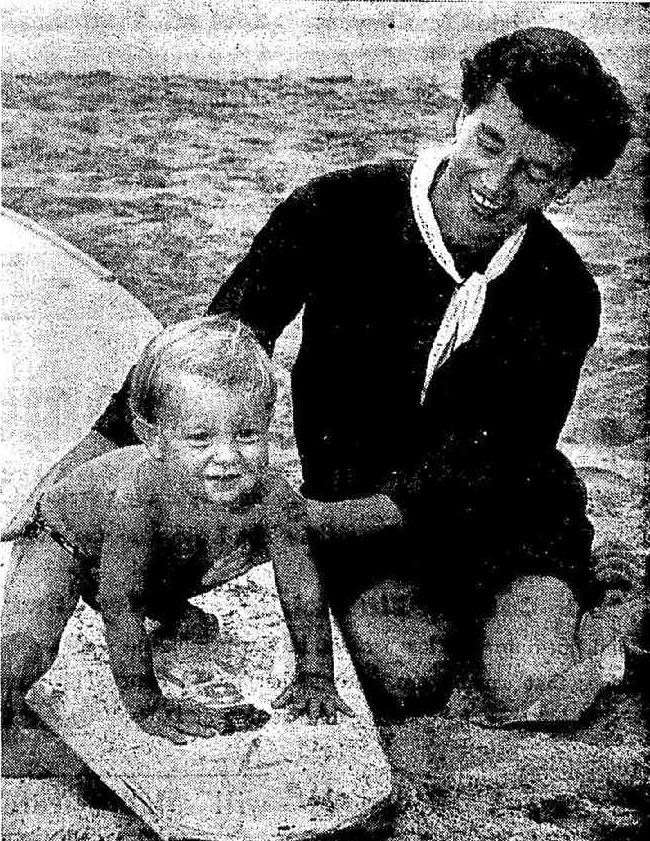
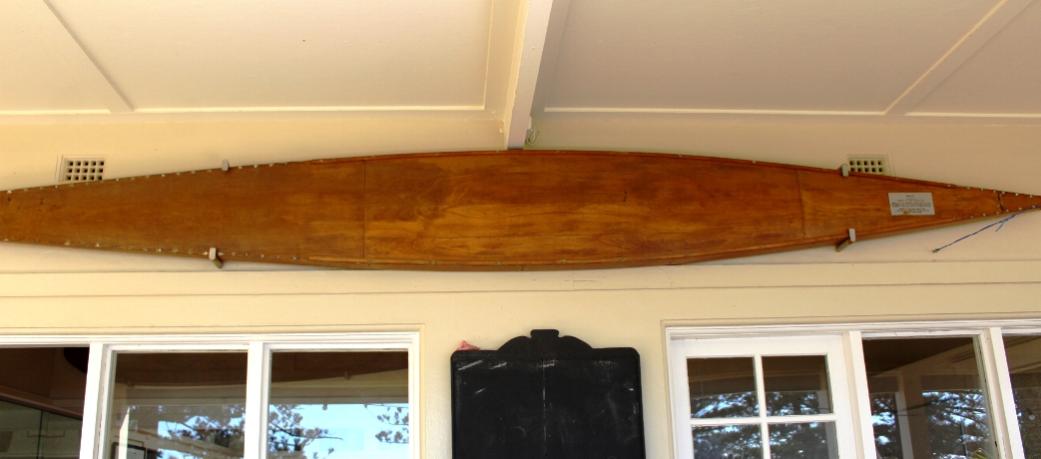
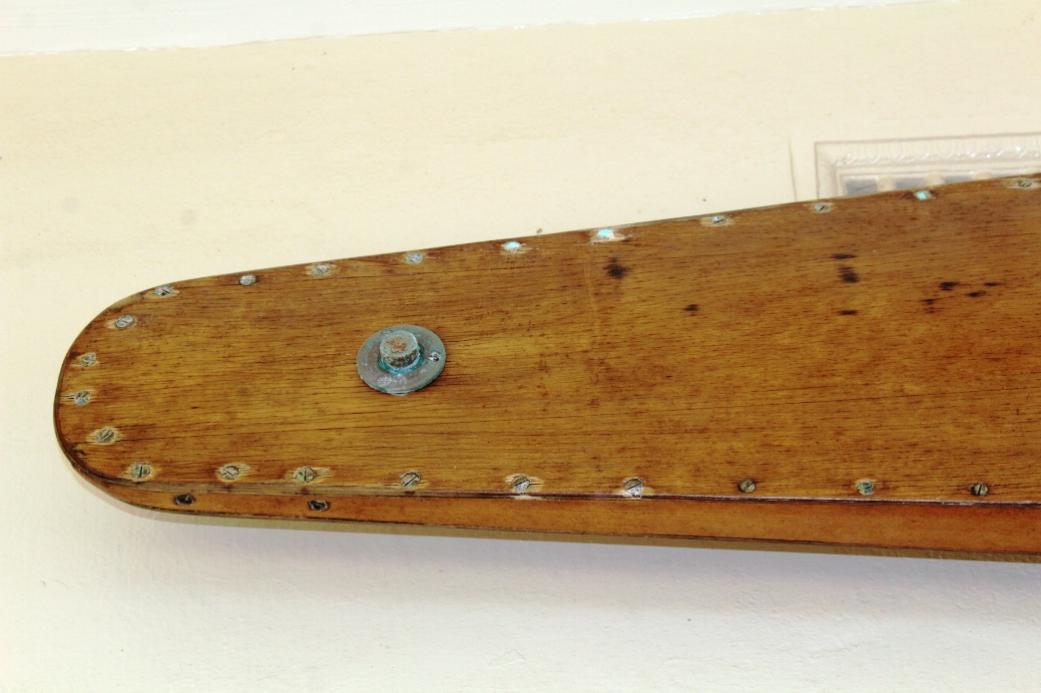
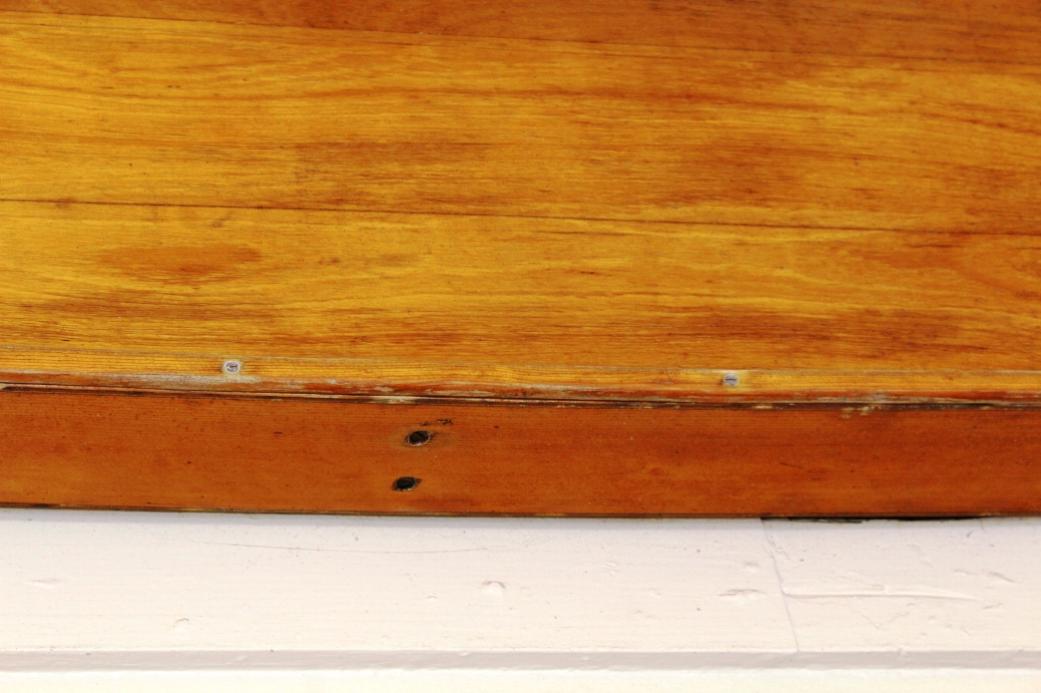
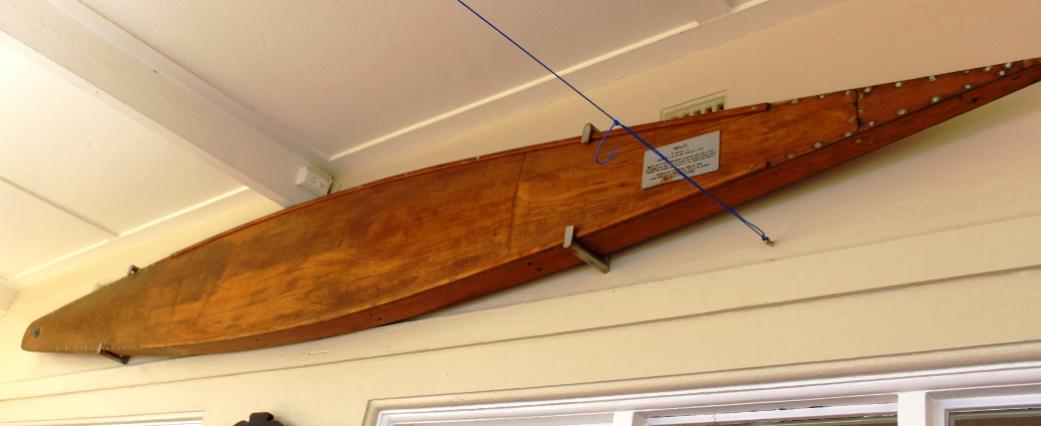
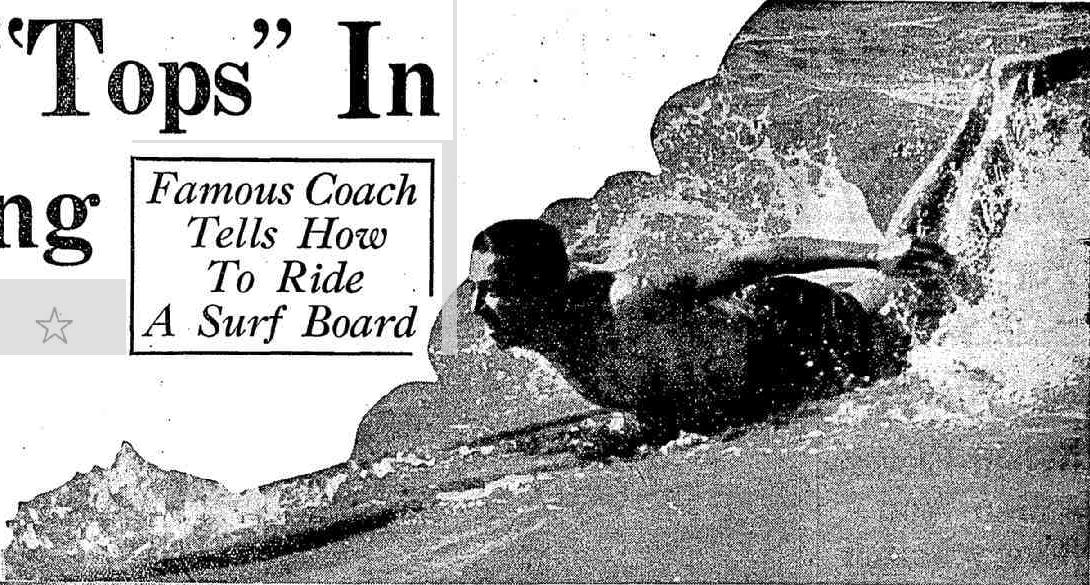
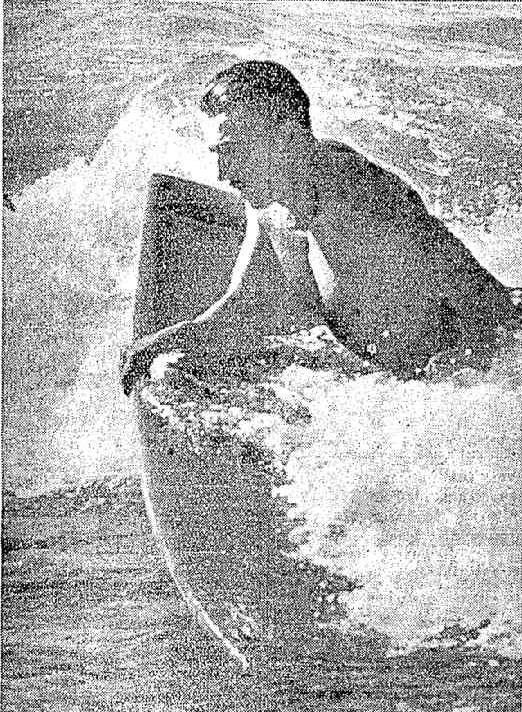
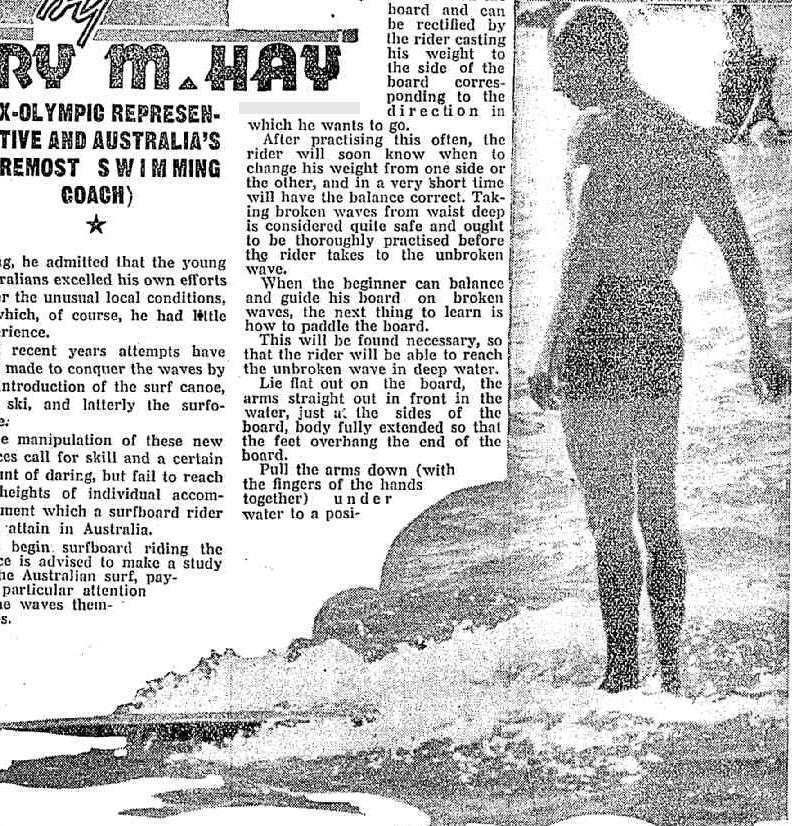
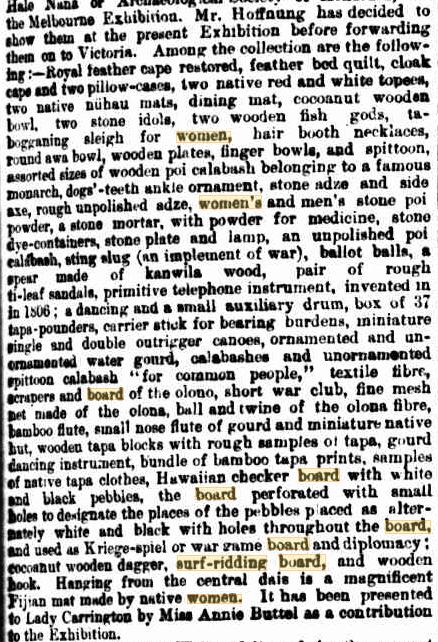
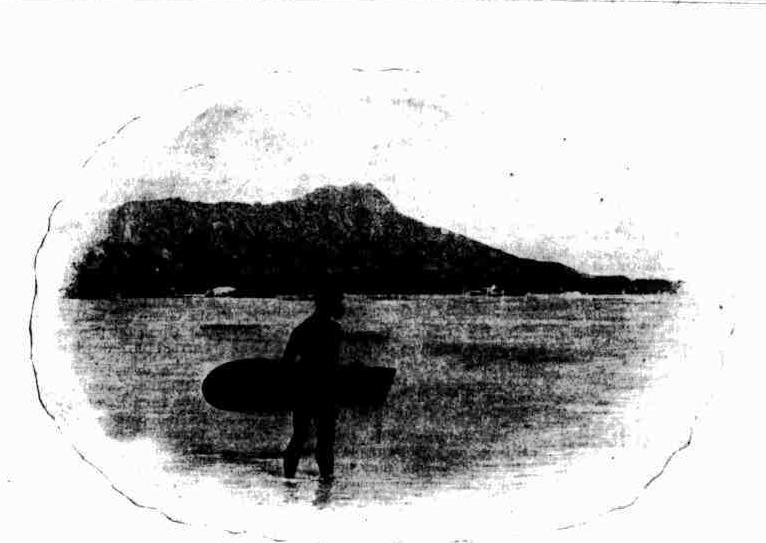
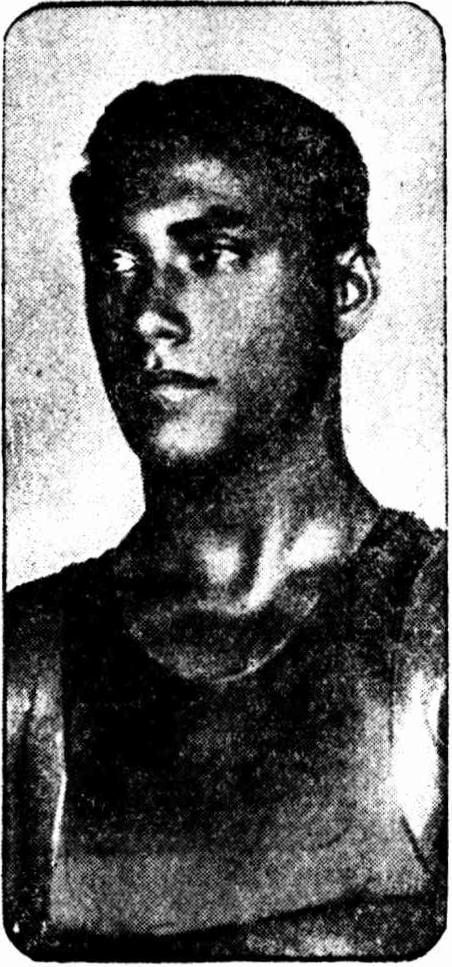
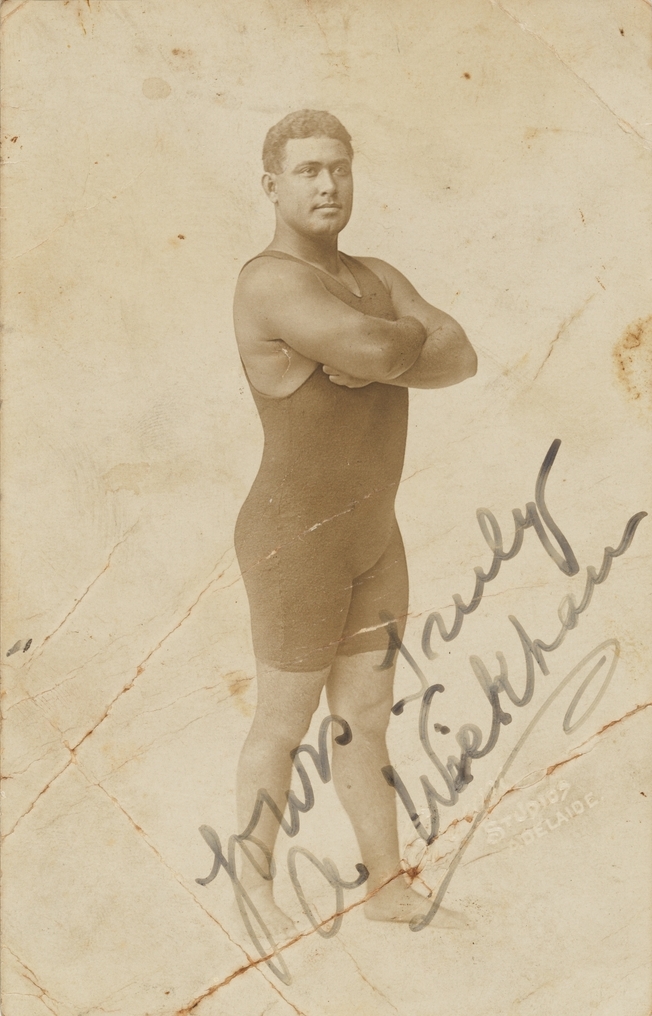
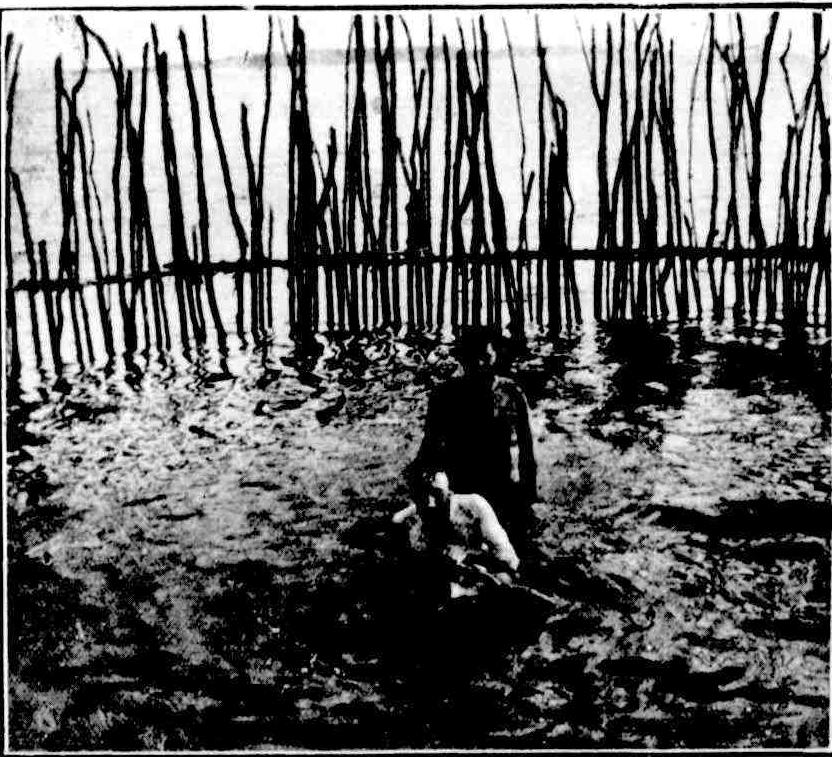
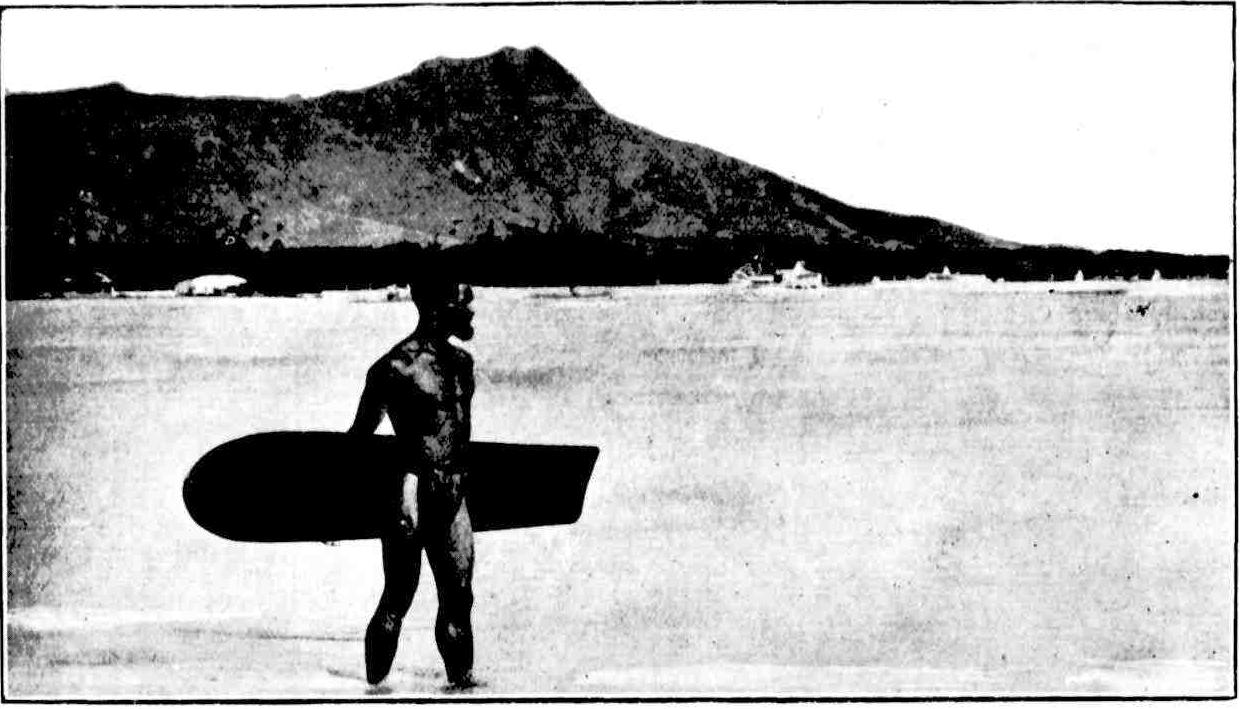
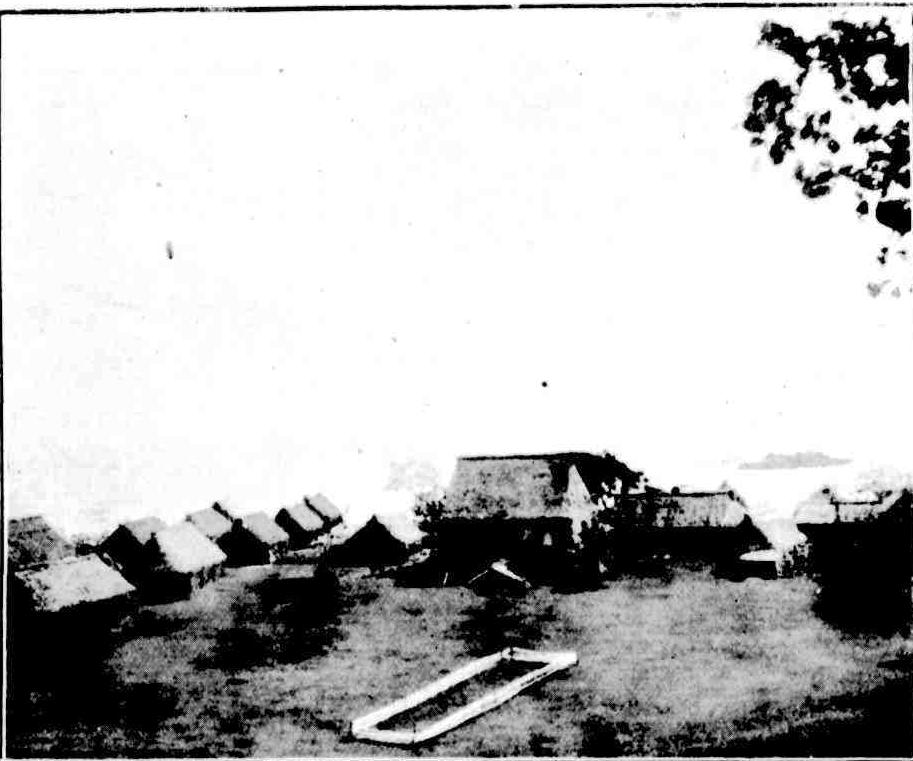
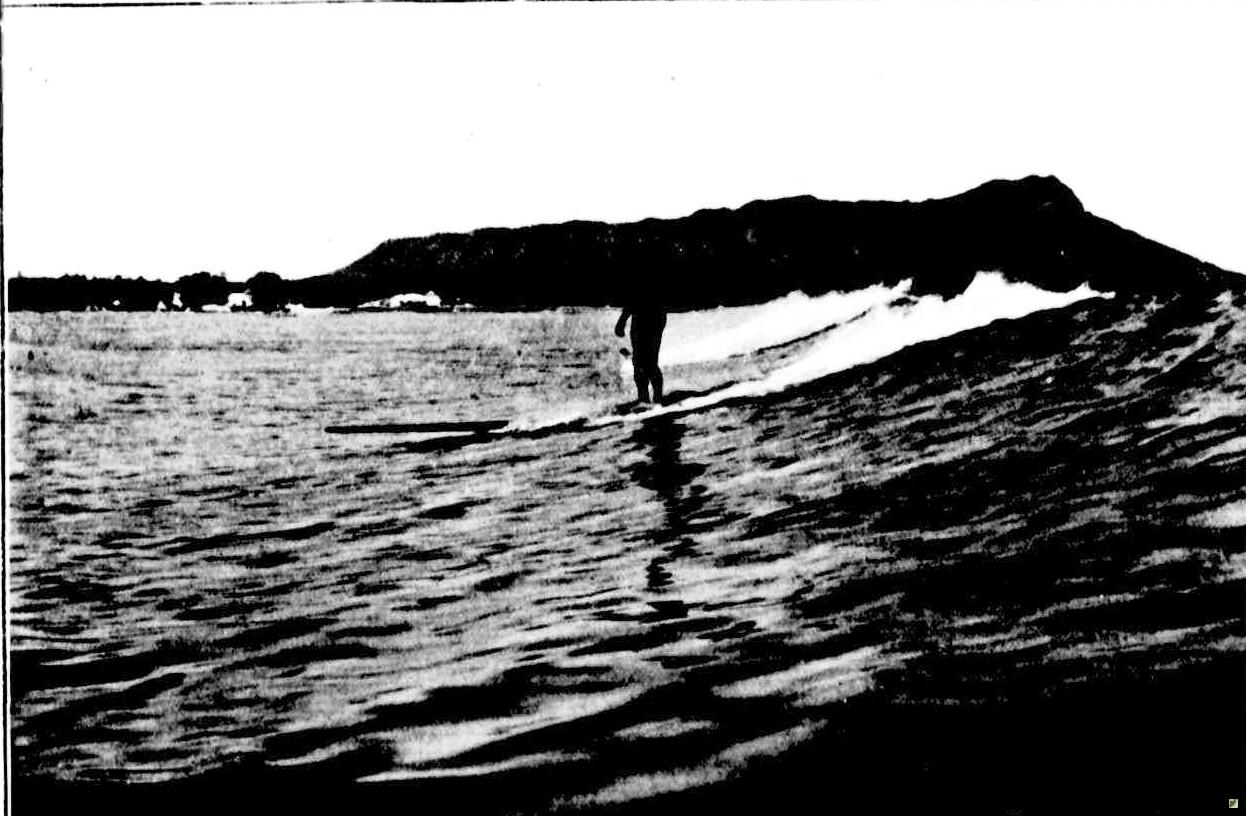
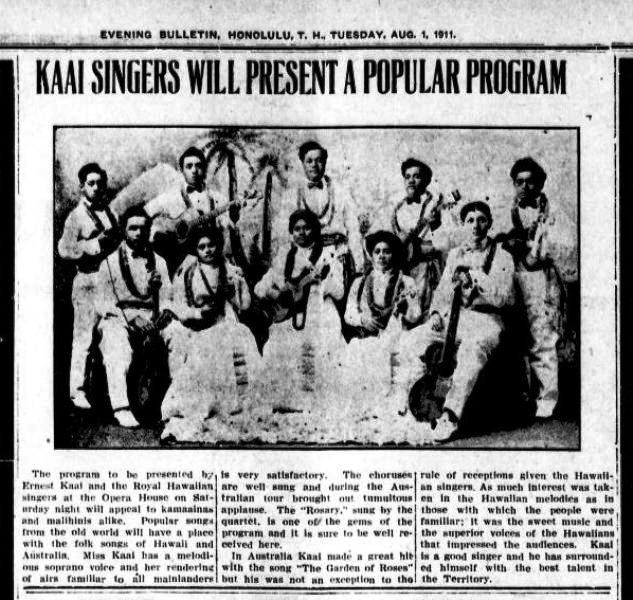
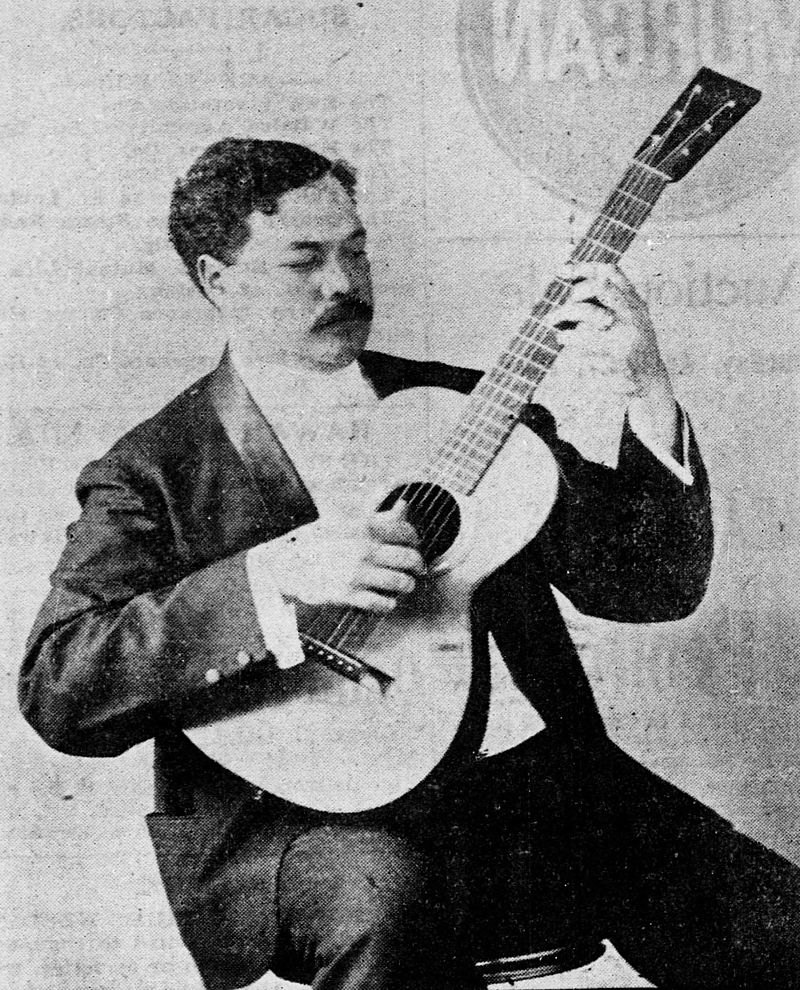
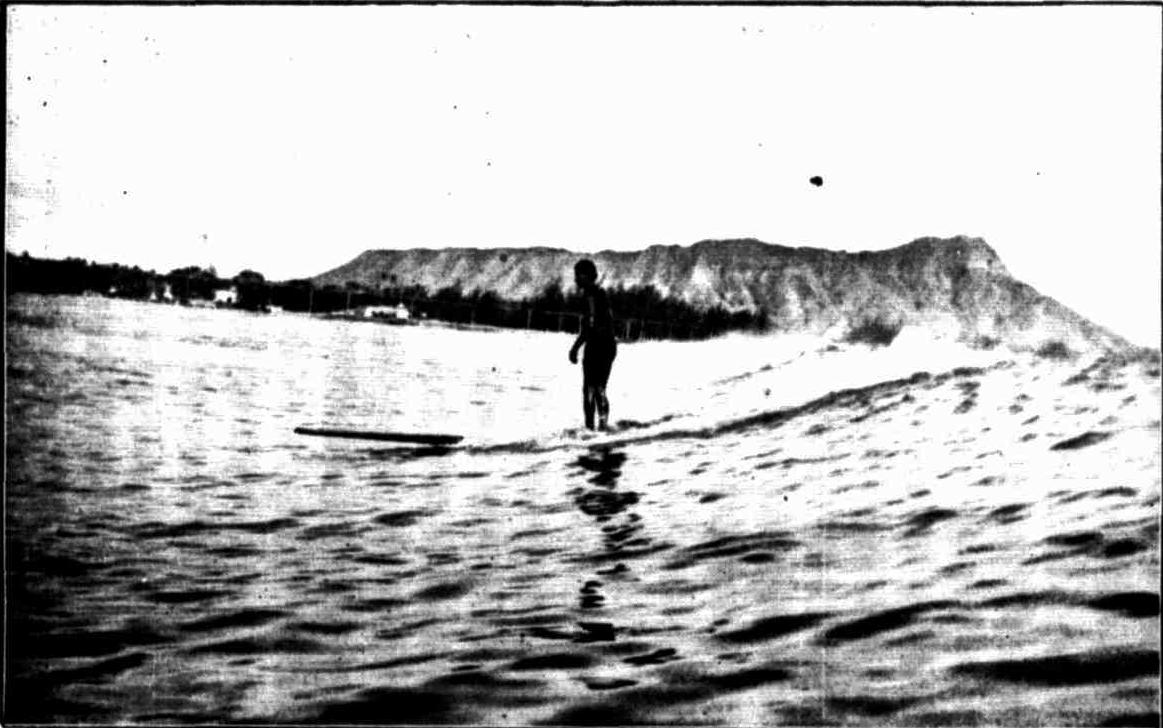
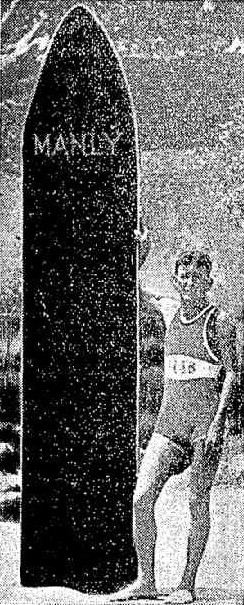 IN a letter to Harry M. Hay, Australia’s foremost swimming and, surf coach, Tommy Walker, one-time surfboard champion at Manly (N.S.W.), writes: 'I saw an article by you in 'The Referee' re surfboards, so enclose a photo of myself and surfboard taken in 1909 at Manly. This board I bought at Waikiki Beach, Hawaii, for two dollars, when I called there aboard the 'Poltolock.' I won my first surfboard shooting competition at Freshwater carnival back in 1911, and that wasn't yesterday. Regards.'
IN a letter to Harry M. Hay, Australia’s foremost swimming and, surf coach, Tommy Walker, one-time surfboard champion at Manly (N.S.W.), writes: 'I saw an article by you in 'The Referee' re surfboards, so enclose a photo of myself and surfboard taken in 1909 at Manly. This board I bought at Waikiki Beach, Hawaii, for two dollars, when I called there aboard the 'Poltolock.' I won my first surfboard shooting competition at Freshwater carnival back in 1911, and that wasn't yesterday. Regards.'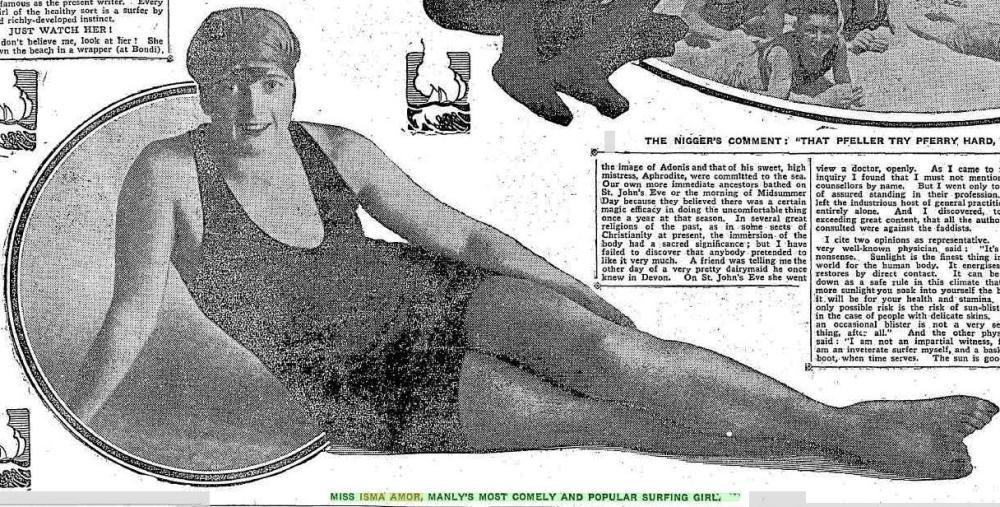
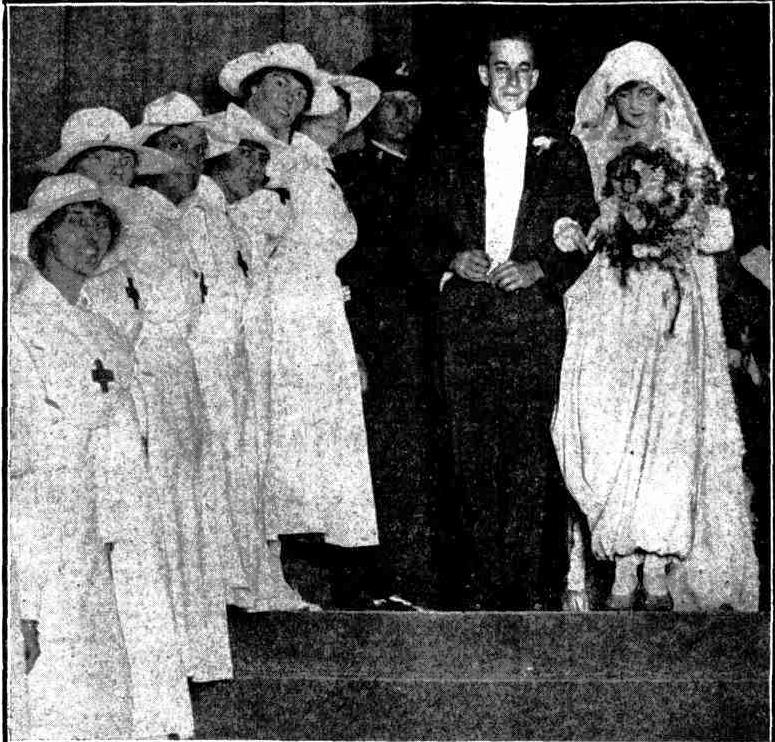
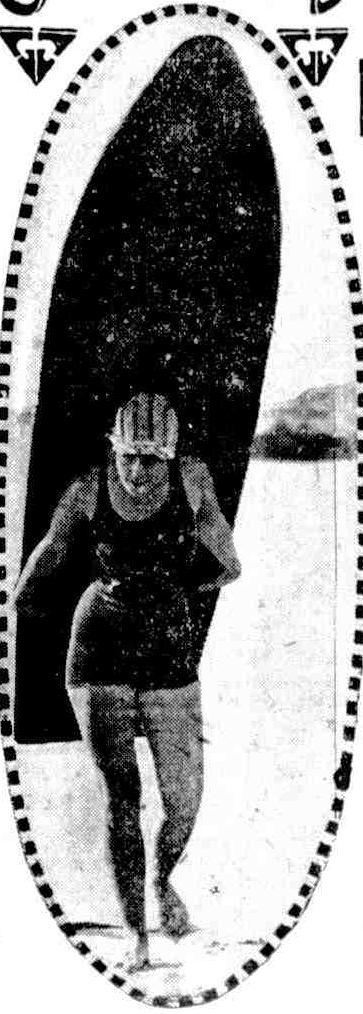
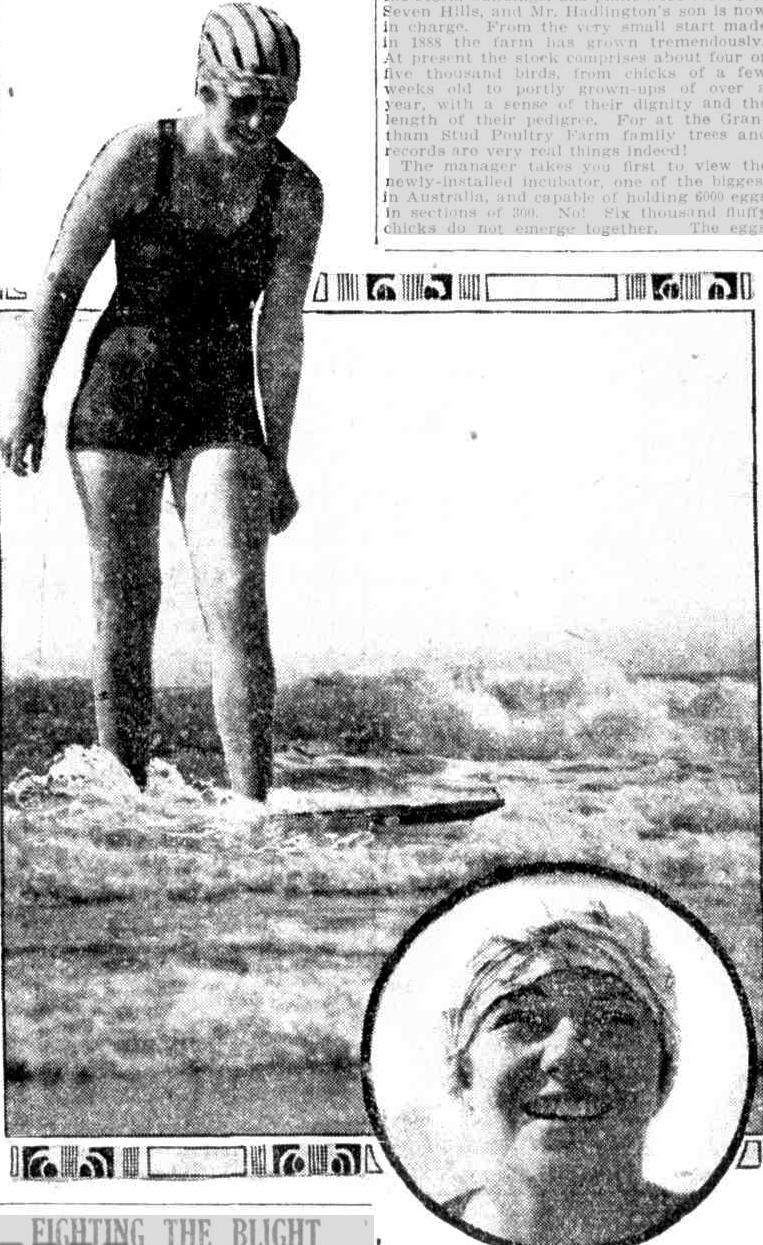
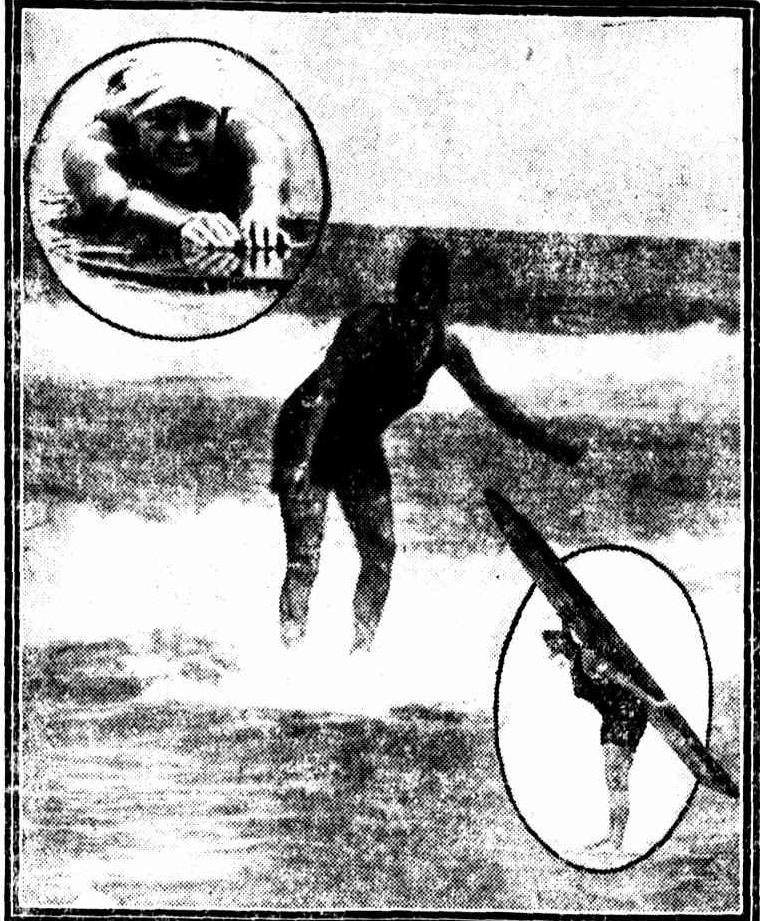

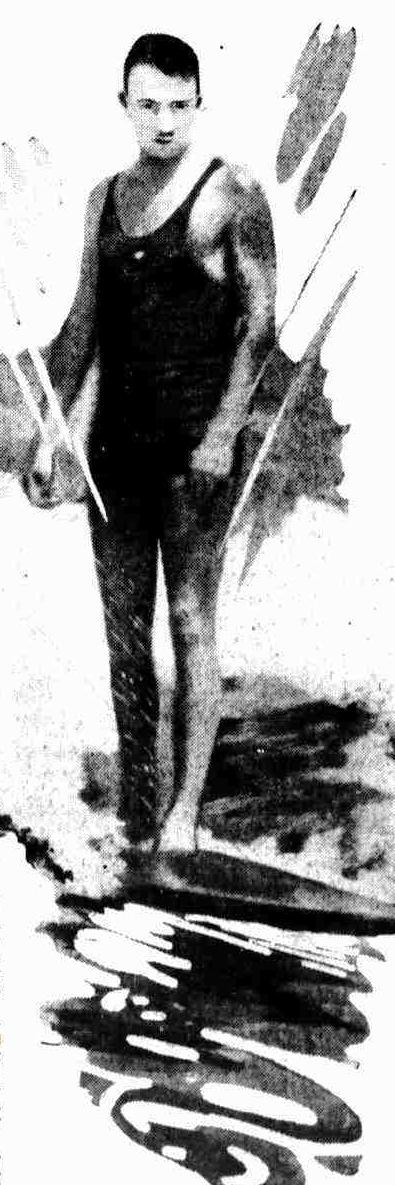 Whoosh! Down on the breast of a foaming comber. If horse racing is the sport of kings, nobody can convince me that board-shooting in 'the sizzling surf isn't a thrill for the gods.
Whoosh! Down on the breast of a foaming comber. If horse racing is the sport of kings, nobody can convince me that board-shooting in 'the sizzling surf isn't a thrill for the gods.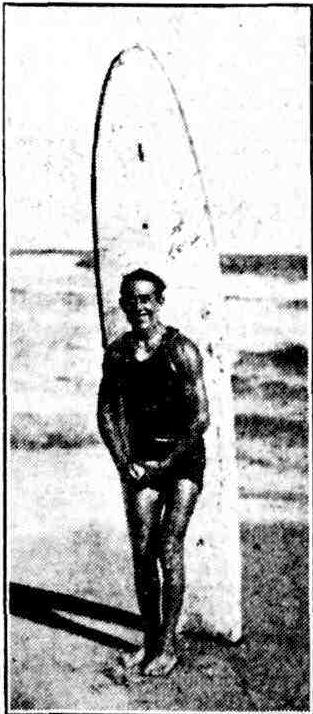
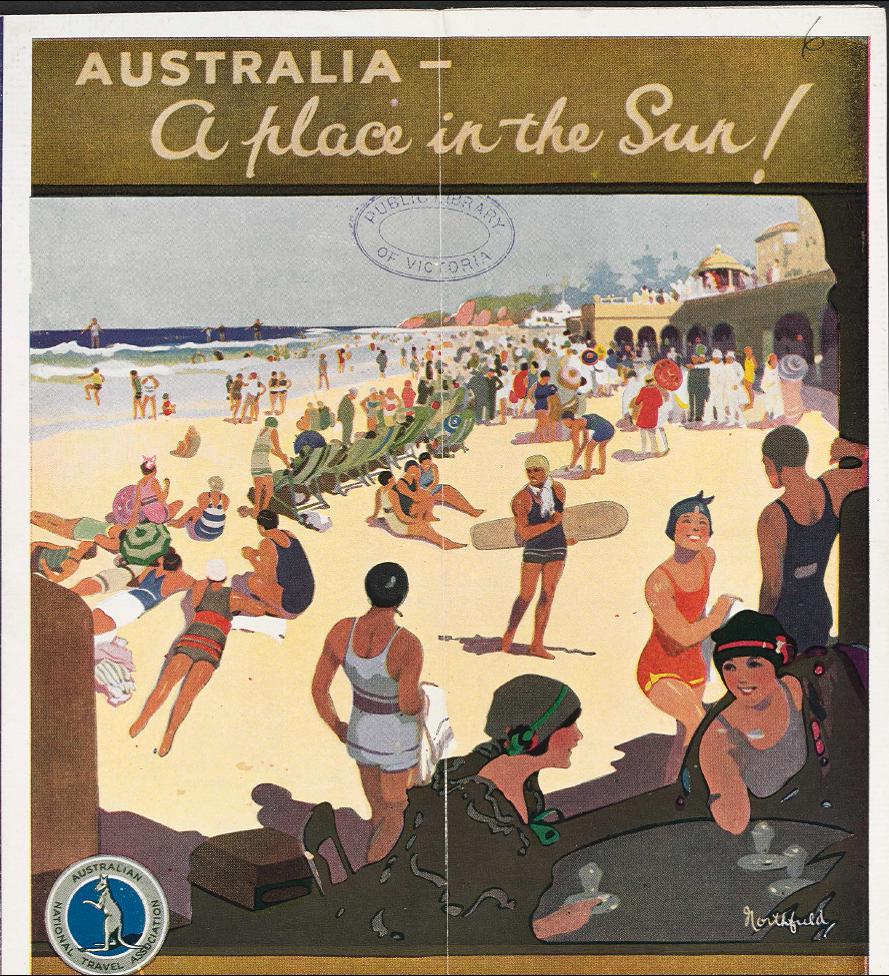
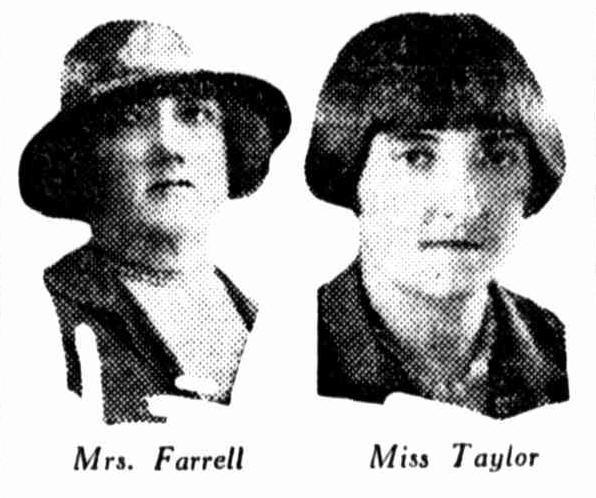
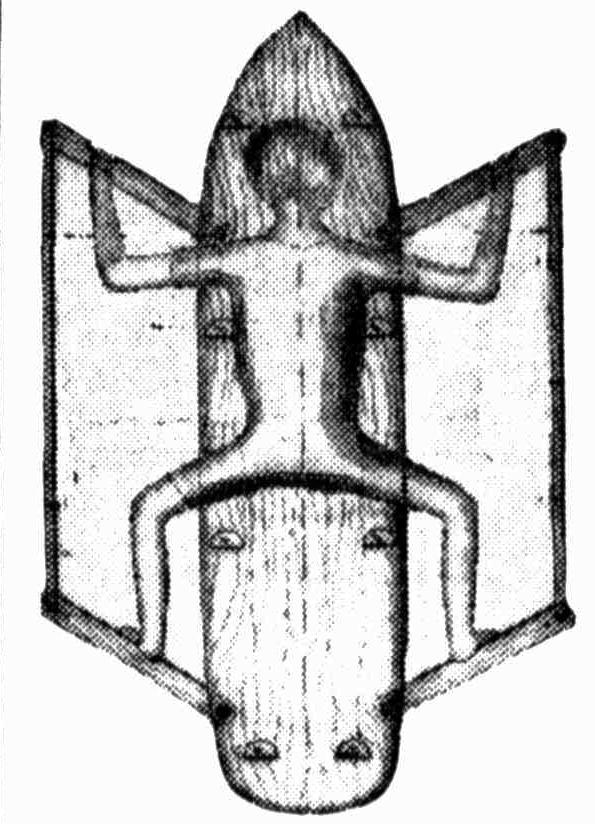
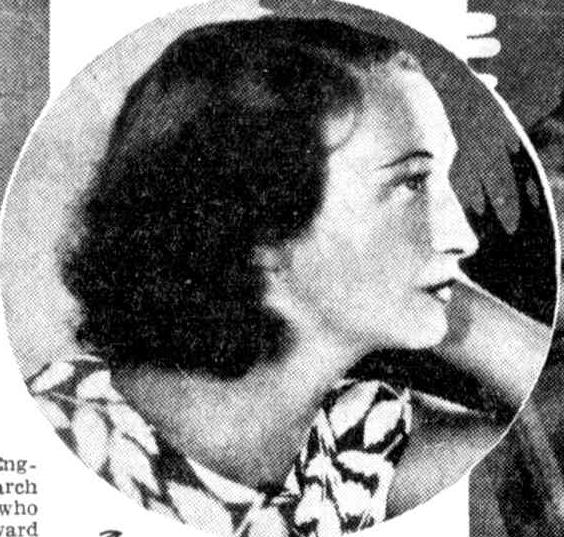
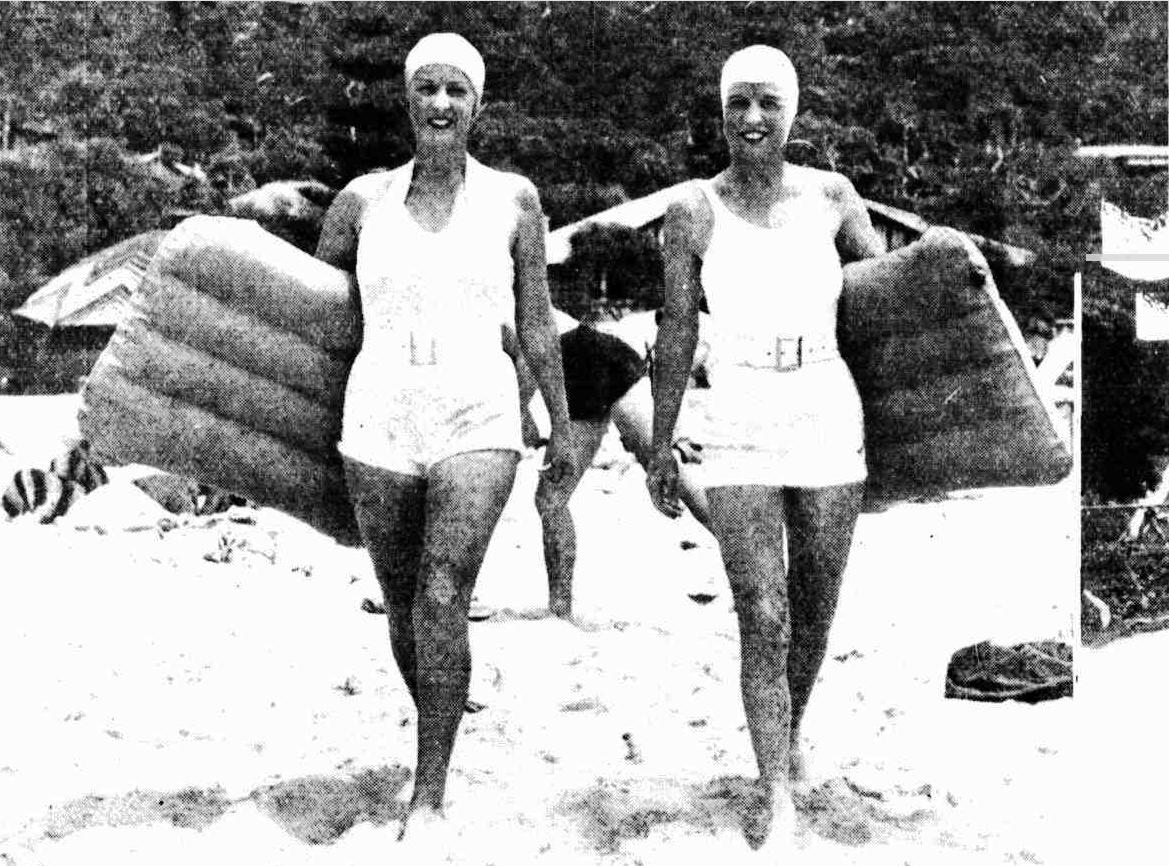
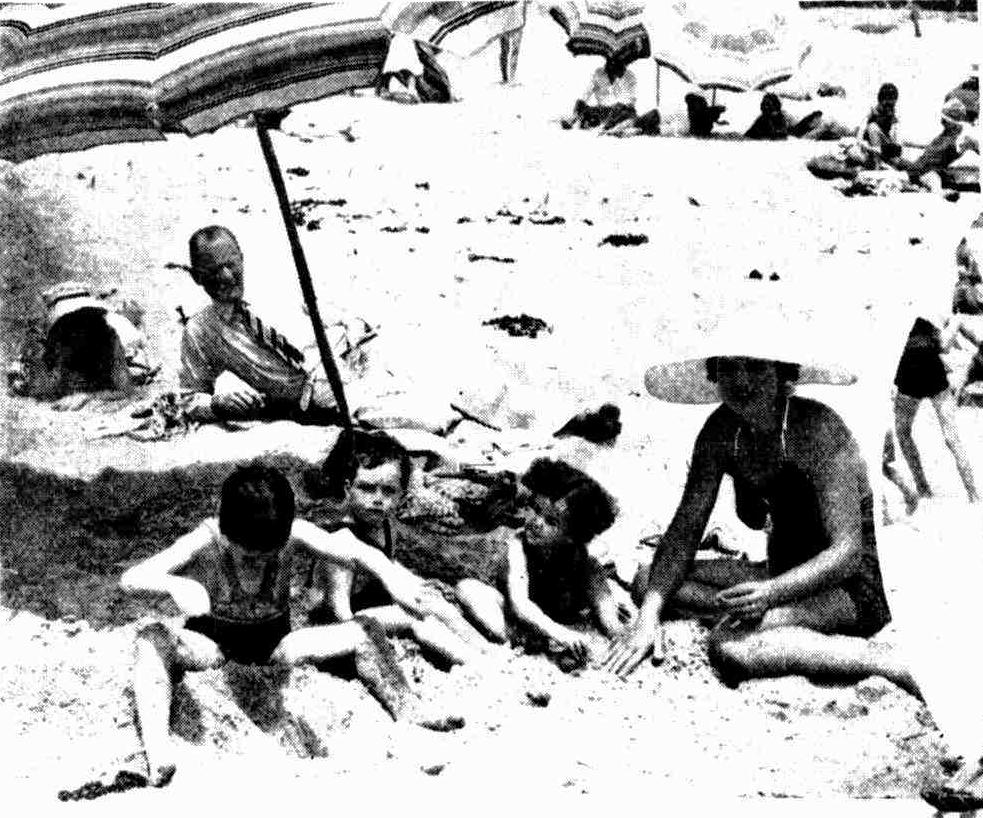
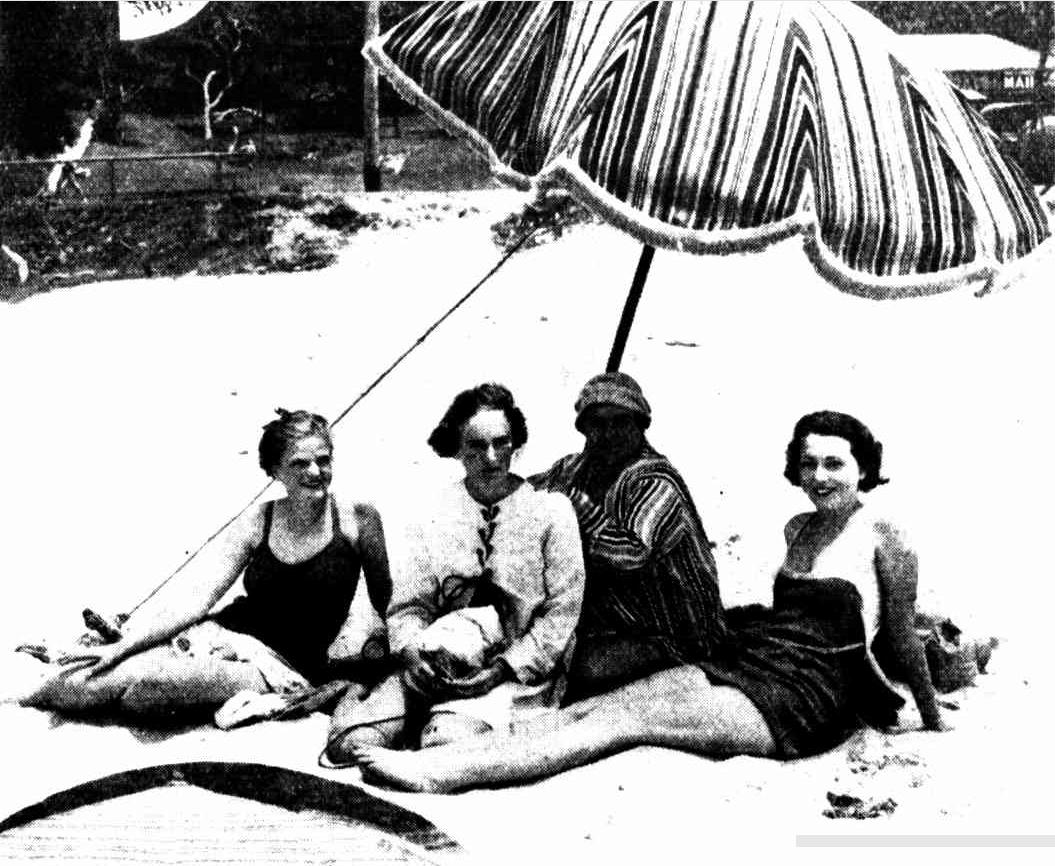
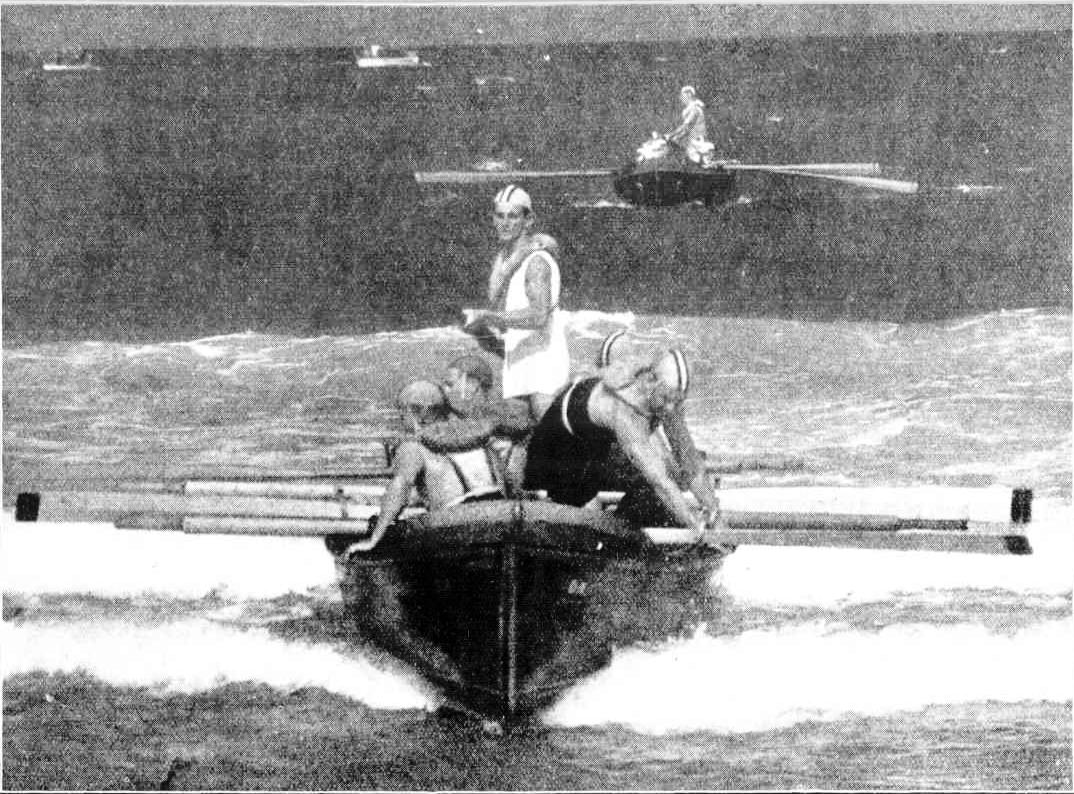
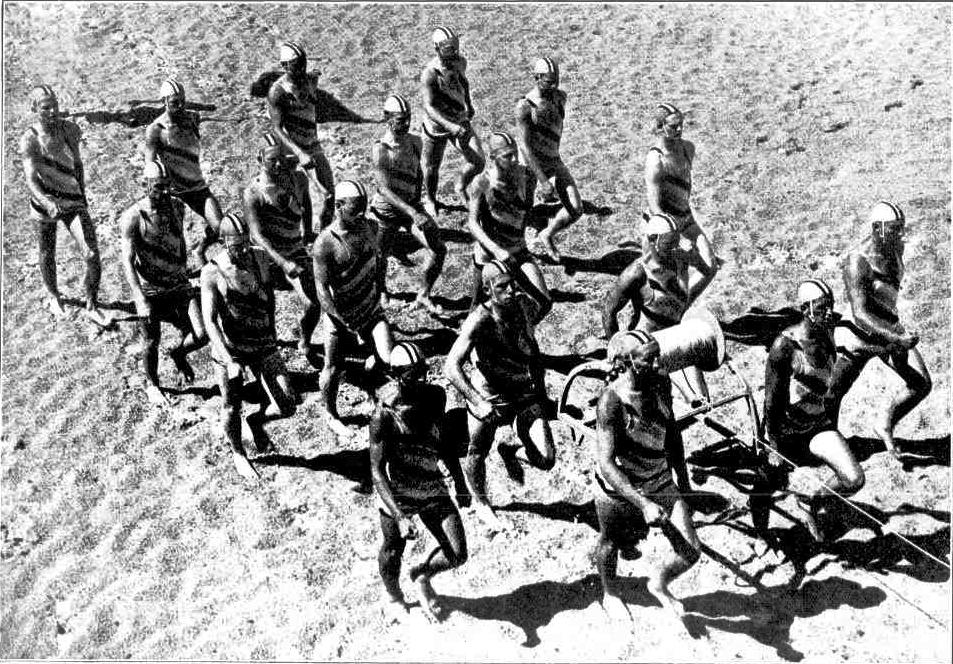
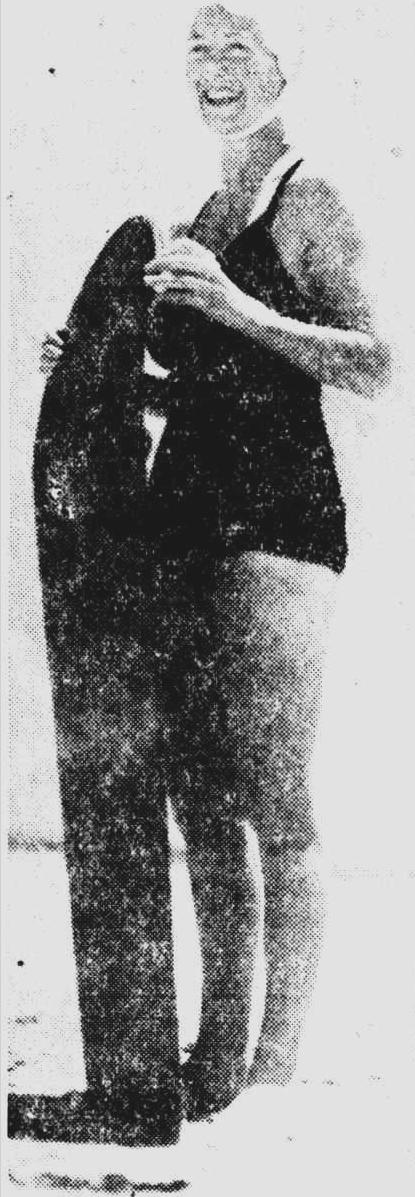
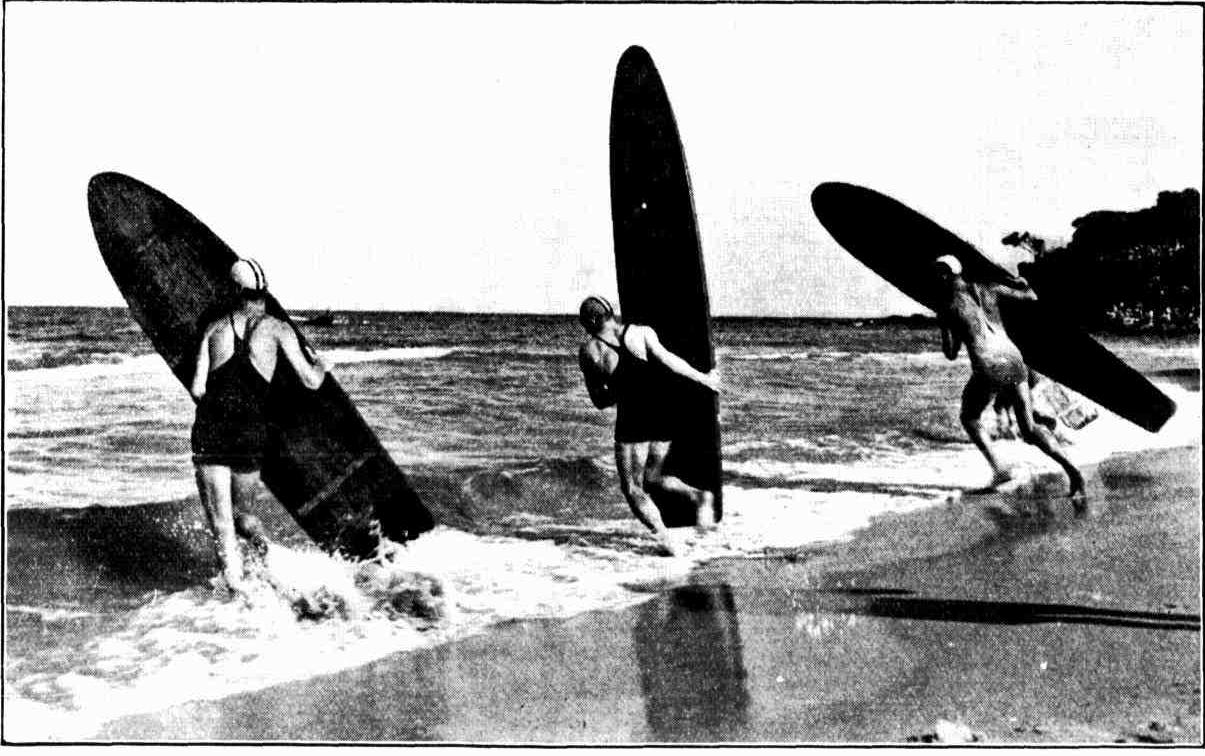
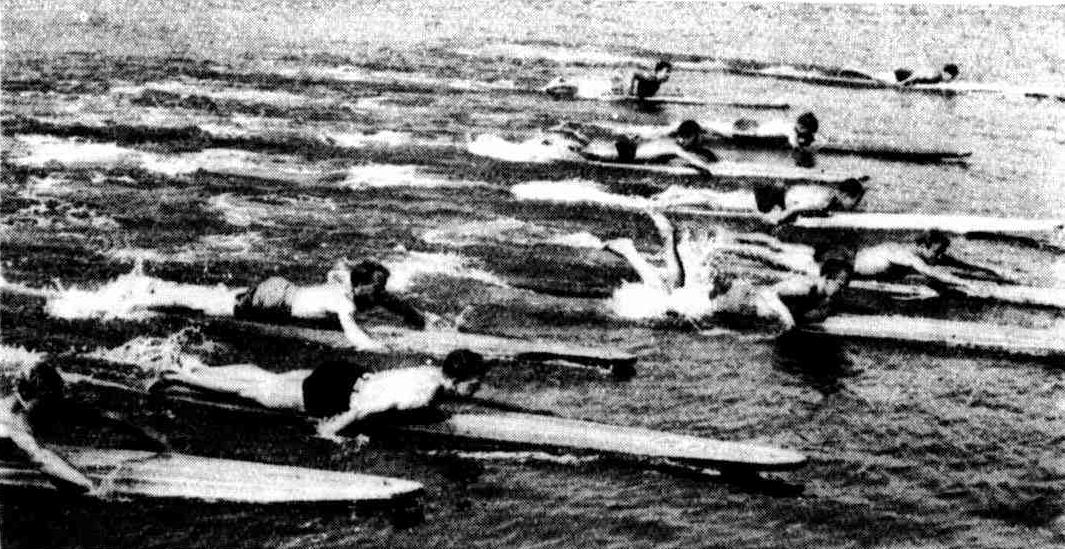
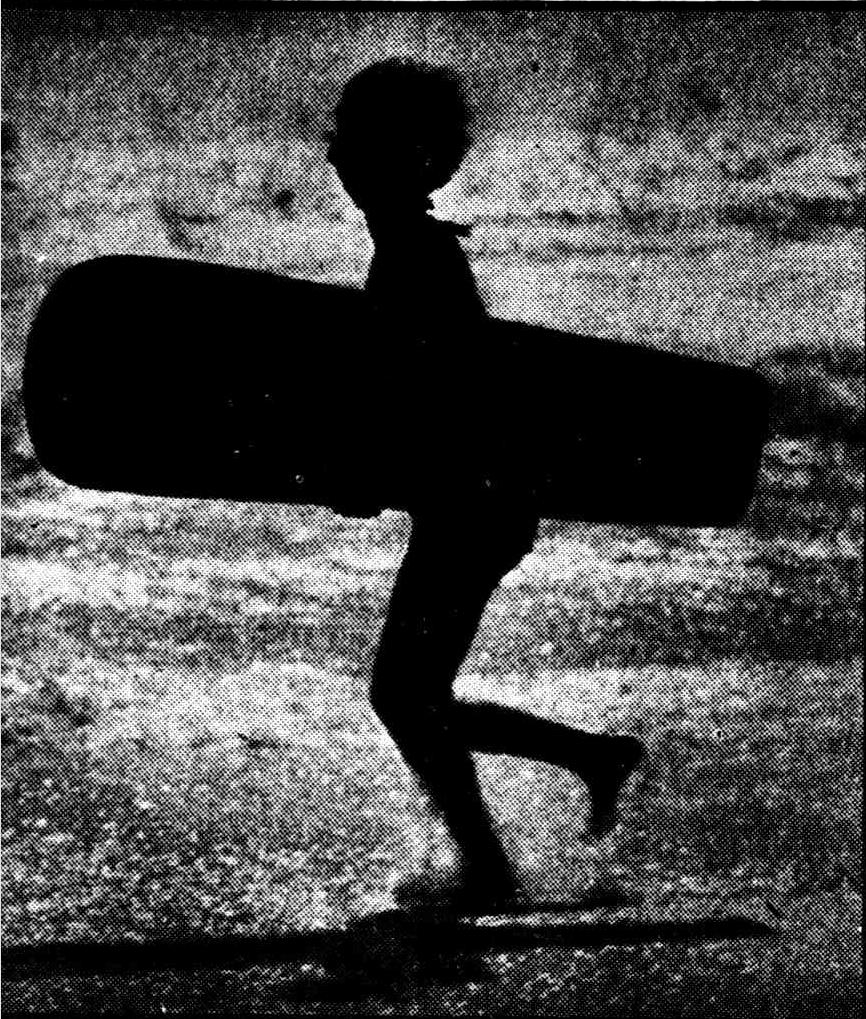
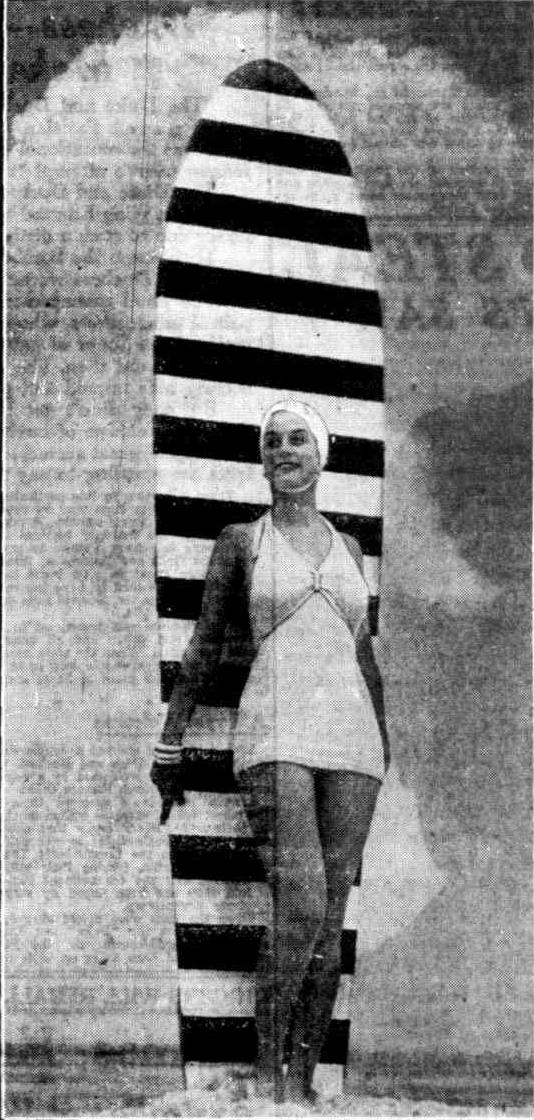
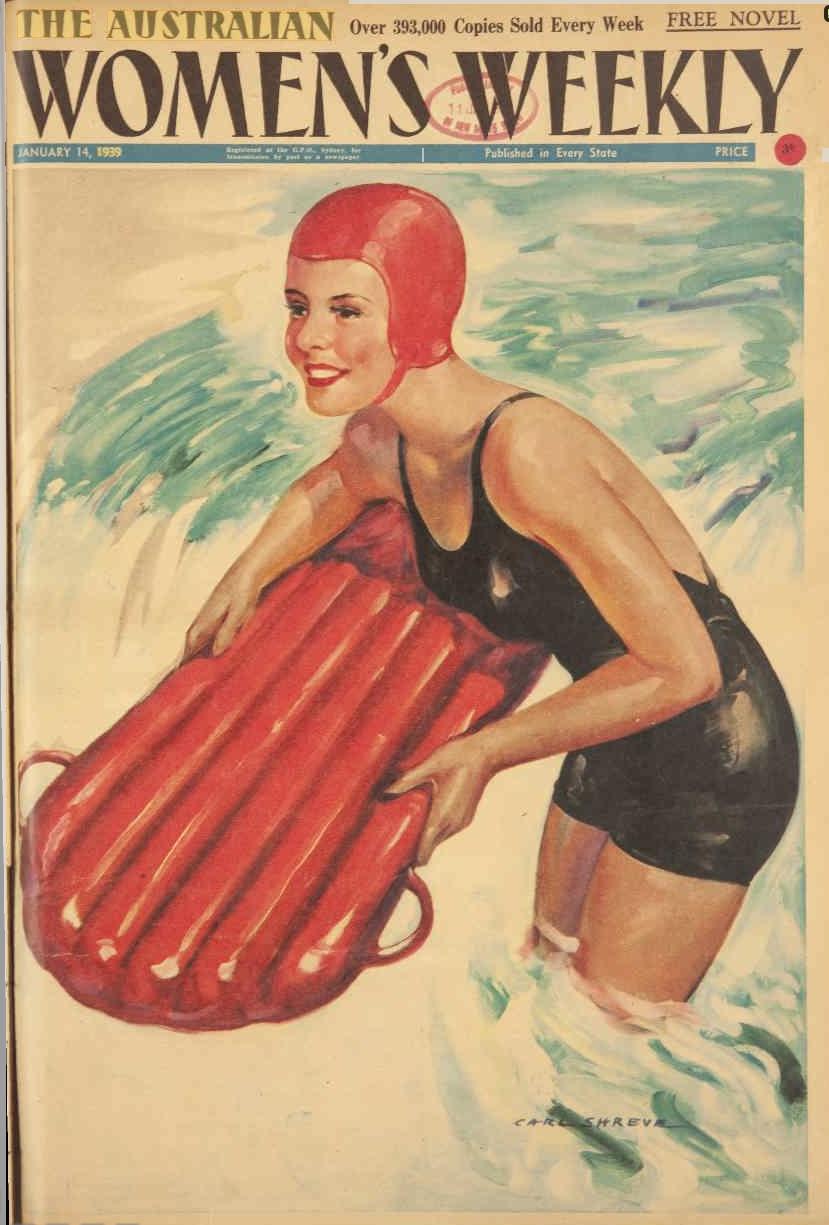
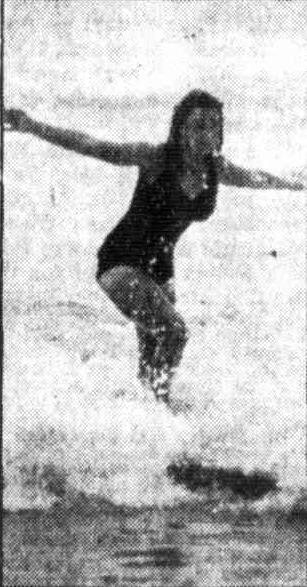
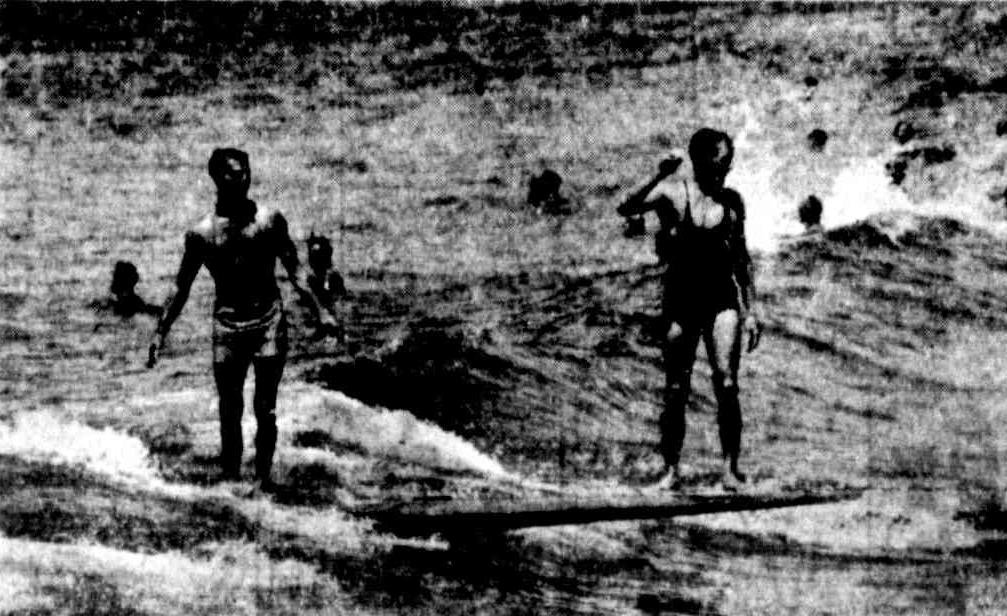
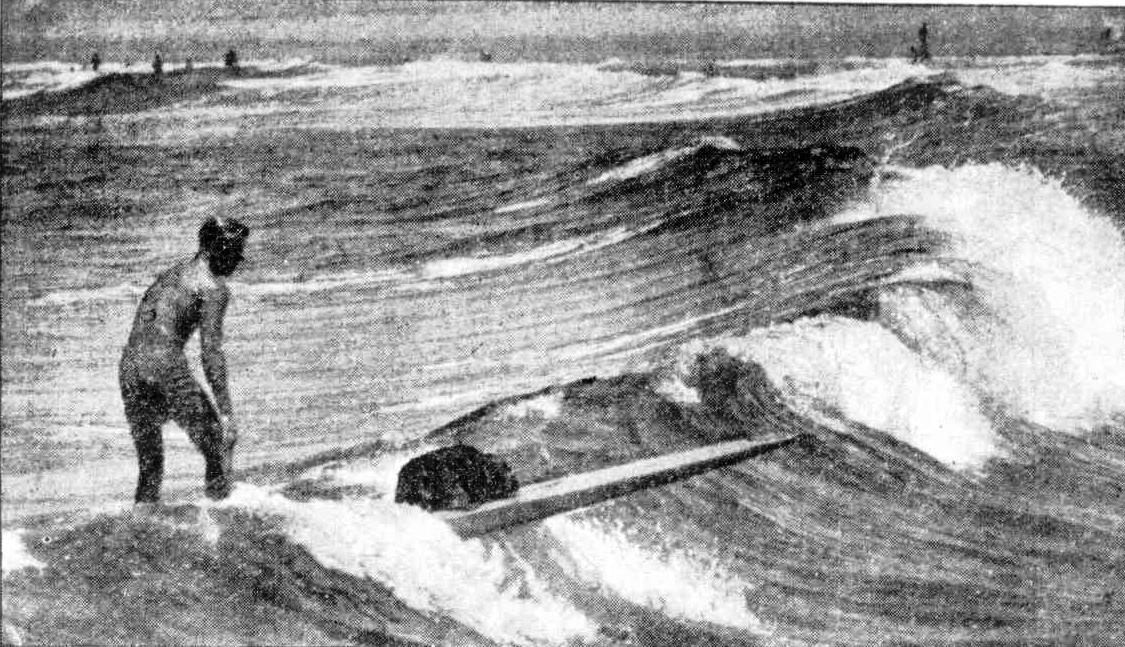
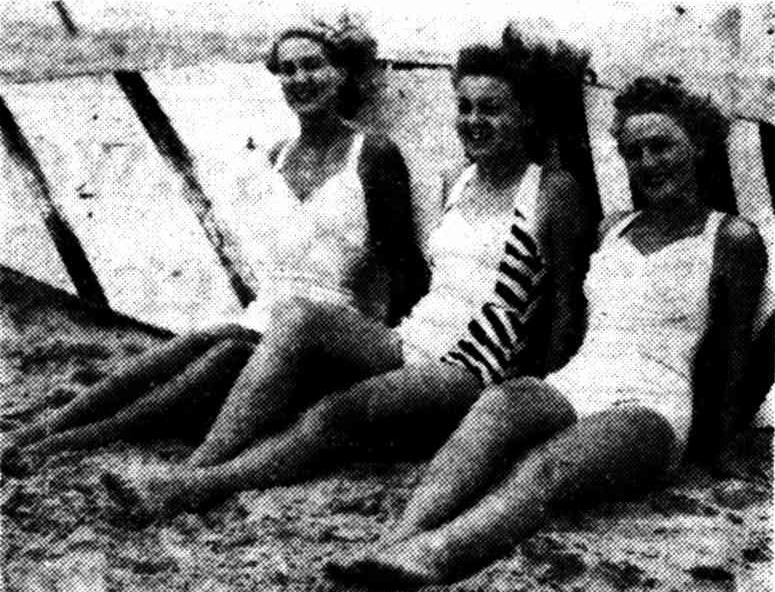

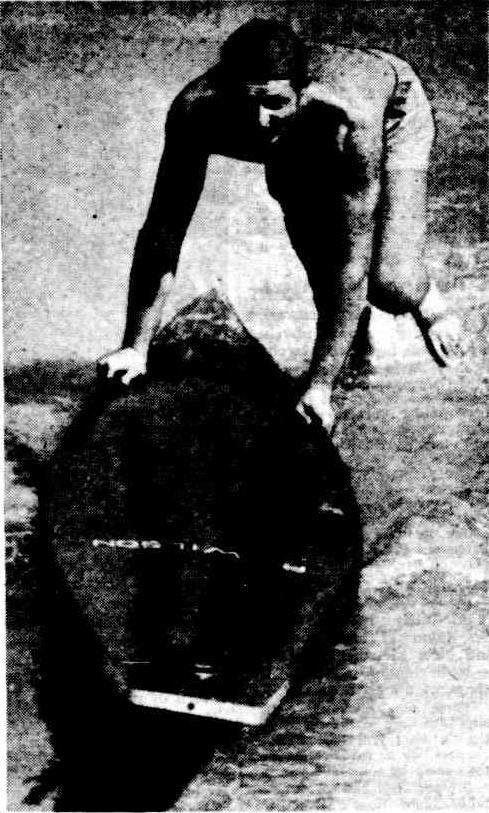
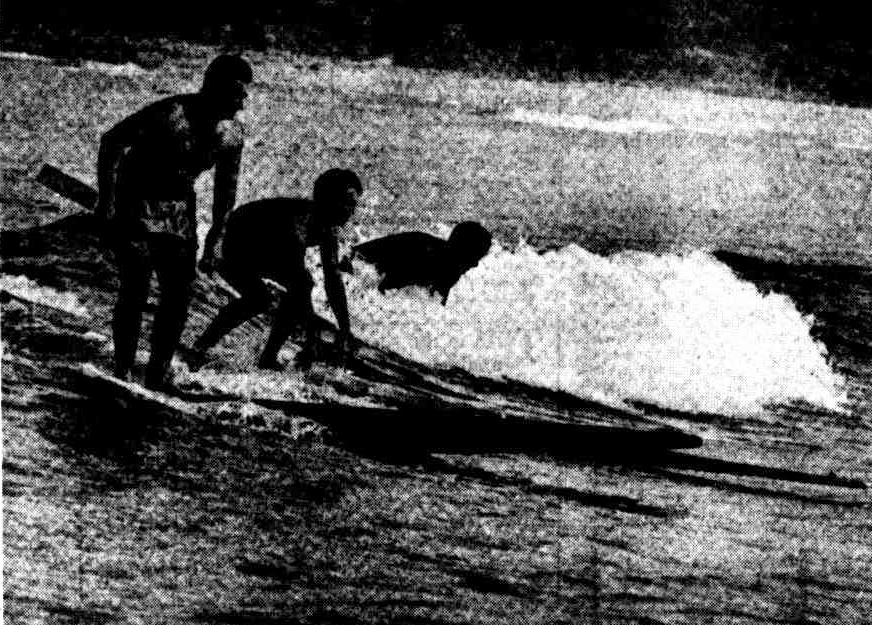
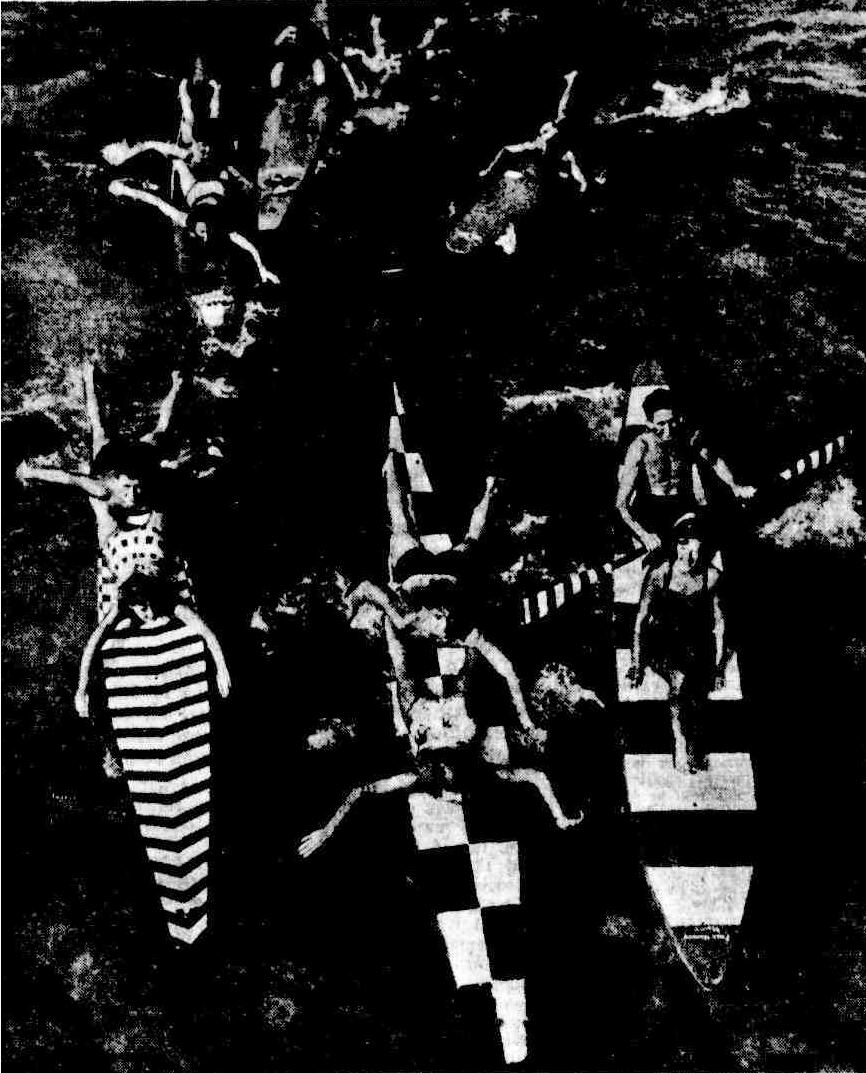
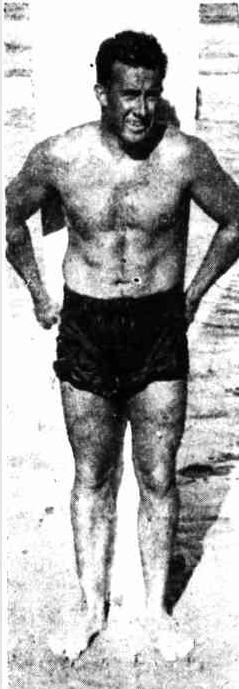
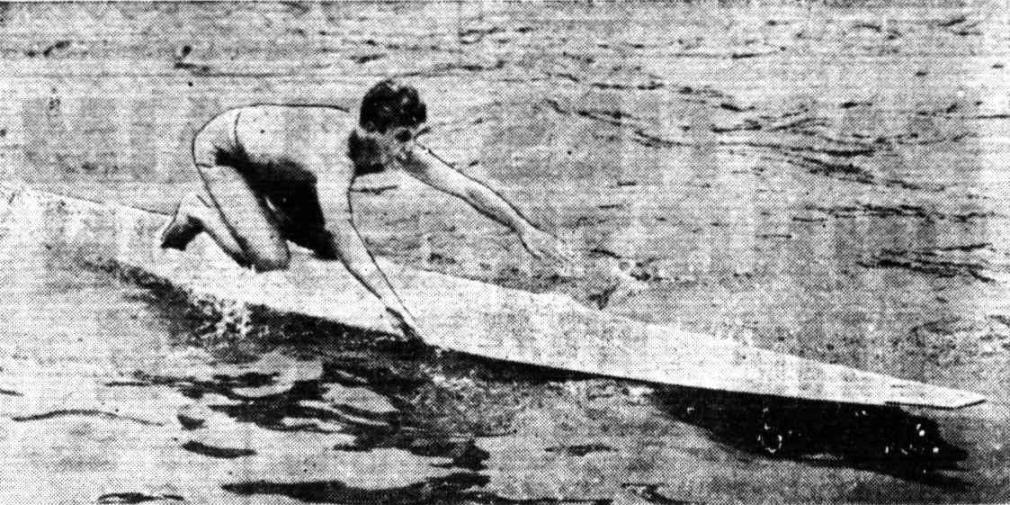
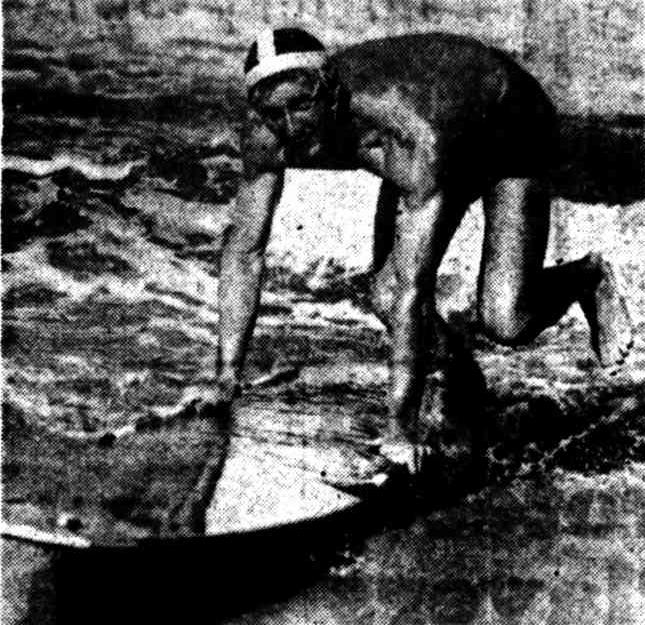
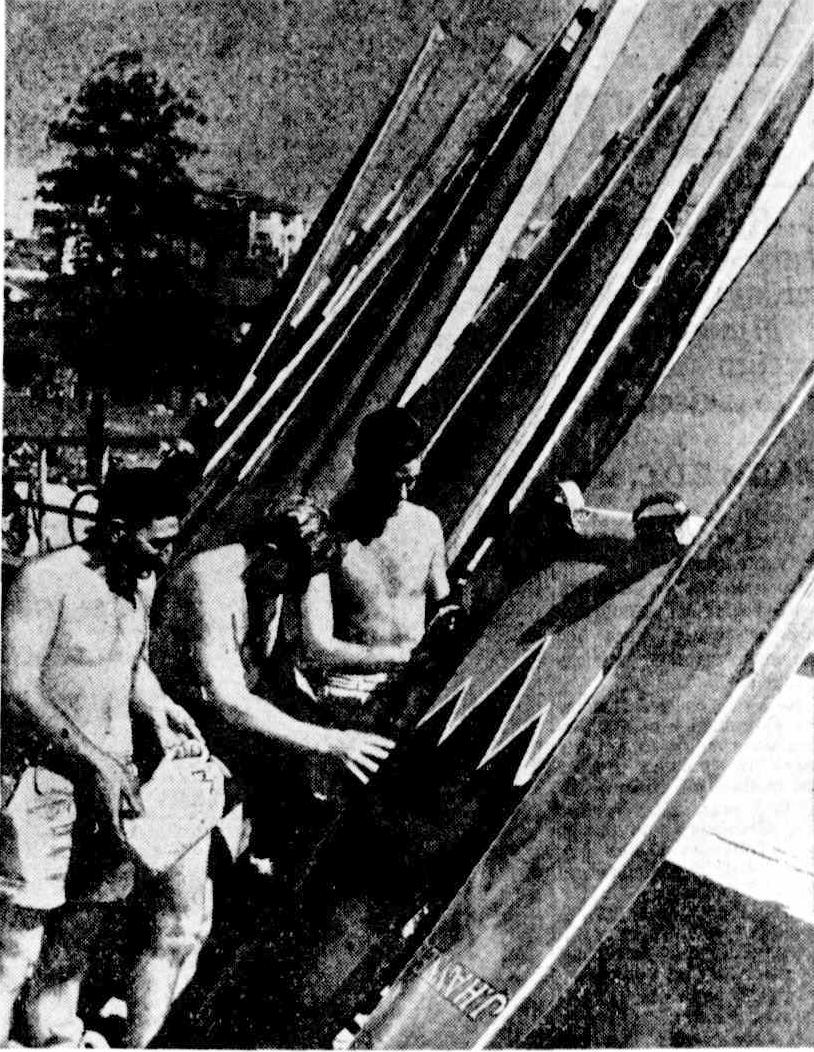
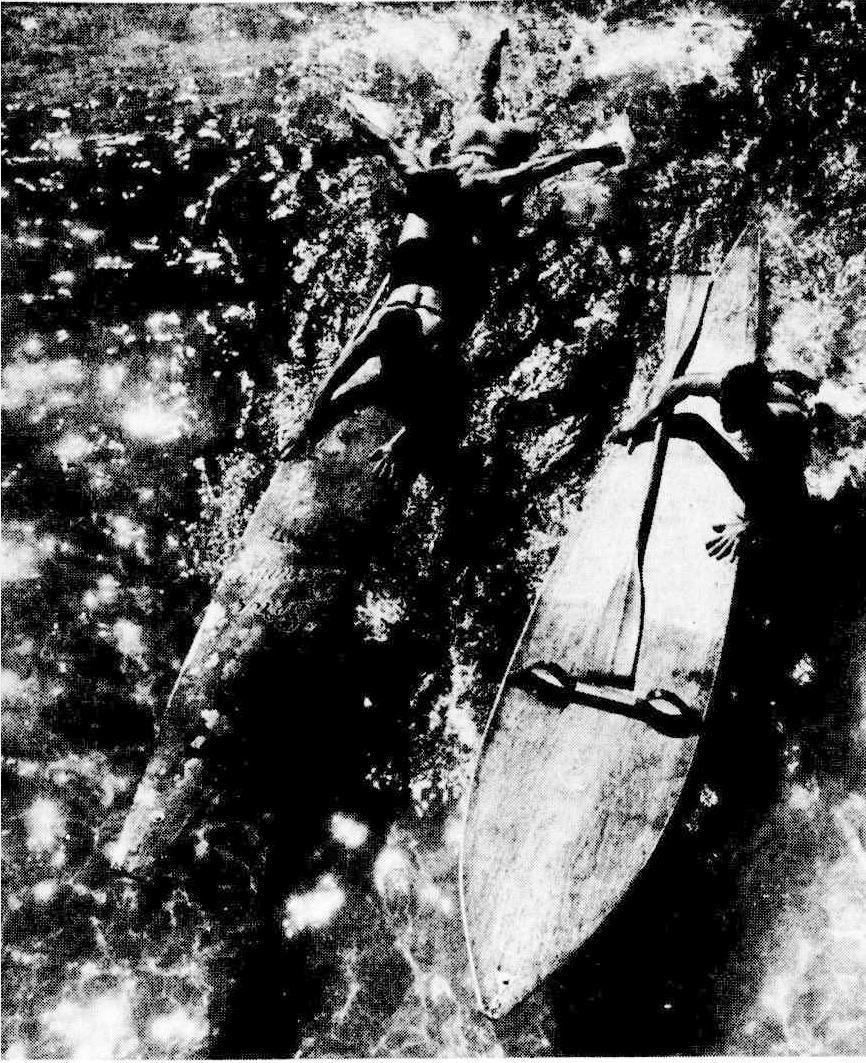
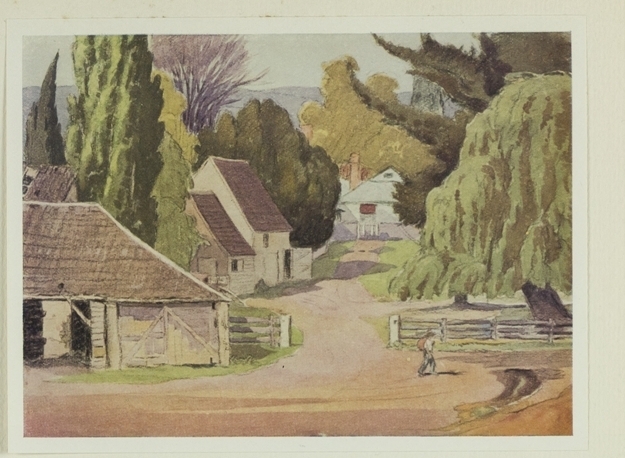
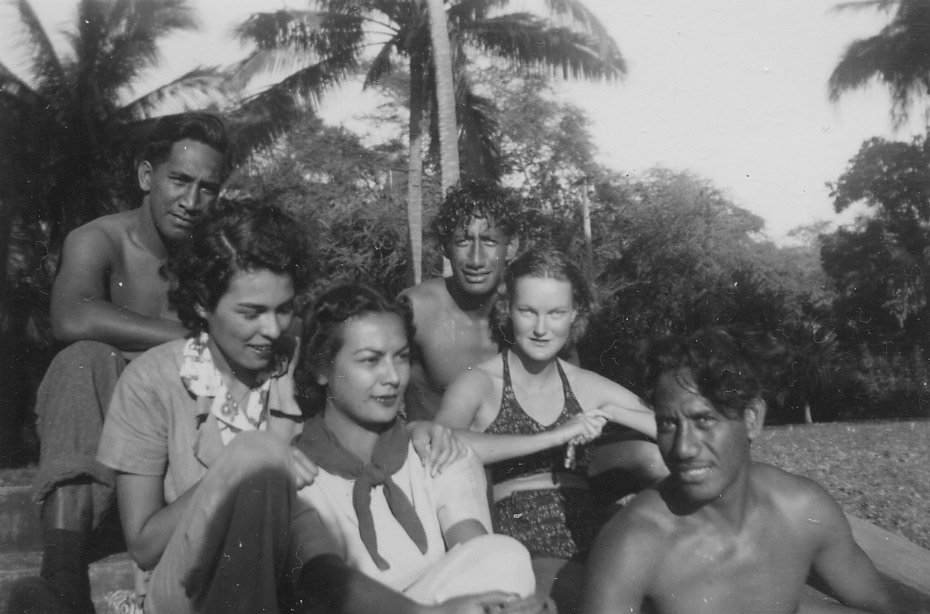
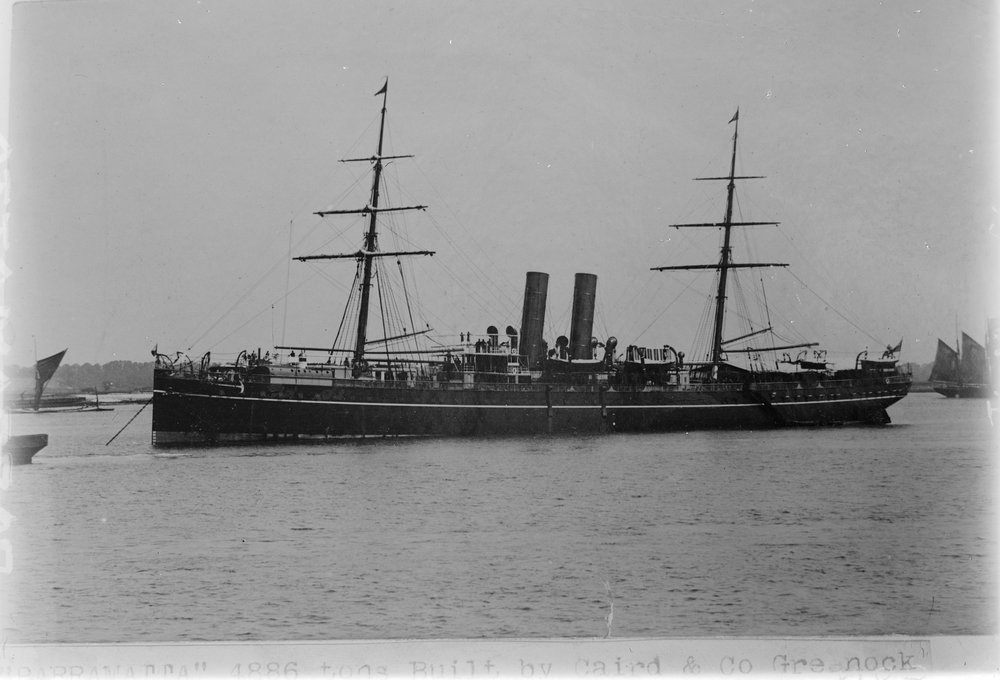
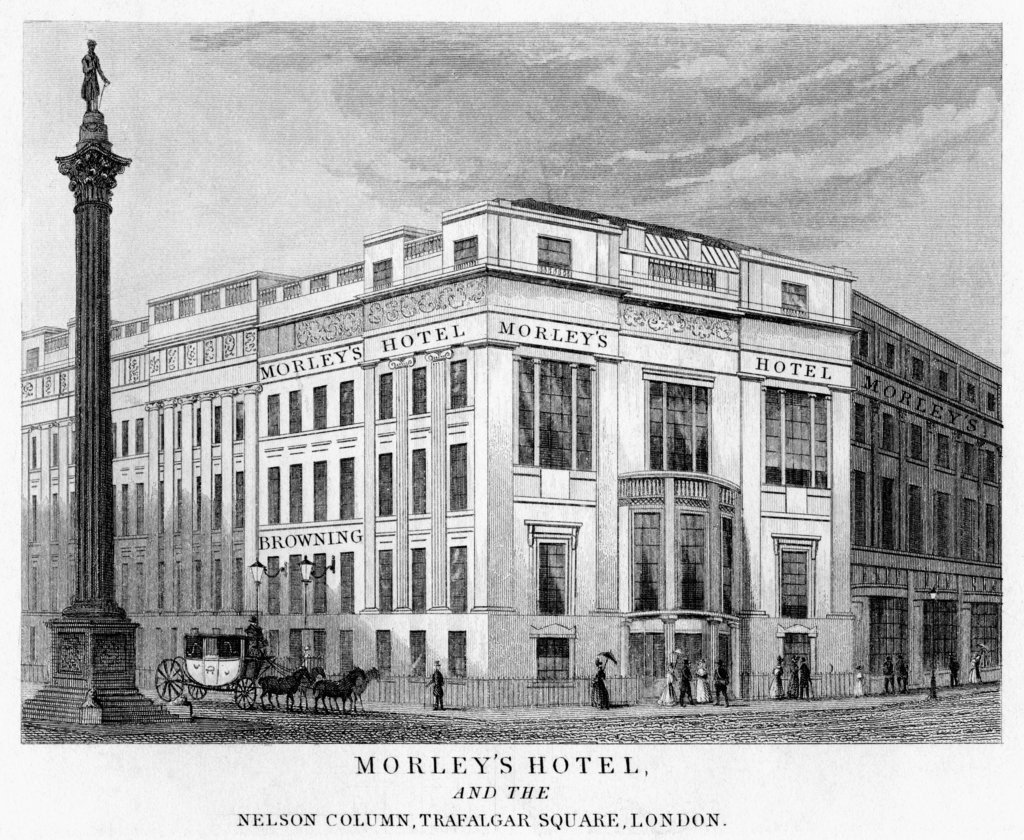
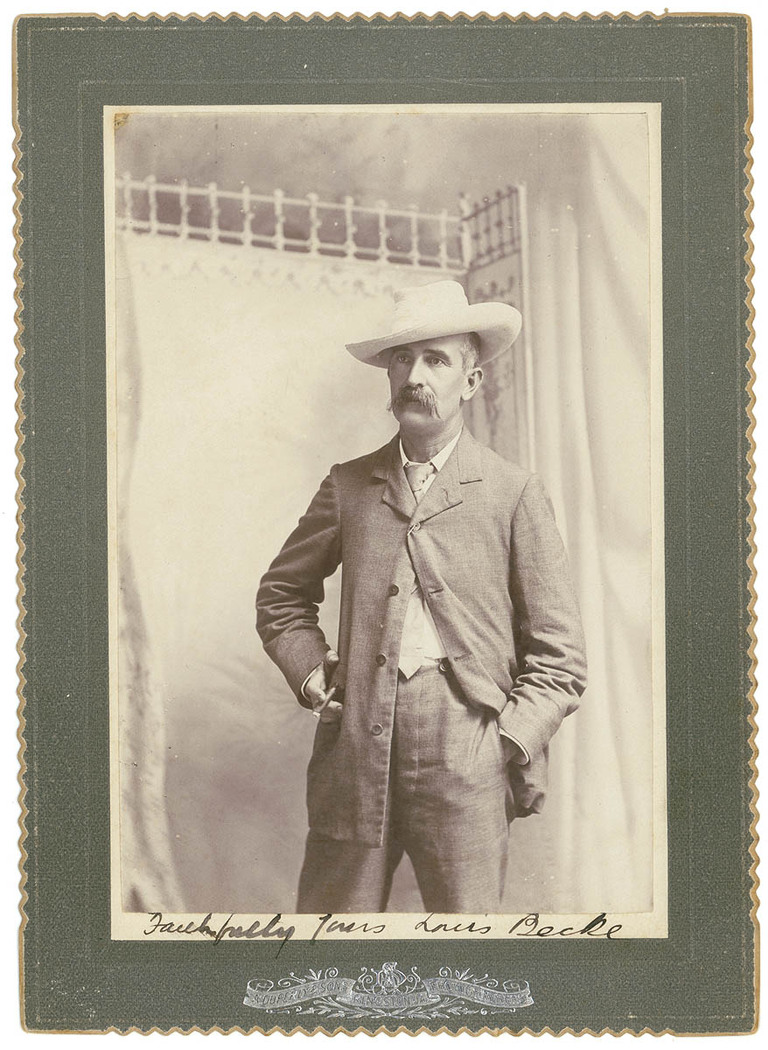
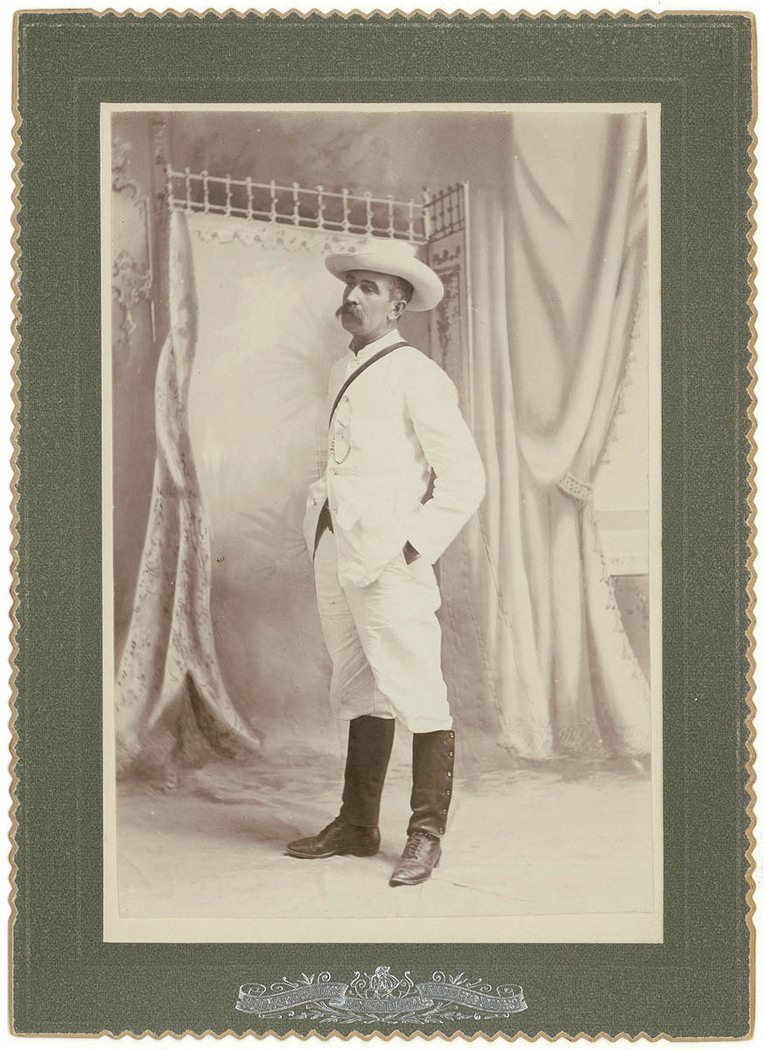
 Tom Gerrard 1904
Tom Gerrard 1904 MELMERLY COLLEGIATE SCHOOL is admirably situated in St. George's Bay Road, and every comfort is afforded to the pupils, whose number averages about seventy. The curriculum taught comprises English literature, modern languages, Latin, mathematics, physiology, music, painting, and drawing. Pupils are prepared for the matriculation and Civil Service examinations. Moral and religious training is made a special feature, and the scholars are trained in the tenets of the Church of England; the Rev. G. MacMurray, M.A., vicar of St. Mary's, visiting the school fortnightly.
MELMERLY COLLEGIATE SCHOOL is admirably situated in St. George's Bay Road, and every comfort is afforded to the pupils, whose number averages about seventy. The curriculum taught comprises English literature, modern languages, Latin, mathematics, physiology, music, painting, and drawing. Pupils are prepared for the matriculation and Civil Service examinations. Moral and religious training is made a special feature, and the scholars are trained in the tenets of the Church of England; the Rev. G. MacMurray, M.A., vicar of St. Mary's, visiting the school fortnightly. 
 Doyle was born on 22 May 1859 at 11 Picardy Place, Edinburgh, Scotland. His father, Charles Altamont Doyle, was born in England, of Irish Catholic descent, and his mother, Mary (née Foley), was Irish Catholic. His parents married in 1855. In 1864 the family dispersed because of Charles's growing alcoholism, and the children were temporarily housed across Edinburgh. In 1867, the family came together again and lived in squalid tenement flats at 3 Sciennes Place. Doyle's father died in 1893, in the Crichton Royal, Dumfries, after many years of psychiatric illness.
Doyle was born on 22 May 1859 at 11 Picardy Place, Edinburgh, Scotland. His father, Charles Altamont Doyle, was born in England, of Irish Catholic descent, and his mother, Mary (née Foley), was Irish Catholic. His parents married in 1855. In 1864 the family dispersed because of Charles's growing alcoholism, and the children were temporarily housed across Edinburgh. In 1867, the family came together again and lived in squalid tenement flats at 3 Sciennes Place. Doyle's father died in 1893, in the Crichton Royal, Dumfries, after many years of psychiatric illness.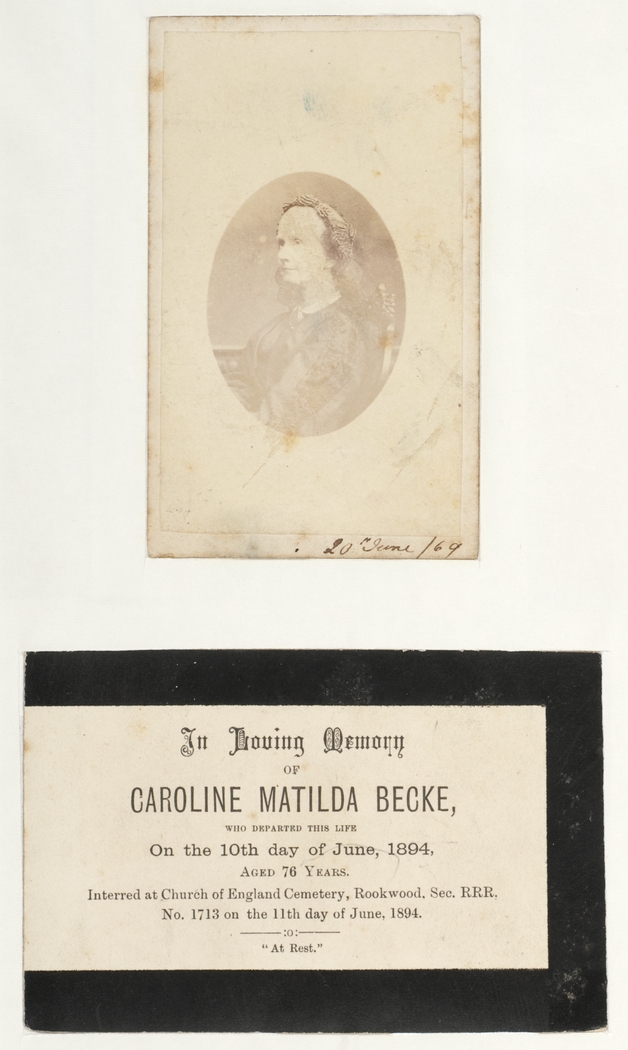
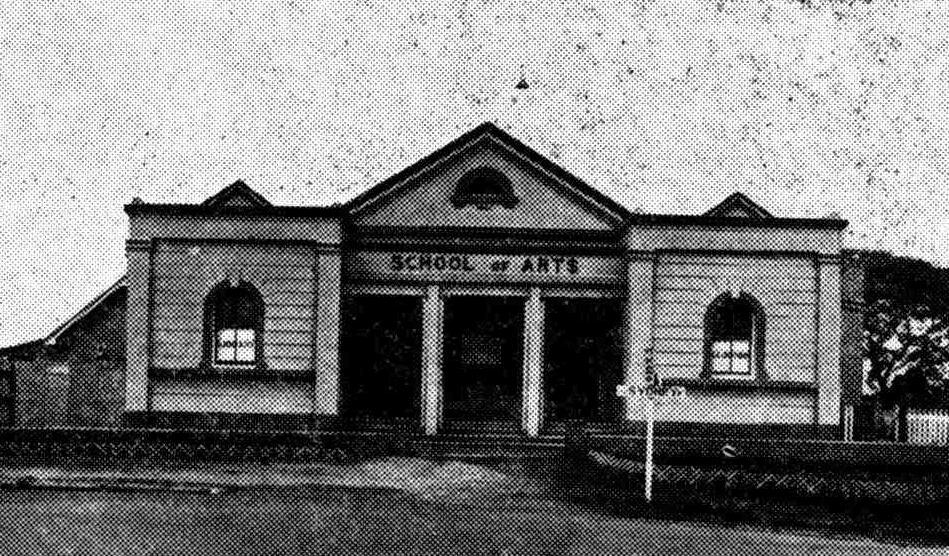
 Ford taught me more. "Imagine your legs a rudder," he said. "Hold them close together, and steer with them." A few minutes I came charging in on a comber. As I neared the beach, there in the water, up to her waist, dead in front of me, appeared n woman. How was I to stop that comber on whose back I was ? And then I remembered my guardian angel, Ford. "Steer with your legs!" ran through my reeling consciousness. I steered with my legs, I steered sharply, abruptly, with all my legs and with all my might. The board sheered around broadside on the crest. Many things happened simultaneously. The wave gave me a passing buffet —a light tap, as the taps of waves go, but a tap sufficient to knock me off the board and smash me down through the rushing water to bottom, with which I came in violent collision, and upon which I was rolled over and over. I got my head out for a breath of air, and then gained my feet. There stood the woman before me. I felt like a hero; I had saved her life. Anyway, that leg-steering was great. In a few minutes more of practice I was able to thread my way in and out past several bathers, and to remain on top of my breaker instead of going under it.
Ford taught me more. "Imagine your legs a rudder," he said. "Hold them close together, and steer with them." A few minutes I came charging in on a comber. As I neared the beach, there in the water, up to her waist, dead in front of me, appeared n woman. How was I to stop that comber on whose back I was ? And then I remembered my guardian angel, Ford. "Steer with your legs!" ran through my reeling consciousness. I steered with my legs, I steered sharply, abruptly, with all my legs and with all my might. The board sheered around broadside on the crest. Many things happened simultaneously. The wave gave me a passing buffet —a light tap, as the taps of waves go, but a tap sufficient to knock me off the board and smash me down through the rushing water to bottom, with which I came in violent collision, and upon which I was rolled over and over. I got my head out for a breath of air, and then gained my feet. There stood the woman before me. I felt like a hero; I had saved her life. Anyway, that leg-steering was great. In a few minutes more of practice I was able to thread my way in and out past several bathers, and to remain on top of my breaker instead of going under it. 